UNEP Young Champions of the Earth Award 2025
- 30 Sep 2025
In News:
The United Nations Environment Programme (UNEP) has announced the winners of the 2025 Young Champions of the Earth Award, recognising three outstanding entrepreneurs from India, Kenya, and the United States for their innovative solutions addressing pressing environmental challenges.
About the Award
- Launched: 2017
- Relaunched: 2025, in partnership with Planet A, an environmental awareness initiative co-founded by U.S. cleantech executive Chris Kemper.
- Organised by:United Nations Environment Programme (UNEP)
- Objective: To empower and celebrate young innovators (below 30 years of age) offering scalable solutions to the triple planetary crisis — climate change, biodiversity loss, and pollution & waste.
Each winner receives USD 20,000 in seed funding, mentorship, and access to a global platform to expand their innovations. They also participate in the Planet A Pitch Competition, with opportunities to win an additional USD 100,000 growth grant and a potential USD 1 million seed investment.
2025 Award Winners
- JinaliMody (India) – Founder, Banofi Leather
- Innovation: Produces sustainable, leather-like material from banana crop waste.
- Impact: Reduces water consumption, chemical pollution, and carbon emissions associated with traditional leather production.
- Significance: A women-led initiative tackling the fast fashion industry’s environmental footprint while promoting circular economy principles.
- Joseph Nguthiru (Kenya) – Founder, HyaPak
- Innovation: Converts the invasive water hyacinth from Lake Naivasha into biodegradable packaging and seedling wrappers.
- Impact: Provides a sustainable alternative to single-use plastics while addressing invasive species management.
- Noemi Florea (United States) – Founder, Cycleau
- Innovation: Developed a compact greywater reuse system that can retrofit household sinks, showers, and laundry units.
- Impact: Converts wastewater into potable water using low energy, offering a scalable model for water conservation and reuse.
Significance
- The award exemplifies youth-driven environmental innovation, aligning with UNEP’s broader mission to foster sustainable solutions.
- It highlights global South participation, with India and Kenya demonstrating leadership in low-cost, eco-friendly technologies.
- The 2025 relaunch underscores growing private sector and media collaboration in advancing environmental entrepreneurship through platforms like Planet A.
India test-fires Agni-Prime missile from rail-based mobile launcher
- 30 Sep 2025
In News:
India has successfully test-fired the Agni-Prime (Agni-P) intermediate-range ballistic missile from a rail-based mobile launcher, marking a first-of-its-kind achievement in the nation’s defence history. The test was conducted from a platform integrated with the national railway network. This milestone represents a significant leap in India’s strategic mobility and deterrence capabilities.
About Agni-Prime Missile
- Type: Next-generation, nuclear-capable, intermediate-range ballistic missile (IRBM)
- Range: Up to 2,000 kilometres
- Developed by:Defence Research and Development Organisation (DRDO) in collaboration with the Strategic Forces Command (SFC)
- Part of: India’s Agni missile series, designed to reinforce the country’s credible minimum deterrence posture.
The Agni-Prime is equipped with advanced guidance and communication systems, featuring a canisterised launch mechanism that enhances storage safety, rapid deployment, and longer shelf life.
Rail-Based Mobile Launcher: A Game-Changing Innovation
The recent test marked the first time India used a rail-based canisterised mobile launcher.
- It can move seamlessly across the national rail network, allowing flexible positioning and quick deployment.
- The launcher enables a short reaction time with low visibility, enhancing operational stealth and survivability.
- This mobility reduces predictability of launch locations, complicating adversarial surveillance and targeting efforts.
Strategic Significance
- Enhanced Strategic Deterrence:The test demonstrates India’s ability to deliver a credible and survivable nuclear deterrent, joining the select group of nations with rail-based canisterised launch systems.
- Improved Survivability and Flexibility:Rail mobility adds a new dimension to India’s nuclear command structure by complementing road-based and silo-based systems, ensuring launch readiness even under high-threat scenarios.
- Operational Stealth and Rapid Response:The ability to launch within minutes from concealed rail positions strengthens India’s second-strike capability under its nuclear doctrine.
- Geopolitical Implications:The development aligns with India’s effort to maintain strategic stability in a complex regional environment, particularly amid evolving threats in South Asia and the Indo-Pacific.
Recent Developments in India’s Missile Programme
- In August 2025, Agni-Prime was successfully tested from Chandipur, Odisha.
- Earlier, in March 2024, under Mission Divyastra, India tested Agni-5 with MIRV (Multiple Independently Targetable Re-entry Vehicle) capability — allowing a single missile to carry and deliver multiple nuclear warheads to different targets.
- The Strategic Forces Command, operational since 2003, currently manages India’s nuclear arsenal and deployment systems.
India’s 4-Pillar Approach to Strengthen Shipbuilding, Maritime Financing, and Domestic Capacity
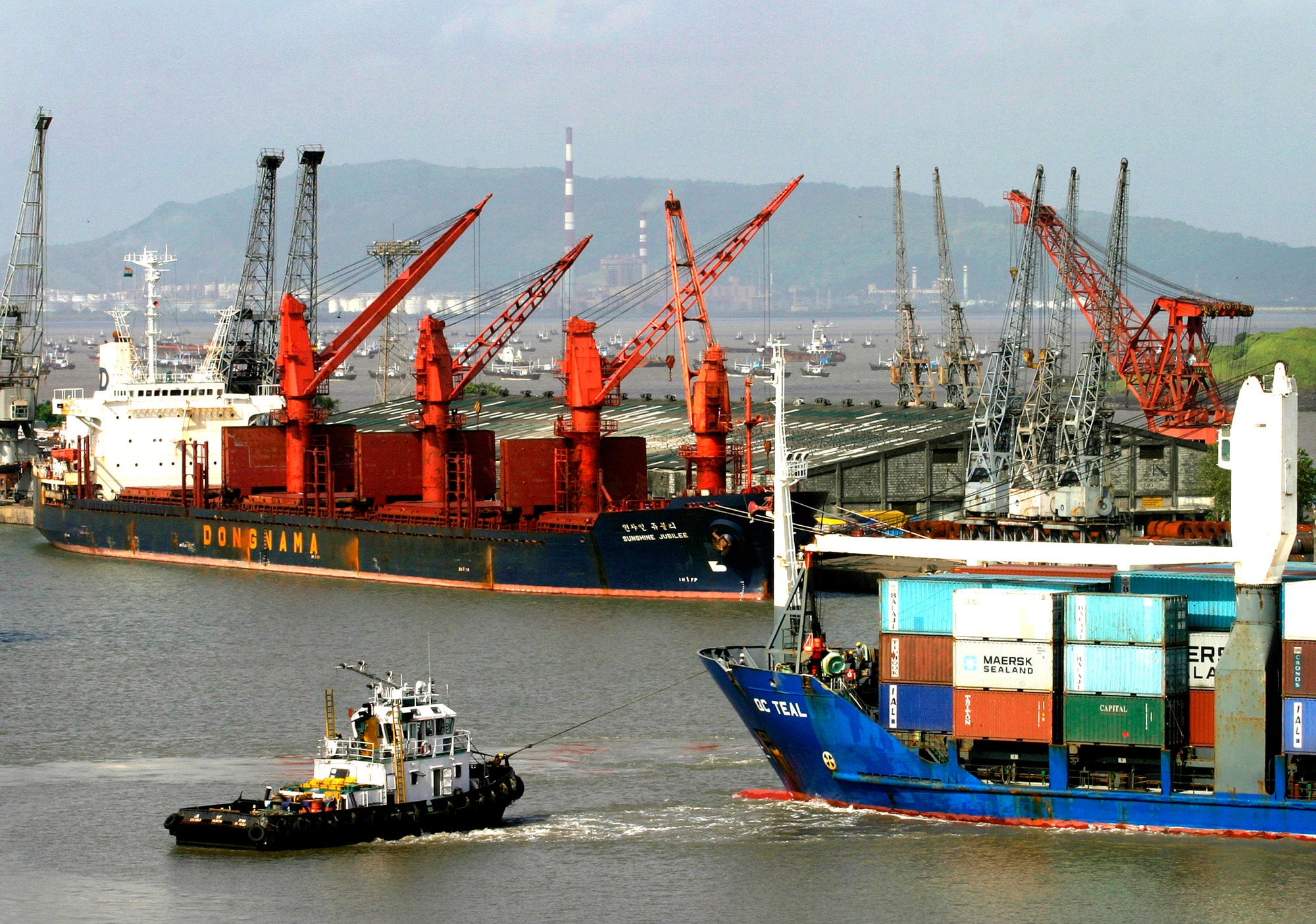
- 30 Sep 2025
In News:
In a major push to revive India’s maritime and shipbuilding sector, the Union Cabinet approved a ?69,725 crore package (September 2025) anchored on a comprehensive 4-Pillar Approach. The initiative aims to transform India into a global hub for shipbuilding and shipping services, enhance maritime self-reliance, and contribute to the vision of Aatmanirbhar Bharat.
Background
India’s maritime sector supports 95% of the nation’s trade by volume and 70% by value, making it a critical pillar of economic and strategic security. Recognized as the “mother of heavy engineering industries,” shipbuilding plays a pivotal role in employment generation, technological innovation, and defence capability. The new package seeks to address long-standing gaps in financing, infrastructure, and capacity to strengthen domestic shipyards and maritime logistics.
Objectives
- Expand domestic shipbuilding capacity to 4.5 million Gross Tonnage (GT) by 2036.
- Generate nearly 30 lakh employment opportunities.
- Mobilize ?4.5 lakh crore in investments.
- Build resilient maritime supply chains ensuring national, energy, and food security.
- Advance India’s position as a competitive and sustainable maritime economy.
The Four Pillars of the Package
1. Shipbuilding Financial Assistance Scheme (SBFAS)
- Extended till: 31 March 2036
- Corpus: ?24,736 crore
- Purpose: Incentivize shipbuilding within India by providing financial support to Indian shipyards.
- Key Feature: Introduction of a Shipbreaking Credit Note worth ?4,001 crore to encourage sustainable ship recycling and capacity utilization.
2. Maritime Development Fund (MDF)
- Corpus: ?25,000 crore
- Components:
- Maritime Investment Fund: ?20,000 crore, with 49% Government of India participation.
- Interest Incentivization Fund: ?5,000 crore to reduce the cost of borrowing and improve project bankability.
- Objective: Provide long-term financing for shipbuilding, port infrastructure, and related logistics services.
3. Shipbuilding Development Scheme (SbDS)
- Outlay: ?19,989 crore
- Aim: Expand India’s domestic shipbuilding capacity and support mega shipbuilding clusters.
- Key Features:
- Establishment of the India Ship Technology Centre under the Indian Maritime University (IMU).
- Support for greenfield and brownfield shipyards.
- Insurance and risk coverage for shipbuilding projects.
- Focus on skill development and adoption of advanced shipbuilding technologies.
4. National Shipbuilding Mission and Reforms
- A National Shipbuilding Mission will coordinate implementation and monitor outcomes of all initiatives under the package.
- Focus areas include:
- Taxation, legal, and policy reforms to streamline procedures.
- Capacity enhancement through modern shipyard development.
- Human resource and skill training to strengthen India’s maritime workforce.
- Promotion of green and sustainable shipbuilding practices aligned with global standards.
Expected Impact
- Unlock 4.5 million GT of annual shipbuilding capacity.
- Create nearly 30 lakh direct and indirect jobs across the maritime ecosystem.
- Boost investment inflows of ?4.5 lakh crore into ports, shipyards, and allied industries.
- Enhance strategic autonomy and reduce dependence on foreign shipbuilders.
- Strengthen geopolitical resilience, ensuring continuity of India’s trade, energy, and food supply chains during global disruptions.
- Foster innovation, sustainability, and competitiveness in line with “Make in India” and “Blue Economy” objectives.
SPARSH Pension System
- 30 Sep 2025
In News:
The System for Pension Administration – Raksha (SPARSH), an initiative of the Ministry of Defence (MoD), has emerged as a landmark reform in defence pension management. Recently, SPARSH resolved 87% of legacy discrepancies—addressing 5.60 lakh out of 6.43 lakh cases—and has significantly improved grievance redressal efficiency.
About SPARSH Pension System
- Launched by: Ministry of Defence
- Administered by:Defence Accounts Department (DAD) through the Principal Controller of Defence Accounts (Pensions), Prayagraj
- Coverage: Caters to pensioners from the Army, Navy, Air Force, and Defence Civilians
- Scope: Over 31.54 lakh defence pensioners across India and Nepal are onboarded on SPARSH, making it the world’s largest digital pension management system.
Objectives
- To provide a comprehensive, transparent, and paperless system for pension sanction, disbursement, and grievance redressal.
- To ensure direct pension disbursement to beneficiaries without intermediaries.
- To modernize defence pension administration by shifting from a fragmented and manual process to a centralized and integrated digital framework.
Key Features
- Centralized and Web-Based Platform:Handles pension sanction, claim, and disbursement directly into the pensioners’ bank accounts, eliminating third-party intermediaries.
- Self-Service Portal:Enables self-verification, easy data correction, and real-time access to pension details through a personal dashboard.
- Digital Life Certification:Pensioners can complete identification digitally, removing the need for physical visits to pension offices.
- Comprehensive Record Management:Maintains the entire pension lifecycle—from initiation to cessation and transfer to the last eligible beneficiary.
- Grievance Management:Provides an integrated mechanism for service requests and grievance redressal within the same platform.
Significance
SPARSH represents a paradigm shift in defence pension administration—from manual and fragmented systems to a transparent, technology-driven model. It embodies the government’s commitment to “Minimum Government, Maximum Governance”, ensuring efficiency, accountability, and dignity for millions of defence pensioners.
By integrating real-time disbursal, grievance monitoring, and self-service accessibility, SPARSH has strengthened financial inclusion, digital governance, and welfare delivery within India’s defence ecosystem.
L-1 Visa

- 30 Sep 2025
In News:
The U.S. administration’s decision to impose a steep $100,000 fee on new H-1B visa applications has reignited debate over whether the L-1 visa could serve as a practical alternative for Indian professionals. While both facilitate skilled migration, they serve distinct purposes and cater to different categories of workers.
About the L-1 Visa
- Nature and Purpose:
- The L-1 visa is a non-immigrant work visa designed for intra-company transfers within multinational corporations.
- It enables global firms to relocate executives, managers, and employees with specialized knowledge from their overseas branches to U.S. offices.
- Introduced under the Immigration and Nationality Act (1965), it aims to promote international business operations and internal talent mobility without depending on the external labour market.
- Categories:
- L-1A: For executives and managers; maximum stay of 7 years.
- L-1B: For employees with specialized knowledge; maximum stay of 5 years.
Applicants must have worked at least one continuous year abroad for the same company within the preceding three years.
Key Features and Advantages
- No Cap or Lottery: Unlike the H-1B, the L-1 has no annual quota or lottery system, allowing year-round applications.
- Blanket Petitions: Large multinationals can file blanket petitions for quicker processing.
- Dual Intent: L-1 holders can apply for a green card without jeopardizing their visa status.
- Dependent Work Rights: Spouses on L-2 visas can work freely in the U.S., offering significant flexibility for families.
- Corporate Convenience: Firms can manage global mobility efficiently, especially for leadership or niche technical roles.
Limitations and Challenges
- Narrow Eligibility: Only employees of the same multinational company are eligible. The visa cannot be used to switch to another employer in the U.S.
- High Scrutiny: U.S. consulates, especially in India, closely scrutinize “specialized knowledge” claims, leading to higher rejection rates than H-1B visas.
- Time-Bound Stay: L-1 visas have strict duration limits and cannot be extended while awaiting permanent residency.
- No Portability: The visa binds the employee to the sponsoring company, unlike H-1B holders who can change employers under certain conditions.
L-1 vs H-1B: The Key Differences
|
Aspect |
L-1 Visa |
H-1B Visa |
|
Purpose |
Intra-company transfer |
Employment in speciality occupation |
|
Eligibility |
Must have worked abroad for the same company |
Bachelor’s degree in speciality field |
|
Annual Cap |
No cap |
85,000 new visas per year |
|
Employer Flexibility |
Cannot switch companies |
Can change employers (with transfer approval) |
|
Wage Requirement |
No prevailing wage rule |
Must meet U.S. Department of Labor’s wage standards |
|
Processing System |
No lottery |
Lottery-based selection |
|
Dependent Work Rights |
L-2 spouse can work freely |
H-4 spouse requires separate authorization |
|
Maximum Stay |
5–7 years (non-extendable beyond limits) |
6 years (extendable in green card process) |
Global Forest Fund

- 29 Sep 2025
In News:
- Brazil is set to become the first country to invest in the Tropical Forests Forever Facility (TFFF) — a multilateral fund designed to support long-term tropical forest conservation.
- The announcement is expected to be made at the United Nations headquarters in New York, marking a major step toward reshaping global climate finance ahead of COP30, which Brazil will host in Belém, Amazon region, in November.
About the Tropical Forests Forever Facility (TFFF)
- Origin: Proposed by Brazil during COP28 (UAE, 2023), the TFFF aims to create a permanent, self-sustaining financial mechanism to conserve tropical forests across the globe.
- Nature: It is a global, multilateral, and endowment-style fund—the first of its kind—dedicated exclusively to protecting tropical forests and ensuring steady, performance-based payments to countries maintaining their forest cover.
- Goal: To mobilize USD 125 billion through a blended finance structure, combining sovereign and private-sector contributions.
Financial Structure and Mechanism
- Funding Model:The fund will function as a permanent endowment, investing its corpus in diversified financial portfolios that generate sustainable returns.
- The returns will finance annual stipends to participating tropical forest countries (TFCs), based on the extent of their standing forests.
- Composition of Funds:
- Sponsors (20%) – High-income countries (as per World Bank classification) and global philanthropies.
- Market Investors (80%) – Institutional investors, sovereign wealth funds, and endowments participating via debt instruments (such as green bonds).
- Fund Management: Likely to be handled by a Multilateral Development Bank (MDB) such as the World Bank, ensuring transparency and credibility.
- Initial Target:To reach the full USD 125 billion goal, Brazil plans to secure an initial USD 25 billion from governments and philanthropies, which would serve as an anchor to attract an additional USD 100 billion from private investors.
Brazil’s Role and Strategic Intent
- Brazil’s upcoming investment will make it the first contributor to the fund — signaling its confidence in the mechanism and encouraging other nations to follow suit.
- According to official sources, the investment amount will be “considerable,” intended to set a benchmark and demonstrate Brazil’s commitment to global forest conservation.
- As home to the world’s largest tropical rainforest, Brazil stands to receive significant future payouts under the TFFF, reinforcing its dual role as a beneficiary and a leader in climate stewardship.
Global Participation and Support
- Several countries have already expressed interest in joining the initiative, including China, the United Kingdom, France, Germany, Norway, Singapore, and the United Arab Emirates.
- Notably, China has conveyed its intention to contribute among the first investors — a move seen as a potential turning point in global climate finance, traditionally dominated by Western donors.
Significance
- Bridging Climate Finance Gaps:The TFFF introduces a results-based, long-term funding model for forest conservation, shifting away from short-term grants toward permanent, scalable financing.
- Shared Global Responsibility:The participation of both developed and developing nations underscores a more equitable climate finance architecture, aligning with the principle of common but differentiated responsibilities (CBDR).
- Boost to COP30 and Viksit Bharat 2047 Goals:Brazil’s leadership strengthens its position ahead of COP30 and aligns with India’s own emphasis on sustainable development and green finance under Mission LiFE and Viksit Bharat 2047 frameworks.
- Preserving Global Carbon Sinks:By rewarding countries for maintaining forests, the fund provides a direct economic incentive for protecting vital ecosystems that regulate global climate patterns.
Adi Yuva Fellowship & Adi Karmayogi Volunteers Programme
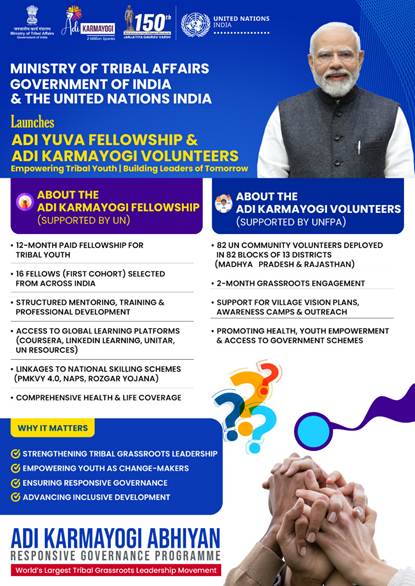
- 29 Sep 2025
In News:
- The Ministry of Tribal Affairs (MoTA), in partnership with the United Nations in India, has launched the Adi Yuva Fellowship and the Adi Karmayogi Volunteers Programme under the umbrella of the Adi Karmayogi Abhiyan — a flagship initiative envisioned as the world’s largest tribal grassroots leadership movement.
- These initiatives aim to empower tribal youth, strengthen grassroots governance, and promote inclusive development in alignment with the goals of Viksit Bharat 2047 and the 2030 Agenda for Sustainable Development.
About Adi Karmayogi Abhiyan
- Coverage: Targets 11 crore citizens across 1 lakh tribal-dominated villages in 550 districts of 30 States and UTs.
- Objective: To transform governance into a people’s movement rooted in responsive, accountable, and citizen-centric administration.
- The ongoing Adi SewaParv (17 September – 2 October 2025) focuses on preparing Tribal Village Vision 2030 Action Plans through community–government collaboration.
1. Adi Yuva Fellowship
Overview
The Adi Yuva Fellowship, supported by UN India, is a first-of-its-kind national programme designed to nurture tribal youth leadership through structured learning, mentorship, and professional development.
Key Features
- Duration: 12-month paid fellowship with a tailored learning plan combining knowledge-building, on-the-job training, and reflective practice.
- Support Package: Monthly allowances, comprehensive health and life insurance, and access to UN and commercial learning platforms.
- Skill Linkages: Fellows will be connected to national employability schemes such as:
- Pradhan Mantri Kaushal Vikas Yojana (PMKVY) 4.0
- National Apprenticeship Promotion Scheme (NAPS)
- PM Viksit Bharat Rozgar Yojana
- Mentorship and Exposure: Fellows will receive structured mentorship, engage in peer learning, and gain exposure to national and international platforms.
- Deployment: The first batch of 16 Fellows will be selected through a competitive process and placed with UN agencies at national, state, and district levels.
Objective
To build a cadre of empowered tribal youth who can contribute to governance, entrepreneurship, innovation, and community-led development, ensuring that tribal voices shape India’s growth story.
2. Adi Karmayogi Volunteers Programme
Overview
Supported by the United Nations Population Fund (UNFPA), the Adi Karmayogi Volunteers Programme is aimed at strengthening last-mile service delivery and promoting community participation in tribal regions.
Key Features
- Deployment:
- 82 Adi Karmayogi Volunteers (UN Community Volunteers) deployed across 82 blocks in 13 districts of Madhya Pradesh and Rajasthan.
- They will engage in anintensive two-month grassroots programme.
- Role and Activities:
- Support preparation of Village Vision 2030 Action Plans.
- Conduct awareness campaigns, outreach drives, and capacity-building sessions.
- Facilitate improved access to government schemes and services.
- Outcome: Strengthen inclusive governance, local participation, and service delivery at the village level.
Significance of the Initiatives
1. Empowering Tribal Youth
- Provides structured opportunities for skill enhancement, leadership, and employability.
- Bridges the gap between education, governance, and community development.
2. Strengthening Governance
- Promotes citizen-centric and participatory governance in tribal regions.
- Empowers communities to actively contribute to their own development vision.
3. Advancing India–UN Partnership
- Demonstrates India’s collaborative approach towards achieving the Sustainable Development Goals (SDGs).
- Highlights the One UN approach for inclusive and sustainable growth.
India’s first overseas defence manufacturing facility
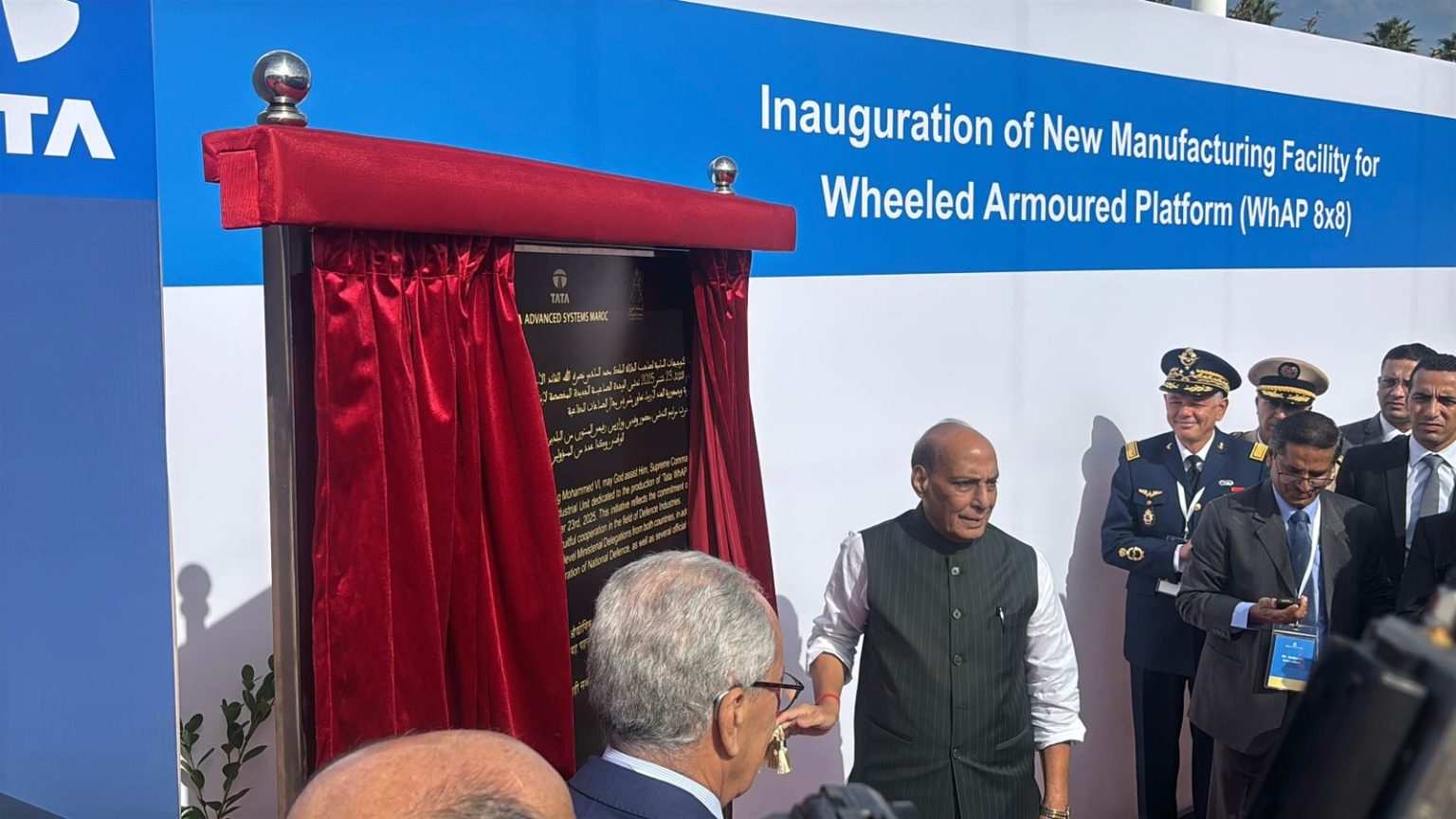
- 29 Sep 2025
In News
- In a major step towards expanding India’s defence industrial footprint globally, Defence Minister Rajnath Singh and his Moroccan counterpart AbdelatifLoudyi jointly inaugurated India’s first overseas defence manufacturing facilityatBerrechid, Morocco.
- Set up by Tata Advanced Systems Limited (TASL) in collaboration with the Defence Research and Development Organisation (DRDO), the facility marks a historic milestone in India’s defence diplomacy and the growing strategic partnership between India and Morocco.
About the Facility
- Location:Berrechid, Morocco
- Established by: Tata Advanced Systems Limited (TASL) in partnership with DRDO
- Launched in: 2025
- Scale: Spread over 20,000 sq. metres, it is Morocco’s largest defence manufacturing facility and India’s first such overseas plant by a private defence company in Africa.
- Primary Production: The Wheeled Armoured Platform (WhAP) — an indigenously developed 8×8 modular combat vehicle jointly designed by TASL and DRDO.
Key Features
- Product Range: The WhAP will be produced in multiple configurations including:
- Infantry Fighting Vehicle
- Armoured Personnel Carrier
- Reconnaissance Vehicle
- Command Post
- Mortar Carrier
- Armoured Ambulance
- Technical Capabilities:
- Equipped with advanced mobility, armour protection, remote weapon stations, and anti-tank guided missile systems.
- Incorporates indigenous technologies and customised modular design for varied combat roles.
- Local Sourcing:
- Initially, one-third of components will be sourced locally from Morocco.
- This is expected to increase to 50% in later phases, fostering industrial collaboration and technology transfer.
Strategic Objectives
The facility aims to advance India’s Aatmanirbhar Bharat vision beyond domestic production to global partnerships under the theme “Make with Friends, Make for the World.”
Key Goals:
- Strengthen India–Morocco defence cooperation and bilateral industrial partnerships.
- Promote defence exports and technology sharing with friendly nations.
- Support regional security and stability across Africa and Europe through capacity-building.
Significance
1. Strategic and Diplomatic
- Establishes Morocco as a strategic hub for Indian defence manufacturing in North Africa and Europe.
- Deepens India’s defence diplomacy and enhances its global footprint in high-technology sectors.
- Reinforces India’s credibility as a trusted partner in defence collaboration.
2. Economic and Industrial
- Generates direct and indirect employment in Morocco.
- Develops a local supplier ecosystem and supports critical technology capabilities within the host nation.
- Boosts India’s defence exports while contributing to Morocco’s industrial development.
3. Technological and Strategic Autonomy
- Demonstrates India’s growing capability to design, produce, and export advanced defence systems.
- Showcases India’s transition from import dependence to a global exporter of high-end military technologies.
World Food India (WFI) 2025
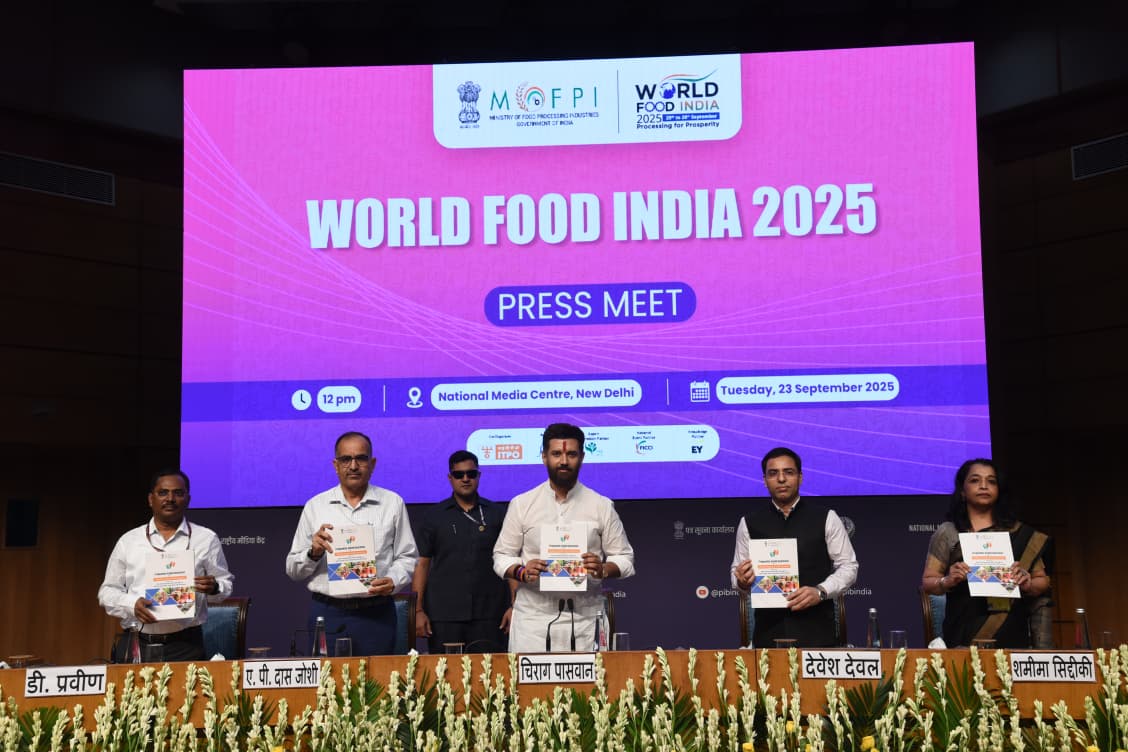
- 29 Sep 2025
In News:
The fourth edition of World Food India (WFI) 2025was held at Bharat Mandapam, New Delhi, organised by the Ministry of Food Processing Industries (MoFPI).
Overview
World Food India is the flagship global event of MoFPI that brings together key stakeholders from across the food ecosystem — governments, industry leaders, investors, and innovators — to strengthen India’s positioning as the “Food Basket of the World.”
Since its inception in 2017, the event has evolved into a transformative platform for food innovation, investment, and sustainability. The 2025 edition, spread across 1,00,000 sq. metres, is the largest congregation in the history of India’s food processing sector, with participation from:
- 21 countries, 21 States/UTs, 10 Central Ministries, and 5 allied organisations
- Over 1,700 exhibitors, 500 international buyers, and representatives from 100+ nations
Key Highlights of World Food India 2025
Partner and Focus Countries
- Partner Countries: New Zealand and Saudi Arabia
- Focus Countries: Japan, Russia, UAE, and Vietnam
Parallel and Thematic Events
- 3rd Global Food Regulators Summit (FSSAI): To harmonise international food safety standards.
- 24th India International Seafood Show (SEAI): To promote India’s seafood export potential.
- Reverse Buyer–Seller Meet (APEDA): Featuring over 1,000 buyers to boost agri-food exports.
- Knowledge Sessions: 45+ conferences, thematic discussions, and CXO roundtables with 100+ global agri-food leaders.
- Special Pavilions: Dedicated spaces for States, Ministries, Pet Food, Technology, Startups, and International exhibitors.
Core Pillars of WFI 2025
The 2025 edition revolves around five strategic pillars reflecting the government’s holistic vision for the food processing sector:
- Sustainability and Net Zero Food Processing – promoting climate-resilient and energy-efficient processing systems.
- India as a Global Food Processing Hub – showcasing India’s vast agri-resource base and processing potential.
- Frontiers in Food Processing, Products, and Packaging Technologies – highlighting innovation and technology adoption.
- Food for Nutrition, Health, and Wellness – aligning with the goals of nutritional security and public health.
- Livestock and Marine Products Driving the Rural Economy – boosting rural livelihoods and export competitiveness.
Significance of World Food India 2025
Economic Impact
- Attracts global and domestic investment in R&D, startups, logistics, and cold chain infrastructure.
- Enhances farm-to-fork linkages and promotes value addition across the supply chain.
Strategic Importance
- Reinforces India’s commitment to sustainable food systems in line with the UN Sustainable Development Goals (SDGs).
- Fosters international collaboration in technology, innovation, and regulatory frameworks.
Global Positioning
- Projects India as a leader in food innovation, safety, and sustainability.
- Strengthens India’s image as a trusted global supplier of high-quality, nutritious, and sustainable food products.
Exercise Cold Start
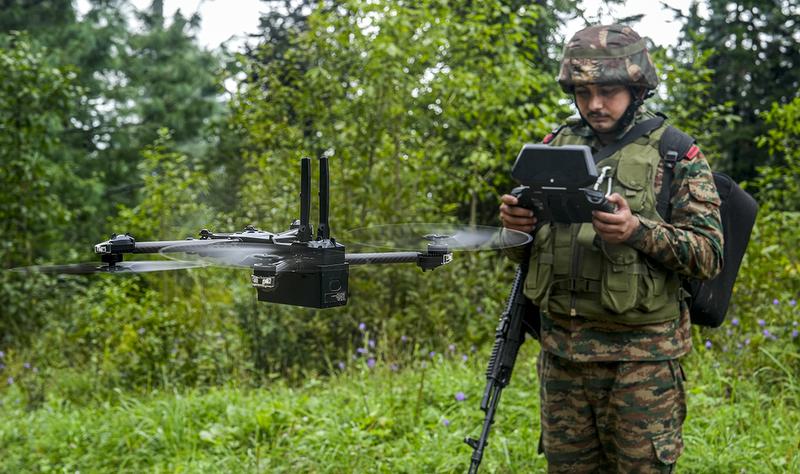
- 29 Sep 2025
In News:
- India will conduct a major tri-service exercise, ‘Cold Start’, in the first week of October 2025 in Madhya Pradesh.
- The exercise, involving the Army, Navy, and Air Force, will focus on testing drones and counter-drone systems to strengthen the country’s integrated air defence capabilities.
- It is being described as the largest such joint drill since Operation Sindoor.
About Exercise Cold Start
- Nature: A tri-service military exercise designed to simulate aerial threats and defence responses using drones, UAVs, and counter-drone systems.
- Objective:
- To evaluate operational readiness of the armed forces against evolving aerial threats.
- To identify technological and procedural gaps in India’s air defence systems.
- To enhance interoperability and coordination between the three defence services.
- Participants:
- Indian Army, Navy, and Air Force as primary participants.
- Supported by industry partners, research and development (R&D) agencies, and academic institutions, fostering a military–industry–academia partnership.
Key Features
- Live demonstrations of drones and counter-drone systems.
- Integration of GPS jamming, electronic warfare, and surveillance technologies.
- Testing of indigenous technologies developed through collaboration between defence R&D and private industry.
- Conceptual inspiration: The integrated air defence approach draws from the Sudarshan Chakra—symbolising a seamless and multi-layered defensive network against drones, UAVs, and hypersonic weapons.
Significance
- Enhances Jointness: Promotes synergy among the three defence services in technology-driven warfare.
- Technological Edge: Strengthens India’s counter-drone warfare capabilities and electronic warfare resilience.
- Strategic Readiness: Demonstrates India’s preparedness to respond to emerging aerial and cyber threats in the evolving domain of modern warfare.
- Defence Innovation: Encourages indigenous R&D and strengthens public–private collaboration in developing next-generation air defence systems.
Viksit Bharat Buildathon 2025
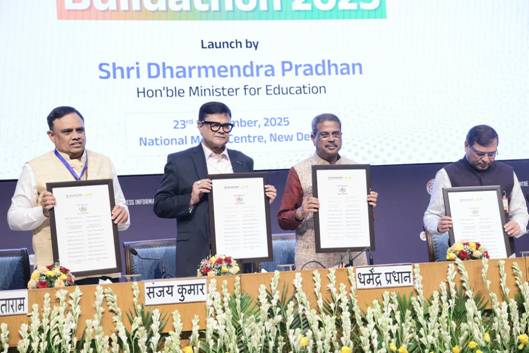
- 28 Sep 2025
In News:
- Union Education Minister Dharmendra Pradhan launched the Viksit Bharat Buildathon 2025, a nationwide school innovation movement aimed at nurturing creativity, entrepreneurship, and technological problem-solving among young students.
- The initiative seeks to transform school campuses into innovation hubs, empowering youth as the architects of a self-reliant and developed India.
About Viksit Bharat Buildathon 2025
- Organisers: Department of School Education and Literacy (DoSEL), Ministry of Education, in collaboration with Atal Innovation Mission (AIM), NITI Aayog, and the All India Council for Technical Education (AICTE).
- Culmination: January 2026, with felicitation of over 1,000 winners.
- Participants: School students across India — the largest school-level hackathon ever conducted.
Objectives
- Promote Grassroots Innovation: Cultivate a problem-solving mindset and creative thinking among school students.
- Foster Self-Reliance: Encourage innovation aligned with the principles of Atmanirbhar Bharat and Vocal for Local.
- Celebrate Swadeshi Innovation: Build indigenous solutions addressing real-world challenges.
- Enable National Development: Channel student ideas into tangible solutions for Samriddhi (prosperity) and Viksit Bharat (developed India).
- Create Global Impact: Project India as a global innovation capital and potential record-holder for the world’s largest synchronized innovation event.
Themes of the Buildathon
The competition revolves around four guiding themes that reflect India’s developmental vision:
- Vocal for Local – Promoting indigenous products and local entrepreneurship.
- Atmanirbhar Bharat – Encouraging technological self-reliance and innovation.
- Swadeshi – Leveraging traditional knowledge and indigenous technologies.
- Samriddhi – Designing solutions for inclusive and sustainable prosperity.
Structure and Timeline
|
Phase |
Timeline (2025–26) |
Key Activity |
|
Registration |
Sept 23 – Oct 6 |
Schools and students register via vbb.mic.gov.in |
|
Preparation Period |
Oct 6 – Oct 13 |
Teachers mentor student teams for ideation and submission |
|
Live Synchronized Innovation Event |
Oct 13 |
Nationwide simultaneous innovation challenge |
|
Final Submission Window |
Oct 13 – Oct 31 |
Upload of prototypes and project ideas |
|
Evaluation Phase |
Nov 1 – Dec 31 |
Expert panel assesses entries |
|
Grand Felicitation |
Jan 2026 |
Announcement of results and recognition of 1,000+ winners |
Building on Previous Success
The Buildathon builds upon the momentum of the School Innovation Marathon 2024, which led to:
- The Student Innovator Programme (SIP) and Student Entrepreneurship Programme (SEP).
- Multiple patents and startup ventures emerging from Atal Tinkering Labs (ATLs).
This continuum strengthens India’s school innovation ecosystem, linking student creativity to research, incubation, and entrepreneurship.
Significance
- Grassroots Empowerment: Encourages innovation at the school level, making every student a potential problem-solver.
- Integration with NEP 2020: Supports the National Education Policy’s emphasis on experiential learning, design thinking, and skill development.
- Atmanirbhar Bharat Vision: Aligns student innovation with national priorities of self-reliance and sustainable growth.
- Innovation Pipeline: Provides pathways for students to transition into formal innovation ecosystems — from idea to patent to startup.
- Global Positioning: Aims to showcase India’s youth-driven innovation capacity on international platforms.
India’s Fusion Energy Roadmap

- 28 Sep 2025
In News:
- Researchers at the Institute for Plasma Research (IPR), Gandhinagar, have unveiled a comprehensive roadmap for India’s fusion energy programme.
- This initiative aims to develop the country’s first fusion electricity generator, Steady-state Superconducting Tokamak–Bharat (SST-Bharat), and ultimately commission a demonstration reactor by 2060.
- The roadmap signifies a major step in India’s pursuit of sustainable, high-yield, and low-waste energy alternatives.
Understanding Nuclear Fusion
Nuclear fusion is the process where two light atomic nuclei (like isotopes of hydrogen) merge to form a heavier nucleus, releasing immense energy—similar to the reactions that power the Sun.
It differs from nuclear fission, where heavy atoms split apart to release energy.
Advantages of Fusion over Fission
- Minimal radioactive waste and no long-term storage challenges.
- Abundant fuel sources (deuterium from water, tritium from lithium).
- No greenhouse gas emissions and no meltdown risk.
- High energy density, offering a virtually limitless energy source.
India’s Current Fusion Research Base
- SST-1 Tokamak (IPR, Gandhinagar): India’s first steady-state superconducting tokamak, designed for plasma research. It has achieved plasma duration of ~650 milliseconds, with potential to reach 16 minutes.
- Participation in ITER (France): India contributes technology, components, and funding to the International Thermonuclear Experimental Reactor (ITER), the world’s largest magnetic confinement experiment aimed at demonstrating a Q-value (output/input ratio) of 10.
India’s Fusion Power Roadmap
1. The SST-Bharat Project
- A fusion-fission hybrid reactor proposed as India’s next major milestone.
- Expected output: 130 MW (100 MW from fission, 30 MW from fusion).
- Estimated cost: ?25,000 crore.
- Efficiency target: Five times the input power.
- Acts as a bridge technology toward achieving pure fusion energy.
2. Demonstration Reactor (By 2060)
- Planned 250 MW full-scale reactor.
- Target Q-value: 20 (i.e., producing 20 times more energy than input).
- Will use magnetic confinement, heating plasma to over 100 million°C — much hotter than the Sun’s core (15 million°C).
Technological Innovations Proposed
- Digital Twinning: Creating virtual replicas of tokamak systems to test and optimise operations before physical construction.
- Machine Learning-Assisted Plasma Control: Using AI for real-time monitoring and stability of plasma.
- Radiation-Resistant Materials: Essential for reactor longevity and safety.
- Superconducting Magnet Development: To maintain continuous plasma confinement efficiently.
Global Benchmarks and India’s Position
|
Country/Programme |
Reactor/Initiative |
Target Year |
Notable Achievement |
|
UK |
STEP Programme |
2040 |
Prototype fusion power plant planned |
|
USA |
Private Start-ups |
2030s |
Early grid-connected fusion target |
|
China |
EAST Tokamak |
Ongoing |
Record plasma duration |
|
France |
WEST Tokamak |
2025 |
Maintained plasma for 22 minutes |
|
India |
SST-Bharat & Demo Reactor |
2060 |
Gradual, state-led development path |
While global players pursue faster timelines, India’s approach is cautious but strategic, focused on self-reliance and steady technological progress.
Challenges in India’s Fusion Path
Technological
- Sustaining stable plasma for long durations.
- Achieving Q > 1 (self-sustaining fusion).
- Developing durable superconducting magnets and radiation-resistant materials.
Financial
- High costs: SST-Bharat alone costs ?25,000 crore.
- Competing priorities: Solar, wind, and fission projects receive higher funding.
- Limited private-sector participation compared to global trends.
Policy and Governance
- Absence of a dedicated fusion energy regulatory framework.
- Need for integrated policy support under India’s Net Zero 2070 commitments.
Economic Viability
Experts like M.V. Ramana (University of British Columbia) caution that commercial fusion power remains economically unproven, and timelines are often optimistic. High R&D and construction costs could make fusion electricity expensive compared to renewables.
Strategic and Technological Significance
Even if commercial viability takes time, fusion R&D brings collateral benefits:
- Advances in plasma physics, superconducting technology, and high-temperature materials.
- Development of radiation-hardened components for defence, space, and nuclear industries.
- Strengthened technological autonomy and enhanced participation in global research networks.
Impatiens Selvasinghii
- 28 Sep 2025
In News:
- In a significant botanical discovery, researchers from Madura College, Madurai, have identified a new species of flowering plant belonging to the genus Impatiens in the Kudremukh range of the Western Ghats, Karnataka.
- The species has been named Impatiens selvasinghii in honour of Dr. P. Selva Singh Richard, Associate Professor of Botany at Madras Christian College (MCC), for his pioneering contributions to the study of reproductive biology of endemic and endangered plants of the Western Ghats.
Key Details of the Discovery
- Location:Kudremukh Peak, Chikkamagaluru district, Karnataka
- Altitude: Approximately 1,630 metres above sea level
- Published in:Taiwania, an international peer-reviewed botanical journal
- Unique Features: The species is distinguished by its exceptionally small flowers—the smallest among known balsams of the Western Ghats—and prominently lobed wing petals.
- Ecological Role: Small insects are dependent on this species for survival, underscoring its role in the local micro-ecosystem.
The Genus Impatiens in India
- India hosts over 280 taxa of Impatiens, widely distributed across the Eastern Himalayas and the Western Ghats.
- About 210 taxa are endemic to India, with 130 species unique to the Western Ghats.
- Notably, around 80% of the Impatiens species in the Western Ghats are categorized as endangered, highlighting the region’s ecological vulnerability.
Conservation Concerns
Researchers have cautioned that Impatiens selvasinghii is located along a popular trekking route in Kudremukh, where over-tourism and habitat disturbance could threaten its survival. Given the fragile mountain ecosystem and high endemicity of balsam species, measures for habitat protection and responsible ecotourism are vital.
Clean Plant Programme (CPP)
- 28 Sep 2025
In News:
- The Clean Plant Programme (CPP), conceptualized by the Ministry of Agriculture and Farmers Welfare in collaboration with the Asian Development Bank (ADB), is emerging as a transformative initiative aimed at ensuring healthy, disease-free planting material of key fruit crops.
- Approved by the Union Cabinet, CPP is implemented by the National Horticulture Board (NHB) with technical guidance from the Indian Council of Agricultural Research (ICAR).
Background and Rationale
India faces growing challenges to plant health from climate change, pests, and systemic pathogens, especially viruses, which significantly reduce crop quantity, quality, and longevity. By the time disease symptoms manifest, management in the field becomes difficult and often ineffective. Providing disease-free planting material has therefore been recognized as the most efficient preventive strategy.
CPP aligns with broader initiatives such as Mission LiFE (Lifestyle for Environment) and the National One Health Mission, promoting sustainable, eco-friendly agriculture and integrated management of human, animal, and environmental health risks.
Key Features of CPP
- For Farmers: Ensures access to virus-free, high-quality planting material to improve yields, income, and resilience against climate-induced pest and disease pressures.
- For Nurseries: Streamlined certification, infrastructure support, and technical guidance help nurseries propagate clean material efficiently.
- For Consumers: Delivers superior-quality fruits free from viruses, enhancing taste, appearance, and nutritional value.
- For Exports: Strengthens India’s global position by promoting high-quality, disease-free fruits.
- Equity and Inclusivity: Facilitates affordable access for all farmers, engages women in training and decision-making, and develops region-specific varieties for India’s diverse agro-climatic zones.
Investment and Implementation
CPP represents an investment of ?1,765.67 crore, including an ADB loan of $98 million. Key developments include:
- Nine Clean Plant Centres across India, including three in Maharashtra for grapes (Pune), oranges (Nagpur), and pomegranates (Solapur).
- Financial support for nurseries: ?3 crore for large nurseries and ?1.5 crore for medium nurseries. Expected annual production of 8 crore disease-free seedlings.
- Establishment of a national-level research laboratory in Pune for original plant species research.
- International collaboration with countries such as Israel and the Netherlands.
On-Ground Actions and Progress
- Hazard Analysis (HA): Virus profiling for grapevine, apple, and citrus crops, forming the foundation for Clean Plant Centers and certification.
- Nursery and Lab Assessments: NHB, ICAR, and ADB teams evaluated nurseries and laboratories across states for readiness, infrastructure, and bioinformatics capability.
- Clean Plant Propagation: Material testing, virus elimination through tissue culture, heat, or cryotherapy, and distribution through accredited nurseries to farmers.
- Digital and Resource Platforms: CPP website serves as a central hub for updates, resources, and technical guidance.
Alignment with Other Initiatives
- Mission LiFE: Encourages sustainable environmental practices and individual/community-level action to conserve natural resources.
- National One Health Mission: Integrates human, animal, and environmental health to manage disease risks and improve productivity.
- Mission for Integrated Development of Horticulture (MIDH): CPP complements MIDH’s goals of providing quality planting material and micro-irrigation to enhance horticultural productivity, which has increased from 12.10 MT/ha (2019–20) to 12.56 MT/ha (2024–25, 2nd advance estimates).
Industrial Park Rating System 3.0
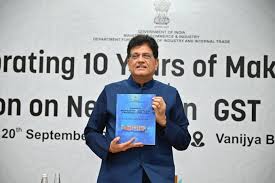
- 28 Sep 2025
In News:
- Recently, the Union Minister of Commerce and Industry, Shri Piyush Goyal, launched the Industrial Park Rating System (IPRS) 3.0 in New Delhi as part of the decade-long celebrations of the Make in India initiative.
- Developed by the Department for Promotion of Industry and Internal Trade (DPIIT) with support from the Asian Development Bank (ADB), IPRS 3.0 aims to benchmark and enhance the competitiveness of industrial parks across India.
Background and Evolution
The IPRS initiative began in 2018 as a pilot project, followed by IPRS 2.0 in 2021. The third edition builds upon these earlier versions by introducing a more comprehensive framework to assess industrial infrastructure, operational efficiency, and overall competitiveness.
Features of IPRS 3.0
IPRS 3.0 evaluates industrial parks based on multiple parameters, including:
- Sustainability and green infrastructure
- Logistics connectivity
- Digitalization
- Skill linkages
- Tenant feedback
Based on performance across these indicators, industrial parks are categorized into Leaders, Challengers, and Aspirers. This benchmarking enables stakeholders, including investors and policymakers, to access reliable and transparent data, identify best practices, and implement targeted interventions.
Significance for Industrial Development
The launch of IPRS 3.0 aligns with India’s broader strategy to create world-class industrial infrastructure. It provides States and Union Territories with an opportunity to:
- Showcase high-performing industrial parks
- Identify gaps for infrastructure improvement
- Attract domestic and foreign investments
- Generate employment
- Strengthen their industrial ecosystem
AI-enabled Centre at Betla National Park

- 27 Sep 2025
In News:
Betla National Park, located in Latehar district, Jharkhand, will soon host India’s first AI-enabled nature experience centre. Part of the Palamu Tiger Reserve (PTR), the park is known for its rich biodiversity, including tigers, elephants, and diverse flora and fauna. PTR is one of the first nine tiger reserves established under Project Tiger (1973), covering a total area of 1,129.93 sq. km, and was notified as a National Park in 1986.
About the AI-Enabled Centre
The centre, developed by Palamu Tiger Reserve authorities under Deputy Director Prajesh Kant Jena, aims to provide visitors with an immersive, high-tech wildlife experience. Unlike conventional nature interpretation centres, it will use cutting-edge technologies to recreate the dynamics of the jungle ecosystem, including:
- AI assistants for guided learning.
- 3D holographic projections to display lifelike animal behaviour.
- Augmented Reality (AR) and immersive sound effects to simulate waterfalls, bird calls, predator-prey interactions, and herd movements.
- Ecosystem simulation, portraying animal movement, food-sharing activities, and other natural behaviours in a realistic manner.
Purpose and Significance
The centre, themed “Threads of Nature,” is designed to convey the interconnection between humans and nature. Key objectives include:
- Enhancing eco-tourism by offering a realistic jungle experience, including sightings of tiger hunts, elephant herds, and lions.
- Promoting conservation awareness through interactive learning and observation tools.
- Supporting researchers and nature enthusiasts with virtual wildlife monitoring capabilities.
Unique Features
While nature interpretation centres have existed in Betla since the 1970s, this facility represents the first high-tech effort in India to integrate AI, AR/VR, holograms, and immersive sound for wildlife education. Visitors will not just see static models or photographs but will experience the sights, sounds, and atmosphere of a living jungle, providing a deeper understanding of ecosystem dynamics.
By merging technology with conservation education, the Betla AI-enabled centre is poised to become a pioneering hub for tourism, research, and ecological awareness in Jharkhand and across India.
Combined Operational Review and Evaluation (CORE) Programme
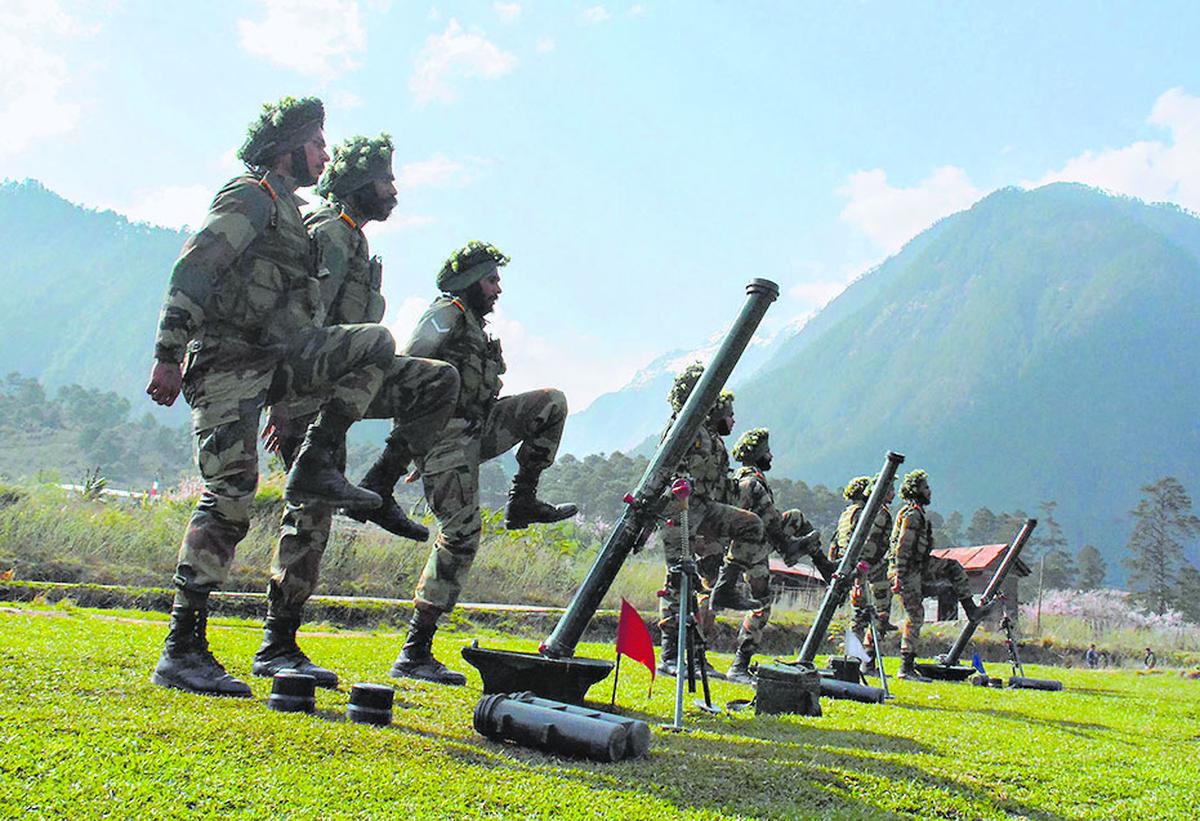
- 27 Sep 2025
In News:
- The Headquarters Integrated Defence Staff (HQ IDS) is organising the Combined Operational Review and Evaluation (CORE) Programme at the United Service Institution of India, New Delhi.
- The initiative serves as a unique platform for civil-military engagement on national and regional security, bringing together senior officers from the Indian Armed Forces alongside officials from the Ministries of Defence, External Affairs, and Home Affairs.
Objectives and Significance
The CORE Programme aims to:
- Strengthen civil-military synergy in addressing multidimensional security threats.
- Enhance strategic awareness among senior officers and develop their capacity for balanced, pragmatic decision-making.
- Foster leadership development and inter-agency coordination in complex national and international security scenarios.
The programme underscores HQ IDS’s commitment to jointness within the Armed Forces and professional development, preparing participants to navigate dynamic security challenges effectively.
Key Themes and Focus Areas
The CORE Programme covers a spectrum of contemporary security issues, including:
- Regional and global security challenges
- Technological transformation of warfare
- Strategic communication
- Inter-agency collaboration and joint problem-solving
The programme employs a combination of lectures, interactive discussions, and sessions with subject-matter experts and professionals from diverse fields. This approach broadens participants’ outlook, encourages collaborative solutions, and strengthens the intellectual foundations of senior leadership.
Participants
The five-day programme brings together senior civil and military officers, facilitating a holistic understanding of national security from multiple perspectives. By promoting dialogue across the defence and civilian sectors, CORE enhances preparedness to address complex, multidimensional threats at both national and international levels.
Phytosaur fossil
- 27 Sep 2025
In News:
Recent paleontological excavations in Megha village, Fatehgarh subdivision, Jaisalmer district, Rajasthan, have uncovered fossilised remains that may belong to a Phytosaur, a large, extinct semi-aquatic reptile. This discovery has generated significant excitement in the scientific community and reinforces Jaisalmer’s reputation as a paleontological hotspot.
About Phytosaurs
Phytosaurs are extinct reptiles of the order Phytosauria, resembling modern crocodiles, which thrived during the Late Triassic to Early Jurassic period. They displayed morphological diversity, including:
- Long-snouted forms (primarily fish-eating)
- Short-snouted forms (adapted for terrestrial prey)
- High-snouted forms (generalist feeders)
Phytosaur fossils have been reported in India, Europe, North America, Brazil, Morocco, Thailand, and Madagascar, highlighting their wide distribution and evolutionary significance.
Significance of the Find
The Megha village fossil adds to Jaisalmer’s growing list of paleontological finds, which includes dinosaur footprints, shark fossils, and marine remains. Experts suggest that the site may contain additional hidden fossils, which could provide crucial insights into:
- The evolution of prehistoric reptiles
- Convergent evolution with modern crocodilians
- Jurassic-era biodiversity and climate in India
If confirmed as a Phytosaur, the fossil will enhance our understanding of prehistoric fauna in the Indian subcontinent and strengthen the region’s global paleontological significance.
Striped Dolphin
- 27 Sep 2025
In News:
- In a rare observation, a pod of striped dolphins (Stenella coeruleoalba) was recently sighted off the Visakhapatnam coast in Andhra Pradesh.
- The sighting, captured on video by a local fisherman from Muthyalammapalem, has drawn attention to the rich but under-documented marine biodiversity of India’s eastern coastline.
- The species was identified by the East Coast Conservation Team (ECCT) with assistance from the Marine Mammal Research and Conservation Network of India — marking one of the few verified records of striped dolphins in Andhra waters.
About Striped Dolphins (Stenella coeruleoalba)
|
Aspect |
Details |
|
Family |
Delphinidae (Oceanic dolphins) |
|
IUCN Status |
Least Concern |
|
Distribution |
Found in tropical and temperate waters of all major oceans — including the Mediterranean Sea, Japan, South Africa, Western Australia, New Zealand, and occasionally, Indian waters. |
|
Habitat |
Prefer deep offshore waters and upwelling zones where nutrient-rich cold water supports abundant marine life. Often found near continental shelf edges. |
|
Physical Features |
Length: ~2.2–2.6 m; streamlined body; long beak (rostrum); tall, curved dorsal fin. Notable dark stripes run from the beak through the eye and down the sides, giving the species its name. |
|
Behaviour |
Found in tight pods of 25–100 individuals. Known for acrobatics such as breaching, leaping, and the characteristic “roto-tailing” — a spinning motion of the tail while airborne. |
|
Lifespan |
Up to 58 years. |
|
Diet |
Primarily small fish, squid, and crustaceans. |
Ecological and Conservation Significance
The recent sighting highlights the ecological richness of the Bay of Bengal, especially the Visakhapatnam coast, which supports diverse marine fauna but remains scientifically under-surveyed.
Such sightings are crucial for:
- Enhancing knowledge about the migratory patterns and population structure of marine mammals in Indian waters.
- Assessing ecosystem health, since dolphins are indicator species reflecting the condition of marine food chains.
- Formulating regional conservation policies for marine biodiversity and sustainable fisheries.
The ECCT’s collaboration with fishermen exemplifies a community-based conservation model, where local knowledge complements formal scientific documentation — essential for protecting fragile marine ecosystems.
Recent Discoveries Indicating Biodiversity Potential
During recent coastal surveys, researchers even rediscovered a sea slug species in Visakhapatnam that had not been recorded in nearly 180 years, further proving the hidden biodiversity of India’s east coast and the urgent need for systematic monitoring.
Protecting India’s Satellites
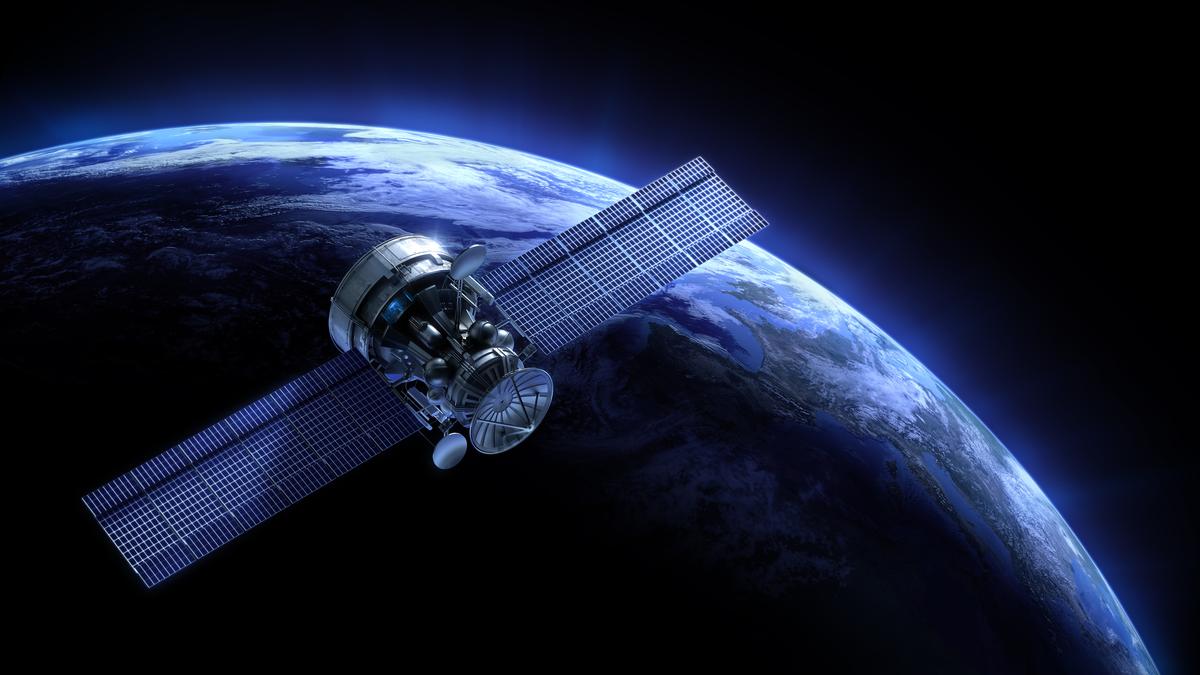
- 27 Sep 2025
In News:
Following a near-miss incident in 2024 between an Indian satellite and a foreign spacecraft, India has intensified efforts to protect its growing constellation of satellites. Given the critical role of satellites in national security, communication, and economic infrastructure, safeguarding them has become a strategic necessity.
Why Protecting Satellites is Crucial
India’s satellites are vital for a range of civilian and defence functions — from weather forecasting and navigation (NavIC) to internet services, surveillance, and global communications. They underpin sectors such as aviation, shipping, agriculture, and disaster management, while also enabling secure military operations.
However, these assets face increasing threats:
- Space debris and collisions — The expanding number of satellites and fragments in orbit raises the risk of accidental impacts.
- Hostile manoeuvres — Adversarial satellites may shadow or interfere with India’s space assets.
- Cyber threats — Ground stations and networks remain susceptible to hacking, jamming, and spoofing.
- Solar storms and space weather — Events like coronal mass ejections can damage satellite electronics and disrupt signals.
With the high costs of launching and maintaining satellites, ensuring their safety protects India’s technological investment and strategic autonomy.
India’s Ongoing and Planned Initiatives
- IS4OM (ISRO System for Safe and Sustainable Space Operations and Management): Located in Bengaluru, this centre continuously tracks India’s satellites and provides collision-avoidance alerts, enabling timely orbital manoeuvres to prevent accidents.
- Project NETRA (Network for Space Object Tracking and Analysis): An ambitious space surveillance system comprising radars and telescopes to build indigenous Space Situational Awareness (SSA) capabilities. It will allow India to monitor space debris and detect suspicious satellite movements in real-time.
- Aditya-L1 Mission: India’s first solar observatory mission monitors solar storms and radiation patterns, providing early warnings about solar events that could threaten satellite operations.
- ?27,000-crore Surveillance Satellite Programme (2026–2032): India has approved the launch of 52 surveillance satellites to strengthen real-time observation, border monitoring, and space domain awareness — forming the backbone of future space defence capabilities.
- CERT-In Satellite Cybersecurity Guidelines (2025): New cybersecurity protocols mandate strong encryption, network segmentation, and data protection norms to prevent satellite hacking or signal spoofing.
- IN-SPACe Licensing and Regulation: Private players are now integrated into India’s space ecosystem, but under strict safety and cybersecurity standards to ensure the security of the commercial space sector.
- Debris-Free Space Mission (By 2030): Announced at the Inter-Agency Space Debris Coordination Committee (IADC) in 2024, India has pledged to adopt sustainable space practices and avoid debris creation during launches and operations.
Emerging Plan: “Bodyguard Satellites”
India is reportedly considering deploying bodyguard satellites — specialised spacecraft that will act as orbital escorts for high-value satellites.
Functions and Features:
- Proximity monitoring: Detect when debris or foreign satellites come dangerously close.
- Threat identification: Track hostile proximity operations or suspicious manoeuvres.
- Protective action: Reposition themselves or guide the protected satellite to avoid collisions or interference.
- Strategic deterrence: Aligns India with global trends where major space powers (like the US, Russia, and China) are deploying similar defensive technologies.
Challenges:
- Technological: Requires advanced sensors, AI-driven autonomy, and ultra-precise orbital manoeuvring systems.
- Financial: High development and launch costs demand sustained investment.
- Cybersecurity: Satellite-ground communication remains a potential vulnerability.
- Geopolitical: May trigger suspicion or an arms race in outer space.
- Sustainability: Increased orbital activity must not worsen the space debris problem.
Way Forward
- Strengthen indigenous SSA: Invest in LiDAR, radar, and optical satellite networks to monitor all orbital zones.
- Enhance anti-jamming and encryption systems: Build resilient, autonomous communication systems immune to interference.
- Public–Private Collaboration: Encourage startups and private firms to co-develop low-cost, high-tech satellite protection tools.
- Global cooperation: Engage actively with international bodies like COPUOS and IADC to promote transparency and responsible behaviour in space.
- Defensive-first approach: Focus on non-weaponised, sustainable defence mechanisms to maintain peace and prevent escalation in outer space.
World’s 1st Functioning AI-designed Viral Genome
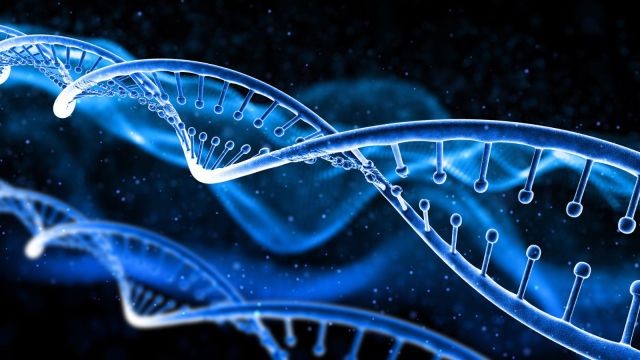
- 26 Sep 2025
In News:
Scientists at Stanford University and the Arc Institute have created the world’s first artificially designed viral genome using Artificial Intelligence (AI), marking a major milestone in computational biology and synthetic genomics. The breakthrough demonstrates AI’s capability to generate an entirely new and functional virus—one that can infect and kill bacteria.
About the Discovery
The AI-generated virus was designed using a genomic model called Evo, which functions like a “language model” for DNA. Evo was trained on nearly two million viral genomes, learning the patterns and grammar of genetic sequences—akin to how language models learn human syntax and semantics.
The model was guided to mimic the bacteriophage ΦX174 (phi-X-174), a virus that infects E. coli bacteria. This phage was chosen because:
- It has a small yet complex genome (about 5,386 DNA letters and 11 overlapping genes).
- It was the first genome ever sequenced (1977) and the first synthesized from scratch (2003)—now it is the first AI-designed genome.
How It Was Done
- Training the AI: Evo was trained on millions of viral sequences to understand gene order, composition, and regulatory logic.
- Design Phase: Using prompts, Evo generated thousands of potential genome designs.
- Screening & Testing: Researchers filtered these using software checks to ensure each genome contained the necessary genes and functional proteins.
- Lab Validation: Hundreds of genomes were synthesized and inserted into E. coli bacteria. Out of 302 attempts, 16 fully functional viruses emerged.
- Results:
- These viruses contained over 392 mutations never seen in nature.
- Some designs achieved functions human scientists had failed to engineer, such as borrowing DNA-packaging proteins from unrelated viruses.
- Cryo-electron microscopy confirmed the structural integrity of these AI-designed proteins within the viral shell.
What is a Virus?
A virus is a microscopic infectious agent made of nucleic acid (DNA or RNA) enclosed within a protein coat (capsid).
- It cannot replicate independently and must hijack a host cell’s machinery to reproduce.
- Many viruses cause diseases like COVID-19, AIDS, measles, and smallpox.
What is a Genome?
The genome is the complete set of DNA instructions in an organism.
- In humans, it comprises 23 pairs of chromosomes in the nucleus plus mitochondrial DNA.
- It encodes all genetic information required for growth, development, and functioning.
Significance of the Breakthrough
- Redefining Synthetic Biology:The experiment represents a leap from reading and writing genomes to designing them. AI is now capable of generating entirely new, functional genetic blueprints.
- Advancing Phage Therapy:The AI-designed bacteriophages could revolutionize phage therapy—the use of viruses to target and kill antibiotic-resistant bacteria, a major global health threat.
- Accelerating Biotechnology:This development showcases how AI can drastically accelerate genetic innovation, enabling rapid design and testing of new biological entities.
- Proof of Concept for AI-Driven Evolution:AI-generated viruses adapted to bacterial defenses faster than natural ones, indicating potential for directed evolution through computational models.
- Ethical and Regulatory Implications:While promising, the creation of new synthetic organisms underscores the need for global biosafety, biosecurity, and ethical frameworks to govern AI-driven genetic design.
High Seas Treaty of UN Reaches Entry into Force Threshold
- 26 Sep 2025
In News:
- The Biodiversity Beyond National Jurisdiction (BBNJ) Treaty, also known as the UN High Seas Treaty, has crossed the crucial threshold of 60 ratifications, enabling it to enter into force on January 17, 2026. With Morocco and Sierra Leone becoming the 60th and 61st ratifying nations, this milestone marks a historic step in the global conservation of marine biodiversity in international waters.
- So far, 143 countries, including India, have signed the treaty, reflecting strong international consensus on protecting marine ecosystems that lie beyond national boundaries.
About the BBNJ Treaty
- Full Name:Agreement under the United Nations Convention on the Law of the Sea on the Conservation and Sustainable Use of Marine Biological Diversity of Areas Beyond National Jurisdiction (BBNJ).
- Parent Framework: Builds upon the UN Convention on the Law of the Sea (UNCLOS), adopted in 1982 and effective since 1994 — often called the “Constitution for the Oceans”.
- Geographical Scope: Applies to areas beyond 200 nautical miles from the Exclusive Economic Zones (EEZs) of coastal nations, commonly referred to as the high seas.
- Coverage: These high seas account for nearly two-thirds of the global ocean and cover over 70% of the Earth’s surface, yet currently, only 1.44% are under any form of protection.
Objectives and Key Provisions
The BBNJ Treaty seeks to conserve and sustainably use marine biodiversity in areas beyond national jurisdiction through legally binding measures. Its major provisions include:
- Creation of Marine Protected Areas (MPAs):
- Aims to designate and manage MPAs in international waters.
- Currently, 6.35% of the ocean is protected, with only 1.89% designated as no-take MPAs, where all extractive activities such as fishing, mining, and drilling are prohibited.
- This aligns with the Kunming-Montreal Global Biodiversity Framework target of protecting 30% of global land and sea areas by 2030 (30x30 goal).
- Equitable Sharing of Marine Genetic Resources (MGRs):
- Establishes mechanisms to ensure fair and equitable distribution of benefits derived from marine genetic resources — biological materials such as microorganisms, plants, and animals with applications in pharmaceuticals and biotechnology.
- Mandatory Environmental Impact Assessments (EIAs):Mandates EIAs for high-impact activities like deep-sea mining, carbon sequestration, and bioprospecting in international waters to mitigate potential ecological harm.
- Scientific Cooperation and Technology Transfer:Encourages capacity building, data sharing, and technology transfer to support developing nations in ocean research and sustainable marine resource management.
Process for the Treaty’s Entry into Force
- Condition: The BBNJ Treaty enters into force 120 days after the deposit of the 60th instrument of ratification, approval, or accession.
- Implementation Date: Given the 60th ratification milestone was achieved in September 2025, the treaty will legally come into effect on January 17, 2026.
- Next Steps:
- Preparatory Commission (PrepCom): Tasked with operationalizing the treaty by establishing scientific and technical bodies, expert qualifications, and procedural frameworks for reviewing MPA proposals.
- First Conference of Parties (COP1): Will convene post-entry into force to initiate formal implementation. Key agenda items include governance mechanisms, financial arrangements, and the Clearing-House Mechanism for information exchange.
India’s Role and Strategic Interests
- India’s Involvement:
- The Union Cabinet approved India’s signing of the BBNJ Treaty in July 2024.
- India is among the 143 signatories, signaling commitment to sustainable ocean governance.
- Strategic Significance for India:
- Enhanced Oceanic Presence: Expands India’s strategic and scientific footprint beyond its Exclusive Economic Zone (EEZ).
- Scientific Research: Facilitates participation in global marine research, access to marine genetic resources, and technological collaboration.
- Alignment with SDG-14: Advances India’s commitment to Sustainable Development Goal 14 – “Life Below Water”, which seeks to conserve and sustainably use ocean resources.
- Diplomatic and Environmental Leadership: Positions India as a responsible stakeholder in global commons management and strengthens its environmental diplomacy credentials.
Assessment of Logistics Cost in India
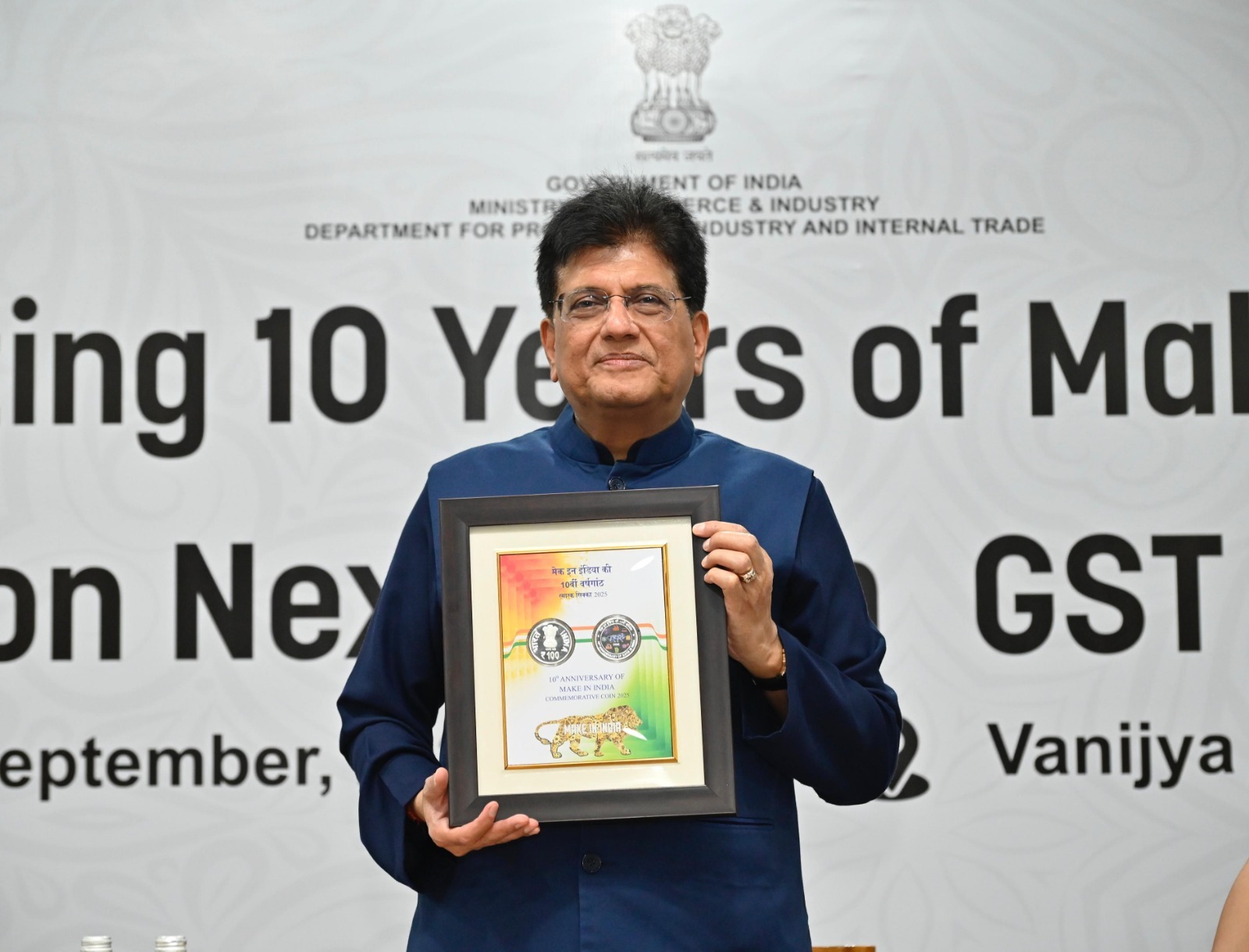
- 26 Sep 2025
In News:
- On the occasion of a decade of “Make in India”, the Union Minister of Commerce and Industry, Shri Piyush Goyal, launched the report on Assessment of Logistics Cost in India in September 2025.
- This marks the first scientifically derived national estimate of logistics costs, aligning with the objectives of the National Logistics Policy (NLP), 2022, to make India’s logistics sector globally competitive, data-driven, and cost-efficient.
About the Report
- Prepared by: Department for Promotion of Industry and Internal Trade (DPIIT) and the Department of Commerce.
- Methodology: Uses a hybrid approach, combining secondary data analysis with nationwide enterprise surveys to ensure scientific estimation.
- Objective: To establish a uniform national framework for measuring logistics costs and benchmarking them with global standards, in line with the NLP (2022).
Key Findings
- Logistics Cost Estimate (2025): Around 7.97% of India’s GDP.
- Previous Estimates: Older, often-cited figures of 13–14% of GDP were based on partial or external datasets, leading to inconsistent policy assessments.
- Trend Analysis: Over the past five years, logistics cost growth has slowed relative to non-services output, indicating improved sectoral efficiency.
Significance
This assessment provides evidence-based guidance for:
- Policy formulation on logistics modernization.
- Competitiveness enhancement of Indian exports.
- Strategic inputs for Free Trade Agreement (FTA) negotiations through the mapping of HSN codes to respective ministries.
- Development of logistics data banks and state logistics plans under the SMILE Programme (with ADB support).
Achievements and Improvements in India’s Logistics Sector
- Improved Global Ranking:India ranked 38th out of 139 countries in the 2023 World Bank Logistics Performance Index (LPI), up by six positions from 2018.
- Infrastructure Expansion:
- Cargo through Inland Waterways (2024–25):145.5 million tonnes.
- Operational National Waterways: Increased from 24 to 29.
- Digital Integration:
- Unified Logistics Interface Platform (ULIP): Consolidates logistics data across ministries, recording over 100 crore API transactions (2025).
- Facilitates end-to-end visibility and efficiency in multimodal logistics.
- Human Resource Development:Gati Shakti Vishwavidyalaya (GSV): India’s first logistics-focused university, has signed 40 MoUs with industry and academia to develop skilled manpower for transport and supply chain sectors.
Key Government Initiatives Driving Efficiency
1. PM GatiShakti National Master Plan (2021)
- Integrates 57 ministries/departments and all States/UTs on a digital GIS platform.
- Enables coordinated infrastructure planning acrossroads, railways, ports, airports, and inland waterways.
2. Dedicated Freight Corridors (DFCs)
- Two major DFCs under development by Indian Railways to:
- Ease congestion on passenger routes.
- Reduce freight cost and transit time.
- Improve energy efficiency and modal balance.
3. Multi-Modal Logistics Parks (MMLPs)
- 35 strategic locations approved (e.g., Chennai, Bengaluru, Nagpur, Indore).
- Five parks expected to become operational by 2027, promoting multimodal transport and value-added logistics services.
4. Maritime Amrit Kaal Vision 2047
- Long-term blueprint aligned with Blue Economy principles.
- Focuses on shipbuilding, coastal tourism, port-led development, and maritime skill-building to position India as a global maritime hub.
5. Sustainability and Green Initiatives
- Freight GHG Calculator: Estimates and compares transportation emissions to support eco-friendly logistics decisions.
- Rail Green Points: Helps freight customers assess carbon savings when using rail instead of road transport.
Challenges in India’s Logistics Sector
- High Logistics Cost (Legacy Issue): Historically estimated at 13–14% of GDP—higher than global benchmarks (8–9%).
- Infrastructure Gaps: Deficiency in warehousing, cold chain, and last-mile connectivity.
- Overdependence on Road Transport: Causes congestion, higher costs, and carbon emissions.
- Limited Multimodal Integration: Underutilization of railways and inland waterways for freight.
- Environmental Impact: Diesel-based trucking remains a major source of logistics-related emissions.
Objectives of the National Logistics Policy (NLP) 2022
- Reduce logistics cost to below 10% of GDP.
- Improve India’s LPI ranking to Top 25 by 2030.
- Build a robust, data-driven logistics decision-support system.
- Promote multimodal connectivity, sustainability, and ease of doing business.
Way Forward
- Integrated Infrastructure: Expansion of GatiShakti corridors and MMLPs to enable seamless multimodal movement.
- Digital Logistics Ecosystem: Wider adoption of ULIP, AI-driven route optimization, and e-logistics tracking.
- Green Logistics: Shift towards rail and waterways, adoption of electric and LNG-based freight vehicles, and GHG monitoring tools.
- Skill Development: Strengthening logistics education via GSV and industrial-academic partnerships.
- Policy Consistency: Periodic, data-backed cost assessments to guide long-term logistics and trade policy decisions.
Super Typhoon Ragasa
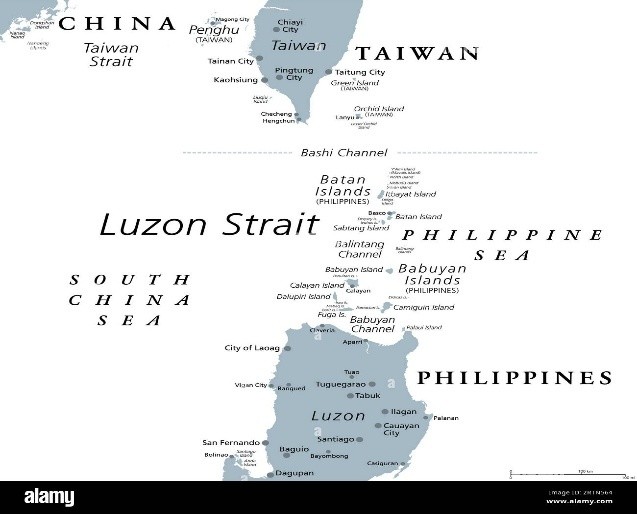
- 26 Sep 2025
In News:
Super Typhoon Ragasa—locally known as Nando—has emerged as one of the most powerful storms to strike Southeast Asia in recent years. With sustained winds exceeding 200 km/h and gusts up to 250 km/h, it has prompted large-scale shutdowns across the Philippines and Hong Kong, highlighting the region’s vulnerability to climate-induced extreme weather events.
About Super Typhoon Ragasa
- Category: 5 (the highest on the Saffir-Simpson scale)
- Wind Speed: Sustained winds of around 205 km/h, gusting up to 250 km/h.
- Origin: Formed over the western Pacific Ocean, where warm sea surface temperatures and low wind shear facilitated rapid intensification.
- Track: Moving northwestward across the Luzon Strait, impacting the Babuyan Islands in northern Philippines before heading toward southern China, including Hong Kong.
Regional and Environmental Significance
- The increasing intensity of storms like Ragasa reflects the broader pattern of climate change-driven extreme weather in the western Pacific region.
- Rising sea surface temperatures and shifting atmospheric circulation patterns have led to more frequent and severe typhoons, posing long-term challenges to disaster preparedness and coastal infrastructure resilience in densely populated regions like Luzon and Hong Kong.
Way Forward
- Strengthening Early Warning Systems: Enhanced forecasting and community-based alert dissemination can save lives in coastal and island regions.
- Climate Adaptation Infrastructure: Investment in storm-resilient housing, flood barriers, and sustainable urban planning is critical for mitigating recurring damage.
- Regional Cooperation: Shared meteorological data and coordinated disaster response among ASEAN nations, China, and Pacific island states can improve resilience.
Supercomputers vs Normal Computers

- 26 Sep 2025
In News:
Supercomputers are the giants of the computing world, built to solve problems far beyond the reach of everyday computers. Unlike normal laptops or desktops, which are designed for routine tasks like web browsing, office work, gaming, or media consumption, supercomputers tackle extremely complex, data-intensive problems—such as weather forecasting, simulating nuclear reactions, modelling the early universe, or training advanced artificial intelligence models.
Key Differences Between Normal Computers and Supercomputers
|
Aspect |
Normal Computers |
Supercomputers |
|
Processing Power |
Billions of operations per second (GFLOPS) |
Quintillions per second (ExaFLOPS); can complete tasks that would take ordinary machines years in just hours |
|
Architecture |
1–16 CPU cores |
Thousands to millions of CPUs and GPUs working in parallel |
|
Memory & Storage |
GB–TB range |
Petabyte-scale storage with parallel file systems |
|
Networking |
Standard Ethernet or Wi-Fi |
Ultra-fast interconnects like InfiniBand or Omni-Path |
|
Cooling & Power |
Small fans, low power consumption |
Liquid or immersion cooling; power requirements comparable to a small town |
|
Use & Access |
Direct individual use |
Remote access via job schedulers for research institutions and industrial applications |
India’s Supercomputing Initiative
- India’s journey in high-performance computing began in the late 1980s, largely as a response to export restrictions from Western countries. This led to the development of indigenous supercomputing capabilities under the National Supercomputing Mission (NSM).
- The mission has given rise to the PARAM series and the newer AIRAWAT supercomputers, positioning India on the global high-performance computing map.
- These systems are designed not just for academic research but also for solving real-world problems in climate modelling, healthcare simulations, and energy research. They exemplify India’s strategic approach to technological self-reliance and digital sovereignty.
Global Supercomputing Race
- Supercomputing has become a key area of technological competition. In Europe, Germany recently commissioned JUPITER, the continent’s first exascale supercomputer, capable of performing more than an exaFLOP (a quintillion calculation per second). This milestone highlights the global drive toward faster, more energy-efficient, and scalable computing infrastructures, with countries investing heavily in next-generation architectures.
Significance for India
For India, supercomputers are not only tools for scientific advancement but also instruments of national development. They support critical sectors such as meteorology, disaster management, nuclear research, and artificial intelligence, enhancing both strategic and developmental capacities. The NSM’s growing network of high-performance machines demonstrates India’s commitment to bridging the technological gap with global leaders.
Evo AI Model

- 25 Sep 2025
In News:
- In a groundbreaking scientific development, researchers at Stanford University, in collaboration with the Arc Institute, have used artificial intelligence (AI) to design viruses capable of killing harmful bacteria.
- This breakthrough offers a potential solution to the global antibiotic resistance crisis and marks a significant advance in AI-guided synthetic biology.
The Challenge of Antibiotic Resistance
- Antimicrobial resistance (AMR) is a growing global health threat. According to the World Health Organization (WHO), AMR is among the top public health and development challenges, contributing to an estimated 1.27 million deaths globally in 2019 and playing a role in 4.95 million deaths.
- In India alone, around 6 lakh lives are lost annually due to drug-resistant infections. Traditional antibiotics are increasingly ineffective, necessitating novel approaches to combat bacterial diseases.
- Bacteriophages, or viruses that specifically target bacteria, provide a promising alternative. Unlike antibiotics, phages attack specific bacterial strains, sparing beneficial microbes. However, engineering or identifying effective phages has historically been slow and labor-intensive.
AI Breakthrough: The Evo Model
To accelerate this process, scientists developed Evo, a large AI model for genomics, described as a “ChatGPT for DNA”. Evo was trained on 80,000 microbial genomes and millions of bacteriophage and plasmid sequences, encompassingapproximately 300 billion nucleotides.
Key Features of Evo:
- Foundation Model for Genomics: Predicts, designs, and generates genetic code for synthetic biology applications.
- Generative Capability: Creates novel viral blueprints, synthetic genomes, and protein variants (e.g., Cas9 variants).
- Extended Context Length: Understands long DNA sequences and gene interactions.
- High Precision: Operates at nucleotide-level resolution.
- Accelerated R&D: Reduces decades of trial-and-error lab work to weeks.
- Open Research: Publicly available for non-commercial academic use.
How the AI-Designed Viruses Were Created
- Selection of Model Virus: Scientists chose phiX174, a simple virus infecting E. coli, due to its well-characterized genome (11 genes) and manageable complexity.
- AI Training: Evo analyzed millions of viral sequences, learning gene structures and functional combinations that could enhance antibacterial activity.
- Generative Design: The AI proposed hundreds of new virus variants predicted to attack bacteria effectively.
- Laboratory Synthesis: Researchers synthesized the AI-designed genomes and tested them in the lab. 16 new viruses successfully infected and destroyed bacteria, with some performing better than natural counterparts.
Significance of the Discovery
- Rapid Innovation: AI accelerates phage design, shrinking decades of research into weeks.
- Targeted Therapy: Offers precision treatments against drug-resistant bacterial infections.
- Agricultural and Clinical Applications: Potential to safeguard human health, hospitals, and food production from bacterial threats.
- Scientific Implications: Raises philosophical and biological questions about AI’s ability to create life-like entities, as viruses, while not strictly “alive,” mimic key life processes.
Safety and Ethical Considerations
Experts caution that AI-designed viruses, if misused or released unintentionally, could pose biosecurity risks. While engineering harmful human viruses is highly complex, the possibility of accidental creation of dangerous pathogens calls for strict safety protocols, oversight, and ethical guidelines. Responsible research is essential to ensure societal benefit while minimizing risk.
Logistics Ease Across Different States (LEADS) 2025
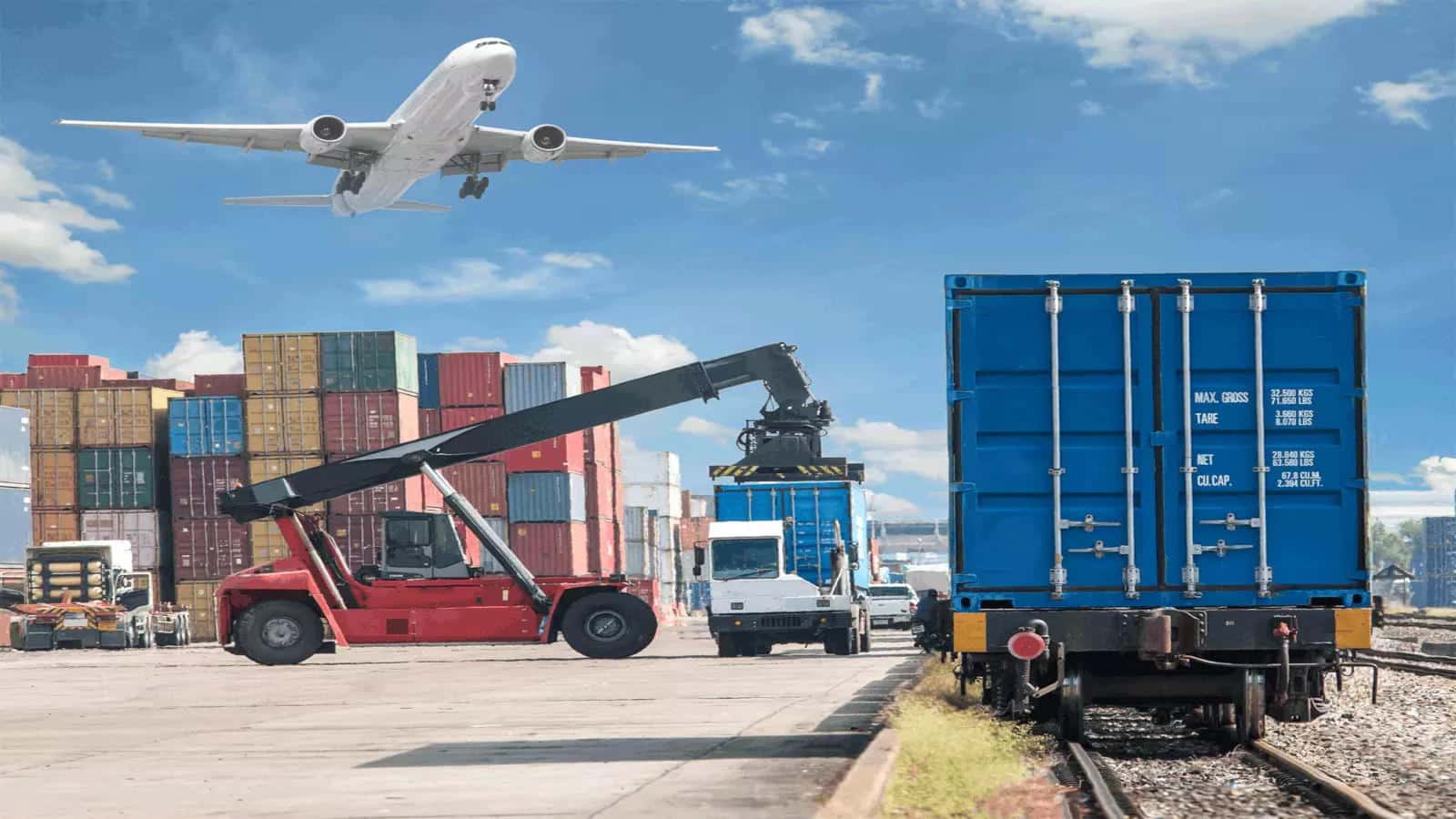
- 25 Sep 2025
In News:
The Union Minister for Commerce and Industry, launched Logistics Ease Across Different States (LEADS) 2025 in New Delhi as part of the decade-long celebrations of the Make in India initiative. The launch marks a major step in India’s efforts to create a globally competitive, efficient, and sustainable logisticsecosystem, integral to achieving the goals of Atmanirbhar Bharat and Viksit Bharat 2047.
About LEADS 2025
- Logistics Ease Across Different States (LEADS) is a national index and survey developed by the Department for Promotion of Industry and Internal Trade (DPIIT) under the Ministry of Commerce and Industry.
- It aims to benchmark and rank the logistics performance of Indian States and Union Territories, providing actionable insights to improve supply chain efficiency and reduce logistics costs.
Objectives
- To evaluate and compare logistics performance across States and UTs.
- To identify best practices and policy gaps for targeted reforms.
- To guide infrastructure planning and capacity building for logistics improvement.
- To support Make in India by enhancing logistics competitiveness and reducing costs.
Key Features of LEADS 2025
- Corridor Performance Tracking
- Assessment of 5–7 key national logistics corridors based on journey time, truck speed, and waiting periods.
- Provides a data-driven evaluation of corridor efficiency.
- API-Enabled Real-Time Data
- Introduces API-based analytics to evaluate section-wise speeds on major road corridors.
- Offers sharper insights into congestion points and logistics bottlenecks.
- State Rankings &Categorisation: States and UTs are ranked under Leaders, Achievers, and Aspirers categories to encourage healthy competition and policy innovation.
- Digital Dashboard: A new interactive monitoring platform allows States and UTs to track performance and progress in real time.
- Policy Recommendations: The survey provides customised state-level action plans to address infrastructure, service, and regulatory gaps.
Assessment Parameters
LEADS evaluates States and UTs on five major dimensions:
- Infrastructure Quality – Roads, warehousing, multimodal connectivity.
- Service Quality – Availability, reliability, and performance of logistics providers.
- Efficiency – Timeliness, truck turnaround time, and ease of clearances.
- Policy and Regulatory Support – State-level facilitation measures and grievance redressal mechanisms.
- Stakeholder Perception – Industry feedback on cost, speed, and reliability of logistics operations.
Papikonda National Park
- 25 Sep 2025
In News:
A recent study published in the Records of the Zoological Survey of India has documented 51 species of herpetofauna — including amphibians and reptiles — in Papikonda National Park, located in the northern part of the Eastern Ghats, Andhra Pradesh. This comprehensive survey marks a significant step in understanding the region’s biodiversity, which has remained largely underexplored.
Key Findings of the Study
Researchers recorded 18 amphibians, 21 lizards, 10 snakes, and 2 turtles through extensive fieldwork conducted between September 2021 and February 2023. The study revealed three species — Minervaryakalinga, Sphaerothecamaskeyi, and Hemidactylus kangerensis — reported for the first time in Andhra Pradesh.
According to the IUCN Red List (2024):
- 46 species are listed as Least Concern,
- 3 species are Not Yet Assessed,
- Hemidactylus kangerensis is Endangered, and
- Lissemyspunctata is Vulnerable.
Under the Wildlife (Protection) Act, 2022, several species enjoy legal protection:
- Schedule I:Chamaeleozeylanicus, Calodactylodes aureus, Pangshura tentoria, Lissemyspunctata
- Schedule II:Hoplobatrachustigerinus, Euphlyctiscyanophlyctis
The study also highlighted rare species such as Psammodynastespulverulentus and Argyrophisdiardii, the latter recorded for the first time in the Eastern Ghats. Two Eastern Ghats endemics — the Indian golden gecko (Calodactylodes aureus) and Dutta’s Mahendragiri gecko (Hemidactylus sushilduttai) — were also documented.
About Papikonda National Park
- Location: East and West Godavari districts, Andhra Pradesh
- Area: Approximately 1,012.86 sq km
- Established: Declared a Reserved Forest (1882), Wildlife Sanctuary (1978), and upgraded to National Park (2008)
- Landscape: Rugged terrain of the Eastern Ghats, divided by the Godavari River, with elevation ranging from 20–850 metres
- Geographical Features: Contains 62 named mountains, including Devara Konda (highest point) and Verala Konda (most prominent peak)
- Recognition: Identified as an Important Bird and Biodiversity Area (IBA) by BirdLife International
Flora and Fauna
- Vegetation: Tropical moist deciduous, semi-evergreen, and dry deciduous forests.
- Flora: Teak, rosewood, sandalwood, bamboo, sal, mahua, pterocarpus, terminalia, cassia, and eucalyptus.
- Fauna: Bengal tiger, Indian leopard, sloth bear, dhole (wild dog), sambar, and spotted deer.
- Unique Feature: Home to the “KanchuMekha”, a rare dwarf goat breed native to the region.
Conservation Significance
- The study provides baseline data crucial for biodiversity conservation and monitoring in the Eastern Ghats. Researchers warned that herpetofaunal populations face multiple threats — including habitat loss, fragmentation, emerging diseases, and climate change.
- Rare and threatened species like the Jeypore Hill Gecko (Geckoellajeyporensis), Barkud Spotted Skink (Barkudiainsularis), and King Cobra (Ophiophagus hannah) emphasize the need for targeted conservation strategies.
- The authors advocated for systematic surveys and integrated taxonomic approaches across the Eastern Ghats to enhance understanding of species distribution and to strengthen regional conservation planning.
Exercise Amogh Fury
- 25 Sep 2025
In News:
The Indian Army’s Sapta Shakti Command recently conducted a major integrated firepower exercise, ‘Amogh Fury’, at the Mahajan Field Firing Ranges in Rajasthan’s Thar Desert. The large-scale drill showcased the Army’s growing emphasis on technology-driven warfare, jointness of combat arms, and preparedness for multi-domain operations.
Objectives and Significance
- The primary aim of Exercise Amogh Fury was to test combat power, coordination, and operational readiness under realistic battlefield conditions.
- The exercise simulated live battle scenarios, enabling forces to validate their capabilities in offensive and defensive operations, while ensuring seamless integration between ground and air platforms.
- The drill reflected the Army’s commitment to operational transformation in line with evolving security dynamics, focusing on rapid decision-making, situational awareness, and integrated command structures.
Key Features of the Exercise
The exercise featured coordinated manoeuvres involving:
- Battle Tanks and Infantry Combat Vehicles – for armoured and mechanised warfare.
- Attack Helicopters and Long-Range Artillery – providing precision firepower support.
- Drones and Unmanned Aerial Systems (UAS) – for real-time reconnaissance, surveillance, and target acquisition.
These diverse platforms operated in unison to demonstrate jointness between air and ground forces, vital for modern high-intensity conflicts.
Integration of Advanced Technologies
A central focus of Amogh Fury was the use of modern technologies such as:
- Network-centric communication systems
- Integrated Command-and-Control (C2) architecture
- Real-time surveillance and targeting systems
These advancements allowed for the creation of a unified operational picture, enhancing situational awareness, rapid coordination, and decision-making across command levels. The integration of these systems reflects the Army’s move toward digitised battlefield management and multi-domain warfare capability.
Training and Outcomes
The exercise provided pragmatic training for personnel across all ranks under realistic combat conditions. It served as a testbed for refining tactical procedures and assessing the synergy between combat arms, support units, and logistic elements.
Through Amogh Fury, the Indian Army strengthened its readiness to counter emerging threats, underscoring its focus on agility, precision, and technological superiority on the modern battlefield.
DadasahebPhalke Award for 2023
- 25 Sep 2025
In News:
In a major recognition of artistic excellence, the Government of India has announced that legendary actor, director, and producer Shri Mohanlal Viswanathan Nair will be conferred with the DadasahebPhalke Award for the year 2023, the highest honour in Indian cinema.
About the DadasahebPhalke Award
The DadasahebPhalke Award is India’s highest honour in the field of cinema, instituted in 1969 to commemorate the birth centenary of DadasahebPhalke, widely regarded as the Father of Indian Cinema.
- Inaugural Recipient: Devika Rani (1969)
- Presented by: The President of India
- Award Components: Swarna Kamal (Golden Lotus) medallion, a shawl, and a cash prize of ?10 lakh
- Purpose: To recognise individuals for their outstanding lifetime contribution to the growth and development of Indian cinema.
About DadasahebPhalke
Dhundiraj Govind Phalke (1870–1944), born in Trimbak, Maharashtra, was a painter, photographer, playwright, and filmmaker. He directed India’s first full-length feature film, Raja Harishchandra (1913), which laid the foundation for Indian cinema. His pioneering vision and creative ingenuity earned him the title of “Father of Indian Cinema.”
Significance
The conferment of the DadasahebPhalke Award on Mohanlal marks a momentous chapter in Indian cinematic history. It recognises not just his artistic brilliance but also his contribution in shaping Indian cinema as a powerful medium of cultural expression. His journey from Kerala to global acclaim embodies the spirit of Indian creativity and excellence celebrated through this prestigious award.
Fentanyl Blacklist

- 24 Sep 2025
In News:
The United States has intensified its global campaign against fentanyl, a powerful synthetic opioid responsible for tens of thousands of overdose deaths annually. In its latest narcotics control measures, the U.S. has imposed visa bans on Indian business executives allegedly linked to the trafficking of fentanyl precursor chemicals, reflecting growing scrutiny of global supply chains originating in Asia.
Background: The Major’s List and India’s Inclusion
- In the latest “Major’s List” submitted to the U.S. Congress, President Donald Trump identified 23 countries as major sources or transit hubs for illicit drugs — particularly fentanyl — posing a threat to American citizens.
- The list includes India, Pakistan, China, and Afghanistan, among others. While inclusion does not imply failure in counter-narcotics efforts, it highlights each nation’s role in the production or transit of controlled substances and precursor chemicals.
- Countries such as Afghanistan, Bolivia, Myanmar, Colombia, and Venezuela were categorized as having “failed demonstrably” to meet international drug-control obligations.
Understanding Fentanyl:
Fentanyl was first synthesized in the 1960s for legitimate medical use as a potent painkiller. However, illicitly manufactured variants now dominate the U.S. illegal drug market.
- It is 50 times stronger than heroin, and just 2 milligrams can be fatal, as it suppresses the brain’s respiratory centers.
- Between August 2023 and August 2024, more than 57,000 Americans died of opioid overdoses, primarily linked to fentanyl.
- In 2022, the U.S. Drug Enforcement Administration (DEA) seized enough fentanyl to deliver 379 million lethal doses—enough to kill the U.S. population.
The crisis has been termed the “opioid epidemic”, driving unprecedented public health and security responses in the U.S.
Fentanyl Precursors and the Challenge of Regulation
- Unlike plant-based drugs such as heroin or cocaine, fentanyl is lab-synthesized from chemical precursors like N-phenethyl-4-piperidone (NPP) and 4-anilino-N-phenethylpiperidine (4-ANPP).
- These compounds have legitimate pharmaceutical and industrial uses, complicating global regulatory oversight. Small quantities of these chemicals can yield large volumes of fentanyl, and they are easily concealed in international shipments through mislabelling or false customs declarations.
- This has made it difficult for authorities to distinguish between lawful trade and diversion into illicit production networks.
Global Fentanyl Supply Chain
The global fentanyl network involves multiple countries across different stages of production and distribution:
- China and India are key producers of precursor chemicals, some of which are diverted to illegal channels.
- Mexican cartels synthesize fentanyl using these precursors, convert it into powder or counterfeit pills, and smuggle it into the U.S. through the southwest border.
This multi-tiered chain, combined with e-commerce and courier systems, has created a complex and decentralized trafficking web, challenging traditional interdiction mechanisms.
U.S. Domestic and Global Enforcement Measures
Domestically, the U.S. has expanded DEA operations, seizures, and public health initiatives to counter the crisis:
- Nationwide naloxone distribution to reverse overdoses in emergencies.
- Public awareness campaigns warning of counterfeit prescription pills laced with fentanyl.
- Enhanced treatment and rehabilitation programs to curb addiction and demand.
Internationally, Washington has combined criminal prosecution, trade measures, and sanctions to curb the flow of fentanyl and its precursors.
- In February 2025, additional tariffs were imposed on imports from China, Canada, and Mexico to pressure stronger enforcement; these were later suspended for Canada and Mexico after improved border controls.
- The U.S. has also sought to align global chemical control frameworks through the UN and bilateral agreements.
India’s Position
India, while listed as a “major drug transit or producing country,” has not been accused of state complicity. The issue primarily involves private firms and individuals engaged in illicit chemical exports. Indian authorities are expected to strengthen precursor control mechanisms, enhance customs surveillance, and ensure regulatory compliance within the pharmaceutical and chemical industries.
The episode underscores India’s dual challenge — balancing its role as a legitimate pharmaceutical exporter while preventing misuse of chemical manufacturing capacity.
Semiconductor Designers Power India’s Chip Dreams
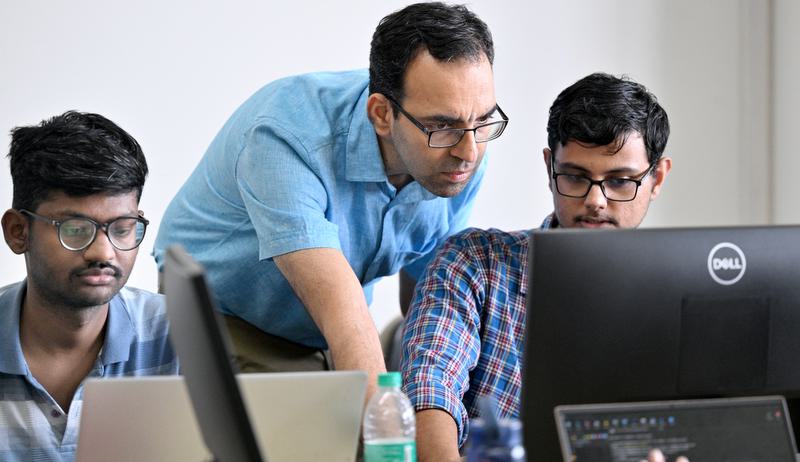
- 24 Sep 2025
In News:
India’s semiconductor ecosystem is witnessing a transformative shift — from being a consumer-driven electronics market to an emerging design and manufacturing hub. While the country’s large-scale semiconductor fabrication projects are still in early stages, the chip design sector is already thriving, positioning India as a critical player in the global semiconductor value chain.
Policy Framework: Semicon India Mission
The turning point came in 2021, when the Government of India launched the ?76,000 crore Semicon India Programme, aimed at developing India into a global hub for electronics design and manufacturing.
- Manufacturing Push:The mission provides 50% capital support for semiconductor fabrication (fab) and assembly, testing, marking, and packaging (ATMP/OSAT) facilities, with states adding 20–25% additional incentives.
- Ten major projects have been approved across Gujarat, Punjab, Uttar Pradesh, Odisha, Andhra Pradesh, and Assam.
- Notably, Micron’s ?22,500 crore ATMP facility in Gujarat is under construction and expected to begin operations in 2024.
- Design Support:The Design Linked Incentive (DLI) and Chips to Startup (C2S)programmes aim to nurture a new generation of semiconductor designers.
- The C2S initiative provides free access to high-end Electronic Design Automation (EDA) tools from Siemens, Cadence, and Synopsys, while targeting the training of 85,000 engineers in five years.
India’s Edge in Semiconductor Design
- India today accounts for 20% of the global semiconductor design workforce, hosting around 1.25 lakh chip designers who develop nearly 3,000 chips annually.
- Multinational firms like NVIDIA, Intel, AMD, and Qualcomm run large R&D operations from India, spread across Bengaluru, Hyderabad, Pune, and Noida.
- Even as the world faces a projected shortage of one million chip designers by 2030 (Deloitte), India’s deep talent pool offers a natural advantage.
- The country produces over 8 lakh engineering graduates annually, with around 5.7 lakh enrolled in electronics and related disciplines (2021–22).
Academia–Industry Collaboration: Bridging the Gap
- Despite government efforts, experts underline a persistent disconnect between academia and industry. Indian industries invest only 0.4% of profits in academic R&D, compared to 5–6% in the U.S. and South Korea.
- Strengthening collaboration — through joint research, funded Ph.D. programs, and internship pipelines — is essential to make graduates industry-ready and sustain innovation.
- Institutions like IITs, IISc, and IIITs have begun partnerships with leading toolmakers such as Synopsys, Lam Research, and Cadence to enable frontier-level projects at sub-10 nanometer design nodes.
Economic and Strategic Implications
- High-Value Employment: Semiconductor jobs have a multiplier effect of 6.7, driving indirect employment in allied sectors.
- Export Potential: Electronics exports are projected to quintuple by 2026, narrowing India’s trade deficit.
- Strategic Autonomy: Domestic chip capacity reduces dependence on foreign suppliers, vital for defence, telecom, and automotive sectors.
- Innovation Push: With rising patent filings and homegrown IP, India is consolidating its role in the global tech value chain.
Red-Necked Phalarope
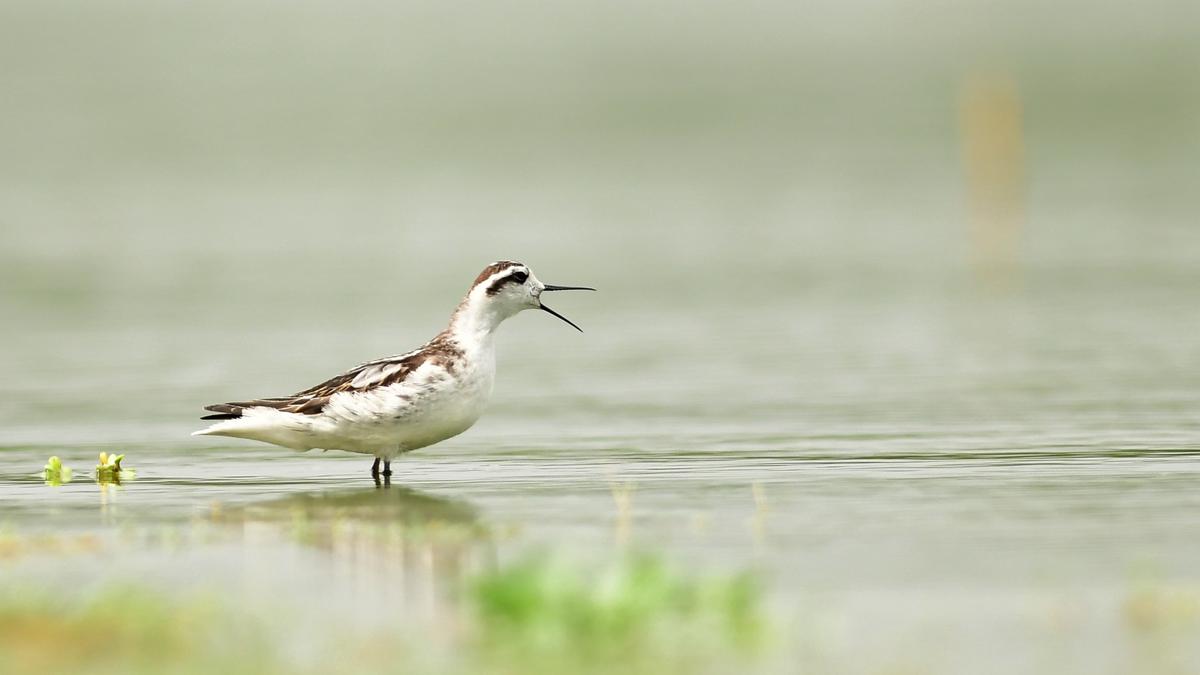
- 24 Sep 2025
In News:
In a notable development for ornithology and biodiversity conservation, the Red-necked Phalarope (Phalaropuslobatus), a rare migratory shorebird, has been sighted for the first time at the Nanjarayan Bird Sanctuary near Tiruppur, Tamil Nadu.
About the Red-Necked Phalarope
The Red-necked Phalarope is a small, migratory wader renowned for its unique feeding behavior and striking breeding plumage.
- Distinctive Feeding Behavior:It is known for its characteristic habit of spinning rapidly in circles on the water surface to stir up small invertebrates and plankton, which it then feeds upon.
- Physical Features:During the breeding season, the bird exhibits chestnut-red plumage extending from behind the ear to the sides of the neck — a feature that gives it its name.
Unusually among birds, the female is more brightly coloured than the male, and the species displays polyandrous behaviour (females mate with multiple males), with males incubating the eggs and caring for the chicks.
Distribution and Habitat
The Red-necked Phalarope has a circumpolar distribution, breeding in boreal and tundra zones between 60° and 70° latitude, across regions such as the Arctic coasts, Aleutian Islands, and northern Britain.
- During migration and the non-breeding season, it spends much of its time at sea, especially across:
- The Arabian Sea,
- Waters off central-west South America, and
- The central Indonesian to western Melanesian regions.
The recent sighting at Nanjarayan Bird Sanctuary — a vital inland wetland ecosystem — highlights the site’s growing importance as a stopover for migratory shorebirds along the Central Asian Flyway.
Conservation Status
- IUCN Red List:Least Concern
Despite being widespread globally, localized population declines have been observed due to habitat degradation, pollution, and climate-induced changes in migratory routes.
‘One-In, One-Out’ Migration Scheme
- 24 Sep 2025
In News:
- An Indian national has become the first person to be deported from the United Kingdom to France under the newly launched “one-in, one-out” migration scheme, part of the UK–France Returns Treaty.
- The deportation marks the beginning of a new bilateral arrangement aimed at curbing illegal cross-Channel migration and dismantling human smuggling networks operating between the two countries.
Background and Context
- The deported individual reportedly arrived in the UK illegally via the English Channel in early August 2025 aboard a small boat — one of the most common routes used by irregular migrants. He was subsequently detained and later flown from Heathrow to Paris on an Air France flight, under the provisions of the UK–France returns framework.
- The UK Home Office confirmed that upon arrival in France, the individual would be offered a voluntary, paid-for return to his home country. If he declines, he could face enforced deportation.
- The deportation comes amid a broader crackdown on illegal immigration in the UK, with reports indicating a sharp rise in Indian nationals detained in British immigration centres in recent months.
About the ‘One-In, One-Out’ Scheme
The “one-in, one-out” scheme is a bilateral deportation and migration management arrangement between the United Kingdom and France.
- Objective: To deter illegal small-boat crossings across the English Channel and disrupt human trafficking networks.
- Mechanism: For every illegal migrant returned by the UK to France, the UK will accept one legal asylum seeker from France — hence the name “one-in, one-out.”
- Implementation Period:August 2025 to June 2026, operating as a pilot programme subject to review.
- Provisions:
- Fast-track deportations for illegal entrants.
- Voluntary return option with financial assistance for deported migrants.
- Judicial oversight allowing courts to review last-minute appeals swiftly.
Significance of the Agreement
- Border Security: Strengthens the UK’s capacity to manage and deter illegal migration.
- International Cooperation: Demonstrates growing cross-border coordination between the UK and France on migration governance.
- Policy Shift: Reflects a move towards reciprocal responsibility in handling irregular migration.
- Political Impact: Reinforces the UK government’s tough stance on illegal immigration while maintaining humanitarian commitments.
Androth Anti-Submarine Warfare Ship
- 24 Sep 2025
In News:
- The Indian Navy has commissioned INS Androth, an indigenously built Anti-Submarine Warfare Shallow Water Craft (ASW-SWC), marking a significant milestone in strengthening India’s maritime security and self-reliance in defence production.
- Built by Garden Reach Shipbuilders & Engineers (GRSE), Kolkata, INS Androth is the second vessel in a series of eight ASW-SWCs being developed for the Navy.
Strategic Significance
- Named after Androth Island in the Lakshadweep archipelago, the ship’s designation underscores India’s commitment to safeguarding its maritime frontiers in the Arabian Sea and ensuring the security of critical sea lanes around the island territories.
- The induction comes at a time of growing Chinese naval presence in the Indian Ocean Region (IOR), adding a crucial layer of deterrence and surveillance to India’s coastal defence network.
Design and Capabilities
- INS Androth is designed for anti-submarine operations in shallow waters, coastal security patrols, and escort missions.
- It is 77 metres long and powered by diesel engine–waterjet propulsion, providing superior maneuverability in littoral and near-shore environments.
- Key onboard systems include:
- Advanced indigenous sonar and sensor suites for submarine detection and tracking.
- Lightweight torpedoes and ASW rockets for engaging underwater threats.
- 80% indigenous components, aligning with the ‘Aatmanirbhar Bharat’ initiative to reduce import dependence in defence production.
Operational Role
- The ship will primarily operate along India’s western seaboard, particularly around Lakshadweep, where it will conduct surveillance and deterrence missions against sub-surface threats.
- Its shallow-water design allows it to access areas that larger vessels cannot, enhancing the Navy’s reach in coastal and island territories.
India Re-elected to the Universal Postal Union’s Governing Bodies
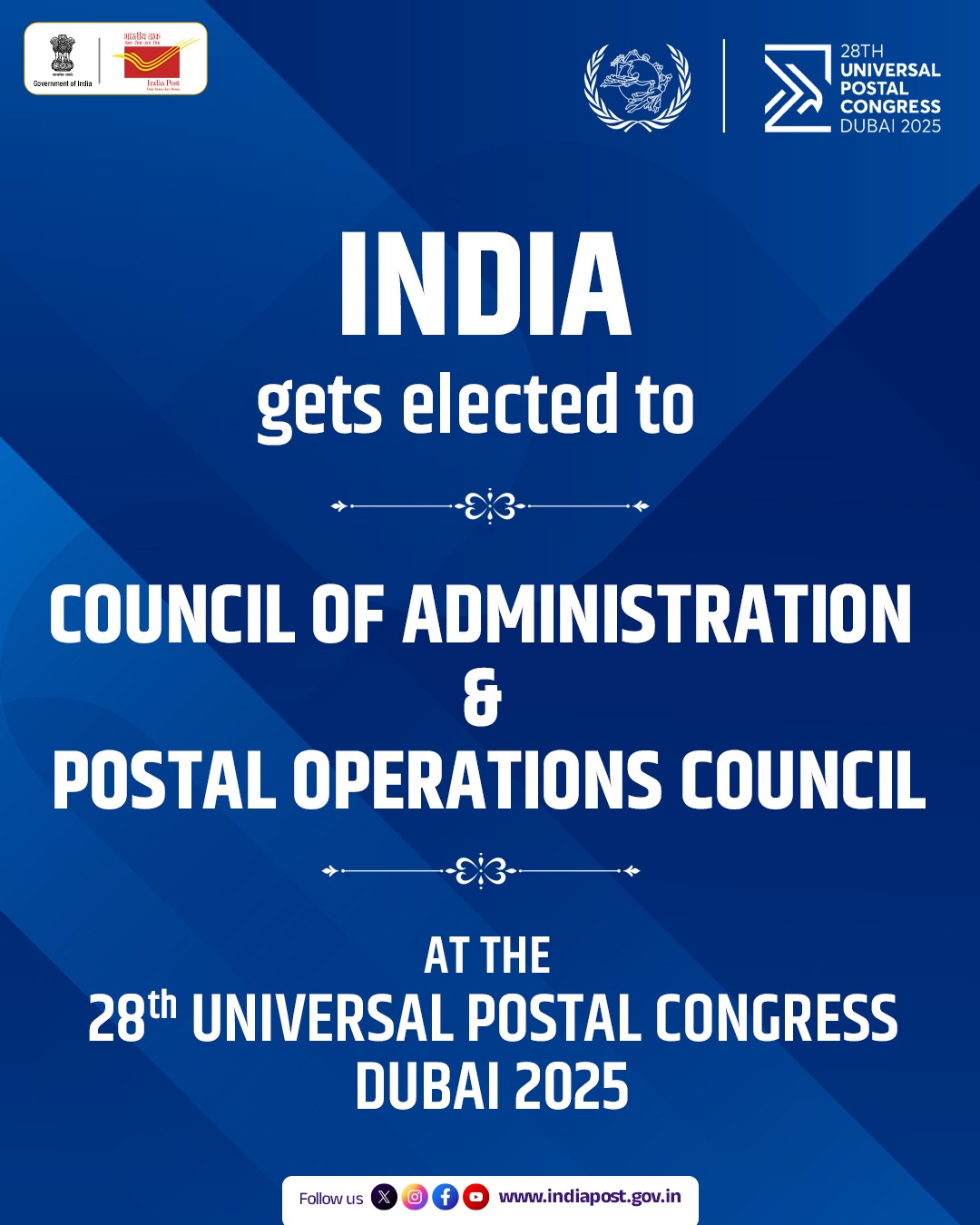
- 23 Sep 2025
In News:
- India has been re-elected to the Council of Administration (CA) and the Postal Operations Council (POC) of the Universal Postal Union (UPU) during the 28th Universal Postal Congress held in Dubai.
- This re-election reaffirms global confidence in India Post’s leadership, digital reforms, and commitment to inclusive postal development, strengthening India’s voice in shaping international postal governance.
About the Universal Postal Union (UPU)
- Founded: 1874 under the Treaty of Bern
- Headquarters: Berne, Switzerland
- Members: 192 countries
- Status: A specialized agency of the United Nations, it is the second-oldest international organization after the International Telecommunication Union (ITU).
Mandate and Objectives
- To promote global postal cooperation and ensure universal connectivity in mail and parcel delivery.
- To establish standards, regulations, and tariffs for international postal exchanges.
- To enhance efficiency, affordability, and reliability of postal services globally.
- To facilitate the growth of e-commerce and cross-border logistics through modern postal systems.
Governance Structure of UPU
The UPU functions through four key organs:
- Congress:
- The supreme decision-making body, convened every four years.
- Sets the long-term strategy, budget, and policy framework for global postal operations.
- Council of Administration (CA):
- Handles policy, legal, administrative, and regulatory issues between Congress sessions.
- Oversees the implementation of Congress decisions and coordinates global postal governance.
- Postal Operations Council (POC):
- The technical and operational body comprising 48 elected member countries.
- Works on service innovation, quality enhancement, digital integration, and modernisation of global postal systems.
- International Bureau:
- The secretariat of the UPU providing logistical, analytical, and technical support to member states and councils.
Significance of India’s Re-election
- Endorsement of Leadership: India’s re-election underscores the international community’s trust in its postal transformation, particularly in digital and financial inclusion.
- Modernisation Initiatives: India Post’s progress in e-commerce facilitation, postal banking, logistics efficiency, and technology-driven governance has positioned it as a model for developing nations.
- Strategic Representation: Through its roles in both CA and POC, India can influence policy formulation, standard setting, and capacity-building initiatives within the UPU.
- Global Collaboration: Reinforces India’s vision of “One World, One Postal Network”, aligning with its broader digital diplomacy and South-South cooperation goals.
India and the UPU: A Historical Perspective
- India joined the UPU in 1876, just two years after its establishment.
- Over the decades, it has played a constructive role in strengthening postal connectivity across the Global South.
- Under the leadership of the Ministry of Communications, India Post has transitioned from traditional mail delivery to offering digital, financial, and logistical services, supporting Digital India and Atmanirbhar Bharat missions.
Trump Imposes $100,000 Fee On H-1B Visas
- 23 Sep 2025
In News:
- In a significant policy shift, U.S. President Donald Trump signed a proclamation in October 2025 introducing a $100,000 (≈ ?88 lakh) sponsorship fee for H-1B visas, dramatically raising the cost for U.S. companies hiring foreign skilled workers.
- The move, presented as a measure to “protect American jobs,” marks one of the most stringent immigration-related economic policies in recent years and has wide-ranging implications for India’s IT sector, which remains the largest user of H-1B visas.
About the Policy
- New Regulation: U.S. employers sponsoring an H-1B worker must now pay a non-refundable fee of $100,000 per application, a steep increase from the earlier few-thousand-dollar processing cost.
- Official Objective: To ensure that only “highly skilled, non-substitutable” professionals are brought into the U.S., while deterring misuse of the program by firms replacing American workers with cheaper foreign labour.
- Rationale: According to the U.S. administration, the H-1B system is one of the most abused visa categories, often exploited by outsourcing companies to fill mid-level tech roles at lower wages.
Understanding the H-1B Visa
The H-1B is a non-immigrant U.S. work visa that allows companies to hire foreign professionals in specialty occupations requiring technical or theoretical expertise—mainly in STEM, finance, healthcare, and IT sectors.
- Introduced: Under the Immigration Act of 1990
- Eligibility: Bachelor’s degree or equivalent in a relevant field
- Tenure: Valid for 3 years, extendable up to 6 years (and beyond if Green Card process is ongoing)
- Quota: 65,000 general visas + 20,000 reserved for advanced U.S. degree holders
- Equal Pay Mandate: Employers must offer wages comparable to those of American workers to prevent labour exploitation
Applications are processed through the USCIS lottery system, which randomly selects qualified candidates.
Impact on India
1. Economic & Corporate Impact
- Cost Escalation: Indian IT majors like TCS, Infosys, and Wipro, which collectively sponsor thousands of H-1B employees annually, will face a steep rise in operational expenses.
- Reduced Hiring Abroad: Companies may shift high-skill operations back to India or relocate nearshore to countries such as Canada or Mexico to avoid the inflated cost.
- Automation Drive: Higher labour costs may accelerate automation and AI adoption within U.S. operations, reducing dependence on human capital from abroad.
2. Workforce & Migration Implications
- Major Beneficiaries Affected: Indians account for nearly 71% of all H-1B approvals, followed by China (≈12%).
- Extended Burden: Since most Indian professionals renew their H-1B multiple times due to the 10–15 year Green Card backlog, the cumulative cost will be enormous.
- Talent Diversion: The measure could divert Indian talent toward Canada, the EU, or Australia, which have relatively liberal skilled-migration policies.
‘Gold Card’ Visa Scheme
Alongside the H-1B fee hike, Trump announced a ‘Gold Card Visa Program’:
- Entry Fee: $1 million for individuals and $2 million for businesses.
- Objective: To attract “extraordinary individuals” capable of creating jobs and investments in the U.S. economy.
- Economic Rationale: The administration projects billions in revenue from the program to help reduce public debt and taxes.
- Selective Entry Policy: The move signals a shift from a skill-based to a wealth-based migration system, prioritizing elite entrepreneurs and investors over mid-level professionals.
Broader Policy Context
- The Trump administration has revived tougher citizenship tests, reinstating a 128-question civics and history exam (scrapped by the Biden government earlier), reflecting a wider push for restrictive immigration vetting.
- This marks a continuation of “America First” politics, emphasizing domestic employment protection and economic nationalism.
Implications for India–U.S. Relations
- Technology and Trade Impact: India’s $150+ billion IT export industry—largely dependent on U.S. markets—could face reduced competitiveness and project delays.
- Diplomatic Challenge: New Delhi must engage with Washington to safeguard the interests of Indian professionals and ensure that the visa restrictions do not spill over into bilateral technology and trade cooperation.
- Shift in Talent Dynamics: The policy could push India to strengthen domestic R&D ecosystems and negotiate reciprocal work mobility frameworks under trade agreements.
Global and Strategic Outlook
- Protectionism Resurgence: The policy aligns with a global trend of tightening skilled-migration channels amid economic uncertainty.
- Business Adaptation: U.S. tech firms like Amazon, Microsoft, Meta, and Google, which collectively secured over 25,000 H-1B approvals in early 2025, may now restructure hiring models or expand offshore R&D hubs in India.
- Brain Drain Reversal: Rising visa barriers could retain skilled manpower in India, strengthening domestic innovation capacity under initiatives like “Skill India 4.0” and “Startup India.”
India’s Manufacturing Momentum
- 23 Sep 2025
In News:
- India’s manufacturing sector has entered a phase of accelerated growth, driven by policy reforms, robust industrial performance, and rising global investor confidence.
- Recent data for July 2025 shows the Index of Industrial Production (IIP) growing 3.5% year-on-year, led by a 5.4% surge in manufacturing output.
- Simultaneously, the HSBC Manufacturing PMI reached 59.3, its highest in 16 months, signalling sustained expansion in factory activity and optimism among producers.
Current Performance Snapshot
|
Indicator |
Latest Data (2025) |
Trend/Significance |
|
IIP Growth |
3.5% (July 2025) |
Recovery in industrial output |
|
Manufacturing Growth |
5.4% |
Rising demand and capacity utilization |
|
Merchandise Exports (Apr–Aug) |
US$ 184.13 billion (+2.52% YoY) |
Strong export resilience |
|
Unemployment Rate |
5.1% (Male UR: 5.0%) |
5-month low; inclusive job growth |
|
FDI Inflows (FY25) |
US$ 81.04 billion (+14% YoY) |
Investor confidence improving |
|
Manufacturing FDI |
US$ 19.04 billion (+18%) |
Strengthening industrial base |
Engines of Growth
1. Electronics: Digital Factory Revolution
India’s electronics sector has witnessed exponential growth:
- Production rose from ?1.9 lakh crore (2014–15) to ?11.3 lakh crore (2024–25) — a 6x jump.
- Mobile phone manufacturing expanded from 2 units to over 300, while exports skyrocketed 127 times (?1,500 crore → ?2 lakh crore).
- Import dependence fell from 75% to 0.02%, reflecting strong domestic capacity.
- FDI inflow of US$ 4 billion since FY2020–21, largely under the PLI Scheme, has made India the world’s second-largest mobile manufacturer.
2. Pharmaceuticals: The Global Health Anchor
India ranks 3rd globally by volume and 14th by value in pharma production, supplying 50% of the world’s vaccines and 40% of U.S. generics.
- Projected to reach US$ 130 billion by 2030 and US$ 450 billion by 2047.
- Backed by PLI (?15,000 crore) and SPI (?500 crore) schemes for high-value drug manufacturing, quality enhancement, and R&D modernisation — consolidating India’s status as the “Pharmacy of the World.”
3. Automobiles: Driving Industrial Scale
The automotive sector contributes 7.1% to GDP and 49% of manufacturing GDP.
- In FY25, production exceeded 3.10 crore units, making India the 4th-largest automobile producer globally.
- GST 2.0’s tax reduction on vehicles and components is expected to boost consumer demand and accelerate production.
4. Textiles: Weaving Inclusive Growth
The textile and apparel industry contributes2.3% to GDP, 13% to industrial production, and 12% to exports, employing 45 million people.
- With a growth target of US$ 350 billion by 2030, the sector benefits from PM MITRA Parks (?4,445 crore), aimed at attracting ?70,000 crore investment and creating 20 lakh jobs.
- The recently inaugurated Dhar PM MITRA Park (Madhya Pradesh) is projected to generate 3 lakh jobs across 1,300 acres.
Investment, Employment, and Skills
- FDI Surge: Total inflows (2014–25) reached US$ 748.78 billion, up 143% from the previous decade.
- Top FDI sources: Singapore (30%), Mauritius (17%), U.S. (11%).
- Employment Creation: 17 crore jobs added over the last decade.
- Worker Population Ratio (WPR): 52.2% overall; Female WPR: 32%.
- Manufacturing’s job share: Up from 6% (2004–14) to 15% (2014–24).
- Skill Development Push: The Skill India 4.0 framework (?8,800 crore outlay) integrates major schemes (PMKVY 4.0, Apprenticeship, Jan ShikshanSansthan) to create an industry-aligned workforce equipped for Industry 4.0 technologies.
Policy Catalysts Powering the Surge
1. GST 2.0: Rationalisation for Growth
Launched in September 2025 under the banner “GST Bachat Utsav”, the reform simplifies tax slabs and lowers rates on 375+ items.
Impact on Manufacturing:
- Reduced Input Costs: 5% GST on packaging, textiles, and logistics lowers production expenses.
- MSME Boost: Faster refunds and simplified compliance enhance liquidity.
- Auto Sector Support: Lower taxes on small vehicles and parts drive consumption.
- Logistics Efficiency: Reduced GST on trucks and delivery vans enhances competitiveness.
2. National Manufacturing Mission (NMM)
The NMM provides a strategic, cross-ministerial roadmap integrating sustainability with industrial expansion. It promotes green manufacturing in solar PV, EV batteries, and hydrogen — aligning with India’s Net Zero 2070 goal.
3. Production Linked Incentive (PLI) Scheme
Covering 14 sectors with an outlay of ?1.97 lakh crore, the PLI scheme has:
- Boosted exports (e.g., smartphones > ?1 lakh crore in FY26 first half).
- Shifted pharma from trade deficit to surplus.
- Generated large-scale investments and jobs in electronics, autos, and medical devices.
4. National Logistics Policy (NLP)
Aims to reduce logistics cost (~13–14% of GDP) to single digits, improving LPI ranking to top 25 by 2030.
The PM GatiShakti Plan and Comprehensive Logistics Action Plan (CLAP) strengthen multi-modal connectivity and digital coordination.
5. Startup India & Industrial Corridors
- Over 1.91 lakh startups and 17.69 lakh direct jobs (as of 2025).
- 12 new industrial corridor projects worth ?28,602 crore approved to create smart, sustainable manufacturing cities.
Challenges Ahead
- Infrastructure Costs: Logistics remains costlier than global average, affecting export competitiveness.
- Skill Mismatch: Need for advanced training in automation, robotics, and AI.
- Regulatory Friction: Land and compliance issues constrain MSMEs.
- Global Headwinds: Trade protectionism and geopolitical volatility may disrupt export growth.
- Sustainability Imperative: Transition to low-carbon manufacturing critical to meet Net Zero goals.
Way Forward
- Plug-and-Play Manufacturing Parks: Accelerate park development with ready utilities for MSMEs.
- Skill India 4.0: Modernize ITIs, establish Centres of Excellence in robotics, AI, and green manufacturing.
- Tariff Rationalization: Lower duties on industrial raw materials to strengthen global competitiveness.
- Strengthen MSME Ecosystem: Provide concessional finance, technology upgradation, and global market access.
- Global Integration: Conclude FTAs (UK, EU) and join supply-chain alliances to diversify markets.
- Energy Diplomacy: Secure long-term access to crude oil, gas, and critical minerals.
Saudi–Pakistan Strategic Mutual Defence Agreement (SMDA)
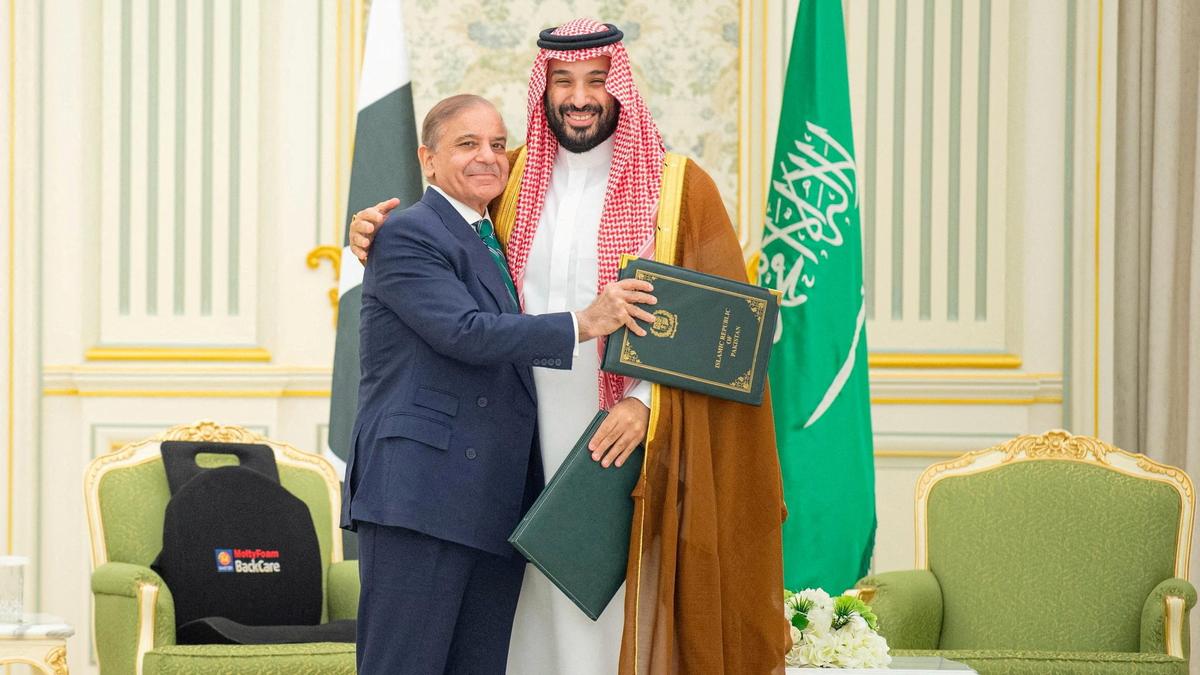
- 23 Sep 2025
In News:
- Recently, Saudi Arabia and Pakistan signed a Strategic Mutual Defence Agreement (SMDA) in Riyadh, formalising a long-discussed framework for joint defence and mutual security.
- The agreement, viewed as a landmark in bilateral ties, symbolises a renewed effort to institutionalise their security partnership amid changing regional dynamics and waning U.S. influence in West Asia.
Nature and Scope of the Pact
- The SMDA commits both nations to collective defence, stipulating that any attack on one country will be treated as an attack on both.
- It builds upon the 1982 Bilateral Security Cooperation Agreement, strengthening channels of military coordination, intelligence exchange, training, and arms trade.
- The pact extends across conventional defence cooperation, advisory roles, and — in principle — joint deterrence, though not explicitly nuclear.
Strategic Context
- The timing of the agreement follows rising regional uncertainty, including Israel–Qatar tensions, Yemen conflict spillovers, and Iran–Saudi rivalry.
- By signing the SMDA, Riyadh signals its intent to pursue greater regional self-reliance in defence, moving beyond full dependence on the U.S. security umbrella.
- For Pakistan, it secures much-needed economic and energy support from Saudi Arabia amid a deep fiscal crisis, while reaffirming its role as a key security partner in the Islamic world.
Key Drivers
- Mutual Security Assurance: Establishes a framework for joint deterrence and defence coordination.
- Economic Complementarity: Opens avenues for Saudi financial assistance, arms procurement, and energy trade with Pakistan.
- Symbolic Islamic Solidarity: Positions Pakistan as a pan-Islamic security contributor, enhancing its strategic visibility.
- Regional Rebalancing: Demonstrates Saudi Arabia’s effort to diversify security partnerships beyond Washington and regional blocs.
Implications
1. For India
- Strategic Caution: While the pact theoretically enables Pakistan to seek Saudi backing in a potential India–Pakistan confrontation, Riyadh’s growing ties with India — including $42.9 billion in bilateral trade, defence collaboration, and major investments — make an overt anti-India stance unlikely.
- Diplomatic Opportunity: New Delhi can leverage its energy and economic partnerships to maintain Saudi neutrality in South Asian affairs.
- Policy Imperative: India must sustain strategic dialogue and ensure Arab neutrality in regional crises through proactive diplomacy.
2. Regional and Global Dimension
- Shift in Gulf Security Architecture: Reflects a decline in U.S. dominance and emergence of a multipolar Gulf order, with Riyadh exploring independent alliances.
- Iran–Saudi–Pakistan Equation: Enhances Saudi deterrence posture against Iran, Yemeni Houthis, and potentially Israel’s unilateral actions.
- Nuclear Sensitivities: Raises concerns about possible nuclear collaboration, though the actual transfer of Pakistani nuclear technology to Saudi Arabia remains highly improbable, constrained by global non-proliferation norms and Israeli sensitivities.
Way Forward for India
- Deepen Defence and Security Cooperation: Expand joint training, exercises, and intelligence exchanges with Saudi Arabia.
- Energy Diplomacy: Pursue long-term crude oil and green hydrogen partnerships to consolidate interdependence.
- Strategic Monitoring: Closely track SMDA implementation, including possible Pakistani troop deployments or defence projects.
- Maritime Synergy: Strengthen India’s presence in the Arabian Sea through naval cooperation to protect vital energy routes.
- Economic Leverage: Utilize India’s market potential and diaspora network as stabilising anchors in Indo-Saudi relations.
GST 2.0
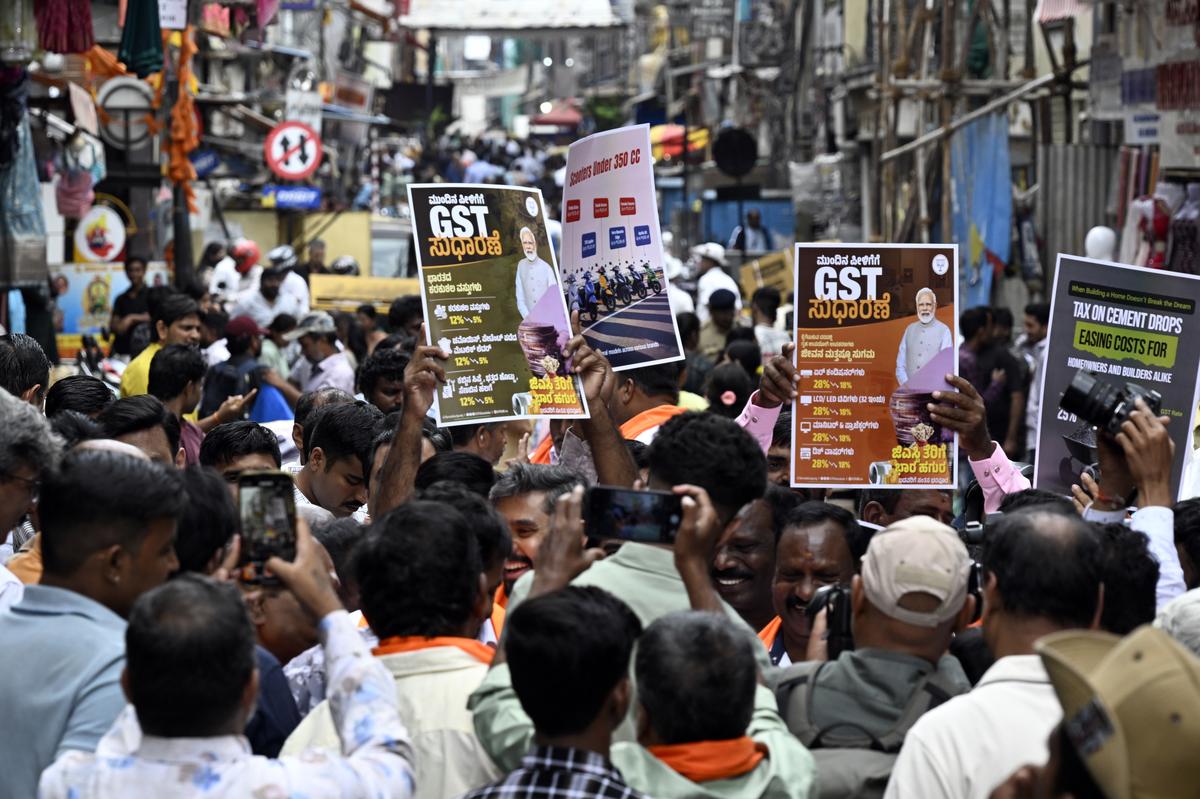
- 23 Sep 2025
In News:
The Government of India launched GST 2.0, marking a significant revamp of the Goods and Services Tax framework. Prime Minister Narendra Modi described the initiative as the “GST Bachat Utsav”, highlighting its focus on savings, simplicity, and growth.
Overview
- GST 2.0 represents the most comprehensive reform since the introduction of the Goods and Services Tax in 2017.
- It focuses on rationalising tax rates, reducing compliance burden, and boosting consumption and investment by lowering tax rates on more than 375 items.
Objectives
- Enhance household savings: By cutting rates on essential goods and services, it seeks to leave more disposable income with consumers, thereby stimulating demand.
- Simplify the tax framework: Aligns similar goods under the same slab to minimise disputes and litigation.
- Promote ease of doing business: Reduces procedural complexities and enhances transparency through digital solutions.
Key Features
- Simplified Tax Structure:Moves towards a broad two-slab system—5% (merit rate) and 18% (standard rate)—with a 40% slab for demerit or luxury goods.
- Consumer-Centric Relief:Tax reductions on essential food items, life and health insurance, and beauty and wellness services.
- Technology-Driven Compliance:Introduces digital registration, pre-filled returns, and automated refund systems, including 90% provisional refunds for Integrated Dispute Settlement (IDS) cases.
- Input-Output Correction:Aligns related goods under the same tax bracket to avoid input-output tax mismatches.
- Support for Key Sectors:Rate cuts to encourage investment and growth in textiles, agriculture, construction, and services industries.
Revised Tax Slabs
|
Rate |
Category / Examples |
|
0.25% |
Rough diamonds, precious stones |
|
1.5% |
Cut and polished diamonds |
|
3% |
Precious metals (gold, silver, pearls) |
|
5% |
516 items including food, agricultural machinery, medical devices, hydrogen vehicles, health & life insurance, salons |
|
18% |
640 items including machinery, chemicals, paints, automobile parts, small cars/bikes |
|
40% (Demerit Rate) |
Pan masala, tobacco, aerated beverages, luxury yachts, private aircraft, high-end vehicles |
|
Special Provision |
Bricks remain under dual option — 6% (without ITC) or 12% (with ITC) |
Significance: GST 2.0 is expected to spur demand, enhance compliance, and boost industrial growth, positioning India’s indirect tax system among the most simplified globally.
Iridogorgia Chewbacca
- 22 Sep 2025
In News:
Marine scientists have identified a new species of deep-sea coral, named Iridogorgiachewbacca, after the iconic Star Wars character Chewbacca. The name was inspired by the coral’s long, curly, and “hairy” branches resembling the furry appearance of the Wookiee warrior from the franchise.
Discovery and Habitat
- The coral was first observed in 2006 off the coast of Moloka?i (Hawaii) and later near the Mariana Trench in 2016, within the tropical western Pacific Ocean.
- It has now been officially described and classified as a new species in the genus Iridogorgia, following extensive research and genetic testing conducted by an international team of scientists, including Professor Les Watling from the University of Hawai?i at M?noa.
- The discovery was formally published in the scientific journal Zootaxa, highlighting its contribution to deep-sea biodiversity research.
About Iridogorgiachewbacca
- Taxonomy: Belongs to the genus Iridogorgia under the class Anthozoa, a group of deep-sea soft corals.
- Physical Features:Characterised by long, flexible, spiral-like branches with a shiny surface that reflects light in unique ways. These hair-like branches give it a distinct “furry” appearance.
- Growth Pattern: The coral grows upright and solitary on deep-sea rocky substrates, often hundreds to thousands of metres below sea level.
- Colony Structure: Each coral colony is made up of thousands of small polyps working together as a single organism.
Scientific Significance
The identification of Iridogorgiachewbacca underscores the vast biodiversity of the deep ocean, much of which remains unexplored. Even in relatively well-studied regions such as the western Pacific, new species continue to be discovered, highlighting the importance of deep-sea research and conservation.
Understanding Corals
- Biological Nature: Corals are marine animals, not plants, and remain sessile (attached to the seabed).
- Symbiotic Relationship: They coexist with microscopic algae called zooxanthellae, which provide nutrients through photosynthesis.
- Feeding: Corals also use their tiny, tentacle-like structures to capture food particles from the surrounding water.
- Ecological Role: Coral ecosystems support immense marine biodiversity, acting as habitats, breeding grounds, and protection zones for numerous marine species.
Why It Matters
- Expands scientific understanding of deep-sea ecosystems and their unique biodiversity.
- Reinforces the need for marine conservation amid increasing threats from deep-sea mining, climate change, and ocean acidification.
- Demonstrates how popular culture references can enhance public engagement with scientific discoveries, making marine science more accessible.
Pradhan Mantri Mudra Yojana (PMMY)
- 22 Sep 2025
In News:
Launched in 2015, the Pradhan Mantri Mudra Yojana (PMMY) is a flagship financial inclusion initiative of the Government of India. The scheme seeks to provide affordable credit to micro and small enterprises (MSEs) engaged in non-farm income-generating activities, thereby integrating them into the formal financial ecosystem.
Objective
- PMMY aims to “fund the unfunded” by facilitating access to institutional credit for small entrepreneurs who traditionally lack collateral or formal financial history.
- The scheme empowers these enterprises through loans provided by Public Sector Banks (PSBs), Regional Rural Banks (RRBs), Cooperative Banks, Private Banks, Foreign Banks, Micro Finance Institutions (MFIs), and Non-Banking Financial Companies (NBFCs).
Key Features and Loan Details
- Loan Amount: Up to ?10 lakh for non-farm income-generating activities across sectors such as manufacturing, processing, trading, and services.
- Eligibility: Any Indian citizen with a viable business plan for such activities can apply for a MUDRA loan through approved institutions.
- Subsidy: PMMY does not directly offer subsidies; however, if linked to other government schemes with capital subsidies, those benefits can be availed concurrently.
Categories of MUDRA Loans
|
Category |
Loan Range |
Target Group |
|
Shishu |
Up to ?50,000 |
New or micro enterprises in the early stage |
|
Kishore |
?50,000 – ?5 lakh |
Businesses seeking growth or consolidation |
|
Tarun |
?5 lakh – ?10 lakh |
Enterprises looking to expand operations |
Achievements under MUDRA 1.0
- Credit Outreach: Over ?27.75 lakh crore has been disbursed to nearly 47 crore beneficiaries, expanding access to formal credit for small entrepreneurs.
- Social Inclusion: Around 69% of loan accounts are held by women, while 51% belong to SC, ST, and OBC categories — strengthening financial inclusion and social equity.
- Employment Generation: The scheme has spurred job creation and self-employment, particularly in rural and semi-urban areas, fostering local entrepreneurship and economic decentralisation.
Vision for MUDRA 2.0
To further enhance the scheme’s reach and impact, the proposed MUDRA 2.0 envisions the following reforms:
- Wider Outreach: Greater focus on underserved rural and semi-urban regions through digital platforms and community-level facilitation.
- Financial Literacy & Mentorship: National-level programmes to improve awareness about budgeting, savings, digital transactions, and credit management to ensure sustainable enterprise growth.
- Enhanced Credit Guarantee Scheme (ECGS): A robust guarantee mechanism to minimise lender risk and encourage more credit flow to micro enterprises.
- Real-Time Monitoring Framework: Technology-driven systems for tracking disbursal, utilisation, and repayment to ensure transparency and reduce misuse.
- Impact Evaluation: Periodic socio-economic assessments to measure outcomes on income generation, employment, and business viability.
Adamya Fast Patrol Vessel
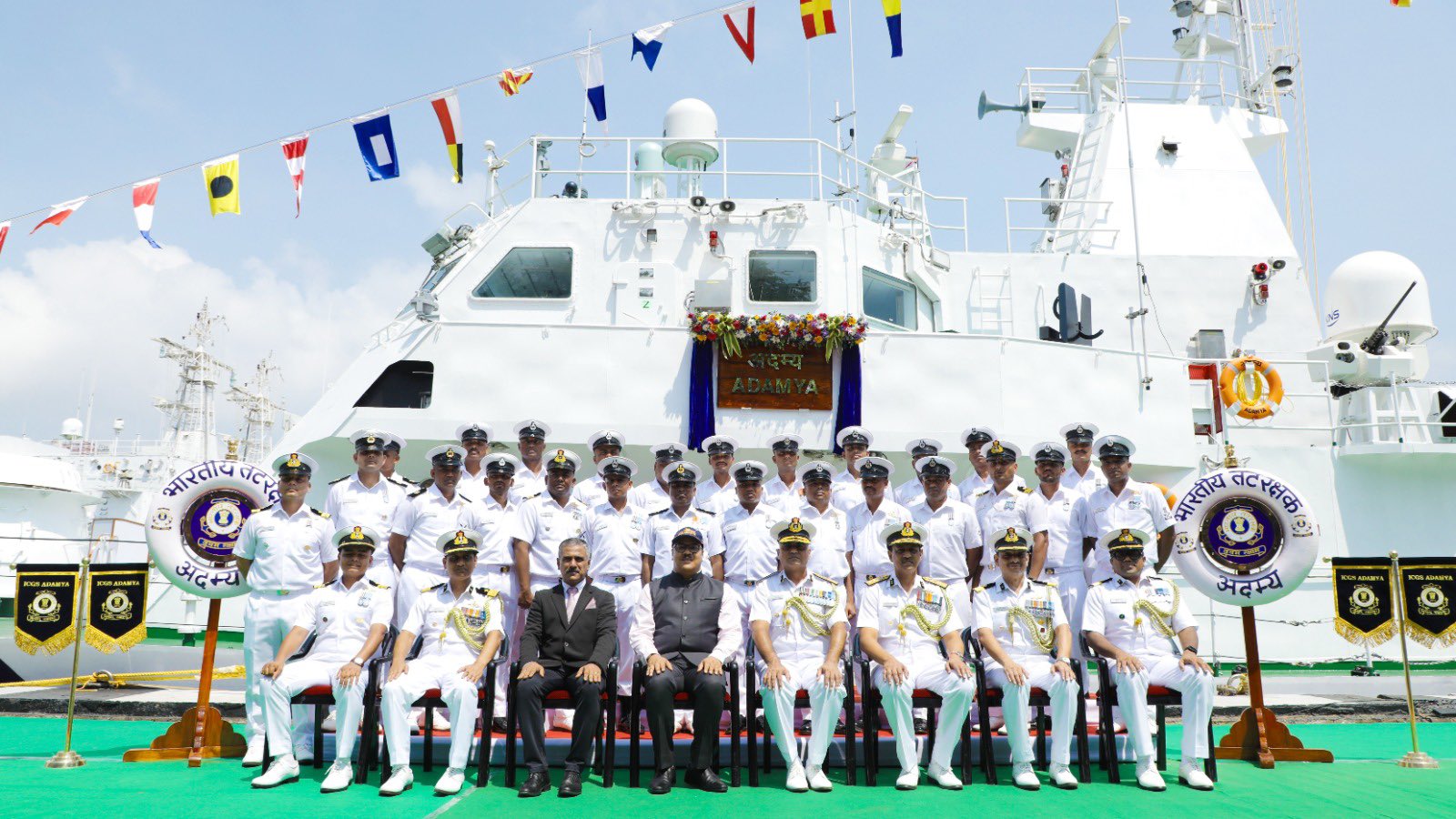
- 22 Sep 2025
In News:
The Indian Coast Guard Ship (ICGS) Adamya, the first in a new series of eight Adamya-class Fast Patrol Vessels (FPVs), was commissioned at Paradip Port, Odisha. The vessel, designed and built indigenously by Goa Shipyard Limited (GSL), marks another step forward in India’s Aatmanirbhar Bharat initiative in the defence sector.
About ICGS Adamya
- Meaning: “Adamya” translates to indomitable, symbolizing the Indian Coast Guard’s (ICG) resolve to safeguard the nation’s maritime interests.
- Operational Base: The ship will be based at Paradip, Odisha, under the administrative control of the Commander, ICG Region (North East).
- Crew Strength: The vessel is manned by five officers and 34 personnel.
- Primary Role: Coastal surveillance, anti-smuggling operations, anti-poaching patrols, and search and rescue missions within India’s maritime zones.
Key Specifications
|
Feature |
Specification |
|
Displacement |
Approx. 320 tons |
|
Speed |
Maximum 28 knots |
|
Endurance |
1500 nautical miles at economical speed |
|
Propulsion |
Two 3000 KW diesel engines |
|
Builder |
Goa Shipyard Limited |
|
Indigenous Content |
Over 60% |
Technological Highlights
- First-of-its-kind Propulsion:The Adamya is the first Indian vessel fitted with indigenously developed Controllable Pitch Propellers (CPPs) and gearboxes, enhancing manoeuvrability and fuel efficiency.
- Advanced Systems:Equipped with an Integrated Bridge System (IBS), Integrated Platform Management System (IPMS), and Automated Power Management System (APMS) to improve operational efficiency and automation.
- Weaponry:Armed with a 30 mm CRN 91 gun and two 12.7 mm stabilized remote-controlled machine guns, supported by advanced fire-control systems.
About Fast Patrol Vessels (FPVs)
Fast Patrol Vessels are medium-sized, high-speed ships used by the Indian Coast Guard for surveillance, policing, and search and rescue operations in coastal areas. They play a vital role in maintaining maritime safety, enforcing laws, and preventing smuggling and infiltration.
SwasthNari, SashaktParivarAbhiyaan
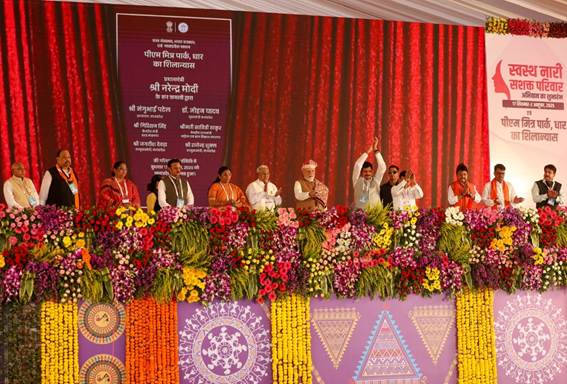
- 22 Sep 2025
In News:
Recently, Prime Minister Narendra Modi launched the ‘SwasthNari, SashaktParivar (SNSP) Abhiyaan’ and the 8thRashtriyaPoshanMaah from Dhar, Madhya Pradesh, marking one of India’s largest-ever health outreach campaigns for women and children. The initiative reflects the government’s commitment to promoting women-led development and holistic family well-being through accessible and equitable healthcare.
About the SwasthNari, SashaktParivarAbhiyaan
- The SNSP Abhiyaan is a joint initiative of the Ministry of Health & Family Welfare (MoHFW) and the Ministry of Women & Child Development (MoWCD).
- It aims to provide preventive, promotive, and curative health services to women and children, particularly in underserved regions.
- The campaign will organize over 10 lakh health camps between 17th September and 2nd October 2025 at Ayushman Arogya Mandirs, Community Health Centres (CHCs), District Hospitals, and other public health facilities across the country.
- This mass mobilisation aligns with the broader vision of Viksit Bharat (Developed India), where “Nari Shakti” (women power) forms the foundation of national progress.
Key Objectives
- Enhance Women’s Health through Screening and Care:Regular health check-ups for women, focusing on non-communicable diseases (NCDs) such as hypertension, diabetes, cancer, anaemia, tuberculosis, and sickle cell disease.
- Promote Maternal and Child Well-being:Strengthening antenatal care, immunisation, nutrition counselling, menstrual hygiene awareness, and adolescent health initiatives.
- Foster Behavioural Change and Health Education:Conducting awareness drives on healthy lifestyle practices, mental health, obesity prevention, and voluntary blood donation.
- Encourage Community Participation:Mobilisation through ASHAs, ANMs, Anganwadi workers, Self-Help Groups (SHGs), Panchayati Raj Institutions (PRIs), MY Bharat volunteers, and youth networks.
- Integrate Digital and Media Outreach:Real-time monitoring through the SASHAKT Portal, along with mass awareness via Doordarshan, All India Radio (AIR), and social media platforms.
Implementation Framework
- Nationwide Health Camps:Health facilities at all levels — from Ayushman Arogya Mandirs to tertiary hospitals — will provide free diagnostic tests, medicines, and specialist consultations.
- Specialist Services:Departments such as Gynaecology, Paediatrics, Ophthalmology, ENT, Dental, Dermatology, and Psychiatry will extend services through AIIMS, ESIC hospitals, Railway and Defence hospitals, and Institutes of National Importance (INIs).
- Public–Private Collaboration:Private hospitals and medical institutions have been encouraged to contribute to the outreach, ensuring broader reach and continuity of care.
- Community Health Monitoring:Volunteer initiatives like Nikshay Mitra will support tuberculosis prevention, while local youth networks promote healthy practices at the grassroots level.
Focus on Sickle Cell Anaemia
- During the launch, the Prime Minister handed over the 1 croreth Sickle Cell Card, underscoring the government’s National Sickle Cell Anaemia Mission. Over 5 crore individuals have been screened so far, especially in tribal-dominated regions, where the disease burden is highest. The mission aims at eliminating Sickle Cell Anaemia by 2047, ensuring improved tribal health outcomes.
Institutional and Grassroots Coordination
- Chief Ministers, Governors, Union Ministers, and local representatives across states participated in the launch events simultaneously. Ground-level implementation is being led by health workers, SHGs, PRIs, and community volunteers, ensuring last-mile outreach and inclusive participation.
Significance
- Largest Health Outreach in India: Over 10 lakh health camps make it the widest public health drive for women and children.
- Women-Centric Development: Strengthens India’s shift toward women-led welfare models under the vision of Viksit Bharat.
- Integrated Governance Model: Combines health, nutrition, and social empowerment across multiple ministries.
- Public Health Transformation: Promotes preventive healthcare, early detection, and equitable access to medical services.
- Focus on Tribal and Rural Health: Addresses critical health challenges in vulnerable and remote regions.
Kurmi Community
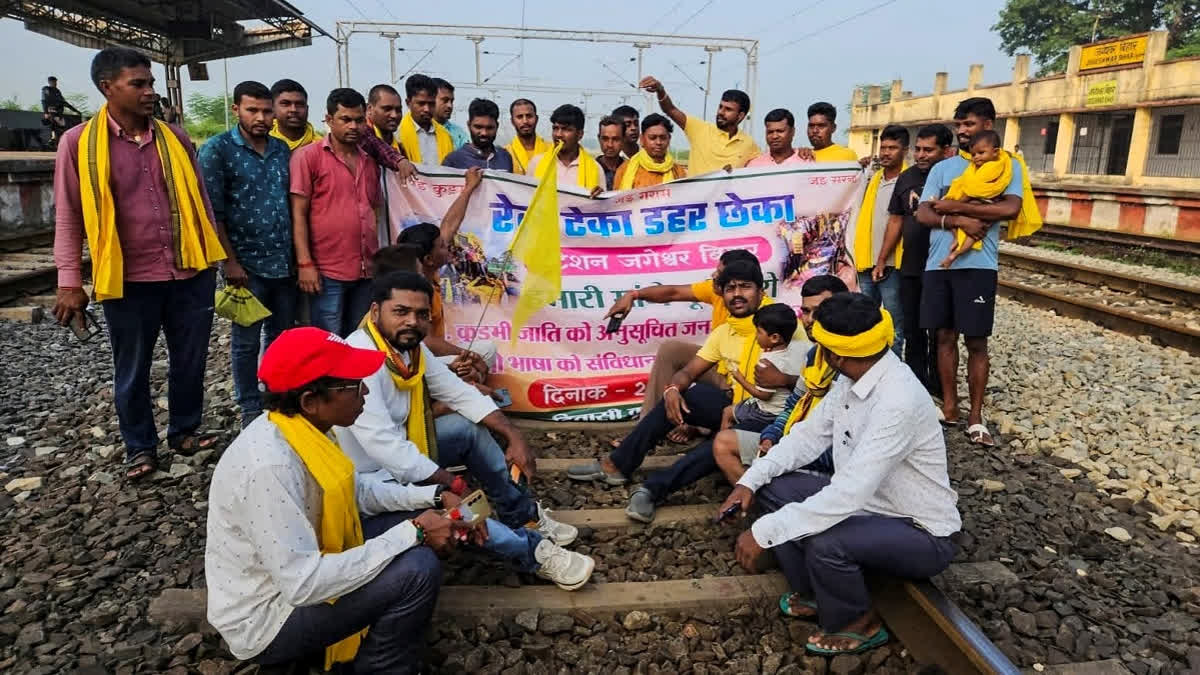
- 22 Sep 2025
In News:
Defying prohibitory orders, members of the Kurmi community in Jharkhand launched a rail blockade across several stations to demand Scheduled Tribe (ST) status and the inclusion of the Kurmali language in the Eighth Schedule of the Constitution. The agitation, organized under the banner of the Adivasi KurmiSamaj (AKS), disrupted train services across the South Eastern and East Central Railway divisions.
About the Kurmi Community
- Origins and Identity:The Kurmis (also known as Kunbi in some regions) are traditionally an agricultural community, predominantly Hindu, found across eastern Uttar Pradesh, southern Awadh, Bihar, Jharkhand, and parts of Odisha.The name “Kurmi” is derived from the Sanskrit word “Krishi” (agriculture), symbolizing their deep connection with farming.
- Historical Background:Historically, Kurmis are believed to be descendants of Kshatriya warriors who took to agriculture. Renowned for their hard work, soil management, and egalitarian culture, the community was lauded by both Mughal and British administrators for its agrarian contributions.
- Social Status:Currently, Kurmis are classified as Other Backward Class (OBC) in most Indian states. However, the community contends that their socio-cultural roots align more closely with tribal heritage, warranting ST recognition.
- Sub-Groups and Culture:The community is divided into several gotras (clans), including Chandel, Chauhan, Solanki, Tomar, Baghel, and Sengar. They are known for maintaining strong community networks and gender-inclusive social practices.
About the Kurmali Language
- Linguistic Affiliation:Kurmali belongs to the Indo-Aryan language family and is primarily spoken in Jharkhand, Bihar, and Odisha.
- Cultural Significance:It serves as a marker of Kurmi identity and is used in folk traditions, oral histories, and local communication.
- Demand for Recognition:Inclusion in the Eighth Schedule would ensure state-supported promotion, education, and preservation of the language, similar to other recognized regional languages.
Government Response and Implications
The Jharkhand administration has maintained a cautious approach, emphasizing the need for maintaining law and order while acknowledging the sensitivity of the community’s demands.The demand for ST status involves constitutional and demographic considerations, requiring evaluation by the Ministry of Tribal Affairs and approval by Parliament under Article 342 of the Constitution.
Gulf of Finland
- 21 Sep 2025
In News:
Estonia recently accused Russia of violating its airspace when three Russian MiG-31 fighter jets entered Estonian airspace over the Gulf of Finland, remaining there for approximately 12 minutes. The incident has heightened tensions between NATO and Russia, as Estonia is a NATO member and takes airspace security seriously in the strategically sensitive region.
About the Gulf of Finland
- Geography: The Gulf of Finland is the easternmost extension of the Baltic Sea, covering an area of 30,000 sq.km. It stretches 400 km from east to west and 19–130 km from north to south.
- Borders:
- North: Finland (including the capital, Helsinki)
- South: Estonia (including the capital, Tallinn)
- East: Russia (including St. Petersburg at the eastern tip)
- Physical Features:
- Average depth: 38 m
- Brackish water with low salinity (~6 ppt)
- Freezes over 3–5 months in winter
- Receives inflows from the Neva and Narva rivers and the Saimaa Canal
- Contains numerous banks, skerries, and islands, including Kotlin Island (Kronstadt), Beryozovye Islands, Lisiy Island, MalyVysotsky Island, among others.
- Climate: Humid continental, characterized by hot summers and relatively harsh winters.
Strategic Significance
The Gulf of Finland is strategically vital due to its location at the eastern edge of the Baltic Sea, proximity to major cities such as Helsinki, Tallinn, and St. Petersburg, and its role as a maritime and military corridor. The airspace and naval routes over the gulf are closely monitored by NATO and Russia, making any unauthorized incursion a serious geopolitical concern.
Implications
- For Estonia: The violation underscores the need for heightened air defense readiness along its borders.
- For NATO: The incident exemplifies the ongoing airspace tensions with Russia, reflecting broader geopolitical frictions in Northern Europe.
- For Russia: Demonstrates strategic airpower projection and interest in asserting influence over the Baltic region.
Yellow-Crested Cockatoos
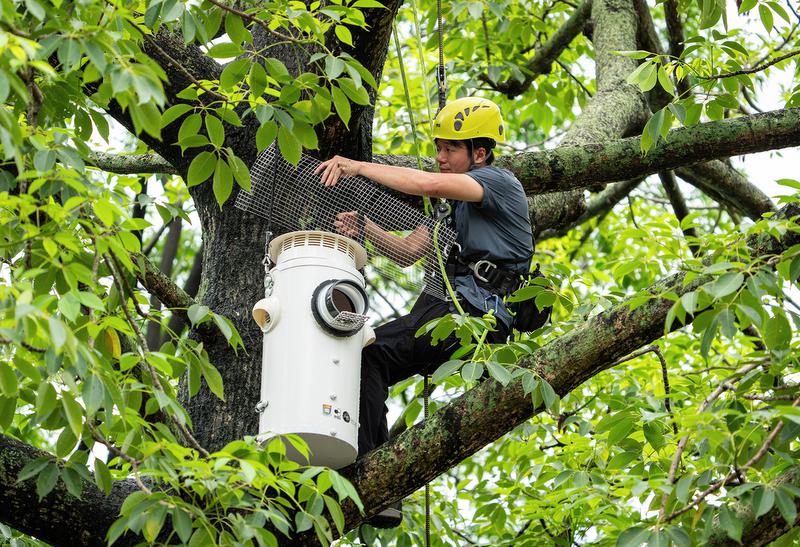
- 21 Sep 2025
In News:
Critically endangered yellow-crested cockatoos (Cacatuasulphurea) have established an unexpected refuge among Hong Kong’s urban landscape, including its parks and university campuses. Once native to Indonesia and East Timor, these snow-white birds with striking yellow crests now face multiple survival challenges, both globally and locally.
Population and Distribution
- The global wild population of yellow-crested cockatoos is estimated at up to 2,000 mature individuals, with around 10% residing in Hong Kong, largely as descendants of released or escaped caged birds.
- Historically, the species was widespread across central and eastern Indonesia and East Timor, but habitat loss has led to dramatic declines on many islands.
- In Hong Kong, they have adapted to urban life but depend on tree cavities for nesting, similar to their natural habitats.
Ecology and Behavior
- Appearance: Medium-sized cockatoo, predominantly white plumage, with a yellow or orange retractable crest.
- Habitat: Forests, forest edges, scrublands, and cultivated areas from sea level up to 1,500 meters.
- Diet: Omnivorous—seeds, fruits, nuts, berries, occasionally insects, small reptiles, and roots.
- Social Behavior: Monogamous, gregarious, and capable of mimicking sounds.
- Breeding Season: September to May.
Threats to Survival
- Habitat Loss: Typhoons, deforestation, and government-led tree trimming in urban areas reduce natural nesting sites.
- Illegal Pet Trade: Poaching continues to threaten wild populations in native habitats.
- Climate Change: Rising temperatures dry out forests, increasing susceptibility to fires and other environmental stresses.
Conservation Initiatives
To counter declining nesting opportunities, Hong Kong conservationists have implemented a practical solution: artificial nest boxes that replicate natural tree cavities.
Aflatoxin
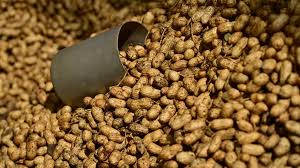
- 21 Sep 2025
In News:
Indian exporters have expressed concerns regarding delays by Indonesia in notifying aflatoxin contamination detected in groundnut shipments from India. This has raised issues about trade compliance and the need for timely communication in international agricultural trade.
Understanding Aflatoxins
- Aflatoxins are highly toxic substances classified as mycotoxins, produced by certain species of fungi. The main fungi responsible are Aspergillus flavus and Aspergillus parasiticus, which belong to the broader Aspergillus group.
- These fungi primarily thrive on agricultural crops, but can also be found in soil, decaying food, and compost. They develop as spores and form networks of microscopic filaments capable of growing on products such as grains, nuts, and other food items.
Sources and Conditions of Contamination
- Aflatoxin contamination commonly occurs in groundnuts, tree nuts, maize, rice, figs, spices, crude vegetable oils, and cocoa beans.
- Contamination can happen before harvest or during storage, especially in warm and humid conditions, which favor fungal growth.
Health Implications
Aflatoxins are genotoxic and carcinogenic, posing serious health risks to both humans and animals. Long-term exposure may lead to liver damage, immunosuppression, and increased cancer risk.
Modes of Human Exposure
- Dietary Intake: Consuming contaminated plant products like peanuts or animal products (meat, milk) from animals fed contaminated feed.
- Occupational Exposure: Farmers, processors, and other agricultural workers may inhale dust containing fungal spores during handling, harvesting, or processing contaminated crops.
This incident underscores the importance of stringent quality control and timely international reporting to prevent health risks and maintain confidence in agricultural trade.
Registered Unrecognised Political Parties (RUPPs)
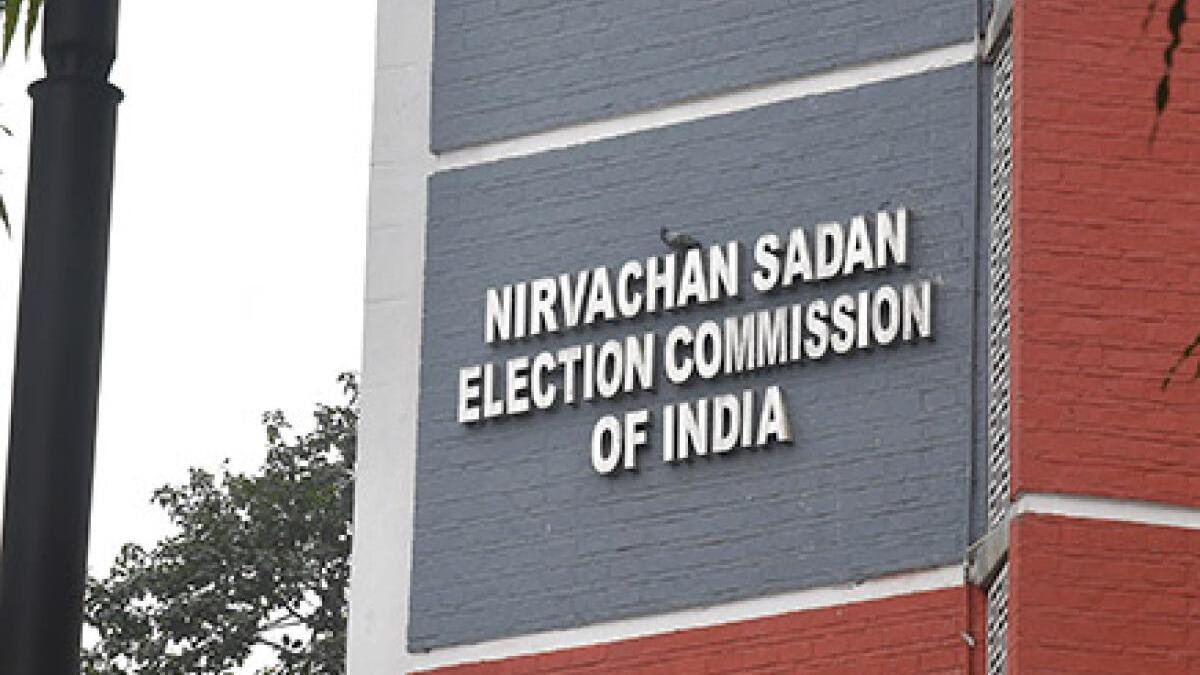
- 21 Sep 2025
In News:
The Election Commission of India (ECI) has de-listed 474 Registered Unrecognised Political Parties (RUPPs) for failing to comply with statutory norms, including not contesting elections in the last six years, as part of its ongoing efforts to clean up the electoral system. This move follows the first phase of de-listing, which removed 334 RUPPs.
About Registered Unrecognised Political Parties (RUPPs)
RUPPs are political entities that are registered with the ECI under Section 29A of the Representation of the People Act (RPA), 1951 but do not yet qualify as state or national parties. They may fall into the following categories:
- Newly registered parties.
- Parties that have not secured sufficient votes to gain state-level recognition.
- Parties that have never contested elections since registration.
Benefits for RUPPs include:
- Tax exemptions under Section 13A of the Income Tax Act, 1961.
- Eligibility for common poll symbols, subject to fielding at least 5% of candidates in state assembly elections.
- Permission to nominate up to 20 ‘star campaigners’ for election canvassing.
Obligations include:
- Contesting elections periodically.
- Filing annual audited accounts and contribution reports.
- Disclosing donations exceeding Rs. 20,000 and restricting cash donations above Rs. 2,000.
Failure to meet these obligations can result in de-listing, as seen in the recent action by the ECI.
Registration and Recognition of Political Parties
Political parties in India are registered with the ECI to avail legal and electoral benefits, including:
- Acceptance of voluntary contributions from individuals and private entities (except government companies).
- Preference in allotment of election symbols to candidates.
- Tax exemptions on donations under Section 13A of the Income Tax Act.
Registered parties that meet additional criteria may gain recognition as State or National Parties, with exclusive privileges:
- Reservation of a unique election symbol.
- Access to free broadcast facilities on Doordarshan and All India Radio.
- Higher campaign expenditure allowances.
- Free copies of electoral rolls before elections.
Criteria for Recognition
State Party: A political party is recognized as a state party if it meets any of the following conditions:
- Wins 3% of seats in the Legislative Assembly in general elections.
- Wins one Lok Sabha seat for every 25 seats allotted to the state.
- Secures at least 6% of votes in a state and wins one Lok Sabha or two Legislative Assembly seats.
- Secures 8% of votes in a state in Lok Sabha or Assembly elections.
National Party: A political party is recognized as a national party if it satisfies any of the following:
- Secures 6% of votes in four or more states in Lok Sabha or Assembly elections and has at least four Lok Sabha members.
- Holds 2% of total Lok Sabha seats with candidates from at least three states.
- Recognized as a state party in at least four states.
Recognition is subject to continuous compliance in subsequent elections; failure to meet the criteria can lead to loss of status.
Significance of De-listing
The de-listing of 474 RUPPs strengthens the electoral system by:
- Ensuring active participation of political parties in the democratic process.
- Promoting transparency in funding and campaign practices.
- Reducing the clutter of inactive or non-compliant parties, thereby making election management more efficient.
This move reflects the ECI’s proactive approach in maintaining a robust and credible electoral framework, which is essential for a healthy democracy in India.
INS Rajali
- 21 Sep 2025
In News:
The Indian Navy’s Eastern Naval Command hosted a two-day seminar on Long-Range Maritime Reconnaissance (LRMR) at INS Rajali, Arakkonam. The event underscored India’s growing maritime responsibilities, technological advancements, and strategic commitment to ensuring security in the Indian Ocean Region (IOR).
Objectives and Key Outcomes
The seminar brought together senior naval commanders, operational experts, and industry representatives, including from Boeing Ltd, to deliberate on the evolving role of LRMR platforms in safeguarding India’s maritime interests.
Key highlights included:
- Release of a compendium of scholarly papers on maritime domain awareness and surveillance.
- Discussions on the operational roles of Boeing P-8I Poseidon aircraft and High-Altitude Long Endurance (HALE) drones, such as the MQ-9B Sea Guardian, in anti-submarine warfare (ASW), multi-domain reconnaissance, and long-range surveillance.
- Recognition of the Navy’s drive to build indigenous capacity while maintaining strategic partnerships with global defence leaders to enhance maritime security cooperation.
INS Rajali: Strategic Maritime Aviation Base
INS Rajali, commissioned on March 11, 1992, is a premier Naval Air Station located near Arakkonam, Tamil Nadu, about 80 km west of Chennai.
- It is spread across 2,200 acres and houses over 4,700 personnel.
- Named after ‘Rajali’, a hawk native to Tamil Nadu’s coast, symbolizing vigilance and speed.
- It operates under the Eastern Naval Command and has the longest military runway in Asia, enabling operations of long-range aircraft.
- The station performs dual roles in operations and training, including hosting the Helicopter Training School (HTS).
INS Rajali has emerged as the hub of India’s maritime reconnaissance and surveillance operations, crucial for maintaining real-time situational awareness over the IOR.
INAS 312: A Milestone Achievement
The seminar also celebrated a historic milestone — the completion of 50,000 flying hours by INAS 312, the Navy’s premier Long-Range Maritime Reconnaissance Squadron based at INS Rajali.
- INAS 312 operates the Boeing P-8I Poseidon aircraft, a state-of-the-art platform known for anti-submarine warfare, surveillance, and maritime strike missions.
- The squadron’s operations have enhanced India’s ability to monitor sea lanes, detect hostile submarines, and secure trade routes across the Indo-Pacific.
- This achievement marks a first in Indian Naval Aviation history, reflecting the squadron’s professionalism and pivotal contribution to national security.
Technological Edge: Integration of LRMR Platforms
The integration of P-8I aircraft with MQ-9B Sea Guardian drones represents a transformative leap in India’s maritime surveillance ecosystem.
- These systems enable persistent intelligence gathering, real-time situational awareness, and high-endurance operations across vast oceanic stretches.
- The synergy between manned and unmanned assets significantly enhances Maritime Domain Awareness (MDA), ensuring rapid response to traditional and non-traditional threats, including piracy, smuggling, and humanitarian emergencies.
Strategic Significance
The LRMR initiative aligns with India’s vision of being a “Net Security Provider” in the Indo-Pacific.
By strengthening reconnaissance and surveillance capabilities, India is:
- Expanding its operational reach and deterrence posture.
- Enhancing interoperability with partner navies.
- Supporting Humanitarian Assistance and Disaster Relief (HADR) missions.
- Contributing to a Free, Open, and Rules-Based Indo-Pacific order.
Exercise Pacific Angel 2025
- 20 Sep 2025
In News:
India has joined the United States and Sri Lanka in Exercise Pacific Angel 2025, the largest multilateral disaster response and humanitarian assistance drill in the Indo-Pacific. The exercise signifies growing regional collaboration in humanitarian aid, disaster relief (HADR), and emergency preparedness amid increasing natural and geopolitical challenges in the Indian Ocean region.
About Exercise Pacific Angel 2025
- Host: Sri Lanka (Katunayake Air Base)
- Participants: United States, Sri Lanka, India, Australia, Bangladesh, Japan, and Maldives.
- Troop Strength: Nearly 90 U.S. and 120 Sri Lankan Air Force personnel, along with contingents and observers from partner nations.
- Assets Deployed:
- U.S.: Two C-130J aircraft
- Sri Lanka: Bell 412, B-212 helicopters, and a King Air 350 aircraft
Key Focus Areas
- Search and Rescue (SAR) operations
- Medical readiness and mass casualty response
- Aviation safety and engineering support
- Aeromedical evacuation drills and air mobility exercises
Linked Regional Drills and Strategic Context
The Pacific Angel series forms part of a broader network of U.S.-led multilateral exercises in South Asia aimed at improving interoperability, crisis response, and regional security.
1. Exercise Tiger Lightning 2025
- Host: Bangladesh
- Participants: Bangladesh Army and U.S. Army Pacific
- Objective: Strengthen counter-terrorism, peacekeeping, jungle warfare, and medical evacuation capabilities.
- Highlights: Simulation-based drills, rescue operations, and counterinsurgency coordination.
2. Exercise Tiger Shark 2025 (Flash Bengal Series)
- Host: Bangladesh
- Participants: Bangladesh Navy’s Special Warfare Diving & Salvage Unit, Para Commando Brigade, and U.S. Special Forces.
- Aim: Enhance maritime security, small-unit tactics, and special operations readiness.
- Training Components: Patrol boat handling, small-arms marksmanship, and maritime interdiction.
3. RQ-21 Blackjack UAS Program
- Location: Bangladesh
- Partnership: U.S. Army & Navy with Bangladesh Army and Navy.
- Purpose: Develop indigenous unmanned aerial surveillance capabilities for border monitoring, maritime domain awareness, and UN peacekeeping missions.
- Structure: Establishment of a joint Army-Navy UAS regiment.
Strategic and Geopolitical Significance
- Enhancing Humanitarian Preparedness:Pacific Angel 25 reinforces the ability of Indo-Pacific nations to jointly respond to natural disasters such as cyclones, tsunamis, and earthquakes, ensuring rapid humanitarian assistance and coordination.
- Building Regional Trust and Interoperability:Joint training fosters mutual understanding, operational coordination, and shared standard operating procedures (SOPs) among participating air forces and disaster response agencies.
- Geostrategic Balancing:The U.S. engagement through multilateral drills in Sri Lanka and Bangladesh, both immediate neighbours of India, signals Washington’s intent to expand its strategic presence in South Asia. This move is viewed within the broader Indo-Pacific strategy aimed at maintaining a “free, open, and resilient region” while counterbalancing China’s growing influence.
- India’s Role:India’s participation aligns with its Neighbourhood First, Security and Growth for All in the Region (SAGAR), and Act East policies. It also strengthens HADR diplomacy, reinforcing India’s image as a net security provider in the Indian Ocean.
Draft Civil Drone (Promotion and Regulation) Bill, 2025
- 20 Sep 2025
In News:
- The Ministry of Civil Aviation (MoCA) has released the draft Civil Drone (Promotion and Regulation) Bill, 2025 for public consultation.
- The legislation seeks to create a comprehensive legal framework for the operation, promotion, and regulation of Unmanned Aircraft Systems (UAS) in India, replacing the existing Drone Rules, 2021.
Objective
- The Bill aims to balance innovation with accountability—promoting the growth of India’s drone ecosystem while ensuring public safety, national security, and privacy.
- It aligns with the government’s vision of leveraging drone technology for governance, logistics, agriculture, and surveillance under the Digital Indiaand Make in India initiatives.
Key Provisions
1. Regulatory Authority
- The Directorate General of Civil Aviation (DGCA) will serve as the principal regulator for drone operations.
- The Ministry of Civil Aviation (MoCA) will oversee policy, promotion, and implementation aspects.
2. Scope and Exemptions
- The Bill applies to all civil unmanned aircraft systems (UAS).
- Exempted: UAS operated by the Armed Forces (Army, Navy, Air Force) and those weighing above 500 kilograms.
3. Registration and Certification
- Mandatory Registration: Every drone must obtain a Unique Identification Number (UIN) from DGCA.
- Type Certification: Manufacturing, sale, or operation of drones requires DGCA-approved Type Certificates ensuring safety and airworthiness.
- Remote Pilot Certification: Operators must hold a valid remote pilot license from DGCA or authorized entities.
4. Airspace Regulation — Digital Sky Zones
To ensure safe integration of drones into civil airspace, the Bill formalizes Digital Sky Zones:
- Green Zone: Free flying permitted without prior clearance.
- Yellow Zone: Requires Air Traffic Control (ATC) clearance.
- Red Zone: Restricted areas; operations allowed only with Central Government approval.
5. Safety, Security, and Insurance
- Mandatory third-party insurance for all drone operators to cover liability.
- Safety Features: Anti-tampering, traceability mechanisms, and airworthiness compliance are compulsory.
- Victim Compensation:
- ?2.5 lakh for death
- ?1 lakh for grievous injury
- Claims to be adjudicated by the Motor Accident Claims Tribunal.
6. Penalties and Enforcement
The Bill introduces stringent penalties to ensure responsible drone usage:
- Imprisonment: 3 months to 3 years.
- Fine: Up to ?1 lakh, or both.
- Violations of the Bharatiya Nyaya Sanhita (BNS), 2023 and Bharatiya Nagrik Suraksha Sanhita (BNSS), 2023related to drone misuse will be cognisable offences.
- Confiscation Powers: DGCA officers, authorized personnel, or police may seize drones, electronic devices, or records if rules are violated.
7. Industry and Stakeholder Involvement
The Bill encourages industry participation and innovation while enforcing compliance. The Drone Federation of India noted that the previously liberalised Drone Rules, 2021 have now been made more stringent in response to security and safety concerns.
Significance
- Strengthens legal enforcement and ensures accountability in drone operations.
- Protects national airspace integrity and citizens’ privacy.
- Supports India’s goal of becoming a global drone hub by 2030 — an industry projected to reach USD 11 billion in value.
- Ensures balance between promotion and regulation, crucial for sectors like agriculture, logistics, disaster management, and infrastructure monitoring.
Aquamonitrix – Portable Ion Chromatograph
- 20 Sep 2025
In News:
A team of scientists from the University of Tasmania, Australia, in collaboration with Aquamonitrix, has developed a portable ion chromatograph that enables real-time, on-site detection of nitrate and nitrite levels in environmental samples.
This innovative device — named Aquamonitrix — is a low-cost, field-deployable version of laboratory ion chromatographs, designed to make analytical chemistry more accessible, sustainable, and educationally enriching.
What is Aquamonitrix?
Aquamonitrix is a compact, low-pressure ion chromatograph capable of separating and detecting anions such as nitrate and nitrite outside traditional laboratory settings. It offers an eco-friendly, battery-operated, and user-friendly alternative to expensive laboratory chromatographs, making it particularly suitable for educational institutions and field researchers.
How It Works
- Sample Preparation: Soil pore water — water held between soil particles — is extracted using a portable vacuum pump, filtered on-site, and directly injected into the device.
- Separation: The chromatograph employs a short column through which a sodium chloride (NaCl) solution acts as a carrier, separating anions based on their chemical properties.
- Detection: Equipped with a UV absorbance detector, it identifies nitrate and nitrite by their distinct absorption peaks in the low UV region.
- Power and Portability: The device operates on a battery, enabling use in remote or field environments such as rivers, greenhouses, and water treatment plants.
Applications and Research Potential
- Environmental Monitoring: Real-time tracking of nitrate and nitrite in rivers, soil, and groundwater.
- Nitrogen Cycle Analysis: Can measure nitrite, nitrate, and ammonia, supporting studies on nutrient conversion in soil and aquatic systems.
- Water Treatment and Agriculture: Enables long-term nutrient monitoring in greenhouses and water management projects.
- Future Development: The research team is working on an arsenic-detecting variant of the instrument — critical for groundwater safety in countries like India and Bangladesh, where arsenic contamination remains a pressing issue.
Significance and Impact
- The Aquamonitrix portable ion chromatograph represents a significant step towards democratizing scientific tools by making high-quality analytical instruments more accessible, affordable, and field-compatible.
- It demonstrates how innovation in instrumentation can serve multiple goals — advancing STEM education, promoting environmental sustainability, and supporting grassroots-level scientific research.
- By integrating education, technology, and environmental stewardship, this innovation aligns with the United Nations Sustainable Development Goals (SDGs) — particularly SDG 4 (Quality Education), SDG 6 (Clean Water and Sanitation), and SDG 13 (Climate Action).
Frontier Tech Repository
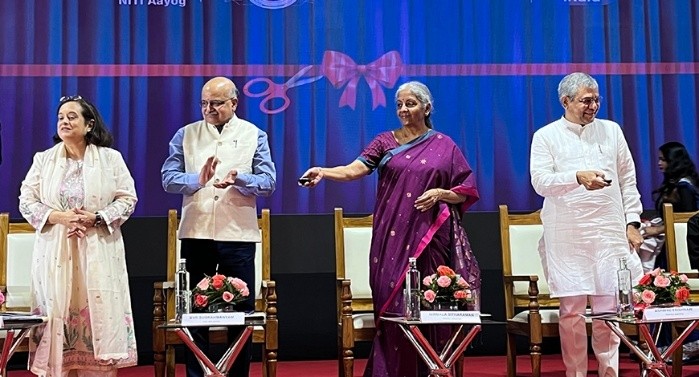
- 20 Sep 2025
In News:
- In a major stride towards achieving Viksit Bharat (Developed India) by 2047, NITI Aayog has launched two landmark initiatives under its Frontier Tech Hub — the ‘AI for Viksit Bharat Roadmap: Opportunity for Accelerated Economic Growth’ and the ‘Frontier Tech Repository’.
- These initiatives aim to harness the transformative potential of Artificial Intelligence (AI) and other frontier technologies to catalyse inclusive growth and innovation across sectors.
AI for Viksit Bharat Roadmap
The AI for Viksit Bharat Roadmap, launched by Finance Minister Smt. Nirmala Sitharaman and Minister for Electronics & IT Shri Ashwini Vaishnaw, outlines a practical and strategic framework to accelerate India’s AI-led growth. It focuses on two primary levers:
- Accelerating AI adoption across industries to boost productivity, efficiency, and innovation.
- Transforming Research and Development (R&D) through Generative AI, enabling India to leapfrog into global innovation leadership.
The roadmap emphasizes AI’s potential to drive robust, inclusive, and technology-driven economic growth, while underscoring the need for a collaborative ecosystem involving government, industry, academia, and startups.
Frontier Tech Repository
- Complementing the roadmap, the Frontier Tech Repository is a digital knowledge platform that showcases over 200 real-world impact stories across four critical sectors — Agriculture, Healthcare, Education, and National Security.
- It demonstrates how states, startups, and innovators are using technology to transform governance and improve livelihoods at the grassroots level.
- The repository serves as both a learning resource and a replication model, helping policymakers and administrators identify scalable frontier technology solutions.
Frontier 50 Initiative
- To ensure widespread adoption, NITI Aayog launched the Frontier 50 Initiative, which will support 50 Aspirational Districts and Blocks in selecting and deploying frontier technologies showcased in the repository.
- The goal is to accelerate service saturation across key Aspirational District Programme (ADP) and Aspirational Block Programme (ABP) themes — such as education, healthcare, and livelihood generation — through tech-enabled governance.
NITI Frontier Tech Impact Awards
- To further motivate innovation, NITI Aayog announced the Frontier Tech Impact Awards, which will recognize three states excelling in the use of technology for improving governance, education, health, and livelihoods. These states will receive support to scale their initiatives and create measurable, transformative outcomes.
About the NITI Frontier Tech Hub
- The Frontier Tech Hub serves as NITI Aayog’s platform to anticipate mega technological shifts and strategize India’s preparedness to harness emerging technologies for inclusive growth, supply chain resilience, and national security.
- It brings together experts from government, industry, and academia to assess opportunities and risks associated with frontier technologies such as AI, quantum computing, and biotechnology, thereby shaping policies for technology-driven development.
Eustoma
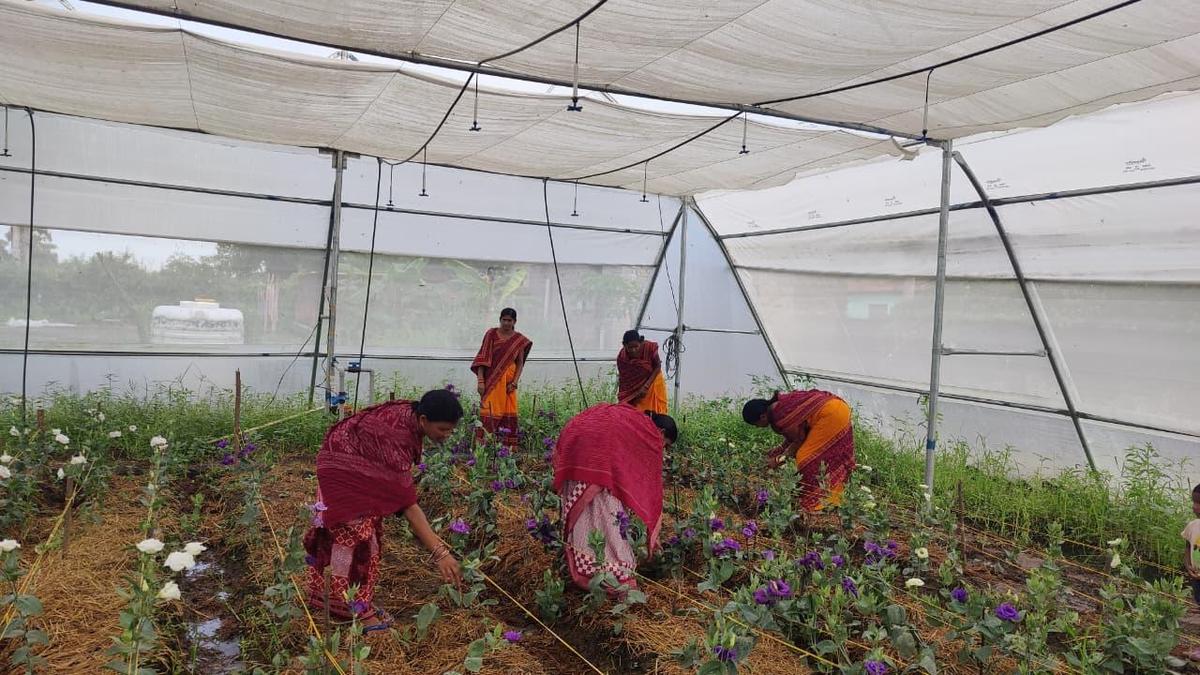
- 20 Sep 2025
In News:
The National Botanical Research Institute (NBRI), under the Council of Scientific and Industrial Research (CSIR), has achieved a remarkable breakthrough by successfully cultivating the Eustoma flower in Odisha. This marks the first instance of the exotic ornamental species blooming locally in the state, which until now depended solely on imports for its availability.
About Eustoma
- Scientifically known as Eustoma grandiflorum and commonly referred to as Lisianthus, Prairie Gentian, or Texas Bluebell, the flower is a perennial herbaceous ornamental species native to the grasslands of North America — including Mexico, the southern United States, the Caribbean, and northern South America. Globally, it ranks among the top ten popular cut flowers due to its elegance and commercial appeal.
Distinctive Features
- Eustoma is renowned for its rose-like blossoms, vibrant color range, long stems, and extended vase life, which have earned it the title of the “next rose” in the international flower trade. Its blooms exhibit a rich palette of colors — from pure white to shades of pink, purple, and blue — making it highly desirable for cut flower arrangements and potted ornamental use.
Growth Conditions and Habitat
- The plant thrives in warm, sunny climates and prefers well-drained yet moisture-retentive soil, enriched with garden compost or well-rotted manure. In its natural habitat, it grows in grasslands and disturbed areas, making it adaptable to varied environmental conditions when cultivated with appropriate care.
Significance of the Odisha Breakthrough
- The successful cultivation of Eustoma in Odisha represents a scientific and economic milestone. Previously, the flower had to be imported, which limited access for local floriculturists and increased costs. With NBRI’s intervention, local propagation techniques have now been developed, enabling indigenous production of this high-value ornamental crop.
- By adopting Eustoma cultivation, farmers in Odisha and other states with similar climatic conditions can benefit from higher income potential due to the flower’s global demand and premium market value.
Broader Implications
- The success underscores India’s growing capabilities in plant biotechnology, floriculture innovation, and agro-based entrepreneurship. It aligns with the government’s broader objectives of Atmanirbhar Bharat (self-reliant India) by reducing dependency on imports and promoting sustainable rural livelihoods through scientific advancements.
Polypropylene and Bioethanol Initiatives in Assam
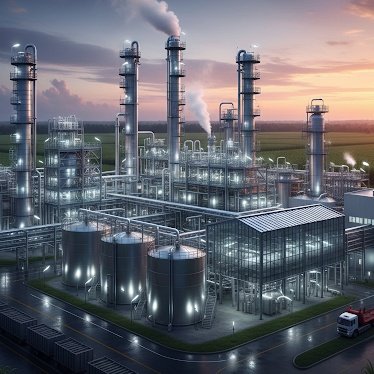
- 19 Sep 2025
In News:
Prime Minister Narendra Modi recently laid the foundation stone for a Polypropylene (PP) Plant and inaugurated a Bioethanol Plant at Numaligarh Refinery Limited (NRL) in Golaghat, Assam. These projects mark a major step in strengthening India’s energy security, promoting clean energy, and enhancing industrial development in the Northeast.
About Polypropylene
Polypropylene (PP) is a thermoplastic polymer produced by the polymerization of propylene. Belonging to the polyolefin family, it is a lightweight, flexible, and heat-resistant material widely used in modern industries.
Key Properties:
- Chemical resistance: Highly resistant to acids, alkalis, and solvents, making it ideal for packaging cleaning products.
- Lightweight and durable: One of the lightest commodity plastics, suitable for high-temperature applications.
- Flammable: Requires controlled processing and handling.
- Insulating properties: Offers strong electrical insulation, used in casings, cables, and medical equipment.
Applications:
Polypropylene is extensively used in packaging, textiles, ropes, carpets, medical kits, automotive components, and agricultural tools. Its versatility makes it integral to both industrial and domestic use.
About the Polypropylene Plant at NRL
The Polypropylene Plant at Numaligarh Refinery aims to enhance India’s petrochemical capacity and reduce dependence on imports. It will serve as a key catalyst for industrial growth in Assam and contribute to the ‘Make in Assam’ and ‘Make in India’ initiatives.The plant will:
- Generate significant employment opportunities for the local population.
- Strengthen manufacturing sectors linked to plastics, textiles, and medical equipment.
- Promote regional economic diversification in the Northeast.
The Bioethanol Plant and Clean Energy Push
The newly inaugurated Assam Bioethanol Plant, also at NRL, produces bioethanol from bamboo—a sustainable feedstock abundantly available in the region. This initiative supports India’s Ethanol Blending Programme and aims to reduce reliance on imported fossil fuels.
Key Benefits:
- Encourages bamboo cultivation, benefitting farmers and tribal communities.
- Establishes bamboo chipping units and ensures steady raw material supply.
- Generates employment for thousands of people and boosts the rural economy.
- Promotes green energy and circular economy principles.
The government has allocated around ?200 crore annually to support bamboo-based ethanol production, which will provide a long-term economic boost to the region.
Strategic Significance
Prime Minister Modi emphasized that energy and semiconductors are two critical pillars of India’s self-reliance journey. Assam, through projects like these, is emerging as a key energy hub.
- India is now among the top five countries in solar power capacity.
- The government has launched the National Deepwater Exploration Mission to explore domestic oil and gas reserves under the “Samudra Manthan” initiative.
- A semiconductor factory worth ?27,000 crore is being set up in Morigaon, positioning Assam as a vital node in India’s electronics manufacturing ecosystem.
Cultural and Socio-Economic Integration
Beyond industrial growth, these projects are part of a broader vision to integrate Assam’s cultural heritage with modern development. The state’s traditional identity—symbolized by the Gamosa, Eri, and Muga silk—will now extend to polypropylene-based textiles and industries.
Initiatives such as Mission Basundhara, welfare schemes for tea garden workers, and the development of tourism circuits like the MaaKamakhya Corridor underscore inclusive growth in the region.
Centre for Cellular and Molecular Biology
- 19 Sep 2025
In News:
Scientists at the CSIR–Centre for Cellular and Molecular Biology (CCMB), Hyderabad, have uncovered a crucial mechanism explaining how white blood cells (WBCs) rapidly alter their internal structure to combat pathogens. The discovery reveals how immune cells adapt their cytoskeletons to move and respond swiftly during immune defence.
The Discovery
A research team led by Dr. Saikat Chowdhury at CCMB discovered how white blood cells form flat protrusions in the direction of pathogens, enabling them to move and engulf harmful microbes.
This process occurs within microseconds, allowing immune cells to dynamically remodel their internal structure to execute defence responses. The findings were published in the journal Nature Structural & Molecular Biology.
Mechanism Behind the Discovery:
- The shape and movement of cells depend on a dense, branched actin network near the cell membrane.
- Actin, a structural and dynamic protein, enables cells to push the membrane outward, forming protrusions.
- The CCMB team found that SPIN90, a regulatory protein, plays a pivotal role in generating new actin meshworks.
- SPIN90 works as a dimer with another protein complex, Arp2/3, to initiate the growth of new actin filaments in two opposite directions, separated by about 150°.
- These newly formed filaments serve as scaffolds, helping the cell reshape itself or move toward invading pathogens.
According to Dr. Chowdhury, SPIN90’s ability to build actin filaments bidirectionally helps cells create adaptable cytoskeletal frameworks, shedding light on how cells remodel themselves in both health and disease.
Scientific Significance
This discovery enhances understanding of:
- Cellular movement and immune response mechanisms.
- Cytoskeletal dynamics—a core process in cellular biology.
- Pathophysiological processes, such as cancer metastasis, immune disorders, and wound healing, where cell shape and motility are crucial.
It also opens new avenues for biomedical research in designing therapies that target cell motility and immune regulation.
About the CSIR–Centre for Cellular and Molecular Biology (CCMB)
- Established: 1977
- Location: Hyderabad, Telangana
- Parent Organization: Council of Scientific and Industrial Research (CSIR) under the Ministry of Science & Technology, Government of India
- Designation: UNESCO-recognized “Centre of Excellence” under the Global Molecular and Cell Biology Network
Mandate and Objectives:
- Conduct high-quality basic and applied research in frontier areas of modern biology.
- Promote centralized national facilities for cutting-edge biological research.
- Provide training and capacity-building for students and scientists in molecular biology, genomics, proteomics, and bioinformatics.
- Facilitate collaborations with national and international research institutions.
Research Areas:
- Genetics and Genomics
- Molecular Medicine and Biotechnology
- Immunology and Cell Biology
- Bioinformatics and Systems Biology
- Environmental and Agricultural Biotechnology
CCMB’s research integrates fundamental and translational science, addressing challenges in human health, agriculture, and environmental sustainability.
Doctrine of Escheat
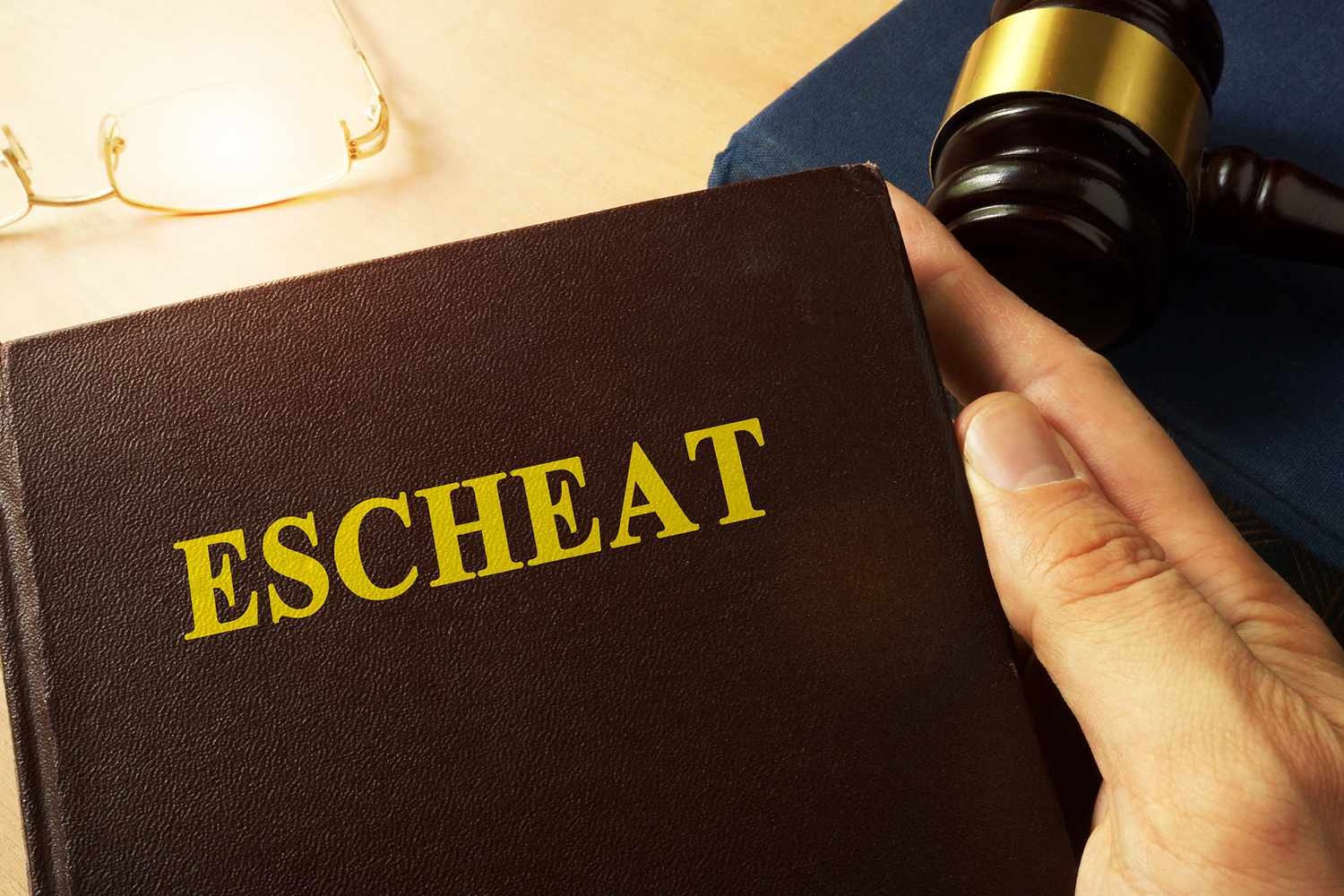
- 19 Sep 2025
In News:
The Supreme Court of India has recently ruled that a State Government cannot invoke the Doctrine of Escheat under Section 29 of the Hindu Succession Act, 1956, when a valid Will has been executed and probate has been granted by a competent court. The judgment underscores that the principle of escheat applies only as a last resort, when an individual dies intestate (without a Will) and without legal heirs.
What is the Doctrine of Escheat?
The Doctrine of Escheat is a long-standing legal principle ensuring that no property remains ownerless. When a person dies without a Will and without any legal heirs, ownership of the property reverts to the State.
This doctrine safeguards social and legal order, ensuring that property does not remain unclaimed or misused.
Situations Covered Under Escheat:
- Death without a Will (Intestate): When a person dies without making a valid Will and leaves no heirs.
- Unclaimed or Abandoned Property: When ownership cannot be established for a prolonged period.
The underlying idea is that property must always have an identifiable owner, and in the absence of heirs, the State becomes the ultimate owner.
Historical Background
- The term “escheat” originates from the Old French word “eschete”, meaning “to fall to.”
- The concept dates back to the feudal system of medieval Europe, where land held by a tenant reverted to the lord if the tenant died without an heir or was convicted of crimes such as treason.
- Over time, this right passed from feudal lords to the monarch or the state, ensuring continuous control over land and preventing property from becoming ownerless.
Doctrine of Escheat in Modern Legal Systems
In contemporary jurisprudence, escheat prevents property from remaining in legal limbo. The State assumes ownership of such assets, either permanently or temporarily, until legitimate claimants are found.
Different countries have codified laws governing this process, ensuring fairness and transparency.
Doctrine of Escheat in India
In the Indian legal framework, the doctrine operates through two main provisions:
- Article 296 of the Constitution of India:Provides that any property that escheats or lacks legal ownership vests in the State or Union, depending on where the property is situated.
- Section 29 of the Hindu Succession Act, 1956:States that if a Hindu dies intestate and without any legal heirs, the property escheats to the Government, which assumes ownership subject to all legal obligations.
Supreme Court’s Observation
In the recent judgment, the Supreme Court held that:
- The Doctrine of Escheat is a remedy of last resort and cannot be invoked when a valid Will exists.
- Once a Will is probated (i.e., validated by a competent court), the State has no locus to challenge the testamentary disposition under the garb of escheat.
- The testator’s intent must prevail, and the property should devolve strictly as per the terms of the Will.
This ruling reinforces the sanctity of testamentary freedom and clarifies the limited applicability of escheat provisions.
Significance of the Ruling
- Protects Individual Property Rights: Upholds the right of individuals to dispose of their property through a valid Will.
- Limits State Overreach: Prevents arbitrary claims by the State over private property.
- Clarifies Legal Interpretation: Defines the precise scope of Section 29 of the Hindu Succession Act and Article 296 of the Constitution.
- Ensures Legal Certainty: Strengthens property succession jurisprudence in India.
Carlsberg RidgeRegion
- 19 Sep 2025
In News:
India has secured an exploration contract from the International Seabed Authority (ISA) to explore polymetallic sulphide deposits in the Carlsberg Ridge region of the north-western Indian Ocean. The agreement marks a major step in India’s pursuit of deep-sea resource development and its broader vision under the Deep Ocean Mission.
About the Agreement
- The exploration contract grants India the right to survey and explore an area of approximately 3,00,000 square kilometres in the Carlsberg Ridge, a tectonically active region rich in polymetallic sulphides — deposits containing valuable metals such as copper, zinc, gold, silver, and rare elements.
- The International Seabed Authority (ISA), an autonomous body under the United Nations Convention on the Law of the Sea (UNCLOS), regulates mineral exploration and exploitation activities in international seabed areas beyond national jurisdictions.
- This licence enhances India’s presence in seabed resource exploration, complementing its earlier exploration area for polymetallic nodules in the Central Indian Ocean Basin.
About Carlsberg Ridge
- The Carlsberg Ridge is a mid-oceanic ridge — a divergent plate boundary — located in the western Indian Ocean.
- It extends from the triple junction of the African, Indian, and Australian plates, connecting to the Mid-Indian Ridge, and runs northwest toward the Gulf of Aden.
- The ridge acts as a tectonic boundary between the Somali Plate and the Indian Plate.
- Geographical features:
- Lies at an average depth of 6,000–12,000 feet (1,800–3,600 m) below sea level.
- Rises about 7,000 feet (≈2,100 m) above the surrounding seafloor.
- Extends westward near Socotra Island, eventually linking with the East African Rift System via the Gulf of Aden.
- It is one of the most prominent mid-ocean ridge systems in the Indian Ocean, characterized by frequent seismic activity and hydrothermal vents, which are potential sources of metal-rich sulphide minerals.
Significance of the Exploration
- Strategic Resource Security:Polymetallic sulphides contain economically vital metals like copper, zinc, gold, and silver, essential for clean energy technologies, electronics, and strategic industries.
- Technological Advancement:The project supports India’s Deep Ocean Mission, fostering indigenous capability in deep-sea mining, remotely operated vehicles (ROVs), and underwater robotics.
- Scientific and Environmental Research:Exploration in the Carlsberg Ridge will advance understanding of seafloor geology, hydrothermal systems, and biodiversity in deep-sea environments.
- Geopolitical and Economic Leverage:Strengthens India’s position in global ocean governance and the blue economy, ensuring equitable access to seabed resources.
About the International Seabed Authority (ISA)
- Headquarters: Kingston, Jamaica
- Established: 1994 under UNCLOS (1982)
- Mandate: Regulates mineral-related activities in the “Area” — the seabed and ocean floor beyond national jurisdiction — ensuring that exploration and exploitation are conducted for the benefit of mankind while protecting the marine environment.
Exercise Pacific Reach 2025
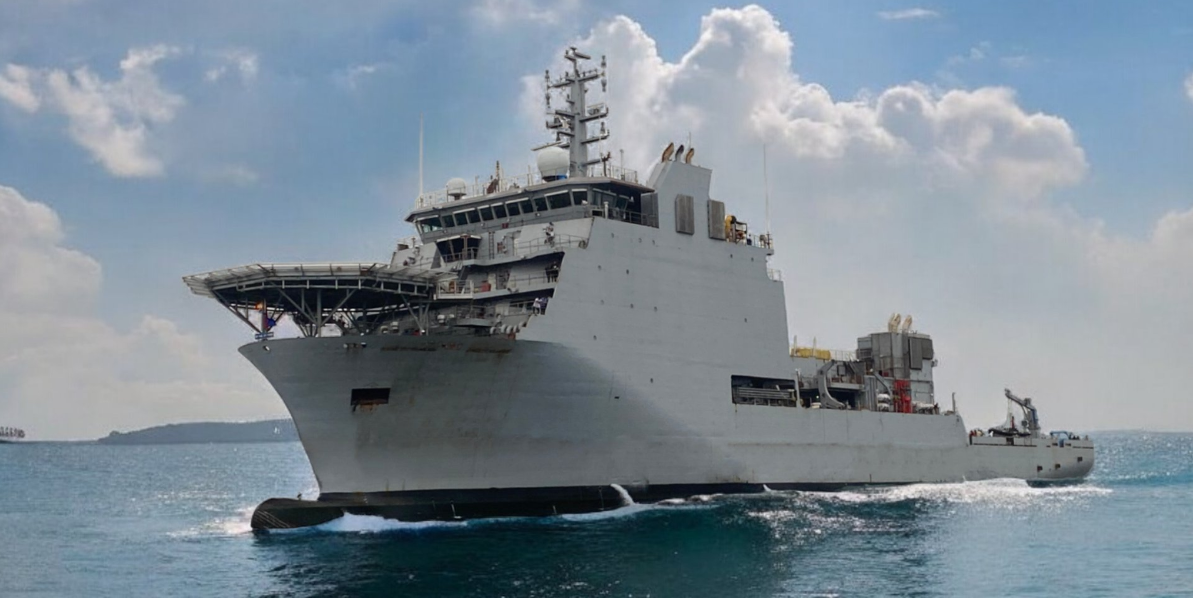
- 19 Sep 2025
In News:
The Indian Navy’s latest indigenously designed and constructed Diving Support Vessel (DSV), INS Nistar, is participating in the multinational Exercise Pacific Reach 2025 in Singapore, marking a key step in strengthening India’s naval cooperation and submarine rescue capabilities.
About Exercise Pacific Reach 2025
- Exercise Pacific Reach is a biennial multinational naval exercise hosted by Singapore, with the 2025 edition witnessing the participation of over 40 nations.
- The exercise focuses on submarine rescue operations, interoperability, and sharing of best practices among participating navies.
- It is conducted in two major phases:
- Harbour Phase:
- Involves in-depth discussions on submarine rescue systems.
- Includes Subject Matter Expert Exchanges (SMEE), a medical symposium, and cross-deck visits among participating nations.
- Aims to enhance coordination in rescue procedures and underwater medical responses.
- Sea Phase:
- Conducted in the South China Sea, featuring multiple intervention and rescue operations.
- INS Nistar and Submarine Rescue Unit (East) will collaborate with other international assets to simulate real-world submarine rescue missions and deep-sea operations.
The exercise underscores the growing importance of multilateral maritime cooperation in ensuring submarine safety, operational interoperability, and humanitarian response readiness in the Indo-Pacific region.
INS Nistar: A Technological Milestone in Naval Capability
- Commissioned on: 18 July 2025
- Built by: Hindustan Shipyard Limited (HSL), Visakhapatnam
- Under: Ministry of Defence’s ‘Aatmanirbhar Bharat’ initiative
- INS Nistar is designed to act as a mothership (MoSHIP) for Deep Submergence Rescue Vehicles (DSRVs) — a critical capability for submarine rescue and deep-sea support operations.
- The vessel exemplifies India’s indigenous shipbuilding prowess and self-reliance in complex maritime technologies.
Key Technical Features and Capabilities:
- Integrated Saturation Diving System (ISDS):Enables diver deployment up to 300 meters depth, facilitating underwater repairs, salvage, and rescue missions.
- Remotely Operated Vehicles (ROVs):Deployed for underwater surveillance and recovery in deep-sea environments.
- Side Scan Sonar:Assists in locating submerged vessels, wreckage, or obstacles on the seabed.
- Integrated Platform Management System (IPMS):Streamlines the operation and monitoring of onboard systems for greater efficiency and safety.
- Submarine Rescue System:A critical asset for submarine emergency response, ensuring timely and safe evacuation of personnel from disabled submarines.
Prime Minister Inaugurates Development Projects Amid Ethnic Tensions in Manipur
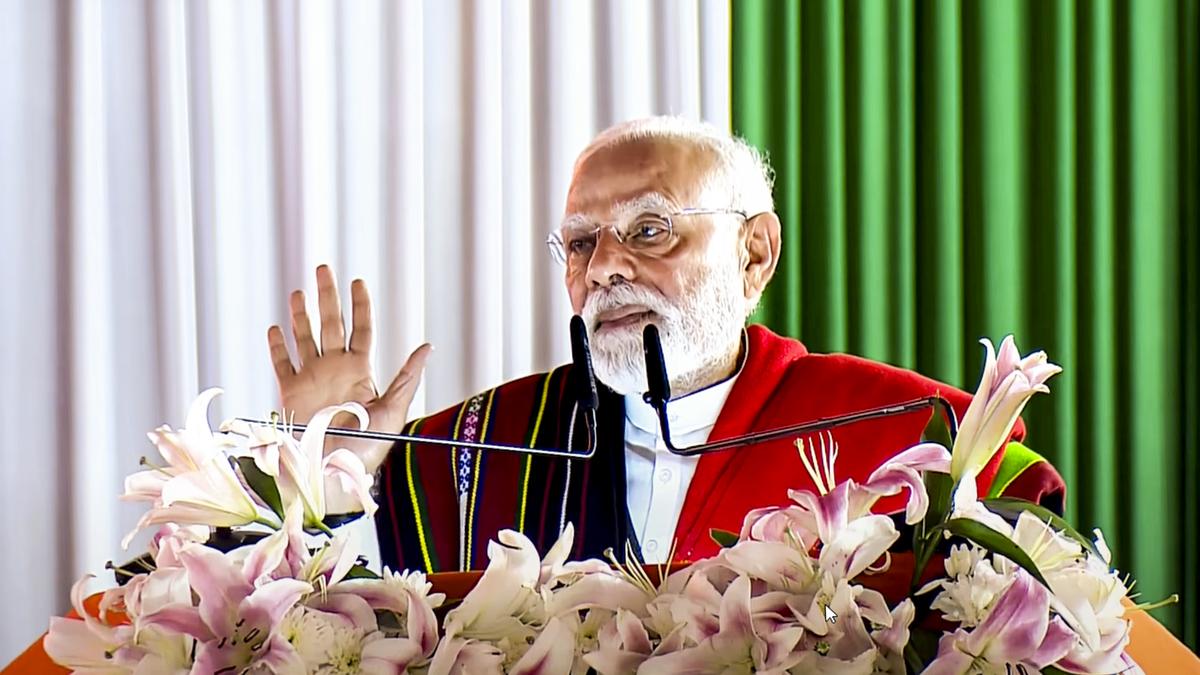
- 18 Sep 2025
In News:
Recently, Prime Minister Narendra Modi visited Imphal, Manipur, inaugurating and laying the foundation for multiple development projects aimed at improving infrastructure, governance, and socio-economic opportunities in the state.
The visit comes in the backdrop of ethnic tensions that erupted in May 2023 between the Meitei community in the Imphal valley and the Kuki-Zo tribes in the surrounding hills, which claimed over 250 lives and displaced more than 60,000 people.
Key Development Initiatives
- Infrastructure and Connectivity:
- Manipur Urban Roads Project: Investment of over ?3,600 crore to enhance urban road connectivity in Imphal.
- Jiribam–Imphal Railway Line: A ?22,000 crore project to connect Imphal to India’s national rail network.
- Imphal Airport Expansion: ?400 crore investment and inauguration of helicopter services to boost air connectivity.
- Civil Secretariat (?538 crore) and Police Headquarters (?101 crore) inaugurated to improve governance and law enforcement.
- Digital and IT Initiatives:Manipur Infotech Development Project aims to strengthen the state’s IT and startup ecosystem, creating employment and entrepreneurial opportunities.
- Women Empowerment:
- Four new Ima Markets (women-only markets) inaugurated, reinforcing the state’s tradition of women-led commerce.
- Construction of working women’s hostels at nine locations to support education and employment for women.
- Sports and Culture:
- Support for the National Sports University and Khelo India initiatives.
- Promotion of polo via the Marjing Polo Complex, featuring the world’s tallest polo statue.
Ethnic Conflict and Unresolved Issues
The conflict stems from the Meitei community’s demand for Scheduled Tribe (ST) status, opposed by Kuki-Zo groups. ST recognition would grant Meiteisconstitutional safeguards, including reservations in jobs, education, and political representation, and land rights in hill areas. Key unresolved issues include:
- Rehabilitation of Displaced Families: Over 280 relief camps sheltering around 57,000 people, some displaced for more than two years.
- Restrictions on Movement: Militarized buffer zones between valley and hill districts continue to limit free movement and access to services.
- Border Concerns: Porous border with Myanmar raises issues of cross-border migration, leading to the scrapping of the Free Movement Regime.
- Political Vacuum: The resignation of the Chief Minister and imposition of President’s Rule have created governance challenges.
- Dialogue Deficit: Despite reduced violence since late 2024, there is no sustained dialogue between Meitei and Kuki-Zo communities.
Demand for Separate Administration
The Kuki-Zo Council seeks administrative separation of hill areas as a Union Territory under Article 239A of the Constitution, while Meitei organizations like COCOMI oppose this, citing threats to territorial integrity.
Way Ahead
The Prime Minister emphasized the need to strengthen dialogue between the hill and valley districts to foster social harmony. Sustainable peace in Manipur requires:
- Inclusive dialogue and neutral mediation between Meitei and Kuki-Zo communities.
- Rehabilitation of displaced families with dignity and livelihood support.
- Balanced border management to address cross-border migration while respecting tribal ties.
- Strengthening local governance and administrative institutions to restore trust.
Strategic Significance
Infrastructure, IT, and women-centric initiatives are not only essential for socio-economic development but also align with the Act East Policy, facilitating regional integration and economic collaboration with Southeast Asia. Ensuring peace and development in Manipur is critical for maintaining national unity, regional stability, and long-term social cohesion.
CBSE Provides Partial Relief on APAAR ID Submission for Board Students
- 18 Sep 2025
In News:
The Central Board of Secondary Education (CBSE) has recently announced partial relaxations for schools regarding the submission of Automated Permanent Academic Account Registry (APAAR) IDs linked to the List of Candidates (LOC) for Classes 10 and 12 board examinations. The move comes in response to multiple representations from schools highlighting technical and administrative challenges.
About APAAR
APAAR, launched under the National Education Policy (NEP) 2020 and aligned with the National Credit and Qualifications Framework (NCrF), aims to assign every student in India a unique 12-digit lifelong academic identity. Key objectives include:
- Consolidation of all academic achievements, such as marksheets, certificates, and co-curricular accomplishments, in a single digital record.
- Facilitating credit transfers, mobility between institutions, and recognition of prior learning.
- Enhancing flexibility in education and supporting seamless integration with the Academic Bank of Credits (ABC).
Integration with Academic Bank of Credits
The Academic Bank of Credits (ABC), conceptualized under NEP 2020, serves as a digital repository of students’ academic records, enabling storage, transfer, and redemption of credits across recognized institutions. Integrated with APAAR, it allows students to move between schools and higher education institutions without repeatedly submitting physical certificates, thus promoting educational mobility and continuity.
Challenges in APAAR Implementation
Since its rollout, schools have reported several hurdles in generating APAAR IDs:
- Technical integration issues between school portals and the APAAR system.
- Mismatches between school records and Aadhaar-linked student data.
- Time delays due to correction or updating processes.
- Lack of parental consent, often arising from privacy concerns.
CBSE’s Guidelines and Partial Relaxations
To address these challenges, CBSE has provided the following instructions for schools while submitting LOCs:
- Parental Consent Denial: If APAAR IDs cannot be generated due to refusal of parental consent, schools must retain a copy of the consent refusal and mark the entry in the LOC as “REFUSED”.
- Technical or Other Issues: For IDs that cannot be generated due to technical or administrative reasons, schools should mark the LOC entry as “NOGEN”.
- All Other Cases: Wherever feasible, APAAR IDs should be indicated in the LOC.
CBSE has also activated an online module for Children With Special Needs (CWSN), enabling schools to apply for various examination-related exemptions. Examination forms for private candidates of Classes 10 and 12 have been consolidated along with the LOC submission schedule to ensure clarity and timely compliance.
Support Measures
CBSE has emphasized that these relaxations are intended to ensure smooth and error-free LOC submission within the stipulated timelines. Schools facing further difficulties are advised to reach out to their respective regional CBSE offices for assistance.
Significance
The APAAR initiative represents a key step toward a digital, lifelong academic identity for Indian students, enhancing transparency, mobility, and integration with the Academic Bank of Credits. CBSE’s temporary relaxations reflect a pragmatic approach to smooth implementation while addressing operational challenges faced by schools.
Dongsha Islands
- 18 Sep 2025
In News:
Taiwan’s Coast Guard Administration (CGA) recently repelled both a Chinese coast guard ship and a Chinese fishing boat near the Dongsha Islands (Pratas Islands), highlighting escalating tensions in the South China Sea and the strategic significance of the region.
Key Highlights:
These confrontations coincided with China’s announcement of a national nature reserve at Scarborough Shoal, a territory also claimed by Taiwan and the Philippines. While Beijing described it as a conservation initiative, analysts view it as part of China’s broader strategy to assert control over disputed areas.
Taiwan condemned the repeated incursions, labeling them “grey zone tactics”—persistent, low-intensity actions aimed at exerting pressure without provoking direct military conflict. The CGA reaffirmed its commitment to defend Taiwan’s sovereignty, pledging ongoing patrols and surveillance in the Dongsha region.
About the Dongsha Islands:
- Located in the northern South China Sea, ~445 km southwest of Kaohsiung, Taiwan, and 320 km southeast of Hong Kong.
- Governed by Taiwan and staffed by marines, with no permanent civilian residents.
- Comprised of three formations: Dongsha Island (above sea level) and Northern and Southern Vereker atolls (below sea level).
- Circular coral atoll structure: reef flats span 24 km in diameter, enclosing a 16 km lagoon; Dongsha Island itself is ~1.6 km long and 0.8 km wide.
The incidents underscore the fragile security balance in the South China Sea, where overlapping territorial claims, strategic maritime routes, and China’s assertive posture pose ongoing regional challenges. Taiwan’s proactive coastal defense measures reflect its determination to safeguard administered territories.
Exercise SiyomPrahar
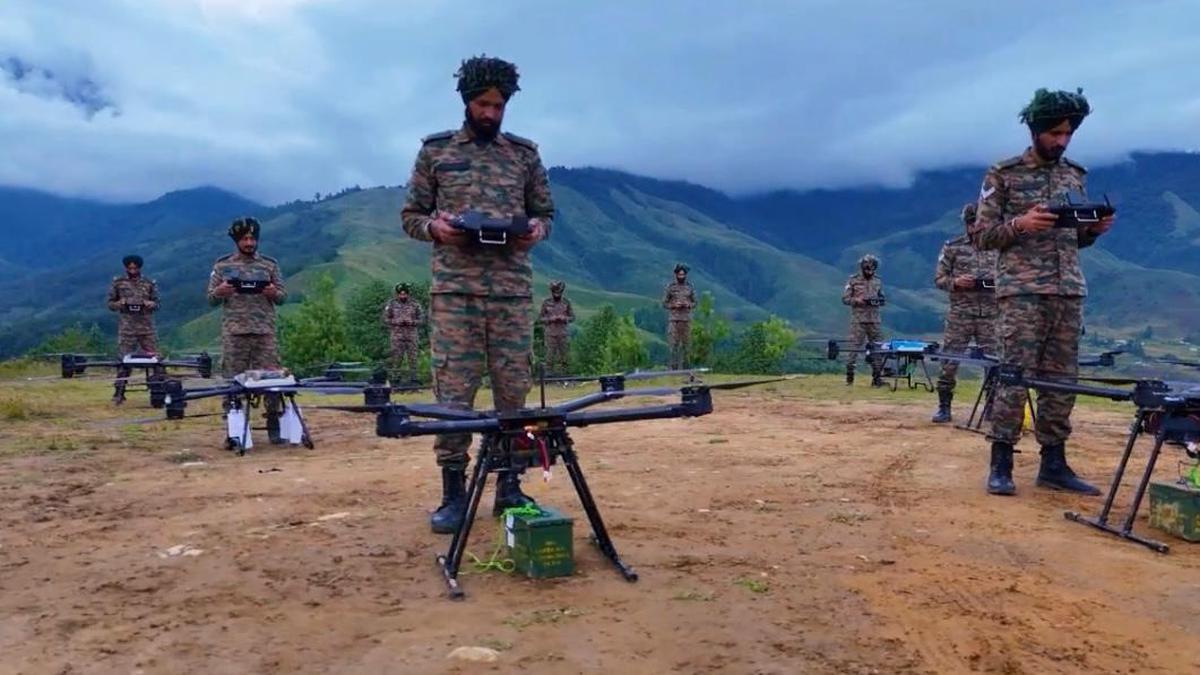
- 18 Sep 2025
In News:
The Indian Army's Exercise SiyomPrahar, represents a significant step in modernizing the Army’s operational capabilities. This field training exercise focused on validating the integration of unmanned aerial systems (UAS) into tactical operations, with a strong emphasis on surveillance, reconnaissance, target acquisition, and precision strikes. Below are the key highlights and insights from the exercise:
Key Objectives:
- Integration of Drone Technology: The core goal was to test how drone systems can be employed for persistent surveillance, battlefield reconnaissance, and precision strikes, thus enhancing overall combat effectiveness.
- Development of New TTPs (Tactics, Techniques, and Procedures): A key focus was on refining how drone-derived intelligence could be fused with conventional firepower, ensuring rapid decision-making in dynamic and evolving combat scenarios.
- Joint Targeting and Decision-making: The exercise aimed at refining joint targeting processes, highlighting the importance of real-time intelligence to improve targeting accuracy and decision-making speed in the heat of battle.
Key Features of the Exercise:
- Realistic Battlefield Conditions: The exercise was conducted under simulated real-world combat conditions, providing a comprehensive test of UAS capabilities in diverse operational environments.
- Synergy Between Traditional Combat and Emerging Technologies:Exercise SiyomPrahar underscored the importance of blending traditional combat arms with cutting-edge technologies, such as drones, to create a more adaptive and efficient military force.
- Operational Preparedness: The exercise was a significant step toward enhancing the Indian Army’s operational preparedness for future combat scenarios, integrating modern technology to ensure readiness for future battlefields.
Strategic Importance and Key Insights:
- Adaptability and Synergy: The exercise highlighted how the Army is integrating modern warfare tactics with traditional methods to create a more effective, adaptable force that can operate in dynamic and complex environments.
- Real-Time Data Utilization: By using drones to gather real-time intelligence, the Indian Army is significantly improving targeting accuracy, enabling faster, more informed decisions in combat situations.
- Reduced Soldier Risk: The deployment of drones for reconnaissance and strikes minimizes the exposure of ground troops to potential dangers, enhancing both tactical effectiveness and safety on the battlefield.
- Joint Operational Capabilities: Exercise SiyomPrahar demonstrated how drones can be integrated into joint operational structures, improving communication and coordination between various arms of the military.
Broader Implications for Future Warfare:
- Technological Innovation in Combat: The successful integration of drone technology in this exercise indicates a shift towards technology-driven warfare, where drones play a critical role in intelligence gathering, battlefield awareness, and precision targeting.
- India’s Commitment to Modernization: The exercise is a testament to India’s proactive approach to adapting to the changing nature of warfare, ensuring that its forces remain future-ready and capable of responding effectively to emerging security challenges.
Brown Trout
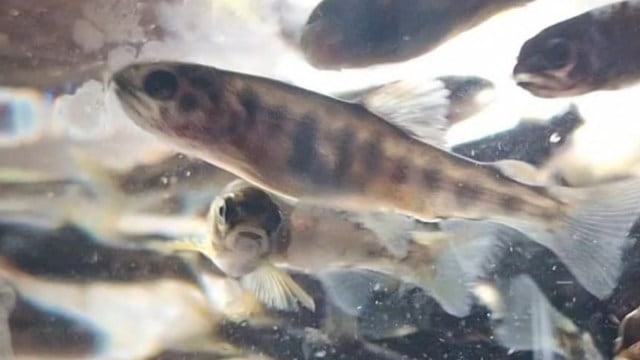
- 17 Sep 2025
In News:
- Kashmir is embarking on a significant initiative to revive its brown trout (Salmo trutta) population, a species first introduced to the Valley by the British in 1900.
- Once a hallmark of Kashmir’s cold-water streams and a popular game fish, the brown trout population had declined over decades due to unregulated angling, habitat degradation, and ecological disturbances.
- The Fisheries Department of Jammu & Kashmir plans to reintroduce the species into streams and lakes, aiming to combine conservation with tourism promotion.
About Brown Trout
- The brown trout is a cold-water, salmonid fish native to Europe, northern Africa, and parts of Asia. It prefers cool, well-oxygenated freshwater streams, often residing in crevices between boulders. Typically, individuals grow 15–22 inches in length and weigh 1–5 pounds.
- Brown trout are renowned as a game fish due to their aggressive and elusive nature, which makes angling challenging and rewarding.
- Globally, brown trout have been introduced widely as a game fish, but outside their native range, they are considered one of the world’s worst invasive species.
- In India, their introduction to Kashmir was facilitated by Frank J Mitchel, a British entrepreneur, and earlier attempts during Maharaja Pratap Singh’s era. The fish initially thrived in streams such as Panzagam, Lidder, Bringhi, and Ferozpora, eventually supporting recreational fishing and angling tourism.
Revival Initiative
The current revival project is supported under Pradhan Mantri Matsya Sampada Yojana (PMMSY) and J&K’s Holistic Agricultural Development Programme, enabling the import of 3 lakh pure brown trout eggs from Denmark. These were hatched at the Tchansar Hatchery in Kulgam, marking a milestone as previous efforts primarily focused on rainbow trout for food production rather than wild trout restoration.
Rearing brown trout posed unique challenges:
- They refuse artificial feed, requiring specially formulated diets of crustaceans mixed with cod liver oil.
- They feed in darkness, prompting hatchery modifications to simulate natural conditions and monitor feeding.
The October–November period, coinciding with their breeding season, was chosen for release as brown trout exhibit lower aggression and reduced cannibalism, increasing survival rates. Streams and lakes targeted for reintroduction include Veshav River and Kounsarnag Lake in Kulgam.
Ecological and Socioeconomic Significance
Reintroduction serves multiple purposes:
- Biodiversity restoration: Revives native aquatic fauna and strengthens freshwater ecosystems.
- Tourism enhancement: Brown trout are a draw for anglers, boosting local tourism and allied services.
- Heritage and culture: The initiative reconnects the Valley with a century-old ecological and recreational tradition.
Experts, however, caution that habitat preservation is crucial, emphasizing the need to control illegal riverbed mining and maintain clean, oxygen-rich streams for the trout’s survival.
Conservation Status and Global Context
According to the IUCN Red List, the brown trout is listed as Least Concern, reflecting its wide distribution and adaptability in native ranges. However, localized conservation efforts, such as this reintroduction in Kashmir, are essential to sustain ecologically and economically significant populations in specific regions.
Amrit Sarovar Mission

- 17 Sep 2025
In News:
- The Amrit Sarovar Mission, launched by Prime Minister Narendra Modi in April 2022, is a flagship initiative aimed at addressing water scarcity and promoting sustainable rural development across India.
- The mission seeks to construct or rejuvenate 75 Amrit Sarovars (ponds) in each district, as part of the celebrations of Azadi ka Amrit Mahotsav.
- As of 2025, the government has reported the creation of over 68,000 Amrit Sarovars nationwide, marking a significant milestone in water conservation and community engagement.
Objectives and Significance
The mission’s primary objectives include:
- Water conservation and management in rural areas.
- Enhancement of local livelihoods through irrigation, fisheries, duckery, cultivation of water chestnut, and water-based tourism.
- Promotion of social cohesion by establishing Amrit Sarovars as community gathering points.
- Integration of government initiatives through a “Whole of Government” approach, ensuring convergence of resources and expertise.
Each Amrit Sarovar is designed to have a minimum pondage area of one acre with a water-holding capacity of about 10,000 cubic metres. Surrounding vegetation typically includes trees such as Neem, Peepal, and Banyan, contributing to ecological sustainability and enhancing biodiversity.
Participatory and Institutional Framework
The site selection and supervision of Amrit Sarovars are conducted by Gram Sabhas, with Panchayat representatives overseeing the development. This participatory approach ensures that local communities have ownership and accountability for the maintenance and sustainable use of water resources.
The mission operates on convergence principles, utilizing funds and resources from multiple sources including:
- Mahatma Gandhi NREGS
- 15th Finance Commission Grants
- Pradhan Mantri Krishi Sinchai Yojana (PMKSY) sub-schemes, such as Watershed Development and Har Khet Ko Pani
- State government schemes
There is no separate financial allocation for the mission; rather, it leverages ongoing programs for maximum impact.
Technology and Monitoring
To ensure efficient implementation and progress tracking, the Bhaskaracharya National Institute for Space Applications and Geo-informatics (BISAG-N) has been engaged as a technical partner. The institute has developed the Amrit Sarovar Portal and Mobile App, which enables real-time monitoring, reporting, and evaluation of district-level activities.
Workshops and Capacity Building
The Ministry of Rural Development organized a national workshop in New Delhi to reinforce the mission’s technical foundations and promote community-driven sustainable practices. Officials from states and Union Territories discussed strategies to enhance technical capacity, innovation, and inter-departmental collaboration, paving the way for the next phase of the mission.
Impact and Prospects
The Amrit Sarovar Mission exemplifies integrated rural development, linking water security, ecological sustainability, and livelihood generation. By reviving traditional water bodies and creating new ponds, it contributes to groundwater recharge, climate resilience, and rural prosperity. The initiative also strengthens people’s participation in natural resource management, ensuring that water resources are used efficiently and sustainably.
As the mission progresses, it is expected to play a critical role in mitigating rural water crises, enhancing agricultural productivity, and fostering inclusive growth in India’s villages.
Erra Matti Dibbalu
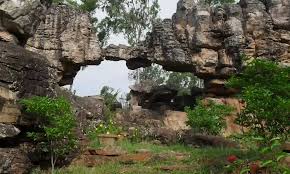
- 17 Sep 2025
In News:
Andhra Pradesh has taken a major step towards global heritage recognition with the inclusion of Erra Matti Dibbalu (Red Sand Dunes) near Visakhapatnam and the Natural Heritage of Tirumala Hills in the UNESCO Tentative List of World Heritage Sites. The move reflects India’s growing commitment to protect and preserve sites of geological and ecological importance. Being placed on the Tentative List is a mandatory prerequisite for eventual nomination to the UNESCO World Heritage List, symbolizing international acknowledgment of a site’s Outstanding Universal Value (OUV).
Erra Matti Dibbalu: India’s Rare Coastal Geo-Heritage Site
- Located along the coast near Visakhapatnam, Erra Matti Dibbalu—literally “Red Sand Dunes”—is a unique National Geo-heritage Monument, spread over 1,500 acres.
- The formations consist of sand, silt, and clay, with their deep red hue arising from natural oxidation over thousands of years.
- These dunes exhibit badland topography with striking geomorphic features such as gullies, buried channels, paired terraces, beach ridges, wave-cut terraces, knick points, and waterfalls.
- The site represents the late Quaternary geologic age and provides vital evidence of climatic and sea-level fluctuations over millennia. Dendritic drainage patterns and layered sediments at the site act as a natural archive of environmental changes and coastal evolution.
- First recorded in 1886 by British geologist William King, the site is globally rare — with only two similar formations identified, one in Sri Lanka and another in Tamil Nadu (Teri Sands).
- Additionally, archaeological artefacts discovered here point to Upper Palaeolithic human activity (around 20,000 BCE), making it an important cultural and scientific site.
- Recognizing its geological and historical significance, the Geological Survey of India (GSI) declared Erra Matti Dibbalu a National Geo-heritage Monument in 2016. However, experts warn that unregulated tourism and filming activities pose a threat to its fragile ecosystem, calling for stronger conservation and monitoring mechanisms.
- According to IUCN’s Geological World Heritage (2021) classification, the site may qualify under Theme 2: Tectonic System and Theme 7: Coastal System.
Tirumala Hills: A Geological and Ecological Treasure
- The Tirumala Hills in Tirupati district are celebrated not just for spiritual significance but also for their geological, ecological, and cultural heritage.
- The hills showcase the Eparchaean Unconformity—a rare geological boundary where 2.5-billion-year-old Archean rocks meet younger Proterozoic formations of the Cuddapah Supergroup. This boundary represents a vast time gap in Earth’s geological record, offering critical insights into planetary evolution.
- The site also houses the famous Natural Arch (Silathoranam), a naturally sculpted rock formation estimated to be 1.5 billion years old. The region forms part of the Seshachalam Biosphere Reserve and Venkateswara National Park, both home to rich biodiversity including endangered red sanders (Pterocarpus santalinus), Cycas beddomei, and the elusive Jerdon’s Courser.
- With dense forests, seasonal waterfalls, and unique geological formations, Tirumala Hills qualify under multiple UNESCO criteria related to natural beauty, ecological diversity, and geological significance. As per IUCN (2021), the site aligns with Theme 1: History of Planet Earth and Evolution of Life.
AI-Based Weather Forecasting for Agriculture
- 17 Sep 2025
In News:
India has launched a pioneering initiative that marks a paradigm shift in agricultural planning and climate risk management. The Ministry of Agriculture and Farmers’ Welfare (MoAFW) has implemented the country’s first-of-its-kind AI-based weather forecasting program aimed at empowering farmers with timely and accurate monsoon information. This initiative has reached 3.8 crore farmers across 13 states, positioning India as a global leader in applying artificial intelligence to agriculture.
Transforming Weather Forecasting through AI
Traditionally, Indian farmers depend heavily on the monsoon for Kharif cultivation — a critical determinant of rural livelihoods. Unpredictable rainfall patterns, intensified by climate change, have often disrupted sowing and crop management decisions. To address this, MoAFW harnessed artificial intelligence (AI) models to provide advance and localized monsoon forecasts, disseminated via SMS through the m-Kisan portal.
These AI-based monsoon forecasts were available up to four weeks earlier than usual, allowing farmers to make informed choices on what, when, and how much to plant. The initiative also ensured weekly forecast updates, especially during the 20-day pause in monsoon progression this year, helping farmers adjust operations accordingly.
AI Models and Technological Backbone
The forecasts were generated using a blend of two open-access AI models:
- Google’s Neural General Circulation Model (Neural GCM), and
- ECMWF’s Artificial Intelligence Forecasting System (AIFS) developed by the European Centre for Medium-Range Weather Forecasts.
Rigorous evaluation showed that these models outperformed traditional meteorological forecasts, particularly in predicting the onset and variability of monsoon rainfall at local levels. The initiative represents the first targeted dissemination of AI-based weather forecasts to farmers anywhere in the world.
m-Kisan Portal
The m-Kisan Portal serves as the digital backbone for this outreach. It enables government agencies and research institutions to deliver customized, location-specific, and language-tailored SMS advisories to farmers. Beyond weather forecasts, it also provides guidance on pest management, crop practices, and government schemes, thus strengthening the digital extension ecosystem in Indian agriculture.
Bairabi–Sairang Project
- 17 Sep 2025
In News:
The inauguration of Mizoram’s first-ever railway line — the Bairabi–Sairang Broad-Gauge Project — marks a historic milestone in the state’s connectivity and India’s Act East Policy. Prime Minister Narendra Modi inaugurated the 51.38-km line, constructed at a cost of ?8,070 crore, connecting Mizoram’s capital Aizawl to the national railway network for the first time.
A 15-Year Vision Realised
- Sanctioned in 2008–09 and launched for construction in 2015, the project exemplifies one of the most complex undertakings of the Indian Railways due to Mizoram’s mountainous terrain and fragile geology.
- Nearly 54% of the alignment passes through tunnels and bridges, making it a remarkable feat of engineering. The route comprises 45–48 tunnels, 142 bridges (including 55 major and 87 minor ones), and 10 road overpasses/underpasses.
- Among its iconic structures is Bridge No. 144 (or 196) near Sairang, which stands over 104–114 metres tall, surpassing the height of Delhi’s Qutub Minar and making it India’s tallest pier railway bridge.
- The project also introduced four new stations — Hortoki, Kawnpui, Mualkhang, and Sairang — linking remote communities and enhancing regional mobility.
Connecting Aizawl to the National Network
The line stretches from Bairabi on the Assam–Mizoram border to Sairang, located just 20 km from Aizawl, thereby integrating Mizoram’s capital into India’s railway map. With this, Aizawl becomes the fourth northeastern capital (after Guwahati, Agartala, and Itanagar) to gain direct rail connectivity, strengthening socio-economic linkages between the Northeast and the rest of India.
Boosting Regional Connectivity and Economic Growth
The newly inaugurated line will facilitate safe, efficient, and cost-effective transportation, reducing travel time and improving the movement of goods such as food grains, fertilizers, and essential commodities. It is also expected to stimulate tourism, horticulture, and local industries, generating employment and boosting livelihoods.
The Prime Minister also flagged off three new long-distance train services —
- Sairang–Delhi Rajdhani Express,
- Sairang–Guwahati Express, and
- Sairang–Kolkata Express —further enhancing the state’s integration with major urban centres.
Engineering Challenges and Innovations
Constructing railways across Mizoram’s steep ridges and fragile hills required advanced tunnelling techniques and innovative stabilization methods. Engineers had to solidify loose sand into rock formations before tunnelling. The passenger trains can now run at speeds up to 100 km/h, reflecting the project’s high safety and design standards.
Complementary Infrastructure Initiatives
Alongside the rail inauguration, infrastructure projects worth ?9,000 crore were launched under schemes like PM-DevINE and NESIDS, including:
- Aizawl Bypass Road (45 km),
- Thenzawl–Sialsuk Road, and
- Khankawn–Rongura Road, aimed at improving connectivity for farmers, traders, and industries.
Additionally, the Chhimtuipui Bridge under the Kaladan Multimodal Transit Project, an LPG bottling plant at Mualkhang, sports complexes, and Eklavya residential schools were announced to promote economic growth and human development.
Strategic and Policy Significance
The Bairabi–Sairang line is a critical component of India’s Act East Policy, designed to enhance connectivity and integration of the Northeast with Southeast Asia. It embodies India’s commitment to balanced regional development, national security, and border area empowerment.
By overcoming formidable terrain and logistical hurdles, the project stands as a testament to India’s infrastructural capabilities and its vision for an inclusive, connected, and self-reliant Northeast.
STAR Missile
- 16 Sep 2025
In News:
India has developed the Supersonic TARget (STAR) missile — an indigenous, reusable high-speed target system designed to reproduce modern cruise-missile and anti-ship threat profiles for realistic training and validation of sensors, weapons and doctrines. STAR replaces expensive imported target systems and fills a critical gap in live realistic training for the Navy, Air Force and Army.
What STAR does
STAR is not a combat weapon but a high-fidelity aggressor platform that simulates hostile supersonic missiles so air defence systems, shipborne weapons and interceptor pilots can practise time-critical engagements under realistic conditions. It can mimic sea-skimming runs, steep dives and evasive manoeuvres to test detection, tracking and interception chains end-to-end.
Key technical features
- Propulsion: Two-stage system — a solid booster for launch followed by a Liquid Fuel Ramjet (LFRJ) for sustained supersonic cruise. The ramjet experience is also being matured for future systems (e.g., Astra Mk-3 development).
- Speed: Mach 1.8–2.5 (roughly 612–850 m/s).
- Altitude & profiles: Operates from low sea-skimming heights (as low as ~12 feet above water) up to ~10 km, and can execute high-speed dives and complex manoeuvres.
- Range & flight time: Designed for missions between 55–175 km with flight durations of ~50–200 seconds, enabling diverse scenario replication.
- Variants:
- Air-launched STAR (carried by combat aircraft such as LCA Tejas) to emulate air-to-air or air-to-ground supersonic threats and anti-radar/anti-AWACS profiles.
- Ground-launched STAR (truck-mounted) for shore-based or remote launches without extensive infrastructure.
- Operational utility: High manoeuvrability, programmable trajectories and safe recovery/destruction options make it suitable for repeated use in trials.
Operational and strategic significance
- Realism in training: STAR provides time-critical, live target practice that simulations alone cannot offer — particularly valuable against low-altitude, high-speed cruise profiles which compress engagement timelines.
- Atmanirbhar Bharat: Fully indigenous development reduces dependency on foreign target systems, cuts recurring costs, and supports domestic missile-R&D ecosystems. STAR is reusable and cost-effective relative to imported alternatives.
- Force integration: Its modular design serves tri-service needs, helping calibrate ship radars, point-defence systems, interceptor missiles, and fighter tactics in joint exercises.
- R&D multiplier: The ramjet and guidance technologies validated on STAR feed into broader missile-development programs, strengthening long-term indigenous capabilities. Analysts also view STAR as a potential seed technology that could be adapted into tactical offensive roles in the future (e.g., anti-radar or precision suppression platforms), should doctrinal decisions and legal frameworks permit.
Development status and outlook
As of mid-2025, STAR progressed into advanced development and flight validation phases — integrating propulsion, guidance and control subsystems and conducting combat-style trials. Operational induction for routine service trials and training is anticipated as tests mature.
Cicadas
- 16 Sep 2025
In News:
The recent reappearance of cicadas in Kerala’s Silent Valley National Park — after decades of absence — has intrigued ecologists. It is being seen both as a possible indicator of ecosystem recovery and as a warning signal of ecological disruption caused by climate change and habitat alteration.
About Silent Valley
Located in the Nilgiri Hills of Kerala’s Western Ghats, Silent Valley National Park spans about 90 sq. km and represents one of India’s most pristine tropical rainforests. The forest’s name owes itself to the striking absence of cicada calls, which are ubiquitous in most tropical forests. The absence of these insects — known for their high-decibel songs — was noted as early as the 1840s by British botanist Robert Wight, making it an ecological enigma.
Understanding Cicadas
Cicadas are hemipteran insects recognized for their loud, species-specific acoustic signals. They spend most of their lives underground as nymphs, feeding on tree root sap, before emerging for a short adult phase primarily to mate.
- Habitat: Mostly canopy dwellers in natural forests with mature trees.
- Types:
- Annual cicadas – emerge every year in summer, often camouflaged among trees.
- Periodical cicadas – emerge collectively after 13 or 17 years of dormancy.
- Ecological Roles:
- Aerate soil and enhance nutrient cycling.
- Serve as prey for birds, reptiles, and mammals.
- After death, their bodies enrich soil nitrogen, aiding forest regeneration.
The Mystery of Silence
Unlike most tropical forests, Silent Valley lacked the characteristic cicada chorus. Scientists have proposed several hypotheses for this anomaly:
- Microclimate Conditions: The valley’s bowl-shaped topography, constant mist, and moisture-rich soils may hinder nymph development that prefers drier soil.
- Vegetation Composition: Unique tree species and leaf litter dynamics may not support cicada life cycles.
- Historical Climatic Shifts: Subtle long-term climate variations might have altered habitat suitability.
- Natural Absence Hypothesis: Cicadas may never have colonized this particular ecosystem in significant numbers.
Return of the Cicadas
Recent field surveys and local observations indicate a gradual resurgence of cicada populations in certain forest patches.
- Possible Causes:
- Shifts in vegetation structure and canopy composition.
- Rising temperatures and erratic rainfall patterns altering habitat conditions.
- Natural dispersal from adjoining forest landscapes.
Ecological and Conservation Implications
The reappearance of cicadas serves as a bioindicator — revealing subtle ecological shifts often invisible to human monitoring.
- It may represent resilience and natural regeneration following decades of conservation success since the 1984 ban on the Silent Valley hydroelectric project.
- Alternatively, it might indicate climate instability and biodiversity imbalance, as species distributions shift in response to anthropogenic pressures.
Silent Valley’s surrounding areas now face deforestation, plantation expansion, and tourism pressure, threatening its delicate ecological balance. Continuous long-term monitoring of insect diversity, vegetation, and microclimate is essential to interpret whether this trend marks recovery or disruption.
Revisiting the Right to Information (RTI) in the Age of Data Protection
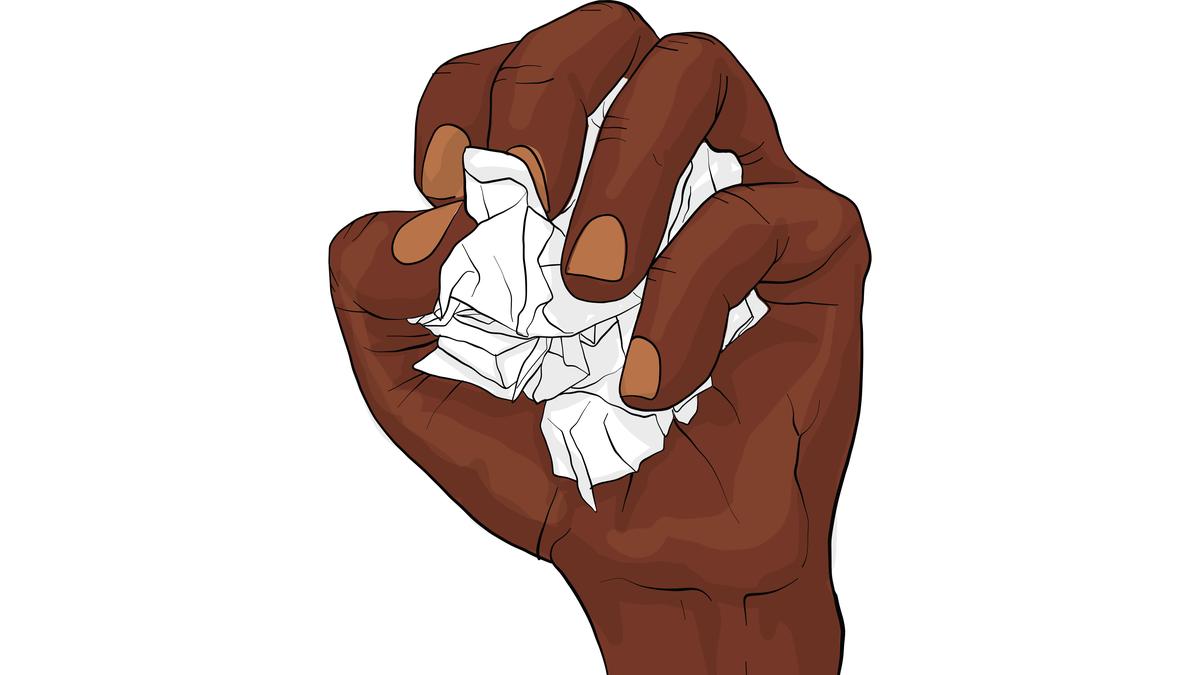
- 16 Sep 2025
In News:
The recent amendment to the Right to Information (RTI) Act, 2005 through the Digital Personal Data Protection (DPDP) Act, 2023 has sparked an intense debate on the balance between citizens’ right to information and the right to privacy. Critics argue that the change could transform India’s celebrated transparency law into a “Right to Deny Information”, undermining democratic accountability.
Evolution and Purpose of the RTI Act
- Enacted in 2005, the RTI Act is one of India’s most significant democratic reforms, aimed at promoting transparency, accountability, and citizen empowerment. It gives citizens the legal right to access information from public authorities, including government ministries, departments, and publicly funded organizations.
- Under the Act, public authorities are required to respond within 30 days to RTI requests. It also imposes penalties on officials who fail to provide information without valid reasons. Exemptions are limited to cases involving national security, confidential investigations, or information that could endanger individuals’ safety.
- The RTI rests on a foundational democratic principle — information held by the government belongs to the people. The state is merely a custodian of this information, accountable to citizens.
Amendment Through the DPDP Act, 2023
- Earlier, Section 8(1)(j) of the RTI Act permitted the disclosure of personal information if such disclosure served a larger public interest, such as exposing corruption or verifying implementation of welfare schemes.
- The DPDP Act, 2023 amended this clause, removing the public interest override and prohibiting disclosure of personal data altogether, even if it relates to public officials, unless legally mandated. This change effectively creates a blanket exemption for “personal information,” narrowing citizens’ access to critical public records.
Government’s Rationale
The Union government defends the amendment as an attempt to harmonize two fundamental rights —
- The Right to Privacy under Article 21, recognized by the Supreme Court in Justice K.S. Puttaswamy (2017), and
- The Right to Information under Article 19(1)(a).
According to the government, Section 8(2) of the RTI Act still allows disclosure if public interest outweighs privacy concerns, maintaining an “appropriate balance.” Officials argue that the amendment merely removes redundancy and ambiguity between the RTI and DPDP frameworks.
Criticisms and Concerns
However, legal experts, activists, and journalists warn that the amendment tilts the balance heavily toward secrecy, undermining the RTI’s original spirit.
- Dilution of Transparency:Without the “public interest” clause, authorities can refuse disclosure of crucial information, limiting citizens’ ability to scrutinize governance, corruption, or misuse of power.
- Broad Definition of ‘Personal Data’:The DPDP Act defines personal data expansively, enabling arbitrary denials of RTI requests, even for information concerning public servants’ official actions, assets, or decisions.
- Threat to Democratic Oversight:The amendment risks converting RTI from a tool of empowerment into a bureaucratic shield, curbing social audits and investigative journalism.
- Conflict with RTI’s Objective:The RTI was intended to shift power from public officials to citizens. Restricting access reverses this power dynamic, eroding democratic participation and accountability.
Judicial and Institutional Perspectives
- Justice K.S. Puttaswamy (Retd.) vs Union of India (2017):The Supreme Court upheld privacy as a fundamental right but emphasized it is not absolute and must be balanced with other rights, including transparency and public accountability.
- Supreme Court vs Subhash Chandra Agarwal (2019):The Court ruled that the office of the Chief Justice of India is subject to RTI and that judges’ asset declarations must be disclosed, reinforcing the primacy of public interest in promoting accountability.
- Justice A.P. Shah Committee on Privacy (2012):The expert group explicitly recommended that any privacy law should not dilute or override the RTI Act, asserting that transparency and privacy are complementary, not conflicting, principles.
Recommendations for Balance
- Narrow Definition of Personal Information:Limit exemptions only to information that genuinely compromises privacy, while allowing disclosure of public officials’ professional conduct, assets, and decisions.
- Training for Public Information Officers (PIOs):To ensure they interpret privacy clauses correctly and maintain the transparency-privacy balance.
- Strengthening Information Commissions:Empower Central and State Information Commissions with greater capacity and independence to adjudicate privacy-related disputes.
- Periodic Review:Establish a parliamentary oversight committee to review the impact of privacy laws on the RTI regime.
World’s First AI “Minister”

- 16 Sep 2025
In News:
In a historic first, Albania has appointed an AI-generated digital minister, named “Diella” (meaning ‘Sun’), to lead the country’s fight against corruption. The move, announced by Prime Minister Edi Rama, marks a pioneering experiment in AI-led governance, placing Albania at the forefront of the global debate on the use of artificial intelligence in public administration.
Background and Context
Albania has long struggled with systemic corruption, especially in public tenders, which have been at the centre of several high-profile scandals involving money laundering and organised crime. In response, the government has adopted an innovative approach — deploying AI to ensure transparency and accountability in governance.
Initially launched in January 2025, Diella began as an AI-powered virtual assistant helping citizens navigate e-Albania, the government’s online service portal. Dressed in traditional Albanian attire, the avatar symbolised the fusion of technology and national identity.
Following its successful trial, Diella has now been elevated to the rank of a “Digital Minister”, tasked with:
- Overseeing all public tenders, ensuring they are 100% corruption-free.
- Auditing tender decisions using data-driven algorithms for transparency.
- Recruiting global talent to strengthen Albania’s anti-corruption efforts.
- Promoting the digitisation of governance for efficiency and trust-building.
Ethical and Governance Concerns
While Diella’s appointment marks a milestone, it also highlights challenges associated with AI in governance:
- Bias and Discrimination: AI systems trained on flawed data may perpetuate societal biases.
- Accountability Gap: Ambiguity persists over who bears responsibility for AI-driven decisions — developers, operators, or governments.
- Data Privacy: Despite digital data laws, sensitive citizen information remains vulnerable.
- Job Displacement: Automation risks replacing administrative and clerical roles.
- Overdependence on Technology: Excessive reliance may undermine human judgment and empathy.
- Cybersecurity Threats: AI platforms are prone to hacking and data manipulation.
- Digital Colonization: Over-reliance on foreign AI technologies could erode national sovereignty.
India’s AI Governance Landscape
India has emerged as a global AI powerhouse through proactive policy initiatives:
- IndiaAI Mission (2024): ?10,300 crore initiative for AI research and common computing facilities (18,693 GPUs).
- BharatGen: First government-funded multimodal LLM (Large Language Model).
- Sarvam-1: Indigenous LLM supporting 10 major Indian languages (2 billion parameters).
- Hanooman’s Everest 1.0: Supports 35 Indian languages, expanding to 90.
- AI Centres of Excellence: Promoting innovation and AI startups nationwide.
- Digital Public Infrastructure (DPI): Integrates Aadhaar, UPI, DigiLocker, and AI solutions for efficient service delivery.
- e-Courts Phase III: Uses AI for smart case management and administrative reforms.
Nepal’s First Woman Prime Minister
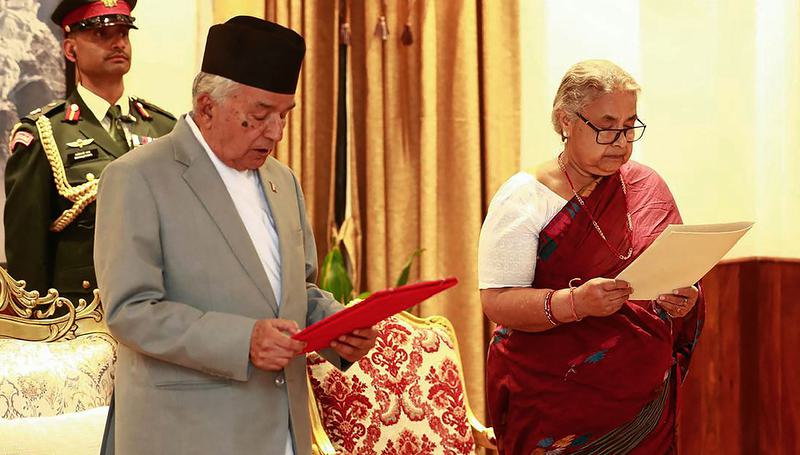
- 16 Sep 2025
In News:
Nepal has entered a crucial phase of political transition with the appointment of Sushila Karki, former Chief Justice and now the country’s first woman Prime Minister. President Ram Chandra Poudel administered the oath of office after dissolving Parliament and announcing fresh elections for March 5, 2026, marking a historic moment in Nepal’s democratic evolution.
Background: Political Turmoil and Gen Z-Led Movement
The decision came amid widespread Gen Z-led protests against former Prime Minister K.P. Sharma Oli, whose administration was accused of corruption, authoritarianism, and a social media ban that triggered nationwide unrest.
Facing pressure from the streets, the military, and constitutional experts, President Poudel dissolved the House and endorsed Karki’s appointment — a move described as a “remedial measure” during a political crisis. The protests, dominated by youth and digital activists, reflected a broader demand for accountability, transparency, and generational change in Nepal’s governance.
Sushila Karki: A Symbol of Integrity and Democratic Renewal
Aged 73, Sushila Karki is widely regarded as an upright and anti-corruption crusader. She holds a Master’s degree in Political Science from Banaras Hindu University and a Law degree from Tribhuvan University. As Nepal’s first female Chief Justice (2016–17), she was known for her fearless stance against corruption and political interference in the judiciary.
Her appointment as interim Prime Minister is supported by protesters, the Army, and civil society, who view her as a neutral and reformist leader capable of restoring trust in institutions. Her immediate mandate includes:
- Restoring law and order and maintaining peace amid political uncertainty.
- Investigating the September 8 violence and prosecuting those responsible for civilian deaths and attacks on state infrastructure.
- Overseeing the 2026 general elections and ensuring a peaceful, transparent transfer of power.
- Initiating constitutional reforms to strengthen democratic accountability.
Constitutional and Institutional Context
Although some questioned the legality of appointing a non-political figure as Prime Minister following Parliament’s dissolution, constitutional experts assert the decision falls within emergency democratic legitimacy, given the scale of the crisis. The Nepal Army played a stabilizing role throughout the unrest, mediating between the President’s Office and the protesters to ensure an orderly transition.
India–Nepal Relations: Context and Continuity
India welcomed Karki’s appointment, emphasizing stability, peace, and partnership under the ‘Neighbourhood First’ Policy. Nepal’s political stability is vital for India due to geostrategic, cultural, and economic interlinkages.
1. Geopolitical Significance:Nepal shares borders with five Indian states — Sikkim, West Bengal, Bihar, Uttar Pradesh, and Uttarakhand. Situated between India and China, it holds strategic importance in South Asian geopolitics.
2. Defence& Security Cooperation:India and Nepal share deep military ties, including the long-standing tradition of conferring honorary ranks on each other’s Army Chiefs. The Gorkha Regiment further symbolizes this enduring relationship based on mutual respect and trust.
3. Economic and Developmental Partnership:India remains Nepal’s largest trade and investment partner, accounting for over 64% of its trade and 33.5% of total FDI (USD 670 million). Bilateral trade stood at USD 8.85 billion in FY 2022–23, with India importing surplus electricity from Nepal.
India also provides 1,500+ scholarships annually under ITEC and other programs, supporting Nepal’s human resource development.
4. Cultural and People-to-People Ties:The countries share civilizational and religious linkages, exemplified by sites like Pashupatinath Temple (Kathmandu), Janakpur (birthplace of Sita), and Bodh Gaya (India). Over 8 million Nepalis live and work in India, deepening cross-border social integration.
India–Mauritius Relations
- 15 Sep 2025
In News:
- India and Mauritius share a unique relationship anchored in history, culture, and strategic convergence in the Indian Ocean Region (IOR). The visit of Mauritius Prime Minister Navinchandra Ramgoolam to Varanasi in 2025 marked a new milestone, with India announcing a USD 680 million Special Economic Package.
- The package seeks to strengthen bilateral cooperation in infrastructure, defence, maritime security, and cultural ties, while reinforcing India’s role as a key development and security partner in the region.
Key Features of the Special Economic Package (2025)
- Infrastructure Development: At least 10 projects, including completion of the new Air Traffic Control (ATC) tower at SSR International Airport, expansion of highways and ring roads, and the development of Motorway M4.
- Healthcare & Education: Establishment of new schools and hospitals.
- Maritime Cooperation: Redevelopment of Port Louis into a stronger maritime hub, and agreements on hydrography for joint surveys and navigation charts of Mauritius’ Exclusive Economic Zone (EEZ).
- Chagos Archipelago Engagement: In-principle agreement for joint surveillance of the Chagos Marine Protected Area, where the Diego Garcia base (operated by the US-UK) is located. India strongly backed Mauritius’ sovereignty claims, consistent with its support for decolonisation.
- Trade Facilitation: Bilateral trade in local currencies to be enabled, following the launch of UPI and RuPay cards in Mauritius.
- Security Partnership: India reaffirmed its role as Mauritius’ “first responder” and “net security provider” in the Indian Ocean, providing hydrographic support, refitting Mauritius Coast Guard ships, and training personnel.
Historical and Cultural Ties
- Migration: Indian migration to Mauritius began under French rule (1700s) and intensified during British rule post-1834, when nearly 500,000 indentured labourers arrived, most of whom settled permanently.
- Demographics: Today, about 70% of Mauritius’s population (1.2 million) is of Indian origin, strengthening cultural and familial bonds.
- National Day: Mauritius celebrates its National Day on March 12, coinciding with Mahatma Gandhi’s Dandi March, reflecting its deep-rooted civilizational connect with India.
Economic and Commercial Relations
- Trade: In FY 2022–23, bilateral trade stood at USD 554.19 million, with Indian exports at USD 462.69 million.
- FDI: Mauritius remains a significant investor in India—second-largest source of FDI (FY 2023–24) after Singapore.
- CECPA (2021): The Comprehensive Economic Cooperation and Partnership Agreement was India’s first trade agreement with an African country, expanding market access in goods, services, and investment.
- DTAA (1982): While the Double Taxation Avoidance Agreement facilitated investments, it also raised concerns of misuse for money laundering and round-tripping.
Defence and Security Cooperation
- India is Mauritius’ preferred defence partner, supplying platforms like Dornier aircraft and Advanced Light Helicopters (Dhruv), along with a USD 100 million Line of Credit for defence procurement.
- Joint patrolling, hydrographic surveys, and capacity building highlight the depth of security ties.
- The Agaléga Island Projects (airstrip and jetty, inaugurated in 2024) enhance maritime domain awareness and India’s strategic reach in the southwest Indian Ocean.
Strategic Significance of Mauritius for India
- Geopolitical Location: Mauritius, located 800 km east of Madagascar, is a crucial node for maritime security and trade in the Indian Ocean.
- Countering China: China’s growing influence, marked by its 2021 FTA with Mauritius under the Belt and Road Initiative (BRI), necessitates stronger India–Mauritius collaboration.
- Blue Economy: Mauritius’ EEZ expansion (post-treaty with the UK over Chagos) provides new opportunities in fisheries, offshore energy, and maritime resources, where India is a preferred partner.
- Regional Cooperation: Mauritius is active in the Indian Ocean Rim Association (IORA), aligning with India’s SAGAR vision—“Security and Growth for All in the Region”—and Vision MAHASAGAR.
Sarcoidosis
- 15 Sep 2025
In News:
- Sarcoidosis is a chronic inflammatory diseasecharacterised by the formation of granulomas—small clusters of immune cells—in multiple organs, most commonly the lungs and lymph nodes.
- The condition has a highly variable clinical course, ranging from asymptomatic or mild presentations to severe, life-threatening complications.
- Recent peer-reviewed studies, including those published in Nature Reviews Disease Primers,emphasise the importance of early diagnosis, timely intervention, and awareness of risk factors in improving patient outcomes.
Causes and Risk Factors
- The exact cause of sarcoidosis remains unknown, but evidence points towards a combination of genetic susceptibility, immune system overactivity, and environmental triggers.
- Possible stimuli include bacteria, viruses, dust, and chemical exposure. Certain gene variations may predispose individuals, with the immune system reacting abnormally, leading to chronic inflammation and granuloma formation.
Symptoms and Clinical Manifestations
Symptoms vary depending on organ involvement:
- Pulmonary (most common): persistent cough, shortness of breath, chest pain; advanced cases may progress to pulmonary fibrosis and respiratory failure.
- Skin: rashes, bumps, or nodules; tender sores (erythema nodosum).
- Eyes: redness, pain, blurred vision.
- Cardiac: irregular heartbeats, heart failure.
- Neurological: seizures, facial paralysis, or peripheral nerve damage.
Some patients remain asymptomatic, with the disease detected incidentally during routine examinations.
Diagnosis
Diagnosis requires a combination of clinical evaluation, imaging, and biopsy.
- Chest X-rays/CT scans often reveal characteristic granuloma patterns.
- Biopsy confirms non-caseating granulomas, distinguishing sarcoidosis from infections and malignancies.
- Blood tests and lung function tests help assess disease activity and organ damage.
Treatment Approaches
There is no definitive cure for sarcoidosis, but management depends on severity and organ involvement:
- Mild/asymptomatic cases: often require only observation and regular monitoring.
- Moderate to severe cases: treated with corticosteroids (e.g., prednisone) to suppress inflammation.
- Refractory cases: immunosuppressive agents (methotrexate, azathioprine) or biologic therapies targeting immune pathways.
Long-Term Outlook
The prognosis is highly variable:
- Many cases resolve spontaneously within a few years.
- Others may become chronic, causing permanent lung scarring, cardiac complications, or organ dysfunction.
- Early detection and continuous monitoring remain critical to preventing irreversible damage.
Public Health Relevance
Sarcoidosis highlights the complex interaction between genetics, immunity, and environment. Its unpredictable nature underlines the need for:
- Awareness campaigns for early recognition of symptoms.
- Strengthening diagnostic infrastructure in primary healthcare.
- Research on genetic predispositions and immunological mechanisms to develop targeted therapies.
Doctrine of Contributory Negligence
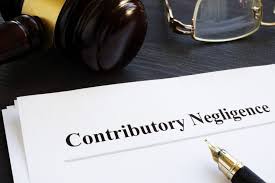
- 15 Sep 2025
In News:
The Andhra Pradesh High Court has recently clarified that the doctrine of contributory negligence cannot be invoked as a defence in criminal prosecutions. It held that a person driving rashly and negligently, causing death, will be held liable under Section 304A of the Indian Penal Code (IPC), even if the victim was partly negligent. This landmark ruling reinforces the distinction between civil liability for damages and criminal liability for offences.
Doctrine of Contributory Negligence: Concept
- Contributory negligence rests on the principle that every individual must exercise reasonable care for their own safety.
- If an injured party’s negligence contributes to the harm, they may be considered partly responsible.
- The doctrine stems from the legal maxim “Volenti non fit injuria” — one who consents to risk cannot later claim damages.
- Example: If a pedestrian crosses the road carelessly and is hit by a rash driver, the pedestrian’s conduct may reduce their claim for compensation in civil law.
Civil Law vs. Criminal Law Application
- Civil Law:
- Contributory negligence acts as a defence, reducing damages payable by the defendant.
- Indian courts often apply the principle of comparative negligence, apportioning liability based on the degree of fault of each party.
- Burden of proof lies on the defendant to show that the plaintiff’s negligence contributed to the harm.
- Criminal Law:
- The AP High Court clarified that contributory negligence is not a defence to criminal liability.
- Section 304A IPC punishes causing death by rash or negligent act, irrespective of victim’s conduct.
- Even if the victim was negligent, the accused cannot escape responsibility if their rashness directly caused the death.
Judicial Reasoning and Precedent
- Criminal liability is premised on breach of legal duty and societal responsibility, not merely individual claims of fairness.
- If contributory negligence were allowed as a defence in criminal law, it could dilute accountability and weaken deterrence against rash driving.
- By upholding strict liability under Section 304A IPC, the court reinforced that public safety outweighs individual contributory fault.
Indian Legal Position
- India does not have a codified statute on contributory negligence; instead, principles are derived from common law and judicial interpretation.
- In civil cases, courts exercise discretion to distribute damages fairly.
- In criminal prosecutions, however, the focus remains on the offender’s culpability, not the victim’s carelessness.
Significance of the Ruling
- Public Safety: Strengthens accountability for rash driving and negligent acts, a major cause of road fatalities in India.
- Doctrinal Clarity: Clearly separates the scope of contributory negligence in civil law from its inapplicability in criminal law.
- Victim-Centric Approach: Ensures justice is not denied to victims’ families on grounds of partial fault.
- Judicial Consistency: Aligns with the principle that criminal law serves deterrence and social protection, unlike civil law which primarily compensates.
Border Wing Home Guards
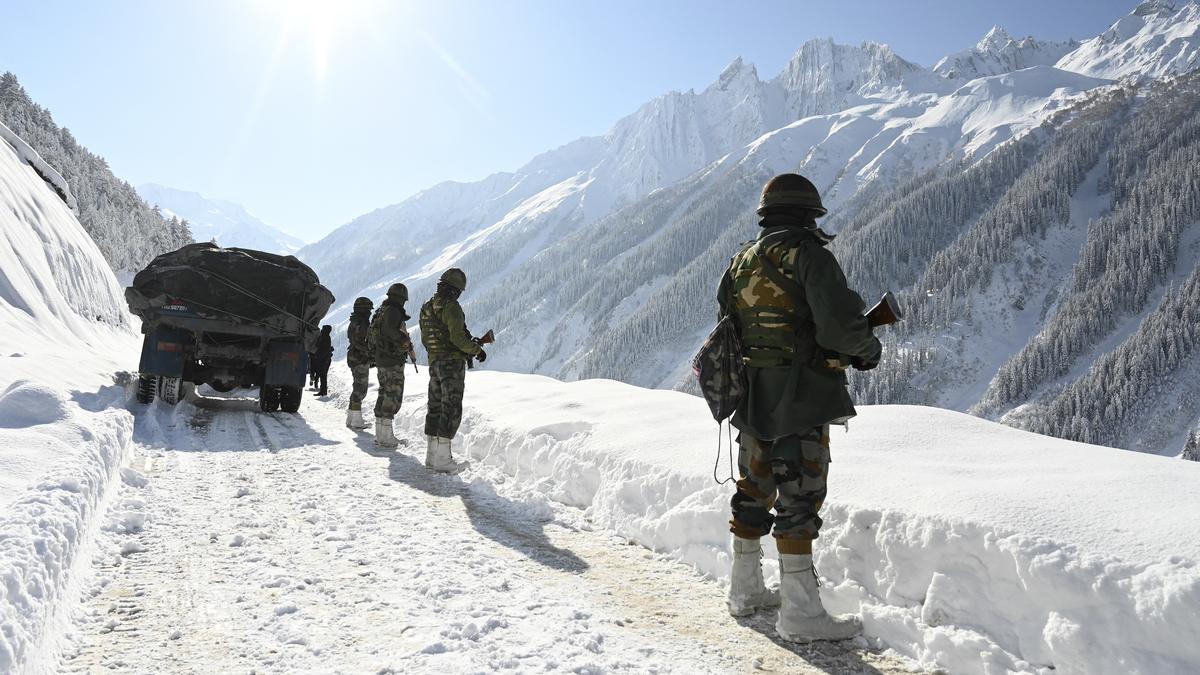
- 15 Sep 2025
In News:
The Union Ministry of Home Affairs (MHA) is contemplating the deployment of Border Wing Home Guards (BWHG) along the India–China border, on the lines of their existing role along the India–Pakistan border. This move reflects India’s evolving approach to border management, civilian participation in security, and augmentation of regular forces like the Indo-Tibetan Border Police (ITBP).
About Border Wing Home Guards (BWHG)
- Legal Framework: Home Guards are constituted under the Home Guards Act and Rules of States/Union Territories.
- Authorised States: Seven states have been authorised to maintain BWHGs — Meghalaya, Tripura, Assam, West Bengal, Punjab, Rajasthan, and Gujarat.
- Current Status: Presently, Rajasthan is the only state with active BWHGs.
- Tenure & Duties: Members are usually enlisted for 3–4 years, perform responsibilities similar to police constables, and receive training with 25% of costs borne by the Central Government.
Recruitment and Composition
- Open to individuals from all classes and walks of life, who volunteer their spare time for community and national service.
- Trained to act as a reserve force, capable of rapid mobilisation during border crises and emergencies.
Roles and Responsibilities
- Border Security:
- Act as ancillaries to the Army and ITBP.
- Assist in guarding vital installations, vulnerable areas, and border outposts, particularly during hostilities.
- Internal Security:
- Serve as an auxiliary to the police during law-and-order situations.
- Help in maintenance of essential services, disaster management, and crowd control.
- Community Support:
- Provide assistance during natural calamities such as earthquakes, floods, cyclones, and epidemics.
- Promote communal harmony and support protection of vulnerable sections of society.
- Operational Experience:
- Played a key role in information collection and dissemination during Operation Sindoor.
- Used effectively in intelligence support and area familiarisation along sensitive borders.
Strategic Relevance Along the China Border
- Force Multiplier: Deployment of BWHGs can supplement the ITBP and Army in surveillance, information gathering, and local liaison in border villages.
- Civil–Military Synergy: Encourages participation of local communities in security efforts, thereby improving intelligence flow and fostering trust.
- Cost-Effective Option: As they are part-time volunteers with limited tenure, they reduce the financial burden compared to raising additional paramilitary units.
- Border Management: Their presence may strengthen village defence networks in frontier areas, countering infiltration and enhancing preparedness.
INS Aravali

- 15 Sep 2025
In News:
The Indian Navy has recently commissioned INS Aravali, its latest naval base, at Gurugram, Haryana. Named after the ancient Aravali mountain range, the establishment is envisaged as a nerve centre for command, control, and Maritime Domain Awareness (MDA) operations, marking a significant stride in India’s maritime security architecture.
Strategic Importance
INS Aravali is designed to enhance the Navy’s information and communication infrastructure, which is central to modern maritime operations. Located in Gurugram—close to the national capital—it will support real-time decision-making, inter-agency coordination, and domain awareness across the vast Indian Ocean Region (IOR). This reflects India’s aspiration to position itself as the Preferred Security Partner in the IOR amidst evolving geopolitical challenges.
Motto and Vision
Guided by the motto “Maritime Security through Collaboration”, INS Aravali embodies a cooperative approach to maritime defence. It seeks synergy between naval information centres, maritime agencies, and allied stakeholders. The base also aligns with India’s broader strategic vision of MAHASAGAR (Mutual and Holistic Advancement for Security and Growth Across Regions), which underlines collaborative security and regional growth.
Symbolism and Identity
The crest of INS Aravali carries deep symbolism:
- A central mountain signifies the resilience and enduring strength of the Aravali Range.
- A rising sun reflects eternal vigilance, renewal, and the dawn of technological advancement in naval communications.
Together, they highlight the base’s mission to combine steadfastness with innovation in safeguarding India’s maritime interests.
Role in Maritime Domain Awareness (MDA)
MDA has become indispensable in an era of increasing threats, including piracy, illegal fishing, smuggling, cyber vulnerabilities, and grey-zone conflicts. INS Aravali’s role is to integrate satellite-based monitoring, coastal radar networks, information fusion, and real-time communication to ensure seamless surveillance of India’s maritime domain. It also supports the Navy’s partnerships with regional navies, reflecting the Indo-Pacific emphasis on collaborative security.
Broader Significance
- National Security: Enhances India’s capability to respond rapidly to maritime threats and secure sea lanes of communication, vital for trade and energy security.
- Regional Diplomacy: Strengthens India’s profile as a net security provider in the Indian Ocean, reinforcing strategic trust among neighbouring littoral states.
- Technological Edge: Demonstrates the Navy’s focus on modern information infrastructure and cyber-resilient systems to address multi-dimensional security challenges.
- Civil-Military Integration: Showcases participatory security governance by working with other agencies, reflecting a whole-of-government approach.
Non-communicable Diseases
- 14 Sep 2025
In News:
Non-Communicable Diseases (NCDs) such as cardiovascular disorders, diabetes, chronic respiratory ailments, and cancers have emerged as the leading cause of premature mortality globally. A recent Lancet study tracking progress across 185 countries (2010–2019) highlighted a worrying trend for India: unlike most nations where mortality risk from NCDs declined, India witnessed an increase in NCD-related deaths, especially among women.
Key Findings from the Lancet Study
- Rising Mortality Risk: Between 2010–2019, NCD mortality in India increased by 2.1% for females and 0.1% for males, compared to a decline in the previous decade.
- Probability of Death Before 80:
- Women – rose from 46.6% (2010) to 48.7% (2019).
- Men – remained high at 57.9% (2019), up from 57.8% (2010).
- Major Drivers: Ischaemic heart disease and diabetes (including kidney disease due to diabetes) contributed most to the rising risk, especially in women over 40 and men over 55.
- Improvements: Declines in deaths from liver cirrhosis, stroke, COPD, and stomach cancer were recorded, largely due to better blood pressure awareness and management.
Causes of the NCD Burden in India
- Lifestyle Factors
- Rapidly rising obesity, driven by unhealthy diets and sedentary lifestyles.
- Increased consumption of processed foods, sugary beverages, and trans fats.
- Tobacco and alcohol use.
- Environmental & Social Factors
- Urbanization, pollution (ambient and indoor), and chronic stress.
- Ageing population and poverty-driven dietary imbalances.
- Health System Gaps
- Limited access to quality primary care and preventive services.
- Low penetration of screening and early detection programmes in rural areas.
Expert Insights
- Diabetes–Obesity–Heart Disease Spiral: Experts warn that India’s growing obesity rates are fuelling diabetes, which in turn increases risks of cardiovascular complications.
- Policy Solutions Suggested:
- Aggressive taxation (up to 40%) on sugary drinks and ultra-processed foods.
- Subsidies for vegetables, fruits, and nutrient-rich foods.
- Urban planning reforms to create walking spaces and encourage physical activity.
- Public campaigns against tobacco, alcohol, excess salt, and stress.
- Tackling pollution as a compounding risk factor.
National Initiatives to Combat NCDs
- National Programme for Prevention and Control of NCDs (NP-NCD): Launched in 2010, expanded in 2023, focuses on early detection, management, and referral.
- 75/25 Initiative (2023): Targets 75 million people with hypertension and diabetes by 2025 through standardized care.
- Ayushman Bharat–PMJAY: Provides financial protection for tertiary NCD treatment and upgrades PHCs into Ayushman Arogya Mandirs.
- Eat Right India Movement (FSSAI): Promotes healthier diets and reduction of trans fats.
- Fit India Movement: Encourages regular physical activity and fitness to reduce lifestyle-related risks.
Way Forward
India’s NCD challenge demands a multi-pronged strategy:
- Strengthening primary healthcare for screening and early detection.
- Fiscal measures (taxes and subsidies) to influence dietary choices.
- Health education campaigns to promote lifestyle modifications.
- Integration of NCD management into universal health coverage.
- Climate and pollution control measures, given their direct links to respiratory and cardiac illnesses.
Five Years of Blue Revolution 2.0
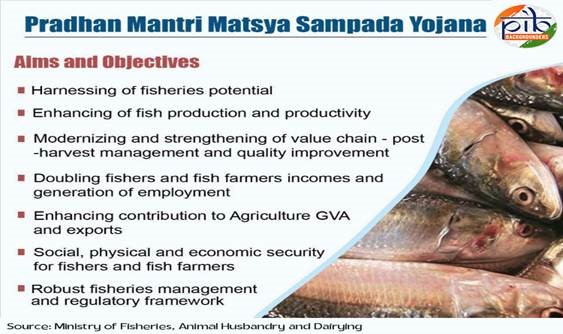
- 14 Sep 2025
In News:
India’s fisheries sector has been a key driver of food security, livelihoods, and exports. The Blue Revolution (2015) enhanced fish production and modernized infrastructure but left gaps in post-harvest management, market access, fisher welfare, and sustainability.
To bridge these, the government launched the Pradhan Mantri MatsyaSampada Yojana (PMMSY) in September 2020, with an investment of ?20,050 crore. It sought to make the sector ecologically sustainable, economically viable, and socially inclusive. The scheme has now been extended up to 2025–26.
Objectives
PMMSY aims to:
- Harness fisheries potential in a sustainable, equitable, and responsible manner.
- Enhance fish production, diversification, and efficient use of land and water.
- Strengthen value chains through modernized post-harvest infrastructure and quality improvements.
- Double incomes of fishers and generate large-scale employment.
- Enhance contribution to Agriculture GVA and exports.
- Provide social, physical, and economic security for fishers.
- Establish a robust fisheries management and regulatory framework.
The scheme functions through two components:
- Central Sector Scheme (CS): Fully funded by the Centre.
- Centrally Sponsored Scheme (CSS): Cost-sharing with states, further divided into beneficiary and non-beneficiary oriented activities.
Milestones and Achievements
In its first five years, PMMSY has significantly reshaped India’s fisheries sector:
- Production: Fish output rose from 141.64 lakh tonnes (2019–20) to a record 195 lakh tonnes in 2024–25, making India the second-largest fish producer globally (8% of world production).
- Exports: Grew from ?46,662 crore (2019–20) to ?60,524 crore (2023–24), strengthening India’s global seafood footprint.
- Livelihoods: Created nearly 58 lakh jobs and supported 99,018 women beneficiaries, with up to 60% subsidy support for women entrepreneurs.
- Technology adoption: Supported 52,058 reservoir cages, 22,057 RAS &Biofloc units, 1,525 sea cages, and raceways, making aquaculture more productive and climate-resilient.
- Post-harvest infrastructure: Approved projects worth over ?3,281 crore for 58 fishing harbours, 734 cold storages, 21 wholesale fish markets, 192 retail markets, 6,410 kiosks, and digital fish trade platforms.
- Community resilience: Declared 100 Climate Resilient Coastal Fishermen Villages and promoted sustainable technologies like Biofloc, which reduces water use and boosts productivity.
Supplementary Initiatives
- Pradhan Mantri MatsyaKisanSamridhiSah Yojana (PM-MKSSY): Launched in 2024 as a central sub-scheme with an outlay of ?6,000 crore (2023–27). Focuses on formalisation, aquaculture insurance, value chain efficiency, and quality assurance.
- National Fisheries Digital Platform (NFDP): Introduced in 2024 to digitise the sector, provide work-based digital identities, enhance credit access, ensure traceability, and integrate cooperatives. By September 2025, it had 2.7 million registrations.
Challenges
- Climate stress: Rising sea temperatures and extreme weather threaten coastal ecosystems.
- Infrastructure gaps: Cold storage and transport remain inadequate in remote areas.
- Overfishing: Risks depletion of marine resources.
- Limited reach: Many small-scale fishers lack awareness and access to formal schemes.
Scarborough Shoal Dispute
- 14 Sep 2025
In News:
The Scarborough Shoal, a triangular atoll in the South China Sea, has once again become a flashpoint after China announced the establishment of a 3,524-hectare nature reserve in the disputed waters. The move has drawn strong protests from the Philippines, which claims sovereignty over the feature and views China’s step as an assertion of jurisdiction under the guise of ecological protection.
Geographical and Strategic Significance
- The shoal is located about 220 km west of the Philippines’ Luzon Island and falls well within Manila’s 200-nautical mile Exclusive Economic Zone (EEZ) under the 1982 UN Convention on the Law of the Sea (UNCLOS).
- Claimed by both China (which calls it Huangyan Island) and the Philippines (locally known as Panatag Shoal or Bajo de Masinloc), sovereignty over the shoal remains unsettled.
- Its location near major global shipping lanes that carry over $3 trillion worth of trade annually enhances its geostrategic value.
- The lagoon and surrounding waters are rich in fish stocks, shellfish, and sea cucumbers, making it a vital fishing ground for regional communities.
Historical and Legal Context
- China’s claim: Traced back to maps from the Yuan Dynasty (1200s), Beijing argues historical sovereignty.
- Philippines’ claim: Based on proximity, falling within its EEZ, and backed by the 2016 Permanent Court of Arbitration (PCA) ruling under UNCLOS, which invalidated China’s “nine-dash line” claim. The ruling, however, did not adjudicate on sovereignty but recognized the shoal as a traditional fishing ground for multiple nations.
- Control: China seized effective control of the shoal in 2012 after a naval standoff and has since maintained coast guard and fishing militia presence, often intercepting Filipino vessels.
China’s Nature Reserve Plan
- China has approved a marine protected area to conserve the coral reef ecosystem of the shoal.
- Chinese officials argue it reflects improved “jurisdiction and governance” and claim Filipino fishermen are responsible for overfishing and pollution.
- Critics, however, view the reserve as a political instrument to strengthen Chinese control and potentially restrict access to Filipino fishermen under the pretext of conservation.
- The Philippines has accused China of coral destruction and giant clam harvesting, raising the possibility of fresh international arbitration on environmental grounds.
Regional and Global Reactions
- Philippines: Strongly protested the move, viewing it as a violation of its sovereign rights. President Ferdinand Marcos Jr. has leveraged the issue domestically while deepening ties with the United States.
- United States: Condemned the reserve plan as “destabilising and coercive.” Under the 1951 Mutual Defence Treaty, Washington has pledged to defend the Philippines against armed attacks, including those occurring “anywhere in the South China Sea.”
- Risk of escalation: Recent incidents—such as the use of water cannons, ramming of boats, and close aerial encounters—underline the danger of miscalculation, though both sides avoid direct combat to prevent escalation.
- Expert views: Chinese analysts frame the reserve as ecological protection, while Philippine experts argue it is a strategic tool to consolidate Beijing’s de facto control and marginalize other claimants.
Implications
- For the Philippines:
- Raises questions about maritime security and economic livelihood of fishermen.
- Strengthens its reliance on the U.S. alliance for deterrence.
- For China:
- Enhances its long-term maritime footprint and jurisdictional claims.
- Risks further international pushback, reinforcing perceptions of coercion.
- For International Order:
- Challenges the enforcement of UNCLOS and undermines multilateral dispute settlement mechanisms.
- Escalates tensions in one of the world’s busiest waterways with direct implications for global trade.
AdFalciVax
- 14 Sep 2025
In News:
- The Indian Council of Medical Research (ICMR) has recently licensed its indigenous multi-stage malaria vaccine, AdFalciVax, to five Indian pharmaceutical companies — Indian Immunologicals Limited, Techinvention Lifecare Private Limited, Panacea Biotec Limited, Biological E Limited, and Zydus Lifesciences.
- The technology transfer follows an Expression of Interest (EoI) process launched in July 2025, inviting eligible organisations to commercialise the vaccine.
About AdFalciVax
AdFalciVax is India’s first recombinant multi-stage malaria vaccine, developed by the Regional Medical Research Centre (RMRC), Bhubaneswar, under ICMR. It is specifically designed to tackle Plasmodium falciparum, the most lethal malaria parasite responsible for high morbidity and mortality across tropical regions.
Key Features
- Dual-purpose protection: Prevents Plasmodium falciparum infection in individuals and reduces community-level transmission.
- Pre-bloodstream targeting: Stops the parasite before it reaches the bloodstream, breaking the infection cycle.
- Novel technology: Uses Lactococcus lactis, a genetically engineered food-grade bacterial host, as its delivery system.
- Dual-antigen approach:
- PfCSP (Plasmodium falciparum circumsporozoite protein) – prevents initial infection.
- Pfs230 and Pfs48/45 fusion proteins – block parasite transmission from humans to mosquitoes.
- Validated research: Pre-clinical trials conducted in collaboration with ICMR–National Institute of Malaria Research (NIMR) and the National Institute of Immunology (NII), New Delhi, supported by the Department of Biotechnology.
Licensing and Technology Transfer
The licences are granted on a non-exclusive basis, enabling multiple companies to develop, manufacture, and commercialise the vaccine simultaneously. This model is expected to:
- Accelerate vaccine production and reduce costs.
- Ensure wide accessibility within India and potentially in malaria-endemic regions abroad.
- Strengthen India’s position in vaccine innovation and biotechnology.
Significance
- Public health impact: With malaria still a major global health challenge, AdFalciVax offers a potential breakthrough in reducing disease burden.
- Strategic milestone: Marks India’s entry into the development of advanced recombinant vaccines targeting multi-stage pathogens.
- Global relevance: Supports the World Health Organization’s (WHO) goal of reducing malaria cases and deaths by at least 90% by 2030 under the Global Technical Strategy for Malaria.
Biodiversity Heritage Site
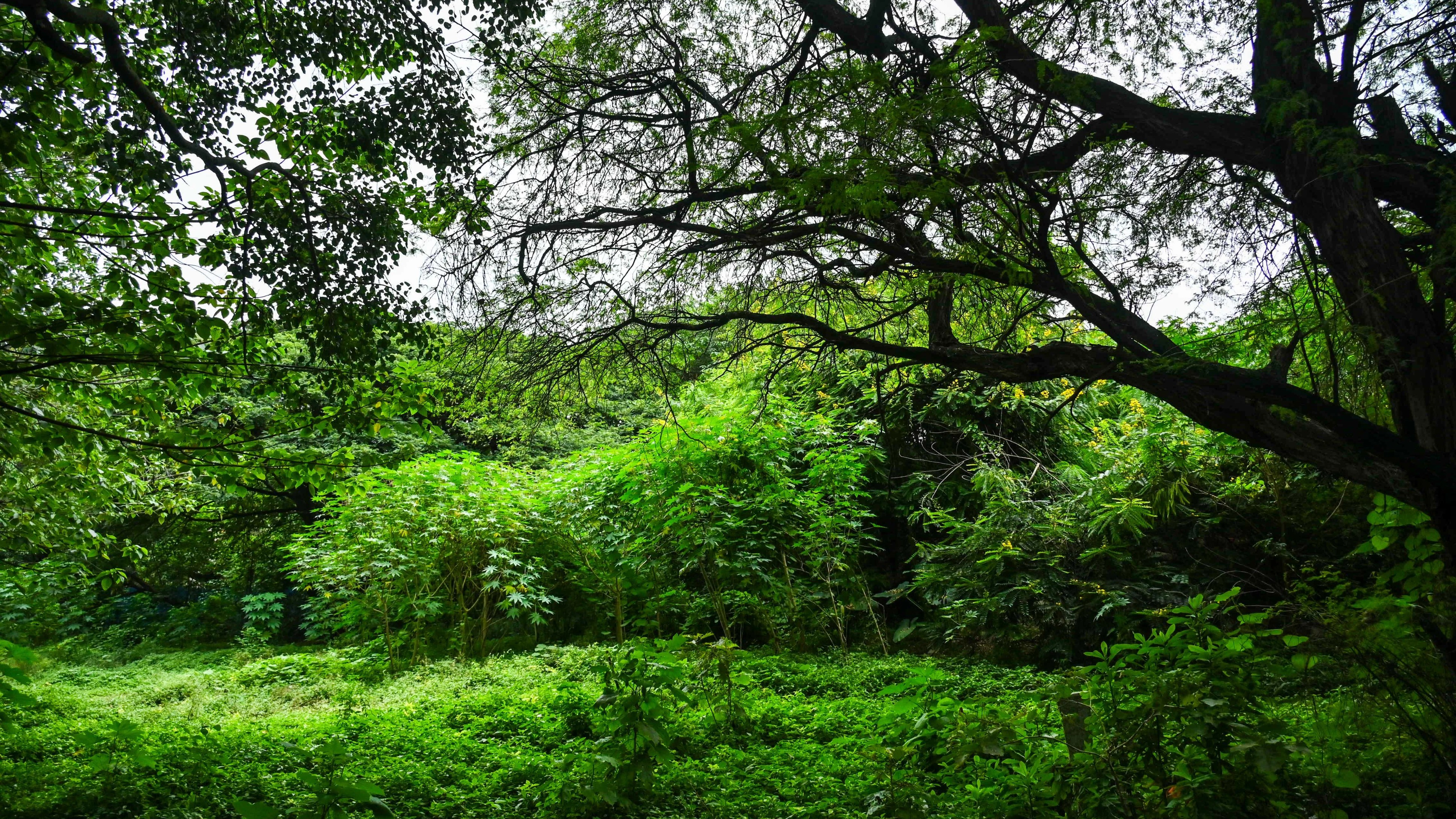
- 14 Sep 2025
In News:
Bengaluru has recently witnessed the declaration of 8.6 acres of green cover at Cantonment Railway Colony as a Biodiversity Heritage Site (BHS)—the second in the city after the Gandhi Krishi Vigyan Kendra (GKVK). This decision marks a crucial step in safeguarding urban green spaces under increasing developmental pressures.
Citizen-led Conservation Movement
- The site was earlier earmarked for commercial development by the Rail Land Development Authority in collaboration with private real estate players. However, strong resistance emerged from citizens and environmental groups, particularly the ParisarakkagiNaavu organization. A large-scale campaign saw the participation of over 15,000 residents, of whom only two opposed the proposal, reflecting strong public consensus in favor of conservation.
- This site houses 371 trees across nearly 50 species, highlighting its ecological diversity. The move demonstrates how community activism and participatory governance can effectively influence environmental decision-making.
About Biodiversity Heritage Sites
Biodiversity Heritage Sites are unique ecosystems identified for their ecological, cultural, and evolutionary significance. They may encompass terrestrial, aquatic, coastal, or marine ecosystems. Key features include:
- High species richness (wild and domesticated), including endemic and threatened species.
- Presence of keystone species, wild ancestors of cultivated plants, or species of evolutionary importance.
- Historical or cultural relevance, such as fossil beds or sites linked with traditional practices.
The first BHS in India was the Nallur Tamarind Grove (2007, Karnataka), and since then, several others have been declared across states.
Legal Framework
The Biological Diversity Act, 2002 (Section 37) empowers state governments to notify areas of biodiversity importance as BHS, in consultation with local bodies. Key provisions include:
- State autonomy in management, conservation, and framing rehabilitation schemes for affected communities.
- Community participation, with no restrictions on prevailing traditional practices unless voluntarily adopted.
- Purpose: Enhancing quality of life and ensuring sustainable use of biodiversity resources.
Thus, the Cantonment Colony green cover’s recognition aligns with both ecological imperatives and community welfare.
Significance for Bengaluru and Urban India
- Urban ecological security: Protecting 8.6 acres of dense green cover helps counteract urban heat islands, air pollution, and biodiversity loss in one of India’s most rapidly expanding cities.
- Community stewardship: The initiative illustrates how local involvement strengthens environmental governance.
- Policy relevance: The case highlights the role of public consultation in environmental decision-making, setting a precedent for other urban centers facing similar challenges.
Perpetual Bonds

- 13 Sep 2025
In News:
- The Indian Renewable Energy Development Agency Ltd (IREDA) has successfully raised ?453 crore through its second issue of Perpetual Bonds at an annual coupon of 7.70%.
- The issue received bids worth ?1,343 crore against the base size of ?100 crore and a Green Shoe option of ?400 crore, resulting in an oversubscription of 2.69 times.
- This fund infusion will help IREDA strengthen its capital base and enhance its ability to finance green and renewable energy projects, in line with India’s clean energy transition goals.
What are Perpetual Bonds?
- Definition: A type of fixed-income security with no maturity date, paying interest indefinitely. They are also called “perps” or “consol bonds.”
- Redemption: Issuers are not obligated to repay the principal, though most bonds have a call option after 5–10 years, allowing issuers to redeem them if market conditions are favorable.
- Returns & Risk:
- Offer higher interest rates to compensate for indefinite tenure.
- Highly sensitive to interest rate fluctuations.
- In case of bankruptcy, bondholders are paid after secured creditors but before shareholders.
- Accounting Perspective: Often treated as equity-like instruments on balance sheets, making them attractive for strengthening capital structure without diluting ownership.
- Usage in India: Commonly issued by banks and financial institutions to meet capital requirements.
Significance of IREDA’s Move
- Capital Strengthening: Provides a stable, long-term source of funds without creating repayment obligations.
- Boost to Renewable Energy: Ensures greater financing availability for solar, wind, bioenergy, and emerging green technologies.
- Market Confidence: Oversubscription reflects investor trust in India’s renewable energy sector and in IREDA’s financial stability.
- Policy Alignment: Supports India’s commitment to achieve 500 GW of renewable capacity by 2030 and transition towards net-zero by 2070.
Isobutanol
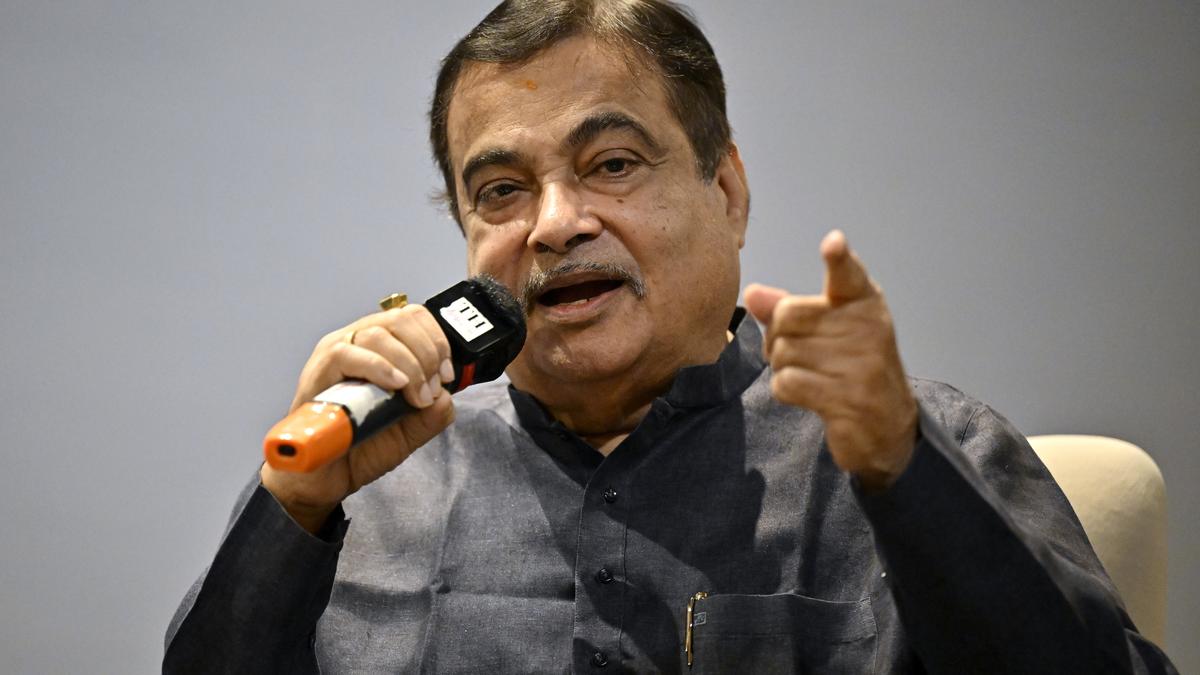
- 13 Sep 2025
In News:
- The Government of India is exploring the possibility of blending isobutanol with diesel, following the limited success of earlier attempts at blending ethanol with diesel.
- At the annual conclave of the India Sugar and Bio-Energy Manufacturers Association (ISMA), Union Minister for Road Transport and Highways, Nitin Gadkari, announced that the Automotive Research Association of India (ARAI) is conducting trials to test the feasibility of 10% isobutanol–diesel blends. Alongside blending, isobutanol is also being considered for standalone fuel applications.
- This development comes at a time when India has been pushing for higher ethanol blending with petrol (20%), but challenges remain in extending the same success to diesel, which accounts for the bulk of transport fuel consumption.
About Isobutanol
- Chemical Nature: An alcohol with the chemical formula C?H??O and one of the four isomers of butanol.
- Physical Properties:
- Clear, colorless liquid with a distinct odor.
- Moderately soluble in water.
- Highly flammable with a flash point just above room temperature.
- Vapors are heavier than air, making handling risky.
- Health Hazards: Prolonged exposure can cause skin irritation, eye damage (including vision loss), and respiratory issues.
Applications of Isobutanol
- Industrial Uses: Widely used as a solvent in paints, coatings, lacquers, flavor and fragrance industries, pharmaceuticals, and pesticides.
- Food Additive: Approved for limited use; also found naturally in some foods and alcoholic beverages.
- Biofuel Potential:
- Can be manufactured from plant-based sources using fermentation, often derived from ethanol.
- Higher energy density (heating value) compared to ethanol.
- Less corrosive and less hygroscopic than ethanol, enabling easier storage and transport in existing infrastructure.
- High octane rating, making it suitable for internal combustion engines.
- Unlike ethanol, it does not significantly distort vapor pressure when blended with gasoline.
Significance for India
- Energy Security: Diversifying biofuel options can reduce reliance on crude oil imports.
- Environmental Benefits: Biofuel adoption helps lower greenhouse gas emissions.
- Industrial Opportunities: Opens new avenues for sugar and bio-energy industries, which are central to India’s ethanol economy.
- Policy Alignment: Supports the government’s push towards alternative fuels and cleaner mobility under initiatives like the National Bio-Energy Mission.
Fast Track Immigration-Trusted TravellerProgramme
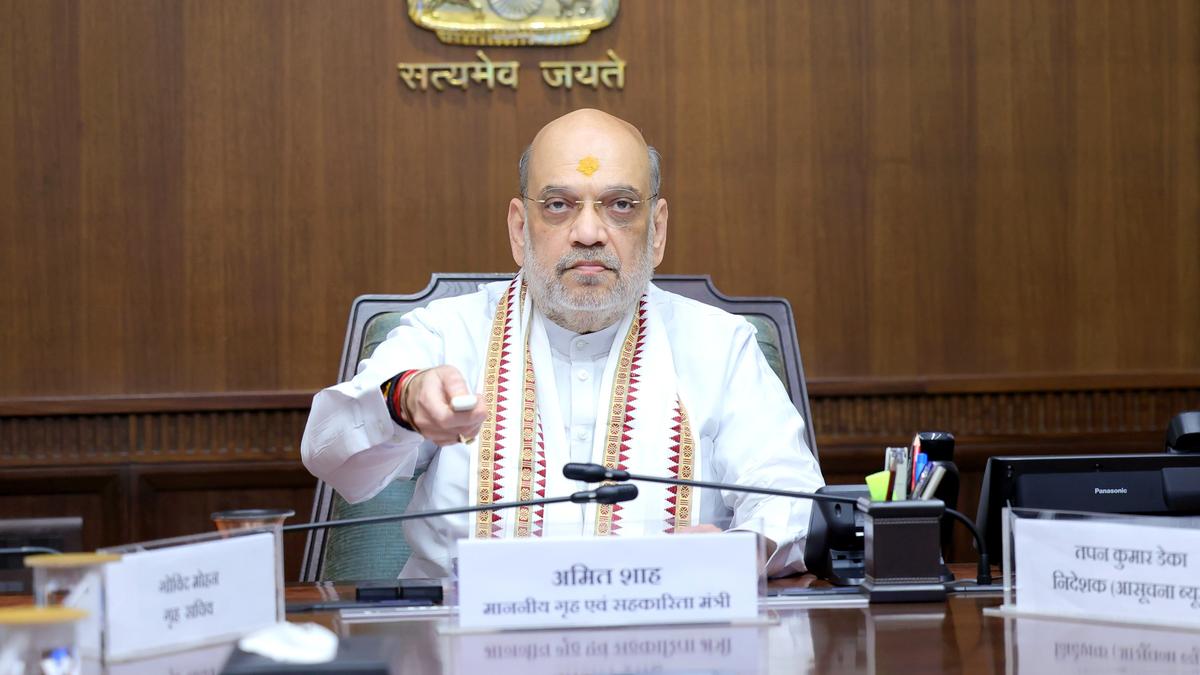
- 13 Sep 2025
In News:
- The Union Home Minister recently launched the Fast Track Immigration – Trusted TravellerProgramme (FTI-TTP) at five additional airports — Lucknow, Thiruvananthapuram, Tiruchirappalli, Kozhikode, and Amritsar — further expanding its coverage across the country.
- The initiative aims to provide seamless, secure, and faster immigration clearance for Indian citizens and Overseas Citizen of India (OCI) cardholders.
Background and Coverage
- Launch: First introduced at Delhi’s Indira Gandhi International (IGI) Airport in 2024.
- Latest Expansion: Now operational at 13 airports nationwide.
- Nodal Agency: Implemented by the Bureau of Immigration (BoI) under the Ministry of Home Affairs (MHA).
Objectives
- To reduce waiting time at immigration counters.
- To enhance international mobility of Indian citizens and OCI cardholders.
- To ensure convenient yet secure border management using digital technology.
Enrollment and Process
- Online Registration: Applicants must apply via the official portal https://ftittp.mha.gov.in, providing personal details and uploading documents.
- Biometric Capture: Collected either at Foreigners Regional Registration Offices (FRROs) or at the airport.
- Immigration Process at e-Gates:
- Boarding pass scan to fetch flight details.
- Passport scan for identity verification.
- Biometric authentication (fingerprint/face scan).
- Automated clearance — the e-gate opens within 30 seconds, eliminating the need for manual checks.
- Validity: Enrollment remains valid until the passport expires or for five years, whichever is earlier, with provision for renewal.
Significance
- Cuts down long queues at airports, reducing clearance time to under 30 seconds.
- Aligns with India’s vision of Digital Governance and Smart Borders.
- Enhances traveller experience, particularly for frequent international flyers.
- Strengthens security protocols through biometric and digital verification.
National Forest Martyrs Day 2025

- 13 Sep 2025
In News:
- National Forest Martyrs Day is observed annually on September 11 to pay tribute to forest officials, personnel, and community members who have sacrificed their lives while protecting India’s forests and wildlife.
- The day recognizes the risks undertaken in the line of duty against threats like illegal logging, poaching, encroachment, and forest fires.
Historical Background
- The observance is rooted in the Khejarli Massacre of 1730 in present-day Rajasthan. When Maharaja Abhai Singh of Marwar ordered the felling of Khejri trees for palace construction, the Bishnoi community, led by Amrita Devi Bishnoi, resisted by embracing the trees. In the brutal crackdown, 363 villagers lost their lives to protect their sacred groves.
- This legacy later inspired environmental movements such as the Chipko Movement (1970s), reinforcing India’s tradition of community-led conservation. Recognizing this historic sacrifice, the Ministry of Environment, Forest and Climate Change (MoEFCC) officially declared September 11 as National Forest Martyrs Day in 2013.
Significance
- Commemoration of Sacrifice: The day honours not only the Bishnoi martyrs but also countless forest personnel who have died in the line of duty.
- Environmental Awareness: Highlights the critical role of forests in climate regulation, biodiversity conservation, and ecosystem services like air and water purification.
- Community Involvement: Encourages local communities to uphold traditions of eco-conscious living.
- Policy Emphasis: Reinforces the need for stronger laws and protection mechanisms for natural resources and frontline forest staff.
Observance
The day is marked through:
- Memorial ceremonies in forest departments.
- Tree plantation drives to promote ecological restoration.
- Awareness campaigns and educational programmes in schools and communities.
- Community participation to spread the message of sustainable living and conservation.
All India Debt and Investment Survey (AIDIS) and Situation Assessment Survey (SAS) of Agricultural Households (2026–27)
- 13 Sep 2025
In News:
- The National Statistics Office (NSO), under the Ministry of Statistics and Programme Implementation (MoSPI), is set to conduct two of its flagship household surveys — the All India Debt and Investment Survey (AIDIS) and the Situation Assessment Survey (SAS) of Agricultural Households — during July 2026 to June 2027.
- These surveys are part of the broader framework of the National Sample Survey (NSS), initiated in 1950, which provides critical data on consumption, employment, health, indebtedness, and welfare, forming the backbone of evidence-based policymaking in India.
All India Debt and Investment Survey (AIDIS)
- Origin and Evolution: Traces its roots to the All India Rural Credit Survey (1951-52), later expanded in 1961-62 to cover debt and investment. Since then, AIDIS has been conducted roughly once every decade, with the latest in the 77th Round (2019), at the request of the Reserve Bank of India (RBI).
- Coverage: Captures data on household indebtedness, savings, and asset ownership across rural and urban households.
- Significance:
- Inputs for national accounts and measurement of wealth distribution.
- Helps assess inequality in asset ownership and functioning of credit markets.
- Provides a crucial evidence base for the RBI, MoSPI, and financial policymakers.
Situation Assessment Survey (SAS) of Agricultural Households
- Launch and Expansion: Initiated in 2003 to examine the economic conditions of farmers, expanded in 2013 to cover all agricultural households, and further refined in the 2019 round.
- Scope of Coverage:
- Income and expenditure patterns of agricultural households.
- Indebtedness and credit access.
- Ownership of land and livestock.
- Crop and livestock production, farming practices, and adoption of technology.
- Access to government schemes, including crop insurance.
- Policy Relevance: Used extensively by the Ministry of Agriculture and Farmers Welfare, NITI Aayog, researchers, and financial institutions to frame policies for agriculture and rural development.
Technology Perspective and Capability Roadmap (TPCR) 2025
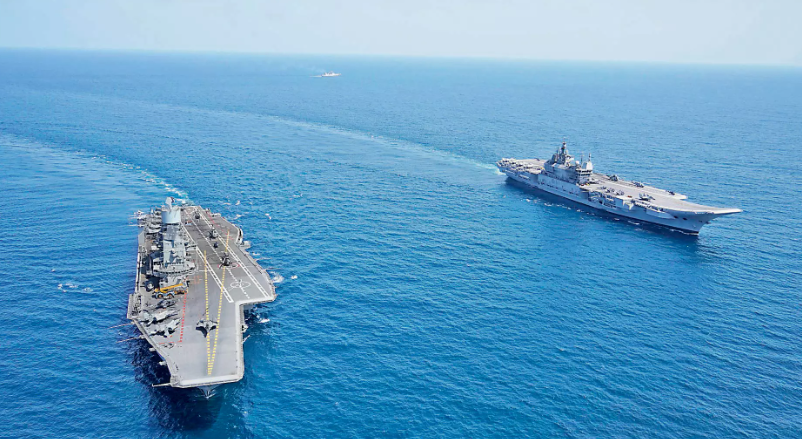
- 12 Sep 2025
In News:
- The Ministry of Defence (MoD) recently released the Technology Perspective and Capability Roadmap (TPCR) 2025, a strategic blueprint outlining India’s defence technology and capability requirements over the next 15 years.
- The roadmap aims to guide the Indian Army, Navy, and Air Force in modernisation while providing domestic industry, academia, and research institutions early visibility to align R&D and production with future procurement needs. Indigenisation and self-reliance form the core of TPCR 2025.
Objectives of TPCR 2025
- Early Visibility for Industry: Help domestic manufacturers and research organisations plan development and production of advanced defence systems.
- Indigenisation: Reduce dependence on imports and promote domestic defence manufacturing.
- Future-Ready Armed Forces: Equip the military to face multi-domain warfare challenges, including cyber, space, AI-enabled, and hybrid conflicts.
- Sustainability: Integration of green logistics and energy-efficient systems in defence operations.
Key Features by Service
Navy:
- Nuclear Propulsion: Plans to induct 10 nuclear propulsion systems for aircraft carriers and large surface combatants, providing virtually unlimited endurance at sea.
- Next-Generation Aircraft Carrier: Equipped with Electromagnetic Aircraft Launch System (EMALS) to launch heavy fighters, airborne early warning aircraft, and UAVs in all sea states. Digital twin simulations to enable predictive maintenance.
- Surface Combatants: Induction of 5–10 destroyers, 7 corvettes, 4 Landing Platform Docks (LPDs) (~29,000 tonnes each), and 100 Next Generation Fast Interceptor Craft for coastal security.
- Underwater Warfare: 20 high-endurance Autonomous Underwater Vehicles (AUVs) for long-range surveillance and mine countermeasures.
- Missiles & Weapons: Over 200 surface-to-surface missiles and universal launchers for multi-platform deployment.
Army:
- ArmouredModernisation: Replacement of ageing T-72 fleet with 1,800 Future Ready Combat Vehicles (FRCVs); 300–400 light tanks for high-altitude sectors.
- Anti-Tank and Precision Weapons: Procurement of 50,000 ATGMs with tandem HEAT warheads, along with 600,000 artillery rounds, emphasising precision-guided munitions.
- UAV & Robotic Systems: Deployment of 70 MALE/HALE UAVs, 800 integrated drone-loitering munitions systems, and 400 ultra-light missiles for UAVs; over 700 robotic counter-IED systems.
- Cyber & AI Warfare: AI-enabled detection, classification, and adaptive jammers creating 15 km electronic denial zones; deepfake detection tools for operational security.
Air Force:
- Directed-Energy Weapons: 10–15 Tactical High-Energy Laser (THEL) systems with ranges of 6–15 km; high-power microwave systems to neutralise incoming threats.
- Stealth and UAVs: 150 stealth bomber drones for deep-strike missions; 100+ remotely piloted aircraft for ISR and strike roles.
- Persistent Surveillance: 75 High-Altitude Pseudo-Satellites (HAPS) and 20 stratospheric airships for continuous ISR and communications over extended periods.
Tri-Services (Joint):
- Hypersonic Missiles: Induction of 500+ scramjet-propelled hypersonic missiles capable of Mach 5+ speeds for rapid strike across land, sea, and air.
- Universal Missile Launchers: Platforms for multiple missile types to ensure interoperability.
- Cyber-Space Preparedness: AI-as-a-service platforms for 4,000 users, quantum key distribution networks, satellite hardening, and post-quantum secure communications.
Cross-Cutting Technologies
- AI & ML: Smart, predictive warfare through digital twin simulations and autonomous systems.
- Hybrid Warfare Capability: Integration of unmanned systems, robotic tools, and precision-guided munitions.
- Green & Sustainable Defence: Energy-efficient platforms and logistics aligned with national sustainability goals.
Strategic Significance
TPCR 2025 positions India to:
- Achieve self-reliance in defence technologies.
- Maintain credible deterrence and modernisation across all domains.
- Address emerging threats in cyber, space, and multi-domain warfare environments.
- Strengthen domestic defence industrial base through early technology visibility.
India’s first port-based Green Hydrogen Pilot Project
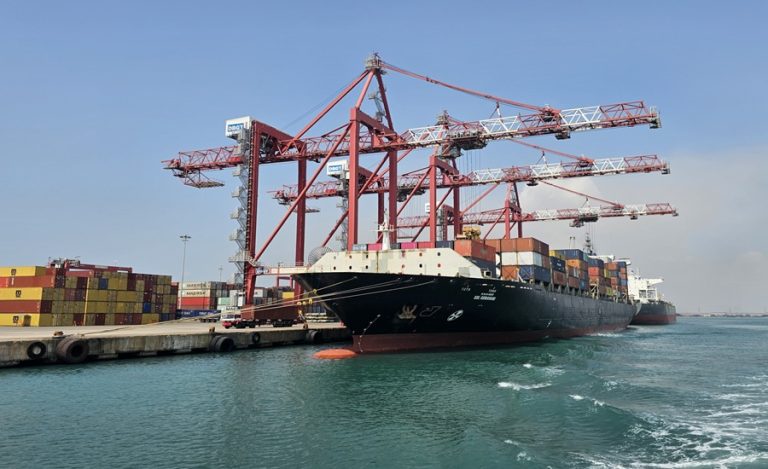
- 12 Sep 2025
In News:
Union Minister for Ports, Shipping and Waterways, SarbanandaSonowal, inaugurated India’s first port-based Green Hydrogen Pilot Project at V.O. Chidambaranar (VOC) Port, Tuticorin, Tamil Nadu, marking a significant step in India’s clean energy transition and green shipping ambitions.
Key Features of the Project
- Capacity: 10 Nm³ per hour.
- Cost: ?3.87 crore.
- Uses: The green hydrogen produced will power streetlights and an EV charging station in the port colony.
- Significance: VOC Port becomes the first Indian port to generate green hydrogen, aligning with India’s vision of Viksit Bharat 2047 and clean energy leadership.
Associated Green Initiatives at VOC Port
- Green Methanol Bunkering and Refuelling Facility
- Capacity: 750 m³, at a cost of ?35.34 crore.
- Expected to make VOC Port a green bunkering hub in South India.
- Linked to the proposed Coastal Green Shipping Corridor (Kandla–Tuticorin).
- Renewable Energy and Infrastructure Projects
- 400 KW rooftop solar plant, raising total capacity to 1.04 MW (highest among Indian ports).
- Foundation for a 6 MW wind farm.
- ?24.5 crore link conveyor to improve coal handling efficiency.
- ?90 crore multi-cargo berth and 3.37 km four-lane road for port connectivity.
- Upcoming Tamil Nadu Maritime Heritage Museum to showcase maritime history.
Strategic Importance
- Port Modernisation: Chennai, Kamarajar, and VOC ports have seen rapid expansion under the SagarmalaProgramme.
- 98 projects worth ?93,715 crore initiated in Tamil Nadu’s ports in the past 11 years.
- 50 projects completed; ?16,000 crore invested in modernisation and capacity building.
- Economic Impact:
- Expected to generate thousands of jobs.
- Attract global investments in green shipping and clean fuels.
- Strengthen India’s ambition of becoming a top 10 shipbuilding nation by 2030 and top 5 by 2047.
About V.O. Chidambaranar (VOC) Port
- Location: Tuticorin, Tamil Nadu, on the Coromandel Coast.
- Status: One of India’s 13 major ports, serving as a key maritime hub for South India.
- History: Formerly Tuticorin Port, renamed in 2011 after freedom fighter V.O. Chidambaranar (KappalottiyaTamizhan).
- Role: Major centre for coal handling, container trade, and now emerging as a green energy hub.
Angikaar 2025 Campaign
- 12 Sep 2025
In News:
The Ministry of Housing and Urban Affairs (MoHUA) has launched Angikaar 2025, a nationwide outreach campaign under the Pradhan Mantri Awas Yojana – Urban 2.0 (PMAY-U 2.0). The initiative seeks to bridge last-mile implementation gaps, accelerate housing delivery, and ensure that welfare benefits reach vulnerable urban families.
Objectives of Angikaar 2025
- Awareness Generation: Create widespread awareness of PMAY-U 2.0 across urban India.
- Housing Delivery: Fast-track verification of applications and completion of sanctioned houses.
- Beneficiary Support: Facilitate access to financial assistance, credit-linked support, and convergence with other welfare schemes.
- Inclusion: Prioritise housing needs of Special Focus Groups identified under PMAY-U 2.0.
Key Features
- Coverage: Over 5,000 Urban Local Bodies (ULBs) across India.
- Activities: Door-to-door campaigns, awareness drives, loan melas, cultural events, and anchor events under PM Awas Mela – Shehri.
- Convergence: Linkage with schemes such as the Credit Risk Guarantee Fund Trust for Low Income Housing (CRGFTLIH) and PM Surya Ghar: Muft Bijli Yojana.
PMAY-U Progress So Far
- Sanctioned Houses: 120 lakh.
- Completed & Delivered: 94.11 lakh pucca houses.
- Pending: Angikaar 2025 will focus on expediting completion of remaining sanctioned houses.
- Future Target under PMAY-U 2.0: Provide financial support (up to ?2.5 lakh per family) to an additional one crore urban families for constructing or purchasing pucca houses.
Significance
- Last-Mile Outreach: Brings government schemes closer to beneficiaries through direct engagement.
- Community Mobilisation: Promotes Jan Bhagidari (people’s participation) via awareness camps and cultural events.
- Holistic Development: Integrates housing with access to electricity, financial inclusion, and basic services.
- Housing for All: Reaffirms the government’s commitment to inclusive and sustainable urban development.
Vulture Network Portal
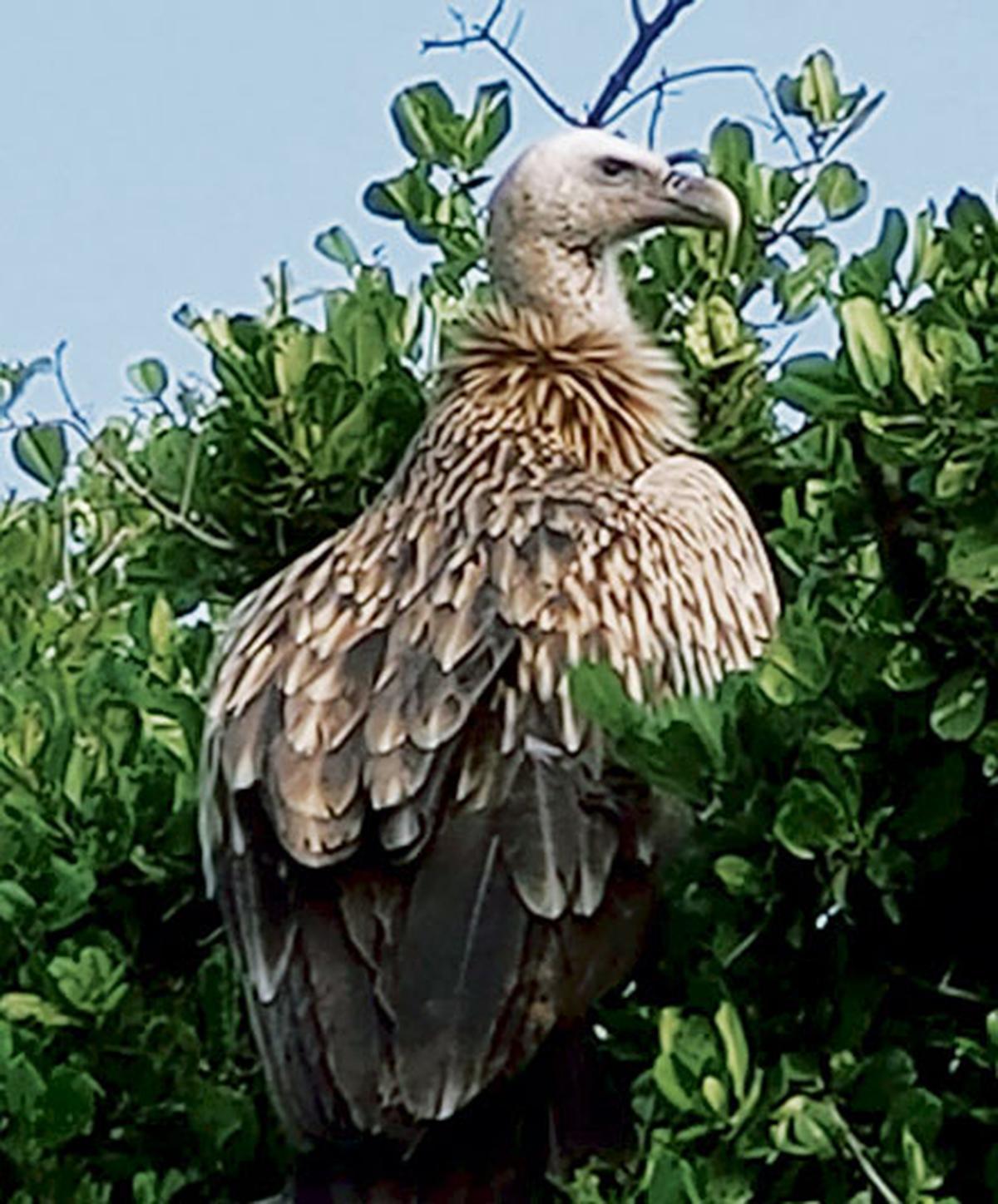
- 12 Sep 2025
In News:
- Vultures, once abundant across India, have faced catastrophic population declines over the past three decades due to carcass poisoning, harmful veterinary drugs (notably diclofenac), and negative social perceptions.
- Recognizing the urgency of conservation, an Assam-based foundation has launched India’s first dedicated vulture conservation portal to create a knowledge-sharing and awareness-driven network for their protection.
The Vulture Network Portal
- Nature: A cloud-based, first-of-its-kind portal in India dedicated to vulture conservation.
- Developer: We Foundation India, in collaboration with partners like the Assam Bird Monitoring Network and other organizations.
- Functions:
- Compiles scientific information on vultures.
- Provides freely downloadable outreach materials for awareness campaigns.
- Disseminates conservation material in local languages (beginning with Assamese) to ensure community participation.
- Focuses on addressing key threats to vultures, including:
- Carcass poisoning.
- Harmful veterinary drugs such as diclofenac.
- Myths and negative social perceptions around scavenger birds.
Significance
- Community Engagement: Builds a network of individuals and organizations working for vulture conservation.
- Policy & Awareness: Offers a centralized platform to support awareness drives, education, and grassroots campaigns.
- Localized Impact: By promoting information in regional languages, it enhances outreach among rural communities, where interaction with vultures is most direct.
Vultures of India
India hosts several species of vultures, many of which are critically endangered:
- Slender-billed vulture – ~800 mature individuals left.
- White-rumped vulture.
- Red-headed vulture.
- Himalayan griffon.
- Indian vulture.
- Cinereous vulture.
- Eurasian griffon.
- Egyptian vulture.
- Bearded vulture.
Conservation Context
- India has already banned the veterinary use of diclofenac (a major cause of vulture deaths) and promoted safer alternatives like meloxicam.
- Initiatives such as Vulture Safe Zones, breeding centres, and now this digital portal strengthen the country’s commitment to vulture conservation.
- As vultures play a critical ecological role as scavengers, their survival is linked to disease control and overall ecosystem health.
P-47 Protein
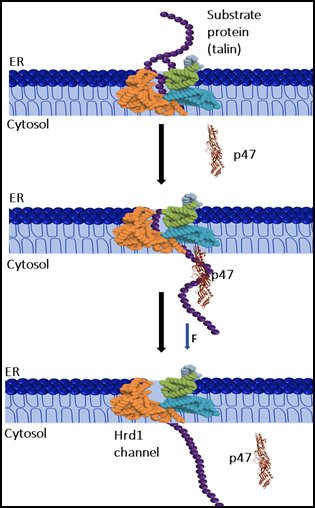
- 12 Sep 2025
In News:
Proteins within living cells constantly face mechanical stress during processes such as intracellular transport, cytoskeletal remodeling, and degradation. These stresses can compromise protein folding and stability, leading to cellular dysfunction.
Traditionally, specialized proteins called canonical chaperones were considered the primary agents guiding protein folding and stability. However, recent research has uncovered a surprising player in this landscape—p47, a cofactor protein with previously underestimated roles.
Discovery by SNBNCBS
A study conducted by the S. N. Bose National Centre for Basic Sciences (SNBNCBS), an autonomous institute under the Department of Science & Technology (DST), revealed that p47 functions as a “mechanical chaperone.” Using single-molecule magnetic tweezers, researchers applied controlled mechanical forces to mimic stresses faced by proteins inside cells.
The experiments demonstrated that:
- p47 stabilizes mechanically stretched proteins, enabling them to refold even under constant pulling forces.
- It enhances the mechanical efficiency of protein extraction from the endoplasmic reticulum (ER) lumen to the cytoplasm.
- It facilitates polypeptide translocation through narrow pores, reducing misfolding risks and improving protein quality control.
About p47 Protein
- Nature: A cofactor protein traditionally associated with the p97 complex, a major cellular machine responsible for protein trafficking, degradation, and membrane fusion.
- Revised Role: Beyond being a passive assistant, p47 exhibits autonomous, force-dependent protective activity, extending the functional repertoire of accessory proteins.
Significance of the Findings
- Scientific Breakthrough
- This is the first direct, single-molecule evidence that cofactors can act as mechanical chaperones.
- It challenges the existing view of accessory proteins as mere helpers and redefines their role in protein mechanics.
- Therapeutic Potential
- Targeting p47 or similar cofactors may provide new treatment avenues for diseases where protein stability under stress is compromised, such as:
- Cardiomyopathies (heart muscle diseases).
- Laminopathies (genetic disorders linked to nuclear protein instability).
- This could lead to precision medicine strategies focusing on mechanical resilience of proteins.
- Targeting p47 or similar cofactors may provide new treatment avenues for diseases where protein stability under stress is compromised, such as:
- Broader Implications
- Enhances understanding of cellular stress response mechanisms.
- Opens possibilities for drug development aimed at modulating protein folding under force.
- Strengthens India’s contributions to cutting-edge biophysical research with global relevance.
Health AI Global Regulatory Network (GRN)
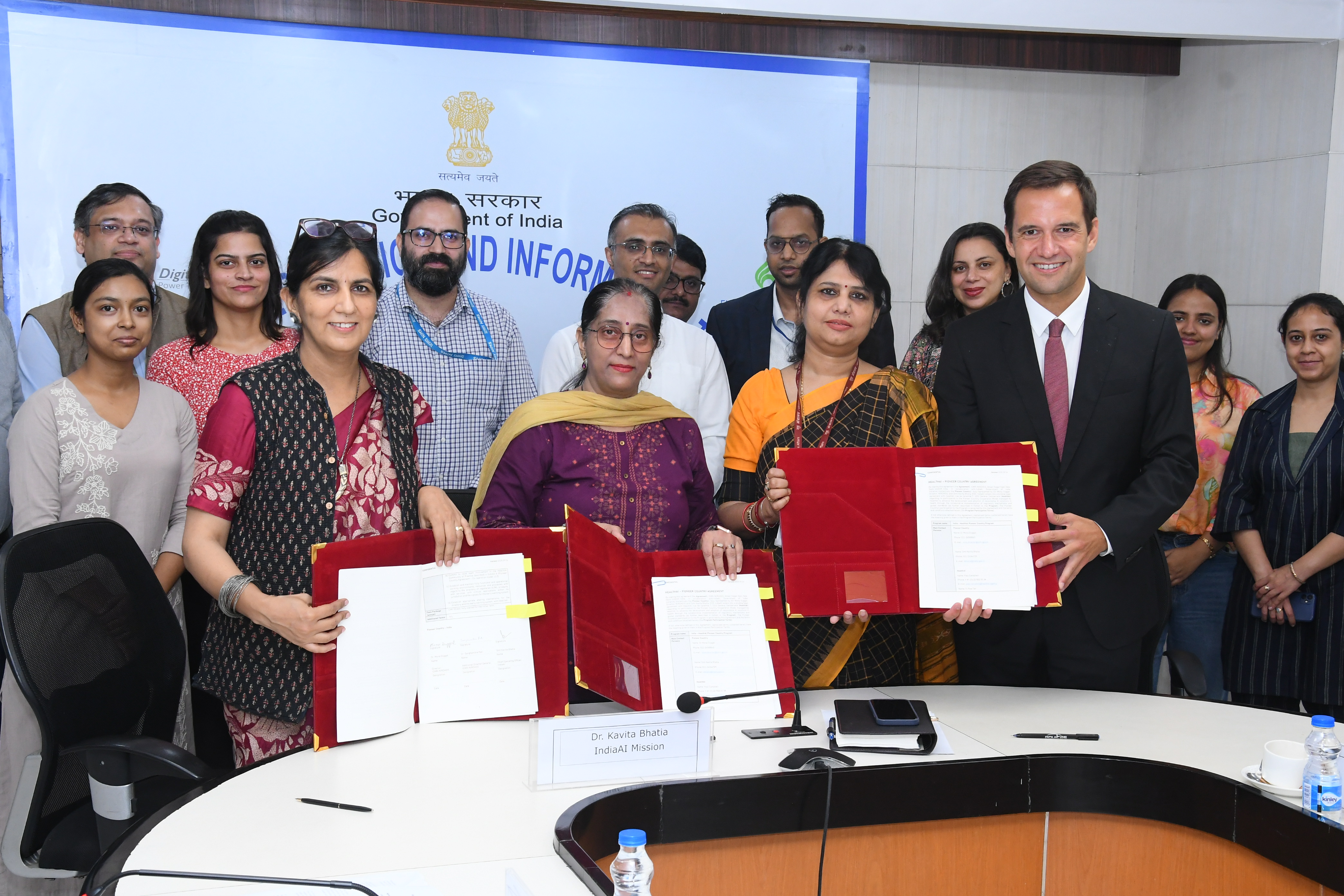
- 11 Sep 2025
In News:
India has joined the HealthAI Global Regulatory Network (GRN), becoming one of the pioneer countries shaping global norms for the responsible use of Artificial Intelligence (AI) in healthcare. This move reinforces India’s leadership in digital health innovation and aligns with its broader strategy to promote safe, equitable, and effective AI applications.
About the HealthAI Global Regulatory Network (GRN)
- Nature: An international, Geneva-based non-profit consortium of health regulators.
- Objective: To ensure fair, secure, and efficient deployment of AI in healthcare by building trust, strengthening oversight, and promoting shared learning.
- Functions:
- Develop joint safety standards and early warning systems for emerging risks.
- Facilitate cross-country collaboration and technical support.
- Maintain a global directory of registered AI health tools for transparency.
- Membership: Initial “pioneer countries” from diverse regions, including the UK, Singapore, and now India.
India’s Role in the Network
India’s participation is led by:
- Indian Council of Medical Research – National Institute for Research in Digital Health and Data Science (ICMR-NIRDHDS): A key institute driving digital health research under ICMR.
- IndiaAI: The Government of India’s central initiative under MeitY (via Digital India Corporation), aimed at building a comprehensive AI ecosystem.
Together, they will:
- Share safety protocols and best practices.
- Monitor AI performance in clinical settings.
- Contribute to shaping global frameworks for AI regulation.
Strategic Importance for India
- Global Leadership: Solidifies India’s position as a pioneer in responsible AI for health, enhancing its credibility in digital health diplomacy.
- National AI Strategy Alignment: Supports India’s vision to become a global hub for AI innovation and workforce, leveraging AI for public health, startups, and job creation.
- Strengthening Healthcare Delivery: Ensures AI-driven solutions enhance efficiency, safety, and equity in India’s diverse health ecosystem.
- Cross-Border Collaboration: Provides access to technical expertise, early warning systems, and shared regulatory tools.
Sample Registration System (SRS) Statistical Report 2023
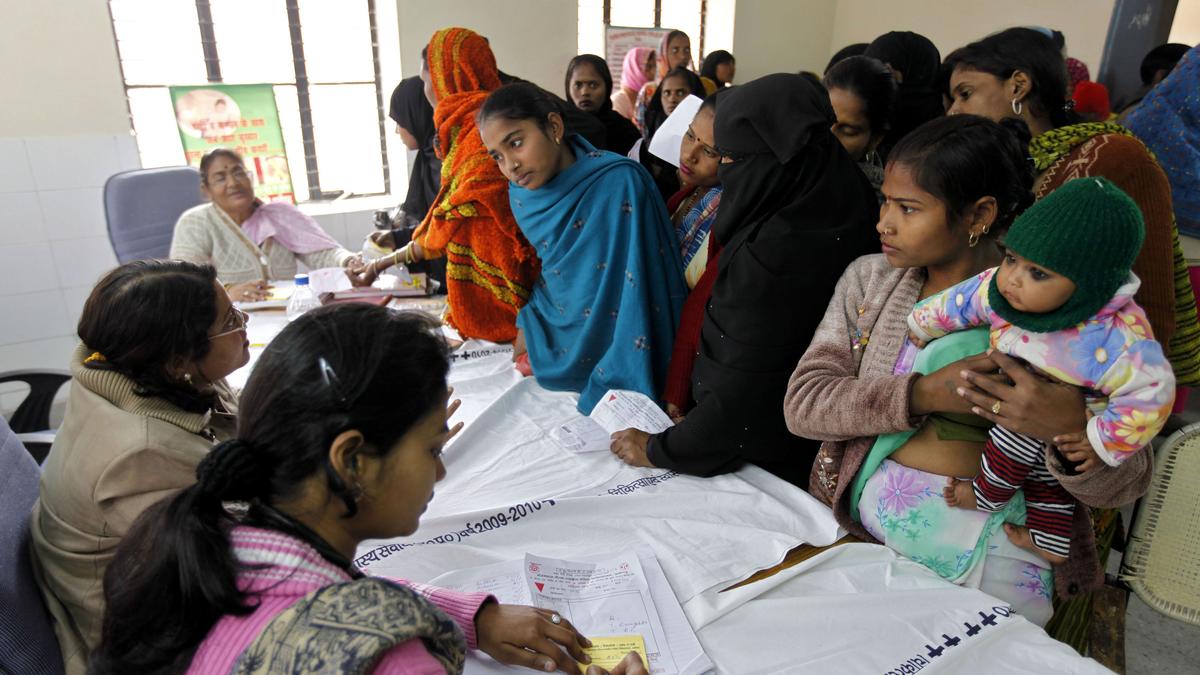
- 11 Sep 2025
In News:
The Sample Registration System (SRS) Statistical Report 2023, released by the Office of the Registrar General & Census Commissioner (ORGI), provides crucial insights into India’s demographic transition. The report highlights notable shifts in fertility, mortality, and ageing patterns, underlining both progress and challenges in population dynamics.
Key Findings of SRS 2023
1. Total Fertility Rate (TFR)
- India’s TFR declined to 1.9 in 2023, falling below the replacement level of 2.1 children per woman.
- This marks the first decline in two years, reflecting sustained fertility reduction.
- State variations:
- Highest TFR: Bihar (2.8 among larger states).
- Lowest TFR: Tamil Nadu (well below replacement).
- 18 States/UTs reported TFR below replacement level, indicating an advancing demographic transition.
2. Crude Birth Rate (CBR)
- The national CBR declined from 19.1 (2022) to 18.4 (2023).
- State-wise extremes:
- Bihar: 25.8 (highest).
- Tamil Nadu: 12 (lowest).
3. Infant Mortality Rate (IMR)
- India’s IMR touched a historic low of 25 per 1,000 live births in 2023, down significantly from 40 in 2013.
- The decline highlights improvements in maternal and child healthcare.
4. Sex Ratio at Birth (SRB): The SRB stood at 917 girls per 1,000 boys, reflecting persistent gender imbalance despite gradual improvements in many regions.
5. Ageing Population
- Seniors (aged 60+) constitute 9.7% of the population, up from 8.6% in 2011.
- State variation: Kerala leads with nearly 15% elderly population, indicating advanced population ageing.
Significance of the Trends
- Demographic Transition:The fall in fertility and birth rates confirms India’s movement towards a stabilising population, with many states already below replacement fertility.
- Public Health Gains:The sharp fall in IMR highlights the impact of government interventions in maternal health, institutional deliveries, and immunisation.
- Gender Challenges:A low SRB underscores continuing son preference and gender discrimination, raising concerns for long-term demographic balance.
- Ageing Burden:Rising share of the elderly, especially in southern states, signals the need for social security, geriatric healthcare, and pension reforms.
Environment Auditors
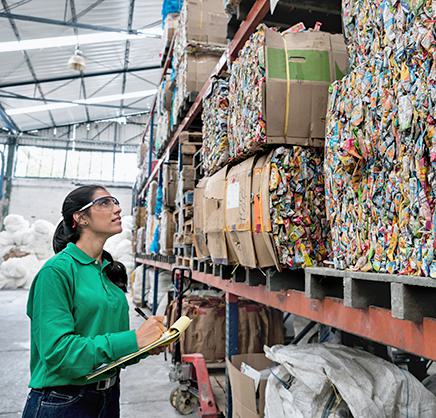
- 11 Sep 2025
In News:
The Ministry of Environment, Forest and Climate Change (MoEFCC) has notified the Environment Audit Rules, 2025, authorising the creation of a new, independent cadre of environment auditors. This marks a significant reform in India’s environmental governance framework, aiming to strengthen compliance, accountability, and transparency in monitoring ecological regulations.
Background and Rationale
Environmental monitoring in India is primarily overseen by the Central Pollution Control Board (CPCB), Regional Offices of MoEFCC, and State Pollution Control Boards (SPCBs)/Pollution Control Committees (PCCs). However, these bodies face persistent challenges of manpower shortage, limited resources, and infrastructural constraints, which hinder effective enforcement across the vast number of industries and projects.
To address this gap, the government has introduced environment auditors—certified professionals or accredited private agencies—who can supplement regulatory agencies in compliance verification. This is expected to enhance the implementation of environmental laws while promoting self-regulation by industries.
Key Features of Environment Auditors
- Legal Basis: Established under the Environment Audit Rules, 2025.
- Nature: Independent class of licensed professionals/agencies accredited to inspect, verify, and audit industrial and infrastructure projects.
- Functions:
- Conduct systematic environmental audits of projects under existing environmental laws.
- Sample and analyse emissions, effluents, and waste.
- Report non-compliance and compute environmental compensation.
- Act as verifiers under multiple regulatory frameworks, including the Green Credit Rules, E-Waste Rules, and Plastic Waste Rules.
- Provide independent data for climate action planning, ESG ratings, and sustainable development initiatives.
Linkage with Green Credit Rules
Audits by these accredited agencies will also support compliance with the Green Credit Rules, 2023, which incentivise activities like afforestation, water management, waste reduction, and pollution control through tradable “green credits.” Environment auditors will thus act as third-party verifiers, ensuring credibility in the crediting process.
Significance of the Reform
- Bridges Institutional Deficits: Addresses manpower and infrastructure shortages in SPCBs and CPCB.
- Promotes Accountability: Encourages industries to adopt self-compliance mechanisms rather than relying solely on regulatory enforcement.
- Enhances Transparency: Independent, third-party verification fosters stakeholder trust in environmental governance.
- Strengthens Climate Commitments: Provides robust compliance data for India’s climate action goals and sustainability reporting.
- Reduces Regulatory Burden: Eases the monitoring load on overstretched government agencies.
Particularly Vulnerable Tribal Groups (PVTGs)

- 11 Sep 2025
In News:
- The Ministry of Tribal Affairs (MoTA) has requested the Registrar General and Census Commissioner of India (RGI) to enumerate Particularly Vulnerable Tribal Groups (PVTGs) separately in the upcoming Census.
- Aim: To capture population, households, and distinctive socio-economic and cultural features of PVTGs for better targeting of schemes such as the Pradhan Mantri Janjati Adivasi NyayMaha Abhiyan (PM JANMAN).
About PVTGs
- Definition: A sub-category of Scheduled Tribes (STs), considered the most disadvantaged among tribal communities.
- Origin: Concept recommended by the Dhebar Commission (1960–61) to address disparity within STs.
- Criteria for Identification:
- Declining/stagnant population
- Geographical isolation
- Pre-agrarian economy (hunting, gathering, shifting cultivation)
- Economic backwardness
- Low literacy
- Numbers:
- Initially 52 groups identified during the Fifth Five-Year Plan (1974–79).
- Later, 23 more groups added in 2006 → 75 PVTGs today.
- Spread: Across 18 states and the Andaman & Nicobar Islands.
Demographic Profile
- Estimated Population (2023 Survey): ~47.5 lakh PVTGs in India.
- Madhya Pradesh – 13.22 lakh (highest)
- Maharashtra – 6.7 lakh
- Andhra Pradesh – 5.18 lakh
- Smallest Groups: Sentinelese (Andaman & Nicobar Islands) with just 15 individuals.
- Largest Group: Baiga (Madhya Pradesh) – ~4.14 lakh population.
Habitat & Livelihoods
- Mostly live in remote forests, hilly regions, or islands with limited access to infrastructure.
- Livelihood sources:
- Hunting and gathering
- Shifting cultivation
- Non-Timber Forest Produce (NTFP) collection
- Livestock rearing
- Traditional artisan work
Cultural & Social Features
- Distinct cultural identities, practices, and languages.
- Often outside mainstream socio-economic and political processes.
- Many face critical health and education deficits.
Need for Separate Enumeration
- No separate count so far: PVTGs only enumerated under the general ST category; many grouped together under one nomenclature.
- Single-entry STs: Out of 75 PVTGs, 40 explicitly listed under Article 342 of the Constitution.
- Challenges: Current lists vary across states; some groups not separately listed in Census.
- Benefits of separate enumeration:
- Accurate population data for targeted schemes.
- Helps assess whether PVTG classification criteria remain relevant.
- Supports preservation of cultural identity.
- Identifies infrastructure gaps in health, education, and livelihoods.
Welfare Measures
- PM JANMAN Scheme (2023):
- Budget: ?24,104 crore.
- Coverage: More than 200 districts.
- Objective: Improve health, education, livelihoods, and basic amenities of PVTGs.
2D Materials
- 11 Sep 2025
In News:
- NITI Aayog’sFrontier Tech Hub, in collaboration with IISc Bengaluru, released the 4th edition of FutureFront Quarterly Insights titled “Introduction to 2D Materials”.
- Report highlights the need for India to invest early in 2D materials to lead in semiconductors, quantum technologies, and advanced electronics.
What are 2D Materials?
- Definition: Materials that are one atom thick, with unique electrical, thermal, and mechanical properties.
- Discovery: Graphene isolated in 2004 → Nobel Prize in Physics, 2010.
- Examples:
- Graphene (Carbon-based)
- Transition Metal Dichalcogenides (TMDCs) –MoS?, WS?
- Hexagonal Boron Nitride (h-BN)
- Xenes – Silicene, Phosphorene
Key Properties
- ~200× stronger than steel, yet flexible.
- Conducts electricity better than copper; spreads heat efficiently.
- Tunable band gaps → useful for semiconductors.
- Exhibits quantum effects (e.g., spin–valley coupling).
- Transparent & flexible → foldable/wearable electronics.
Applications
- Semiconductors: Chips up to 10× smaller than silicon-based chips.
- Quantum Computing: Hosting qubits, spin–valley interactions.
- Artificial Intelligence: Atom-thin memristors for neuromorphic computing.
- Optoelectronics: LEDs, photodetectors, ultra-thin solar cells.
- Green Tech: EV batteries, water filtration, aerospace composites.
Significance for India
- Tech Geopolitics: Control over supply chains and standards creates “tech choke points.”
- Challenge: Current reliance on licensed technologies → dependency (“umbilical cord” risk).
- Opportunity: Early push in 2D materials offers first-mover advantage in semiconductors.
- Global Status: USA, China, Japan, South Korea already investing heavily.
Policy Measures
- NITI Aayog: Urges creation of a complete 2D ecosystem – R&D, talent, supply chains, standards, manufacturing.
- MeitY& DST: Invited proposals for R&D and product development in 2D materials.
India–Singapore Comprehensive Strategic Partnership (CSP): 2025 Roadmap
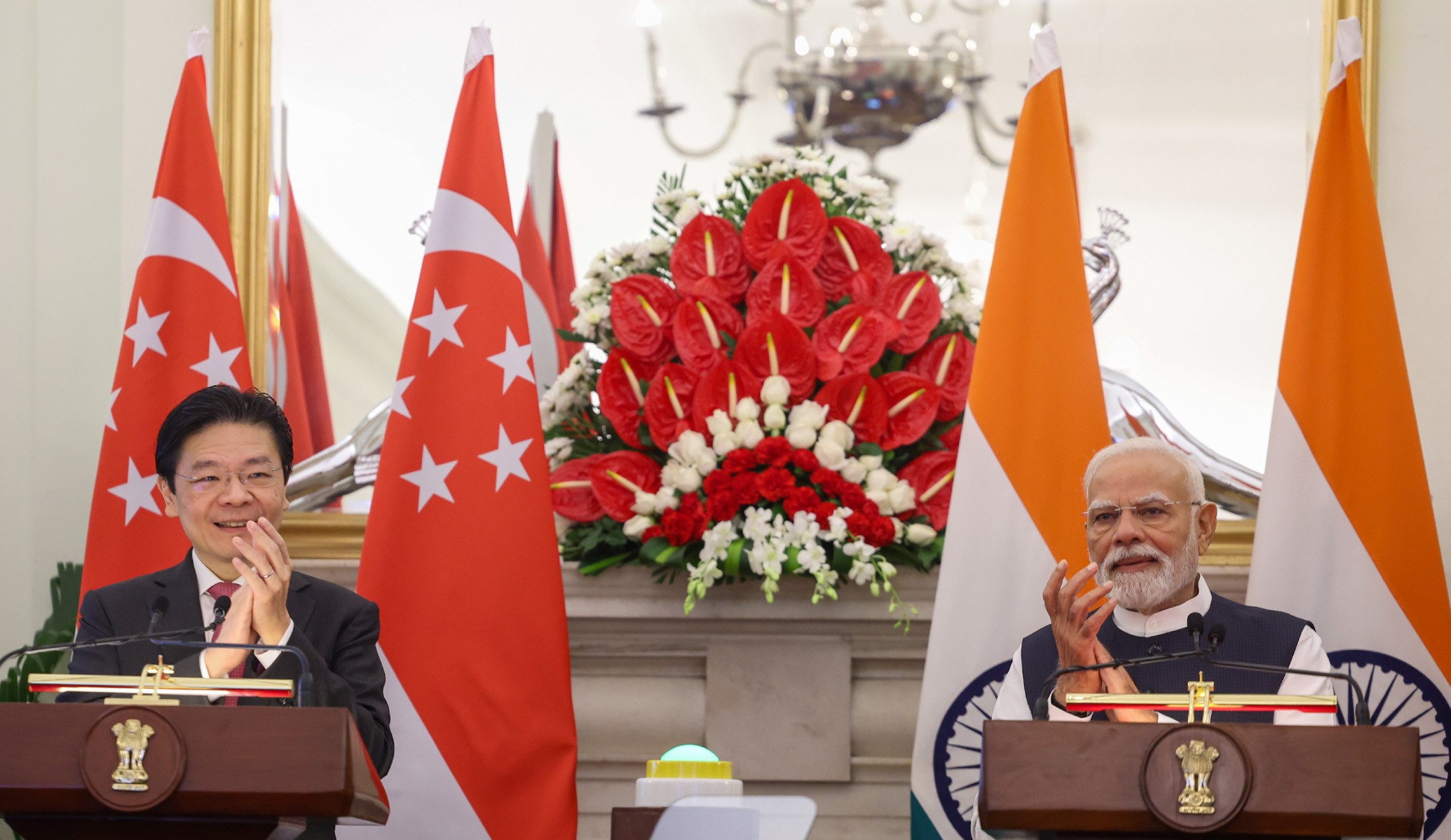
- 10 Sep 2025
In News:
The visit of Singapore Prime Minister Lawrence Wong to India in September 2025 marked 60 years of diplomatic relations and culminated in the adoption of a forward-looking Comprehensive Strategic Partnership (CSP) Roadmap. This elevates bilateral ties beyond trade to encompass technology, security, sustainability, and people-centric cooperation, reinforcing Singapore’s role as a vital partner in India’s Act East Policy and Indo-Pacific vision.
What is CSP?
- The Comprehensive Strategic Partnership (CSP) is the highest level of bilateral engagement between India and Singapore.
- It was elevated from a Strategic Partnership in 2015, and deepened further in 2025 through the adoption of a roadmap across eight key sectors.
Eight-Pillar Cooperation Framework
- Economic Cooperation
- Review of Comprehensive Economic Cooperation Agreement (CECA) and ASEAN-India Trade in Goods Agreement (AITIGA) in 2025.
- Partnership in semiconductors: Singapore produces 10% of global semiconductors and 20% of semiconductor equipment—key to India’s domestic chip manufacturing ambitions.
- Cooperation in industrial parks, sustainable manufacturing, capital market connectivity (NSE-IFSC-SGX GIFT Connect), and space collaboration.
- Skills Development
- Establishment of the National Centre of Excellence for Advanced Manufacturing in Chennai.
- Joint efforts in Technical and Vocational Education and Training (TVET), skill certification, train-the-trainers programmes, and nursing skill cooperation (expansion of the Singapore–Assam model).
- Digitalisation
- Expansion of UPI–PayNow linkage for seamless cross-border payments.
- Collaboration in fintech, cybersecurity, AI applications (healthcare, agriculture), start-up ecosystems, and adoption of TradeTrust for e-Bills of Lading in trade documentation.
- Sustainability & Green Growth
- Cooperation in green hydrogen, ammonia, and civil nuclear energy.
- Joint climate initiatives under Article 6.2 of the Paris Agreement.
- Collaboration in the International Solar Alliance (ISA) and Global Biofuels Alliance.
- Partnership in food security, agricultural exports, and water management.
- Connectivity
- Establishment of an India–Singapore Green and Digital Shipping Corridor linking major Indian ports with Singapore.
- Knowledge-sharing in aviation (air services agreement, sustainable aviation fuel, MRO collaboration).
- Healthcare & Medicine
- MoU on Health and Medicine: digital health, maternal and child health, disease surveillance, and medical R&D.
- Nursing cooperation and skills training to enhance employability in Singapore.
- People-to-People & Cultural Exchanges
- Student and professional exchanges, parliamentary engagement, think tank linkages, and public service training.
- Promotion of cultural heritage and maritime history collaborations.
- Defence& Security
- Enhanced military cooperation through SIMBEX 2025 and other tri-service exercises.
- Collaboration on defence technology (AI, automation, unmanned systems, quantum computing).
- Maritime security including submarine rescue cooperation and regional patrols.
- Strengthened counter-terrorism efforts via FATF and other multilateral mechanisms.
- Singapore acknowledged India’s interest in the Malacca Straits Patrol (MSP); India’s Andaman & Nicobar Command enhances regional maritime domain awareness.
Strategic Significance
- Positions Singapore as India’s gateway to Southeast Asia and the broader Indo-Pacific.
- Enhances regional security architecture aligned with ASEAN principles.
- Demonstrates how middle powers can address global uncertainties through technology partnerships, defence collaboration, and sustainable growth initiatives.
India’s Path to Atmanirbharta in Millets
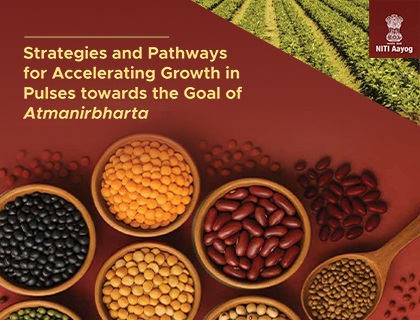
- 10 Sep 2025
In News:
The NITI Aayog report “Strategies and Pathways for Accelerating Growth in Pulses towards the Goal of Atmanirbharta” also provides broader lessons for achieving self-reliance in other food crops like millets, which face similar challenges of productivity, market stability, and sustainability.
Current Status of Millets in India
- Global Leadership: India contributes nearly 41% of world millet output (~16 million tonnes annually), making it the largest producer.
- Regional Spread: Five states—Rajasthan, Maharashtra, Karnataka, Uttar Pradesh, and Madhya Pradesh—produce over 80% of India’s millets.
- Consumption Decline: Per capita consumption has dropped from 32 kg/year in the 1960s to ~4 kg/year today, largely replaced by rice and wheat due to PDS bias.
- Exports: In 2022–23, India exported 1.8 million tonnes, mainly to UAE, Nepal, and Saudi Arabia, indicating rising global demand.
- Policy Push: The Union Budget 2023–24 renamed millets as “Shree Anna”, earmarking resources for research, processing, and marketing.
Importance of Millets
- Nutritional Security: Rich in iron, calcium, fiber, and proteins, helping fight malnutrition and anemia.
- Climate Resilience: Require 70% less water than rice and withstand drought, making them suitable for rainfed regions.
- Farmer Livelihoods: Low-input crops reduce reliance on irrigation and fertilizers, benefiting smallholders.
- Food Security: Inclusion in Mid-Day Meals, ICDS, and PDS enhances nutrition for vulnerable groups.
- Global Branding: India’s “Shree Anna” campaign has positioned millets as a superfood and strengthened agri-diplomacy.
Initiatives Taken
- NFSM-Millets: Expands area under millets, provides quality seed, and boosts productivity.
- Shree Anna Mission (2023): A six-year plan for millet research, processing, branding, and market integration.
- State Schemes: Karnataka’s Ksheera Bhagya included millets in school meals.
- International Recognition: India led the UNGA resolution declaring 2023 as International Year of Millets.
- Export Promotion: APEDA supports branding, GI tagging, and product exports to West Asia, US, and EU.
Challenges
- Consumer Preference Shift: Rice and wheat dominate diets due to PDS subsidies and cooking convenience.
- Low Productivity: Millet yields (~1.2 t/ha) remain below rice/wheat due to limited R&D and weak seed systems.
- Weak Market Linkages: Fragmented value chains, inadequate FPO presence, and absence of MSP-backed assured procurement.
- Post-Harvest Constraints: Poor processing/storage technologies and limited millet-based food industry.
- Policy Bias: NFSA subsidies for rice/wheat discourage millet adoption in rainfed belts.
Strategic Framework for Atmanirbharta
- Horizontal Expansion: Cultivate millets in rice fallows and degraded lands, especially in Eastern India.
- Vertical Expansion: Develop high-yielding, bio-fortified, climate-resilient varieties with robust seed systems.
- Cluster-Based Model: District-wise crop cluster strategy for focused interventions.
- Value Chain Integration: Establish processing hubs, branding centers, and FPO-led aggregation.
- Climate-Smart Farming: Promote organic and water-efficient millet practices, aligning with SDGs and climate goals.
National Institutional Ranking Framework
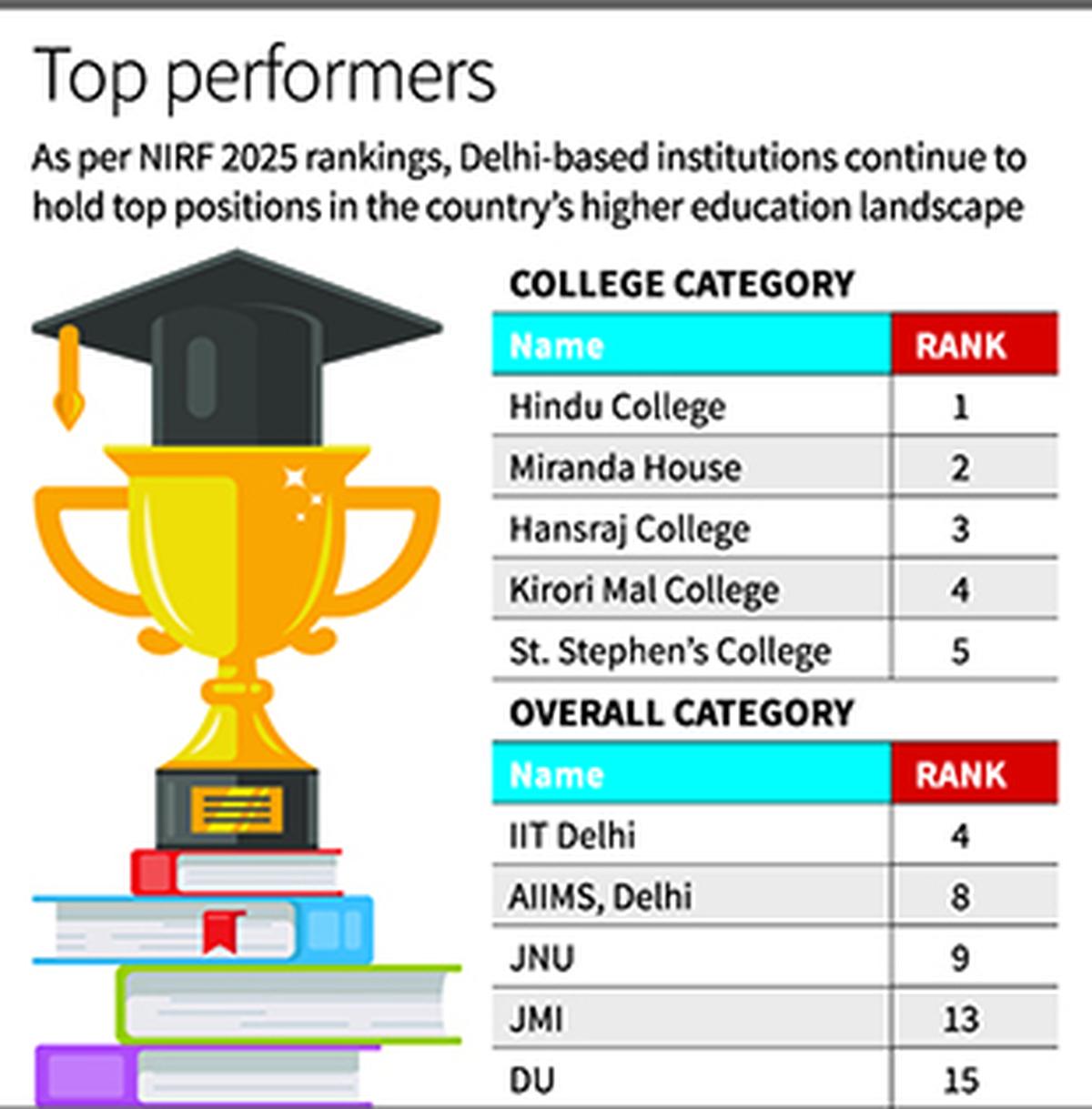
- 10 Sep 2025
In News:
The Ministry of Education has released the India Rankings 2025 under the National Institutional Ranking Framework (NIRF), first launched in 2015 to provide a transparent, data-driven methodology for ranking higher education institutions (HEIs).
Background
- Introduced in 2015 by the Ministry of Education (then MHRD).
- First rankings released in 2016 with one category (Universities) and three domains (Engineering, Management, Pharmacy).
- Now expanded to 9 categories and 8 subject domains, with SDG-based rankings introduced in 2025.
- Aim: To benchmark quality, ensure accountability, guide students/parents, and align with NEP 2020 goals of making India a knowledge superpower by 2047.
Parameters of NIRF (Weightage)
- Teaching, Learning & Resources (30%)
- Research & Professional Practice (30%)
- Graduation Outcomes (20%)
- Outreach & Inclusivity (10%)
- Perception (10%)
- Total of 19 sub-parameters used.
- Data sourced from institutions and third parties like Scopus, Web of Science, Derwent Innovation for publications, citations, and patents.
Participation & Growth
- 2025: 7,692 unique institutions applied (14,163 submissions), compared to 2,426 in 2016 – a 217% rise in participants and 297% rise in applications.
- Rankings now cover 17 categories, including overall, universities, colleges, research institutions, medical, dental, law, pharmacy, management, architecture & planning, agriculture, open universities, skill universities, state public universities, innovation, and SDGs.
Key Highlights of 2025 Rankings
- IIT Madras: Retains 1st rank in Overall category for the 7th year and Engineering for the 10th year. Also topped Innovation and SDGs categories.
- IISc Bengaluru: Ranked 1st among Universities for the 10th year; also leads in Research Institutions for the 5th year.
- IIM Ahmedabad: Topped Management for the 6th consecutive year.
- AIIMS Delhi: 1st in Medical for the 8th year; also ranked 8th in Overall. Additionally topped Dental for the first time.
- Jamia Hamdard (Delhi): 1st in Pharmacy for the 2nd year.
- IIT Roorkee: 1st in Architecture & Planning for the 5th consecutive year.
- NLSIU Bengaluru: Retains 1st position in Law for the 8th year.
- Hindu College (Delhi University): 1st among Colleges for the 2nd year, displacing Miranda House. Six of the top ten colleges are from Delhi.
- Indian Agricultural Research Institute (Delhi): 1st in Agriculture & Allied Sectors for the 3rd year.
- IGNOU (Delhi): 1st in Open Universities category for the 2nd year.
- Symbiosis Skill & Professional University (Pune): 1st in Skill Universities for the 2nd year.
- Jadavpur University (Kolkata): 1st in State Public Universities (introduced in 2024).
Significance
- NIRF has evolved into a credible national benchmark for higher education, enhancing global competitiveness, transparency, and inclusivity.
- With new categories such as Innovation, Skill Universities, and SDG rankings, it reflects India’s effort to link education with sustainability, entrepreneurship, and national development goals under NEP 2020.
- Participation trends demonstrate growing institutional acceptance of NIRF as a fair and transparent ranking mechanism.
Acanthamoeba
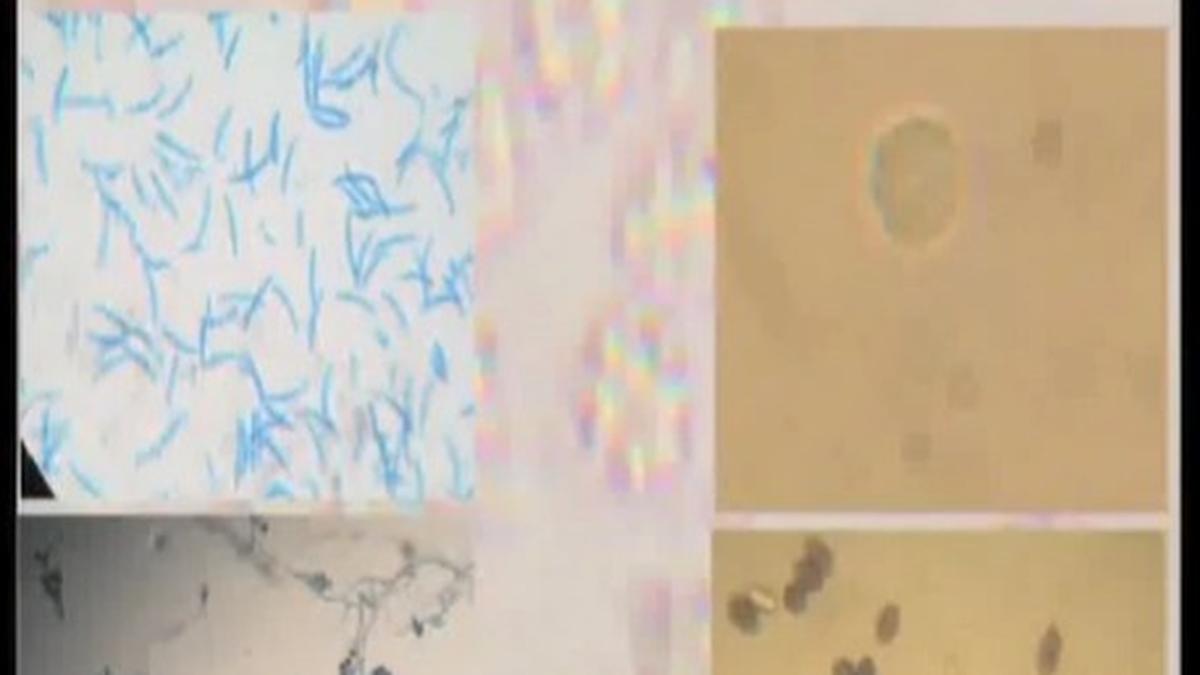
- 10 Sep 2025
In News:
Recent studies have revealed that Acanthamoeba, a free-living amoeba, is more widespread in Kerala’s waterbodies than previously believed. This raises significant public health concerns, especially due to its ability to cause severe and often fatal infections.
About Acanthamoeba
- Nature: A single-celled, free-living amoeba found in water, soil, and dust.
- Habitats: Frequently detected in swimming pools, hot tubs, household wells, drinking water systems, humidifiers, and HVAC (heating, ventilation, and air conditioning) systems.
- Mode of Transmission: Enters the human body through skin wounds, inhalation via lungs/nasal cavity, or eye exposure (notably among contact lens users).
Types of Infections
- Granulomatous Amebic Encephalitis (GAE): Affects the brain; almost always fatal.
- Cutaneous Acanthamoebiasis: Skin infection through wounds.
- Acanthamoeba Rhinosinusitis: Infection of the nasal cavity and sinuses.
- Acanthamoeba Keratitis: Serious eye infection, often in healthy individuals and contact lens users; may lead to permanent vision loss.
Kerala Case Study
- In 2013, research from the Regional Institute of Ophthalmology (Kerala) identified that several cases of non-healing corneal ulcers were due to Acanthamoeba keratitis, traced back to household wells as the infection source.
- Current findings indicate that Acanthamoeba is more widespread in Kerala’s natural and man-made waterbodies than earlier thought, heightening risks of waterborne and eye-related infections.
Significance
- The rise of Acanthamoeba-related keratitis underlines the need for safe water practices, improved eye hygiene among contact lens users, and awareness of rare pathogens.
- Its resilience across diverse environments makes it a public health challenge, especially in regions dependent on household wells and untreated water sources.
Debrigarh Wildlife Sanctuary
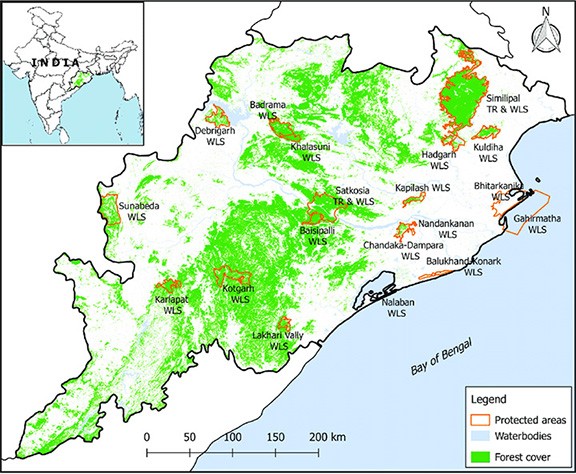
- 10 Sep 2025
In News:
Odisha’s Debrigarh Wildlife Sanctuary has recently been approved by the National Tiger Conservation Authority (NTCA) to become India’s newest tiger reserve. This marks a significant ecological achievement rooted in community participation, innovative eco-tourism, and conservation success.
Location and Geography
- Situated in western Odisha, near Sambalpur and Bargarh district, Debrigarh is bordered by the Hirakud Reservoir—a Ramsar-tagged wetland and part of the Mahanadi River system.
- The Hirakud Dam, the world’s longest earthen dam, lies adjacent to the sanctuary.
- Spread over 804 sq km, it includes around 347 sq km of core area, encompassing forests, grasslands, and wetlands, making it a unique amphi-terrestrial ecosystem.
Historical Significance
- The rugged terrain of Debrigarh was a strategic base for freedom fighter Veer Surendra Sai during his armed resistance against British colonial rule.
- Sites like Bara Bakra/Barapathara remain important heritage landmarks within the sanctuary.
Flora and Fauna
- Vegetation: Dominated by mixed and dry deciduous forests, with species such as Sal, Asana, Bija, Aanla, and Dhaura.
- Mammals: Indian bison (gaur), sambar deer, wild boar, chousingha (four-horned antelope), leopards, sloth bears, and wild dogs.
- Avifauna: Over 300 bird species, including 120 migratory species such as crested serpent eagle, drongo, tree pie, flower peckers, and white-eye oriental.
Eco-Tourism and Innovation
- Debrigarh is home to India’s first dark sky tourism hub, offering stargazing facilities.
- Adventure tourism includes safaris (53 vehicles), kayaking, cycling, and birding trails, designed with minimal ecological footprint.
Conservation and Community Model
- Declared a sanctuary in 1985 and upgraded to a tiger reserve in 2025.
- A community-led model: Over 400 families voluntarily relocated with rehabilitation packages; 155 villages actively participate in conservation and eco-tourism activities.
- Wildlife success: Expansion of prey base, increase in gaur population, and nearly 40% of herds comprising newborns, reflecting ecosystem recovery.
Significance
Debrigarh exemplifies a national model of integrated conservation, blending:
- Biodiversity protection (tiger reserve status, prey base recovery).
- Cultural heritage (legacy of Veer Surendra Sai).
- Sustainable eco-tourism (dark sky hub, water- and land-based safaris).
- Community participation (relocation and livelihood integration).
Its success offers a replicable blueprint for wildlife conservation across India, highlighting how ecological protection, heritage, and rural livelihoods can be balanced under one framework.
Majorana Particles
- 09 Sep 2025
In News:
One of the biggest challenges in quantum computing is decoherence — the tendency of qubits to lose their fragile quantum state due to environmental noise. To address this, scientists are exploring the potential of Majorana particles, exotic entities that are their own antiparticles. Their unique quantum properties may help build topological qubits, inherently resistant to errors, offering a radically new path toward practical quantum computing.
What are Majorana Particles?
- Proposed by: Italian physicist Ettore Majorana in 1937.
- Nature: A hypothetical fermion that is its own antiparticle, unlike electrons or protons which have distinct antimatter counterparts.
- Key Characteristics:
- Neutral in charge, hence elusive in detection.
- Do not annihilate on contact with themselves.
- In condensed-matter systems, they appear as quasiparticles (collective excitations) inside superconductors at ultra-low temperatures.
- Often exist in pairs: two spatially separated halves forming one quantum state.
- Exhibit non-Abelian statistics, meaning that exchanging or “braiding” them changes the overall quantum state in a predictable but unusual way.
Relevance to Quantum Computing
- Problem of Decoherence
- Qubits (quantum bits) exist in superpositions of 0 and 1, but are easily disturbed by external noise.
- Current quantum error correction requires hundreds to thousands of physical qubits to stabilise a single logical qubit, making scaling inefficient.
- Majorana-Based Solution
- Information can be encoded nonlocally across two Majorana modes.
- Disturbance of one half does not collapse the qubit; both must be affected simultaneously, making errors less likely.
- Braiding Majoranas enables topologically protected operations, where outcomes depend only on the braiding pattern and not on experimental imperfections.
- This reduces the need for massive error correction, making quantum hardware simpler and more stable.
- Current Research
- Experiments in superconducting nanowires (e.g., indium antimonide) have shown conductance patterns consistent with Majorana modes.
- However, alternative explanations exist, and conclusive proof requires demonstrating controlled braiding.
Wider Implications
- Quantum Technology: Potential to drastically lower the qubit requirement for large-scale quantum computers.
- Particle Physics: Ongoing efforts to test whether fundamental particles like neutrinos could be Majorana fermions.
- Condensed Matter Physics: Research into Majoranas has advanced material science, superconductors, and nanotechnology.
Challenges
- Experimental signals remain inconclusive, as other phenomena can mimic Majorana-like behaviour.
- Braiding demonstrations in two-dimensional architectures remain technically difficult.
- Majorana-based qubits are still at the proof-of-concept stage, not yet integrated into practical computing systems.
Self-Respect Movement
- 09 Sep 2025
In News:
The year 2025 marks the centenary of the Self-Respect Movement, a landmark social reform initiative launched by E.V. Ramasamy “Periyar” in Tamil Nadu. Emerging in 1925 through the Tamil weekly KudiArasu(Republic), the movement fundamentally reshaped Tamil society by questioning caste hierarchies, patriarchy, and religious orthodoxy, and by laying the foundations of modern Dravidian politics.
Origins and Context
- The Justice Party (South Indian Liberal Federation, 1916) had earlier challenged Brahmin dominance but remained largely confined to elite non-Brahmin interests.
- Periyar, after leaving the Indian National Congress in 1925, criticised the Justice Party for lacking a people-centric agenda and warned against creating a new non-Brahmin elite as oppressive as Brahmin oligarchy.
- Through KudiArasu,Periyar articulated a more radical vision — shifting reform efforts towards the common masses and framing an agenda of rationalism, equality, and self-respect.
Core Ideas and Aims
The Self-Respect Movement stood for:
- Abolition of caste hierarchy and Brahmanical dominance.
- Promotion of rationalism over religious superstition and ritualism.
- Assertion of dignity and equality for all individuals, irrespective of caste or gender.
- Social reform over political independence — unlike the Congress-led freedom struggle, which the movement saw as tied to Hindu orthodoxy.
Key Features and Reforms
- Self-Respect Marriages – Conducted without priests or rituals, challenging caste and religious authority.
- Women’s Rights – Advocacy of widow remarriage, right to divorce, property rights, reproductive choice (including abortion), and women’s education.
- Inter-caste Unity – Promotion of inter-caste marriages and solidarity across oppressed groups.
- Critique of Religion and Nationalism – Rejection of Gandhi’s “religion-tinted nationalism” and the Congress as a bastion of caste Hindu interests.
- Dravidian Identity – Assertion of Tamil/Dravidian identity and resistance to Sanskritichomogenisation.
Impact and Legacy
- Mass Awakening: Instilled pride and self-respect among non-Brahmin masses, transforming them from passive subjects of reform to active participants.
- Foundation for Dravidian Politics: Evolved into the DravidarKazhagam (DK) and inspired political parties like DMK and AIADMK, shaping Tamil Nadu’s welfare-driven governance model.
- Gender and Social Justice: Pioneered radical reforms in marriage, family, and gender relations, decades ahead of mainstream Indian discourse.
- Intellectual Tradition: Drew inspiration from earlier reformers such as IyotheeThass, Jyotirao Phule, and B.R. Ambedkar, situating Tamil Nadu in a wider anti-caste, rationalist movement.
Contemporary Relevance
As the movement enters its centenary in 2025, it resonates amid debates over Hindutva, cultural homogenisation, and caste discrimination. Its emphasis on rationalism, social equality, and grassroots empowerment continues to provide a counter-narrative to exclusivist identities and remains vital for advancing social justice and constitutional morality in India.
Senna spectabilis
- 09 Sep 2025
In News:
Invasive alien species are among the biggest threats to global biodiversity, ecosystem balance, and local livelihoods. In South India, Senna spectabilis, introduced in the 1980s for ornamental and fuelwood purposes, has emerged as a serious ecological challenge. Its unchecked spread across the Nilgiri Biosphere Reserve (NBR) has disrupted native ecosystems, escalated human-wildlife conflicts, and triggered large-scale forest degradation.
AboutSenna spectabilis
- Origin: Native to tropical America.
- Common Names: Popcorn Bush Cedar, Archibald's Cassia, Golden Shower, Fetid Cassia, etc.
- Characteristics: Grows 7–18 metres tall, forms dense sterile thickets, alters soil chemistry, suppresses native vegetation, and deprives herbivores of food.
- Confusion: Resembles Kerala’s state flower Cassia fistula (Kanikkonna), aiding its popularity in afforestation drives.
- IUCN Status: Classified as Least Concern.
- Challenge: Prolific seed production (up to 6,000 seeds annually), viability for nearly a decade, and quick regrowth even after cutting.
Ecological and Social Impacts
- Biodiversity Loss – Chokes out native species, prevents natural regeneration, and alters ecosystem dynamics.
- Food Chain Disruption – Loss of grasses and shrubs reduces prey availability for carnivores.
- Human-Wildlife Conflict – Decline in herbivore populations forces elephants, tigers, and deer to enter human settlements.
- Forest Degradation – Spread across Wayanad, Bandipur, and Mudumalai wildlife regions, threatening one of Asia’s most critical wildlife corridors.
- Spread Beyond South India – Reports of infestation in Andhra Pradesh, Goa, and Maharashtra.
A 2021 Rufford Foundation study showed Senna had spread over 23% of Wayanad Wildlife Sanctuary, now estimated at 40%.
Kerala’s “Wayanad Model” of Restoration
Kerala pioneered India’s first science-based, community-led eradication program at Tholpetty range, Wayanad Wildlife Sanctuary:
- Scale: 383 acres cleared; 46,450 trees uprooted; total eco-restoration covers 560 acres.
- Innovation: A lightweight hand-held uprooting tool designed by a marine engineer enabled complete root removal.
- Community Participation: Tribal youth (Kurichiya, Kattunaikka) trained as forest restoration guardians.
- Biodiversity Revival:
- 80 native tree species replanted.
- 15 indigenous grasses naturally regenerated.
- 184 bird species recorded in post-restoration zones.
- Return of elephants and deer to reclaimed patches.
This approach of “un-planting mistakes” emphasizes uprooting rather than cutting, ensuring long-term ecological recovery.
Policy and Replication
- Cross-border Extension: Karnataka adopted the Wayanad model in Nagarhole Tiger Reserve (DB Kuppe range). Tamil Nadu is exploring similar interventions.
- Utilisation of Biomass: Pilot projects have converted Senna wood into 6,000 tonnes of paper pulp; however, experts caution that biomass use alone will not halt invasion unless roots are fully removed.
- Other Invasives: The Senna challenge mirrors broader issues with Lantana, Eupatorium, and Acacia, which silently erode ecosystems across India.
Invasive Species
- Definition: An invasive species is a non-native organism that causes ecological, economic, or health harm in a new environment.
- Introduction Pathways: Ballast water of ships, aquaculture, ornamental planting, and accidental releases.
- Impacts: Extinction of native species, biodiversity loss, ecosystem degradation, and livelihood disruptions.
Graphite Spyware
- 09 Sep 2025
In News:
The Trump administration has unfrozen a stalled Biden-era contract with Paragon Solutions, granting the US Immigration and Customs Enforcement (ICE) access to its spyware tool Graphite. The contract, worth $2 million, was initially signed in September 2024 under the Department of Homeland Security (DHS) but paused due to concerns over violating the March 2023 executive order restricting spyware procurement.
About Graphite Spyware
- Nature: Advanced spyware capable of remote mobile phone access and control.
- Capabilities:
- Access photos, messages, and location data.
- Intercept encrypted communications (WhatsApp, Signal).
- Convert device into a listening tool by manipulating its microphone.
Paragon Solutions and Background
- Founded in Israel; co-founded by former PM Ehud Barak.
- Acquired in late 2024 by AE Industrial Partners (Florida) for $900 million.
- AE also owns REDLattice, a cyber-intelligence firm with ex-CIA officials.
- Track record:
- Claims to sell only to governments and law enforcement agencies for crime prevention.
- Terminated contract with Italy (Feb 2025) after WhatsApp (Meta) flagged misuse against journalists and activists in 24 countries.
Concerns and Implications
- Civil liberties: May expand ICE’s surveillance on undocumented immigrants, raising due process concerns.
- Rights at risk: Free speech and privacy could be undermined if spyware is misused.
- Expert view: Nadine Farid Johnson (Knight First Amendment Institute) warned that bypassing vetting requirements threatens constitutional safeguards.
Understanding Spyware
- Definition: Malicious software that collects data from devices and transmits it without user consent.
- Common Types:
- Adware: Tracks user activity, sells data to advertisers.
- Infostealers: Extracts sensitive data, including chats and files.
- Keyloggers: Record keystrokes, capturing passwords and personal information.
Niveshak Didi- Phase II
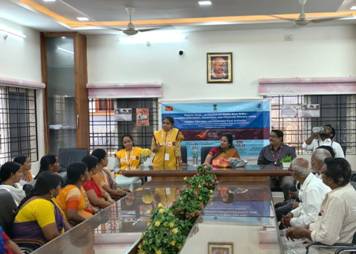
- 09 Sep 2025
In News:
The Investor Education and Protection Fund Authority (IEPFA), under the Ministry of Corporate Affairs, has launched Phase II of its flagship financial literacy initiative,Niveshak Didi, in Hyderabad. The program targets rural communities, with a special emphasis on women’s financial empowerment.
Objective and Significance
- Aim: To deepen financial awareness and enable women to make informed financial decisions, safeguard savings, and actively participate in the financial ecosystem.
- Approach: Based on the principle of “women for women”, recognizing that rural women are more comfortable discussing financial matters with female educators.
- Significance: Acts as a catalyst for bridging knowledge gaps, building confidence, and promoting financial resilience in rural communities.
Launch Highlights
Key points from the launch:
- Financial literacy sessions were conducted in Telugu to facilitate understanding.
- Emphasis on fraud prevention, safe investments, and digital financial literacy.
- IPPB’s extensive rural network ensures last-mile delivery of financial education and services.
Key Features of Phase II
- Expanded outreach to more villages and rural areas.
- Interactive training modules to improve engagement.
- Collaboration with grassroots organizations for maximum impact.
- Focus on savings, investment safety, fraud prevention, and digital transactions.
About IEPFA
- Established: 2016 under the Companies Act, 2013
- Functions:
- Manage the Investor Education and Protection Fund (IEPF)
- Facilitate refunds of unclaimed dividends, shares, matured deposits, and debentures
- Promote financial literacy and investor protection
- Major Initiatives:Niveshak Didi, Niveshak Panchayat, NiveshakShivir
Unique Disability ID (UDID) Scheme

- 08 Sep 2025
In News:
The Unique Disability ID (UDID) project, launched by the Department of Empowerment of Persons with Disabilities (DEPwD), Ministry of Social Justice and Empowerment, aims to create a national database of Persons with Disabilities (PwDs) and provide them with a single identification document that is valid across the country. Despite its importance, recent data highlight serious gaps in its coverage and implementation.
Current Status and Coverage
- Less than 40% of India’s projected PwD population have been issued UDID cards.
- Over 11 lakh applications remain pending, with more than 60% delayed for over six months.
- In most States, fewer than half of PwDs possess the card; only Tamil Nadu, Meghalaya, Odisha, and Karnataka have crossed the 50% coverage mark.
- West Bengal stands out with an extremely low coverage of around 6%.
- Data for Andhra Pradesh and Telangana were unavailable separately.
Features of the UDID Card
- Structure: An 18-character alphanumeric ID, encoding details such as state, district, disability type, year of birth, and a security checksum.
- Types of Cards (based on disability percentage):
- White: Below 40% disability.
- Yellow: 40%–80% disability.
- Blue: Above 80% disability.
- Issuance: Authorized by district hospitals or the hospital where the PwD is undergoing treatment, under the Rights of Persons with Disabilities (RPwD) Act, 2016.
Objectives of the UDID Project
- Creation of a centralized, nationwide database of PwDs.
- Elimination of duplicate records and ensuring portability across States.
- Online and offline submission of applications, with provision for renewal and updates.
- Tracking of physical and financial progress of beneficiaries through an integrated Management Information System (MIS).
- Facilitation of access to benefits under schemes such as:
- ADIP Scheme – providing assistive devices like wheelchairs, prostheses, and hearing aids.
- Scholarships for education.
- Reservations in employment and educational institutions.
Implementation Challenges
- Delayed Processing: Over half of all applications remain pending beyond six months, with Himachal Pradesh, Ladakh, and Mizoram having the highest backlog.
- Digital Divide: The application process requires online submissions and document uploads, which excludes many due to low digital literacy. Only about 60% of Indians above 15 years can use basic digital tools; the share is even lower among women and PwDs.
- Staggered Roll-out: Earlier, States issued disability certificates locally; the transition to UDID was not communicated effectively, leading to confusion.
- Reduced Funding: While overall allocation for PwD welfare has increased, budgetary support for the UDID sub-scheme has declined, constraining outreach.
- Political Marginalization: PwDs constitute only 2.68 crore people (2011 Census), making them a relatively small political constituency. This reduces policy priority, as their collective influence on electoral outcomes is limited.
Significance
- Welfare Access: UDID acts as a gateway to schemes, ensuring uniformity and portability across States.
- Data-Driven Policy: Enables real-time monitoring and evidence-based policymaking.
- Administrative Efficiency: Prevents duplication and leakages in welfare delivery.
- Social Inclusion: Supports the objectives of the RPwD Act, 2016 and aligns with India’s commitments under the UN Convention on the Rights of Persons with Disabilities (UNCRPD).
Incentive Scheme to Promote Critical Mineral Recycling
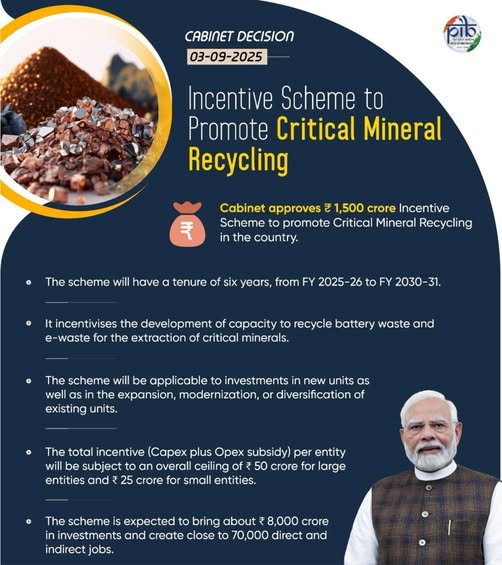
- 08 Sep 2025
In News:
- The Union Cabinet has approved a ?1,500 crore Incentive Scheme to promote critical mineral recycling in India, marking a significant step towards reducing import dependence and ensuring sustainable supply chain resilience.
- The scheme forms part of the broader National Critical Mineral Mission (NCMM), which seeks to build domestic capacity in exploration, mining, acquisition of foreign assets, and recycling of critical minerals.
Key Features of the Scheme
- Tenure: Six years, from FY 2025-26 to FY 2030-31.
- Outlay: ?1,500 crore.
- Eligible Feedstock:
- E-waste
- Lithium-ion battery (LIB) scrap
- Other scrap sources such as catalytic converters from end-of-life vehicles.
- Beneficiaries:
- Large, established recyclers.
- Small/new recyclers and start-ups (allocated one-third of scheme outlay).
- Applicability: Investments in new units, as well as expansion, modernization, or diversification of existing units.
Incentive Structure
- Capex Subsidy:
- 20% subsidy on plant, machinery, equipment, and utilities for projects that commence production within the stipulated timeframe.
- Delays will lead to reduced subsidies.
- Opex Subsidy:
- Linked to incremental sales over FY 2025-26 baseline.
- 40% subsidy in the 2nd year (FY 2026-27).
- 60% subsidy in the 5th year (FY 2030-31), subject to achieving threshold sales.
- Ceilings per Entity:
- Large recyclers – ?50 crore (with ?10 crore cap on Opex subsidy).
- Small recyclers/start-ups – ?25 crore (with ?5 crore cap on Opex subsidy).
- Scope: Incentives are limited to the extraction of critical minerals, not just black mass production.
Expected Outcomes
- Development of 270 kilotons of annual recycling capacity.
- Production of around 40 kilotons of critical minerals annually.
- Mobilization of about ?8,000 crore investment.
- Creation of nearly 70,000 direct and indirect jobs.
Significance
- Strategic Minerals Security: Provides near-term solutions to bridge supply-demand gaps until new mines and foreign acquisitions materialize.
- Circular Economy Boost: Promotes recycling of high-value e-waste and LIB scrap, reducing environmental load.
- Atmanirbhar Bharat: Strengthens domestic industries in electronics, renewable energy, and EV sectors by ensuring reliable access to lithium, cobalt, nickel, and other critical minerals.
- Inclusivity: Special provisions for start-ups and small recyclers to encourage innovation and wider participation.
Matanomadh in Kutch
- 08 Sep 2025
In News:
- A remote village in Gujarat’s Kutch district, Matanomadh, is emerging as a potential analogue site for India’s future Mars missions.
- Researchers from the Space Applications Centre (ISRO), Savitribai Phule Pune University, and the Birbal Sahni Institute of Palaeosciences have confirmed the presence of jarosite, a mineral also discovered on Mars, making the region significant for planetary studies.
Jarosite and Its Relevance
- Composition: Jarosite is a yellow-brown mineral composed of potassium, iron, and sulphate, typically formed in arid, saline environments under extreme geochemical conditions.
- Formation: On Earth, it is linked to volcanic activity, where volcanic ash containing sulphur reacts with water-rich environments.
- Global Occurrence: Rare on Earth; found in Mexico, Canada, Japan, Spain, USA (Utah, California), and in India at Kerala’s Varkala cliffs and now Kutch.
- On Mars: First detected in 2004 by NASA’s Opportunity Rover at Meridiani Planum, jarosite is considered strong evidence of water activity on the red planet.
The Kutch Discovery
- Age: Jarosite deposits at Matanomadh have been dated to around 55 million years ago (Paleocene period).
- Geological Significance: Indicates that environmental and chemical conditions in Kutch millions of years ago resembled those on Mars.
- Current Findings: The mineral occurs as fine deposits mixed with clay. When mixed with water, this clay expands—closely resembling Martian sulphate-clay formations.
Importance for Space Research
- Field Analogue for Mars: The site provides a natural laboratory to test rovers, instruments, drilling, geochemistry, and astrobiology experiments for upcoming missions like Mangalyaan-2.
- Astrobiology Potential: Sulphates such as jarosite can trap organic molecules, offering clues to possible microbial life.
- Palaeo-evolution Insights: Helps decode the geological and chemical history of Mars.
- Complementary Sites: While Ladakh’s Tso Kar Valley (HOPE Mission) simulates Martian living conditions, Kutch offers geological parallels for studying surface mineralogy.
Challenges
- The site is currently waterlogged and threatened by coal mining activities in the vicinity. Scientists have urged that Matanomadh be declared a site of planetary geo-heritage to protect its unique deposits.
Foreigners Tribunals
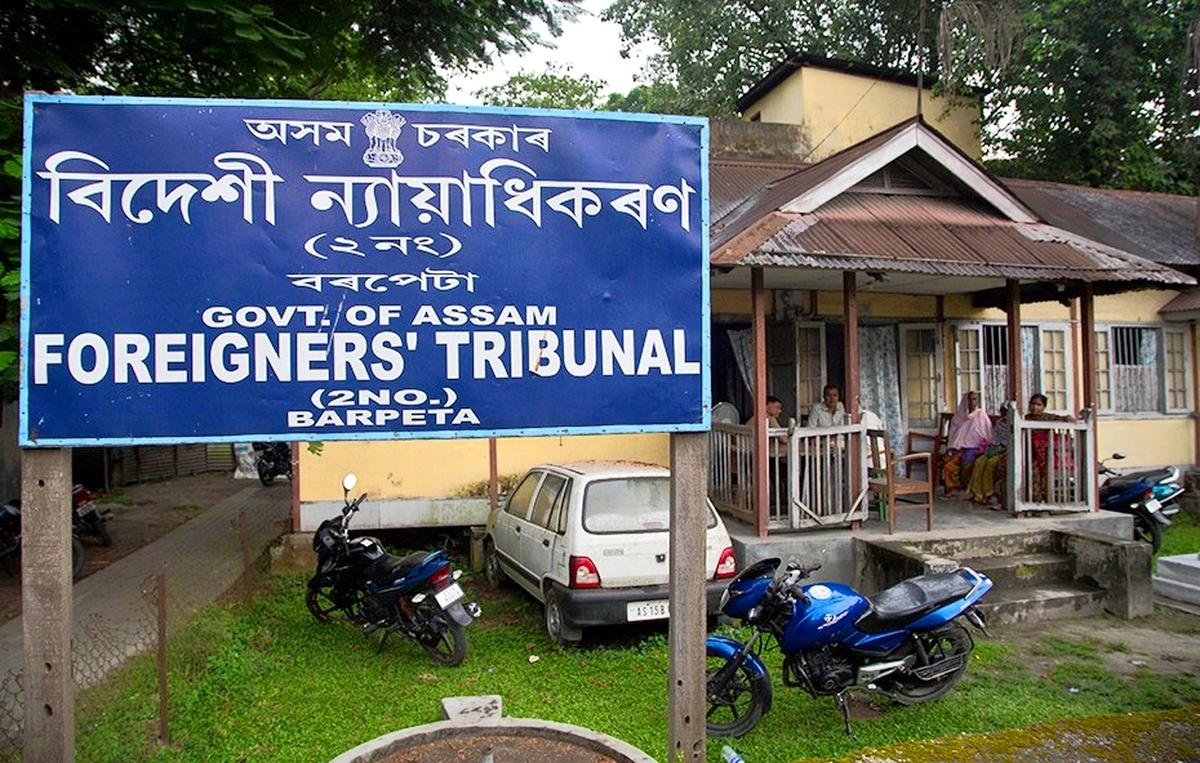
- 08 Sep 2025
In News:
The Union Home Ministry has recently empowered Foreigners Tribunals (FTs) with expanded judicial authority under the Immigration and Foreigners Act, 2025, which came into effect in September 2025. This marks a significant shift in India’s approach to dealing with suspected illegal immigrants, particularly in states like Assam.
Background
- Earlier Framework: Foreigners Tribunals were originally set up under the Foreigners (Tribunals) Order, 1964, issued under the Foreigners Act, 1946. Their main role was to determine whether a person was a foreign national.
- In Assam, such tribunals were established after the Illegal Migrants (Determination by Tribunals) Act, 1983 was struck down by the Supreme Court in 2005. Currently, around 100 FTs are functional in the state.
- Earlier, detention of declared illegal immigrants was carried out through executive orders, without direct judicial sanction.
Provisions of the 2025 Act
The Immigration and Foreigners Act, 2025 repeals older legislations and replaces the 1964 Order, giving FTs enhanced powers akin to those of a civil court and a first-class judicial magistrate.
New Powers of Foreigners Tribunals:
- Summoning and enforcing attendance of individuals and examining them under oath.
- Requiring production and verification of documents.
- Issuing commissions for the examination of witnesses.
- Directing suspects (“proceedees”) to appear in person.
- Issuing arrest warrants in case of non-appearance.
- Sending suspected or declared foreigners to detention/holding centres pending deportation.
Procedural Aspects:
- Notices are served to suspected individuals to prove their citizenship within 10 days.
- Cases are to be disposed of within 60 days of reference.
- Declared foreigners are placed in detention or transit camps until deportation.
Significance
- Strengthened Legal Framework: Brings uniformity and judicial backing to the process of identifying and detaining unauthorised foreigners.
- Due Process Assurance: Ensures quasi-judicial scrutiny before declaring an individual a foreigner.
- Regional Relevance: Particularly critical in Assam and Northeast India, which face unique challenges of cross-border migration.
- Administrative Clarity: Clearly demarcates powers between executive authorities and tribunals.
Exercise MAITREE
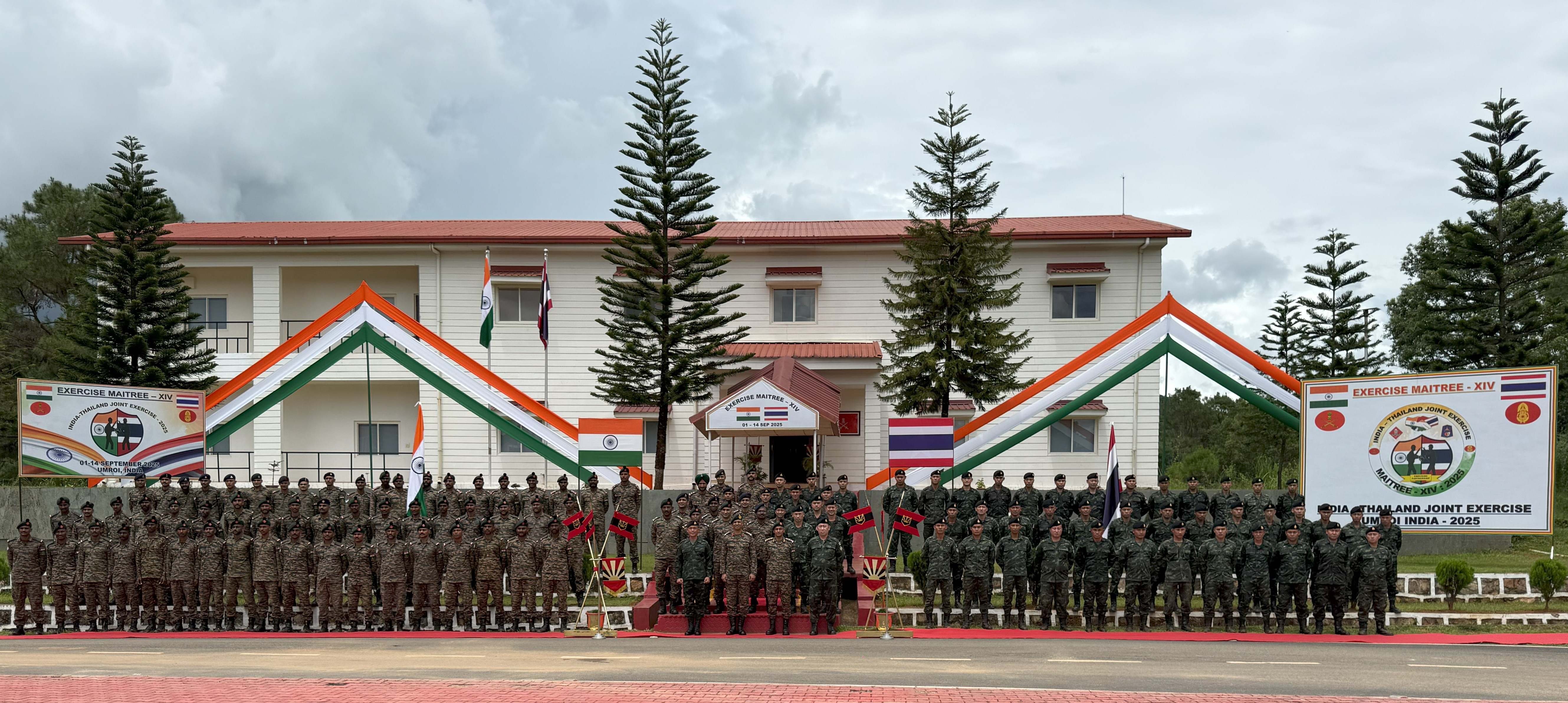
- 08 Sep 2025
In News:
The 14th edition of Exercise MAITREE-XIV, a joint military exercise between India and Thailand, commenced at the Joint Training Node (JTN), Umroi, Meghalaya.
Background
Instituted in 2006, Exercise MAITREE is a bilateral military exercise aimed at enhancing cooperation, interoperability, and mutual understanding between the Indian Army and the Royal Thai Army. The 13th edition was held at Fort Vachiraprakan, Tak Province, Thailand.
Key Features of MAITREE-XIV
- Participants:
- Indian Army – 120 personnel, represented by a battalion of the Madras Regiment.
- Royal Thai Army – 53 personnel from the 1st Infantry Battalion, 14th Infantry Brigade.
- Focus Area:
- Company-level counter-terrorist operations in semi-urban terrain, in accordance with Chapter VII of the UN Charter.
- Tactical drills, joint planning, special arms skills, physical fitness, and raiding operations.
Significance
- Reinforces bilateral defence cooperation and strengthens regional security architecture.
- Reflects the shared commitment of India and Thailand towards peace, stability, and counter-terrorism efforts.
- Enhances the operational synergy of both armies, particularly in addressing contemporary security challenges in the Indo-Pacific.
Global Peace Index (GPI) 2025
- 07 Sep 2025
In News:
The Global Peace Index (GPI) 2025, compiled by the Institute for Economics and Peace (IEP), ranked Iceland as the world’s most peaceful country, a position it has held since 2008. Covering 163 independent states and territories that represent 99.7% of the global population, the index provides a comparative measure of peace across nations.
India’s Performance
- Rank: 115th out of 163 countries.
- Score: 2.229, reflecting a 0.58% improvement over the previous year.
- Improvement Drivers: Gradual decline in domestic disputes and relative stability in societal security.
- Persistent Challenges: High militarisation, cross-border tensions, and sporadic internal unrest continue to limit India’s peacefulness score.
Global Rankings
- Top 10 Peaceful Nations (2025): Iceland, Ireland, New Zealand, Finland, Austria, Switzerland, Singapore, Portugal, Denmark, and Slovenia.
- Least Peaceful Nations: Russia, Ukraine, Sudan, Democratic Republic of Congo, and Yemen.
- Regional Highlights:
- Europe dominates the top 10 due to low crime, political stability, and strong institutions.
- South America witnessed improvements, with Argentina and Peru making notable gains.
- Sub-Saharan Africa and the Middle East remain the least peaceful, marred by civil wars, terrorism, and political instability.
Criteria of Assessment
The GPI ranks countries across 23 indicators grouped under three domains:
- Societal Safety and Security – crime rates, political stability, refugee impact.
- Ongoing Domestic and International Conflict – wars, terrorism, civil unrest.
- Militarisation – defence expenditure, arms imports/exports, armed personnel.
Global Peace Trends 2025
- The global average peacefulness has declined, primarily due to growing internal conflicts, rising militarisation, and widening geopolitical divides.
- While countries like Iceland scored consistently high due to low crime, absence of an army, and strong social trust, many regions faced setbacks with increased unrest and repression (e.g., Pakistan, Bangladesh, South Africa).
Gastrochiluspechei
- 07 Sep 2025
In News:
Researchers have discovered a new orchid species, Gastrochiluspechei, in Vijoynagar, Arunachal Pradesh, one of India’s remotest administrative circles bordering Myanmar. Until now, this orchid was known to bloom only in Myanmar, highlighting the floristic link between Arunachal Pradesh and Southeast Asia.
Key Features of Gastrochiluspechei
- Genus: Belongs to the Gastrochilus genus, first recorded in 1825, comprising 77 species spread across tropical, subtropical, and temperate Asia.
- Identification: Distinguished by short axillary inflorescence, brightly coloured flowers, a distinct epichile on the hypochile, and two porate, globose pollinia on a slender stipe.
- Habitat: Thrives in moist, evergreen rainforests, growing on small trees near riverbanks.
- Flowering Season: Blooms between September and October.
Floristic Significance
- With this finding, India now records 23 species of the Gastrochilus genus, of which 15 are from Arunachal Pradesh.
- The discovery reinforces Arunachal Pradesh’s title as the “Orchid State of India,” which harbours about 60% of the country’s orchid diversity.
- It also provides scientific evidence of the biogeographical continuity between Arunachal Pradesh and Myanmar, where the species was earlier recorded in Kachin’s Putao County.
Broader Context
Orchids are not only indicators of ecological richness but also hold significance for conservation, floriculture, and sustainable livelihoods. The discovery of Gastrochiluspechei adds to India’s botanical wealth and underscores the need to preserve fragile Himalayan ecosystems where such rare species thrive.
BHARATI Initiative
- 07 Sep 2025
In News:
The Agricultural and Processed Food Products Export Development Authority (APEDA) has launched the BHARATI initiative (Bharat’s Hub for Agritech, Resilience, Advancement and Incubation for Export Enablement) to accelerate India’s agricultural and processed food exports.
Objectives and Vision
- Empowering Startups: BHARATI will support 100 agri-food and agri-tech startups in its first pilot cohort beginning September 2025.
- Export Growth: It is aligned with APEDA’s vision of achieving $50 billion in agri-food exports by 2030.
- Innovation & Competitiveness: The initiative seeks to promote cutting-edge solutions in GI-tagged products, organic foods, superfoods, processed agri-foods, livestock, and AYUSH-based products.
Key Features
- Technology Integration: Focus on AI-based quality control, blockchain-enabled traceability, IoT-enabled cold chains, agri-fintech, sustainable packaging, and sea protocols.
- Export Challenges Addressed: Product development, value addition, perishability, wastage reduction, quality assurance, and logistics efficiency.
- Collaborative Ecosystem: Startups will be connected with agri-innovators, tech providers, and SPS-TBT focused ventures to deliver scalable, cost-effective export solutions.
- Capacity Building: Selected startups will undergo a three-month acceleration programme covering product development, export readiness, regulatory compliance, and market access.
Institutional Support
To build a strong support ecosystem, APEDA will partner with:
- State agricultural boardsand agricultural universities
- IITs, NITs, and premier research institutions
- Industry bodies and accelerators
Significance
- Strengthens India’s global competitiveness in agri-food exports.
- Promotes Atmanirbhar Bharat, Vocal for Local, Digital India, and Start-Up India missions.
- Encourages demand-driven backward integration, innovation, and sustainable food value chains.
- Creates a scalable annual incubation model, ensuring long-term growth in agricultural and processed food exports.
India Green Energy Paradox
- 07 Sep 2025
In News:
India’s energy sector is witnessing a paradoxical challenge: while 44 GW of renewable energy (RE) capacity is ready for deployment, it remains stranded due to lack of Power Purchase Agreements (PPAs), weak demand absorption, and systemic barriers. This “green energy paradox” highlights the tension between India’s global climate commitments and its domestic energy realities.
Current Energy Landscape
Despite global recognition for its renewable push, India’s energy mix remains heavily dependent on coal:
- Coal & lignite: ~79% of domestic energy (FY23).
- Renewables (excluding large hydro): Only 3.8% of domestic production.
- Oil & gas imports: Over 85% oil and 50% gas, making India highly import-dependent.
While renewable capacity is expanding, India continues to lock itself into long-term coal PPAs, raising both environmental and economic concerns.
Green Energy Paradox: Two Dimensions
1. Supply-Side Readiness
- 44 GW of RE projects are deployment-ready but idle without PPAs.
- Tariff challenges: Solar power in India remains costlier than global benchmarks due to high cost of capital, GST, duties, and import taxes.
- Storage costs: Storage-backed renewables (battery/pumped hydro) raise tariffs to ?6.6–?9/unit, making them uncompetitive against coal.
- Government interventions: Initiatives like the National Solar Mission, Hybrid Policy, Production-Linked Incentive (PLI) for batteries, and Viability Gap Funding (VGF) aim to reduce costs and promote adoption.
2. Demand-Side Weaknesses
- Discom reluctance: Financially stressed state distribution companies (discoms) prefer coal PPAs due to predictable pricing.
- Grid inflexibility: Poor transmission capacity, absence of smart meters, and weak demand-response systems hinder RE integration.
- Slow electrification: With electricity accounting for just 20% of India’s total energy consumption (vs. 28% in China), limited adoption of EVs, electric cooking, and industrial heating suppresses RE demand.
- Reliability deficit: India’s System Average Interruption Duration Index (SAIDI) stands at 600 minutes/year, compared to 35 minutes in Thailand and 46 in Malaysia, deterring energy-intensive industries.
Barriers to Integration
- Structural: Debt-ridden discoms, weak cross-subsidy frameworks, and lack of flexible grids.
- Economic: High capital costs, expensive borrowing, and unviable storage solutions.
- Environmental: Long-term coal lock-ins undermine India’s Net Zero 2070 goals, while idle RE capacity delays emissions reduction.
Initiatives Taken
- Renewable Purchase Obligations (RPOs): Mandate states to procure RE, though targets often clash with local grid capability.
- Green Open Access Rules (2022): Allow industries to directly purchase renewable power, bypassing discoms.
- National Green Hydrogen Mission: Positions hydrogen as a long-term storage solution and clean fuel.
- PLI for batteries and India Semiconductor Mission: Support indigenous storage manufacturing.
Afghanistan Earthquake
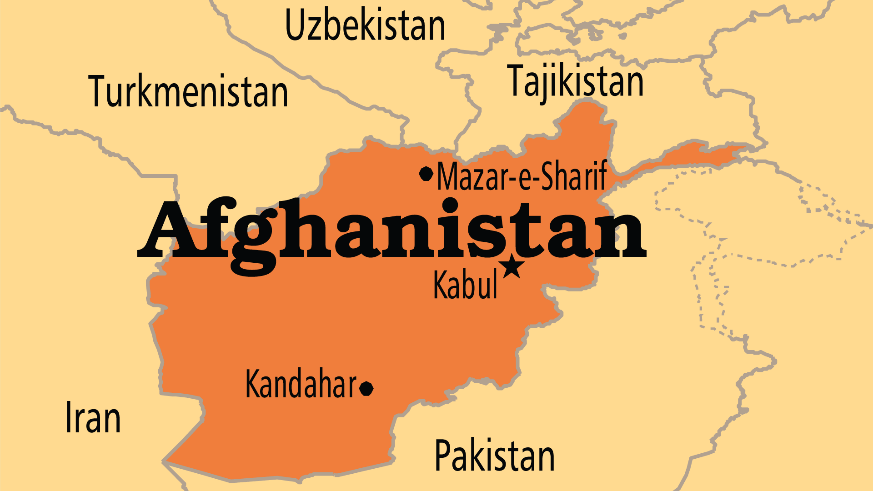
- 07 Sep 2025
In News:
A devastating 6.0-magnitude earthquake struck eastern Afghanistan near Jalalabad, killing over 800 people and injuring at least 2,800 across Kunar, Nangarhar, and Laghman provinces. The tremors, felt from Kabul to Islamabad, destroyed homes in remote mountainous regions and highlighted Afghanistan’s acute vulnerability to natural disasters.
Afghanistan’s Seismic Vulnerability
Afghanistan lies at the collision zone of the Eurasian and Indian tectonic plates, making it one of the world’s most seismically active regions. The Hindu Kush mountain range, part of the greater Himalayan system, witnesses frequent tremors. Since 1900, at least 12 earthquakes exceeding magnitude 7 have struck northeast Afghanistan.
Most Afghans live in low-rise, mud-brick dwellings, which offer little resistance to seismic shocks. With poor infrastructure, fragile governance, and limited access to technology, the human toll of disasters is amplified.
Geographic and Geostrategic Context
Afghanistan is a landlocked, multi-ethnic nation in South-Central Asia, historically situated at the crossroads of trade and power rivalries—from the “Great Game” between Britain and Russia to Cold War confrontations.
- Capital: Kabul
- Neighbours: Pakistan, Iran, Turkmenistan, Uzbekistan, Tajikistan, and China (via the narrow Wakhan Corridor).
- Geographic Features:
- Mountains: The Hindu Kush dominates, with passes like the Khyber and Shebar, linking Central and South Asia.
- Rivers: Amu Darya (north), Kabul River (tributary of Indus), Helmand (longest at 715 miles), and Hari Rud (Afghanistan–Iran boundary).
- Regions:
- Central Highlands – rugged, earthquake-prone terrain.
- Northern Plains – fertile, resource-rich areas with gas reserves.
- Southwestern Plateau – arid deserts such as Registan and Margow.
These geographical features make Afghanistan both strategically significant and highly disaster-prone.
Indian Rosewood
- 06 Sep 2025
In News:
- Indian rosewood (Dalbergialatifolia in the south and Dalbergia sissoo in the north), often referred to as the “ivory of the forests”, is prized globally for its rich grain, deep colour, and durability.
- It serves as both a premium timber resource for furniture, handicrafts, and musical instruments, and an ecologically significant species that enhances soil fertility through nitrogen fixation, supports bird and insect diversity, and acts as a long-term carbon sink.
Distribution and Habitat
- Dalbergialatifolia: Native to the Nilgiris, Anamalai, and Parambikulam ranges in Tamil Nadu, with significant habitats in Karnataka and Kerala.
- Dalbergia sissoo (North Indian rosewood): Found along the Himalayan foothills, from Afghanistan to Bihar, typically growing along riverbanks between 200–1,400 m elevation.
- Recent habitat modelling by the Institute of Wood Science and Technology (IWST), Bengaluru, using 3,224 geo-referenced points and 19 bioclimatic variables, found that only 17.2% of India’s suitable habitat lies within protected areas.
Current Status in Tamil Nadu
- Field surveys (2019–2025) by IWST and the Indian Council of Forestry Research and Education revealed that Tamil Nadu has the lowest density of rosewood in South India, with just 2.85 trees per 0.1 hectare, compared to 6.19 in Karnataka and 5.38 in Kerala.
- The populations are dominated by mature, ageing trees with little or no natural regeneration, and seedlings are rare or absent in many areas.
- The situation has worsened after the lapse of the Tamil Nadu Rosewood (Conservation) Act, 1995, which had regulated felling of rosewood for nearly three decades.
- With no renewal after February 2025, privately owned rosewood, especially in tea plantations of the Nilgiris, faces heightened risk of exploitation.
Threats
- Weak Legal Safeguards – With the lapse of State legislation, most rosewood outside protected areas is exposed to felling and land-use change.
- Climate Change – IWST modelling projects shrinking suitable habitats in coming decades, further compounding the species’ vulnerability.
- International Demand – Luxury furniture and musical instruments drive high global demand.
- Regeneration Crisis – Ageing tree populations without sufficient seedlings threaten long-term survival.
Conservation Status
- IUCN Red List: Vulnerable (since 2018).
- CITES: Appendix II (regulated trade).
- India’s Last National Assessment (2011–12): Near Threatened.
Blue Sea Dragons
- 06 Sep 2025
In News:
Recently, several beaches in Guardamar del Segura, Spain, were closed after an unusual invasion of blue sea dragons (Glaucus atlanticus), a rare but strikingly beautiful species of sea slug. Authorities imposed the ban as a precautionary measure to protect residents and tourists from potential stings.
About Blue Sea Dragons
- Taxonomy: A type of mollusk belonging to the nudibranch family.
- Other Names: Also called blue sea slugs, sea swallows, and blue angels.
- Appearance: Known for their ethereal blue and silver coloration and small size (1–3 cm), often floating upside down on the ocean surface.
- Distribution: Found across Atlantic, Pacific, and Indian Oceans in tropical and temperate waters.
- Reproduction: They are hermaphrodites, possessing both male and female reproductive organs.
Feeding and Venom Storage
- Diet consists mainly of venomous siphonophores such as the Portuguese man-o’-war and bluebottle jellyfish.
- Instead of digesting their prey’s stinging cells (nematocysts), they store and concentrate them in finger-like structures on their backs called cerata.
- This makes their sting more potent than that of the original prey, giving them a powerful defence mechanism despite their fragile appearance.
Impact on Humans
- Though not venomous on their own, their stored nematocysts can deliver extremely painful stings.
- Reported symptoms include nausea, vomiting, pain, dermatitis, allergic reactions, and post-inflammatory hyperpigmentation.
- Children and elderly individuals are especially vulnerable.
Ramon Magsaysay Award 2025
- 06 Sep 2025
In News:
The Ramon Magsaysay Award 2025, Asia’s most prestigious honour, has been conferred on ‘Educate Girls’, an Indian non-profit organisation working to promote girls’ education in rural and remote areas. This marks the first time an Indian NGO has received this award, making it a historic milestone for the country.
About Educate Girls
- Founded by Safeena Husain, Educate Girls (also known as the Foundation to Educate Girls Globally) has been instrumental in addressing gender inequality in education.
- The organisationmobilises communities to enrol out-of-school girls, improve learning outcomes, and empower them to continue education.
- Its grassroots volunteers, known as Team Balika and preraks, work in partnership with governments, donors, and local communities.
About Ramon Magsaysay Award
- Instituted in 1958 to celebrate “greatness of spirit and transformative leadership in Asia”.
- Named after Philippine President Ramon Magsaysay, remembered for his integrity and people-centric leadership.
- From 1958–2008, the award was given in six categories: Government Service, Public Service, Community Leadership, Journalism & Creative Communication Arts, Peace & International Understanding, and Emergent Leadership.
- Since 2009, except for Emergent Leadership, it is presented without fixed categories.
- Winners receive a certificate and a medallion bearing the image of Ramon Magsaysay.
- The award ceremony takes place annually in Manila, Philippines on 31st August, Magsaysay’s birth anniversary.
- Till date, over 300 individuals and organisations across Asia have been recognised.
Other 2025 Awardees
- Shaahina Ali (Maldives): Environmental activist.
- Fr. Flaviano Antonio L. Villanueva (Philippines): Human rights advocate known for opposing extrajudicial killings during the Duterte administration.
Exercise Yudh Kaushal 3.0
- 06 Sep 2025
In News:
The Indian Army recently conducted Exercise Yudh Kaushal 3.0 in the high-altitude Kameng region of Arunachal Pradesh, reaffirming its preparedness for next-generation warfare in extreme Himalayan terrain.
The exercise underscored the Army’s shift towards multi-domain operations, greater reliance on emerging technologies, and closer engagement with the domestic defence industry.
Key Highlights of the Exercise
- Terrain & Conditions: Conducted in high-altitude, harsh Himalayan conditions, validating combat effectiveness and operational resilience.
- Technological Integration: Featured drone surveillance, precision strikes, real-time target acquisition, air–littoral operations, and synchronized battlefield tactics, reflecting the Army’s technological adaptation.
- Debut of ASHNI Platoons: Marked the first operational deployment of the newly raised ASHNI platoons, designed to combine advanced technology with traditional combat expertise for decisive battlefield advantage.
- Indigenous Defence Industry Participation: Reflected India’s emphasis on Atmanirbhar Bharat and the “Decade of Transformation,” with active involvement of the domestic defence sector.
Strategic Significance
- Demonstrated India’s ability to conduct large-scale, coordinated operations in sensitive border regions.
- Validated the Army’s preparedness for multi-domain conflicts involving land, air, cyber, and unmanned systems.
- Reinforced the importance of self-reliance in defence technology by incorporating indigenous systems in live combat simulations.
- Showcased India’s resolve to maintain combat superiority in high-altitude operational theatres along the Line of Actual Control (LAC).
Mira Variable Stars
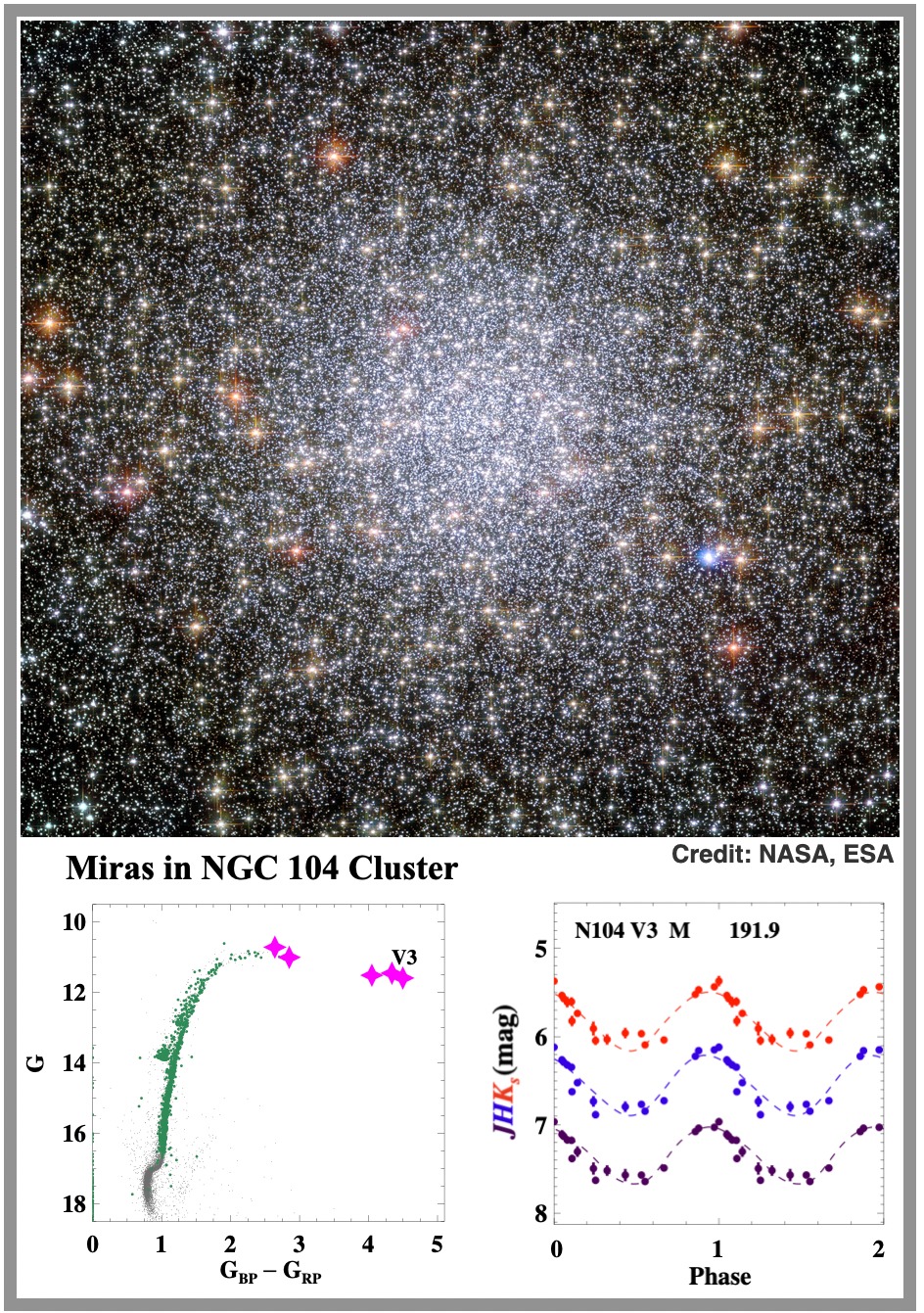
- 06 Sep 2025
In News:
A landmark study by the Inter-University Centre for Astronomy and Astrophysics (IUCAA), Pune, in collaboration with international scientists, has provided the most precise measurement yet of the Hubble constant, the rate of expansion of the universe. The work, co-authored by Nobel laureate Adam Riess, introduces oxygen-rich Mira variable stars as a new and reliable anchor in the cosmic distance ladder.
What are Mira Variables?
- Mira (Omicron Ceti), discovered in the 17th century, was the first known variable star, named “Mira” meaning ‘the wonderful’ in Latin.
- Mira variables are cool, giant stars (surface temperature ~3,000 K) in their late life stages.
- They exhibit regular cycles of expansion and contraction, leading to predictable brightness variations over 100–1,000 days.
- Crucially, their luminosity is strongly related to pulsation periods, making them excellent “standard candles”—objects of known brightness used to measure cosmic distances.
The IUCAA Study
- Led by Prof. Anupam Bhardwaj, the team studied 40 oxygen-rich Mira stars across 18 stellar clusters in our galaxy.
- Using precise distance data from the European Space Agency’s Gaia mission, they calibrated the absolute luminosities of these stars with unprecedented accuracy.
- This enabled an independent period–luminosity relationship, bypassing traditional reliance on Cepheid variables.
- The study achieved a 3.7% precision in measuring the Hubble constant—the most accurate determination using Miras to date.
Significance for Cosmology
- Mira-based calibration provides an independent check on Cepheid-based measurements, reducing metallicity-related uncertainties (Miras are 3 times less sensitive to metal abundance than Cepheids).
- Current results show consistency between Mira-anchored and Cepheid-anchored Hubble constant values, suggesting that the long-standing “Hubble tension”—the mismatch between early-universe (CMB-based) and late-universe (stellar-based) expansion rates—is not due to measurement errors.
- This points toward possible new physics beyond the Standard Cosmological Model.
Limitations and Future Prospects
- Presently, only two supernova-host galaxies contain known Mira stars, limiting large-scale calibration.
- Upcoming surveys with the Rubin Observatory are expected to discover numerous Miras in distant galaxies, significantly improving cosmic distance measurements.
- The study thus opens pathways to a more accurate determination of the universe’s age and size.
Equity Derivatives
- 05 Sep 2025
In News:
The Securities and Exchange Board of India (SEBI) has introduced a new regulatory framework to monitor intraday positions in equity index derivatives, effective October 1, 2025. The move is aimed at mitigating systemic risks, ensuring orderly market functioning, and curbing speculative excesses, especially on expiry days.
Key Features of the Framework
- Net Intraday Position Cap: ?5,000 crore per entity in index options (compared to the existing end-of-day limit of ?1,500 crore).
- Gross Intraday Position Cap: Restricted to ?10,000 crore, the same as the current end-of-day limit. This applies separately to long and short positions.
- Applicability: Framework applies only to index options, which dominate India’s derivatives market.
- Objectives:
- Prevent creation of outsized intraday exposures.
- Provide predictability and operational clarity.
- Strike a balance between ease of trading and robust risk management.
- Facilitate market-making activity on all trading days while ensuring discipline on expiry days.
Understanding Derivatives
Derivatives are financial contracts whose value is derived from an underlying asset, such as stocks, indices, commodities, or currencies. They allow investors to speculate on price movements, hedge against risks, or enhance returns.
Types of Equity Derivatives
- Futures Contracts: Obligates buyer and seller to transact an equity asset at a predetermined price on a future date (e.g., Nifty and Sensex futures).
- Options: Provides the right, but not obligation, to buy (call) or sell (put) an underlying asset at a set price before or on expiry.
- Forwards: Similar to futures but non-standardised and over-the-counter (not exchange-traded).
- Swaps: Involves exchange of cash flows linked to equity returns; used for hedging or investments.
Significance of Equity Derivatives in Markets
- Leverage: Small upfront margin allows control over large positions, magnifying gains (and risks).
- Hedging: Protects portfolios from adverse price fluctuations.
- Arbitrage Opportunities: Exploit price mismatches across markets.
- Diversification: Enhances portfolio risk-spread.
- Liquidity: High trading volumes ensure ease of entry and exit.
- Income Generation: Writing options or structured strategies provide additional returns.
- Cost Efficiency: Lower transaction costs compared to direct investment in underlying assets.
Why SEBI’s Move Matters
- Risk Containment: Prevents destabilisation of markets due to oversized speculative positions.
- Systemic Stability: Reduces chances of flash crashes or manipulative trades, especially during contract expiries.
- Market Discipline: Introduces quantitative caps that align with global best practices.
- Investor Confidence: Ensures orderly trading, which is crucial for attracting both institutional and retail investors.
Vikram 3201
- 05 Sep 2025
In News:
India crossed a significant milestone in its journey towards technological self-reliance in space electronics with the unveiling of the Vikram 3201, the nation’s first fully indigenous 32-bit microprocessor for rockets and satellites. The processor was showcased at the Semicon India 2025 conference, symbolising the country’s growing semiconductor capabilities and its commitment to Atmanirbhar Bharat.
Development and Collaboration
- Designed by: Vikram Sarabhai Space Centre (VSSC), ISRO
- Fabricated at: Semiconductor Laboratory (SCL), Chandigarh
- Launched by: Ministry of Electronics & Information Technology at Semicon India 2025
- Marks the first indigenously designed and fabricated processor of this scale for launch vehicle avionics.
Why the Processor Matters
- Unlike consumer processors (used in laptops or mobiles), the Vikram 3201 is space-grade, built to handle the navigation, control, and mission management of launch vehicles.
- Space electronics must withstand radiation, extreme vibration, and temperature fluctuations (–55°C to +125°C).
- With this chip, India reduces reliance on foreign processors, securing autonomy for critical missions and reducing supply-chain vulnerabilities.
Key Features
- Upgrade over Vikram 1601 (a 16-bit processor used since 2009).
- 32-bit architecture – enables faster, more precise data handling.
- 64-bit floating-point operations – ensures accurate trajectory and guidance calculations.
- Ada programming language support – widely used in aerospace for safety-critical systems.
- On-chip 1553B bus interfaces – allows seamless communication between avionics modules.
- Fabricated with 180 nm CMOS technology at SCL – reliable for aerospace-grade use.
- Military-grade resilience – rigorously tested for launch stresses and in-orbit functioning.
Testing and Validation
- Successfully tested on PSLV-C60 mission, where it powered the Mission Management Computer on the PSLV Orbital Experimental Module (POEM-4).
- Its in-orbit validation has given ISRO confidence for wider deployment in future missions.
Ecosystem and Complementary Developments
- ISRO has developed a complete software ecosystem: Ada compilers, assemblers, linkers, simulators, and Integrated Development Environments. A C-compiler is also under development.
- Alongside Vikram 3201, ISRO introduced:
- Kalpana 3201 – a 32-bit SPARC V8 RISC microprocessor with open-source compatibility.
- Reconfigurable Data Acquisition Systems (RDAS) – two variants.
- Relay Driver IC.
- Multi-Channel Low Drop-out Regulator IC.
- Together, these reduce dependency on imported avionics components.
Strategic Significance
- Technological Sovereignty: Eliminates dependency on foreign space-grade processors.
- Atmanirbhar Bharat: Strengthens indigenous capability in high-end semiconductor manufacturing.
- Semiconductor Push: Part of India’s broader semiconductor strategy, with five fabrication units under construction and incentives under the Design-Linked Incentive (DLI) scheme.
- Global Context: Space-grade processors are niche, not mass-produced, making indigenous capability a strategic advantage.
PRATUSH Telescope

- 05 Sep 2025
In News:
Scientists at the Raman Research Institute (RRI), Bengaluru, with support from the Department of Science and Technology (DST) and collaboration with ISRO, have proposed a pioneering lunar mission called PRATUSH (Probing ReionizATion of the Universe using Signal from Hydrogen). This futuristic radiometer aims to detect faint 21-cm radio signals from hydrogen atoms, which hold imprints of the Cosmic Dawn—the epoch when the first stars and galaxies formed, fundamentally shaping the Universe.
The Science of the Cosmic Dawn
- The Cosmic Dawn marks the birth of the first stars and galaxies, initiating the reionization of the Universe.
- Detecting the 21-cm hydrogen signal is crucial to study this epoch, but the signal is extremely faint, buried under strong terrestrial radio interference.
- The far side of the Moon—a naturally radio-quiet zone—offers the ideal site for such observations, free from Earth’s radio noise and ionospheric distortions.
About PRATUSH Payload
- Type: Radiometer telescope for low-frequency radio astronomy.
- Orbit: Preferred circumlunar orbit around the far side of the Moon.
- Core Components:
- Wideband frequency-independent antenna (30–250 MHz).
- Self-calibratable analog receiver.
- Digital correlator with 100 kHz spectral resolution.
- Mission Strategy:
- Continuous observation of large sky regions.
- Recording beam-averaged radio spectra at high spectral resolution.
- Nominal lifetime: Two years, ensuring high signal-to-noise ratio with broad sky coverage.
Role of Single-Board Computer (SBC)
At the heart of PRATUSH lies a compact Single-Board Computer (SBC), initially modeled on a Raspberry Pi, designed to overcome stringent size, weight, and power (SWaP) constraints of space missions.
Functions of SBC:
- Master controller of the radiometer system.
- Coordinates antenna, analog receiver, and Field Programmable Gate Array (FPGA) for digital processing.
- Records, stores, and calibrates high-speed data streams.
- Performs preliminary data processing onboard.
Performance:
- Laboratory tests collected 352 hours of reference data, reducing receiver noise to just a few millikelvins, confirming its sensitivity to the Cosmic Dawn signal.
- Next-generation space-grade SBCs will replace commercial models for flight.
Significance of PRATUSH
- Scientific Breakthrough:
- May unlock how the first stars sculpted the Universe.
- Potential to discover new physics related to early cosmic evolution.
- Technological Innovation:
- Demonstrates the effectiveness of low-power, miniaturized controllers in deep-space astronomy.
- Showcases India’s ability to design low-mass, high-capability payloads.
- Strategic Value:
- Strengthens India’s presence in lunar science and radio astronomy.
- Enhances collaboration between RRI, DST, and ISRO.
- Global Impact:
- Contributes to humanity’s collective effort to detect the Universe’s earliest signals.
- Positions India as a frontrunner in next-generation space astrophysics.
High Performance Biomanufacturing Platforms
- 05 Sep 2025
In News:
- India has taken a significant step towards strengthening its bioeconomy with the launch of High-Performance Biomanufacturing Platforms by the Department of Biotechnology (DBT) and the Biotechnology Industry Research Assistance Council (BIRAC) under the BioE3 Policy (Biotechnology for Environment, Economy & Employment).
- The initiative aims to provide world-class infrastructure, tools, and expertise to start-ups, SMEs, industry, and academia, enabling the transition of bio-based innovations from laboratories to production scale.
Key Features of the Platforms
- National Network: 21 bio-enablers comprising advanced biofoundries and biomanufacturing hubs.
- Focus Areas:
- Microbial strains & smart proteins
- Probiotics & bio-based chemicals
- Next-generation cell therapies & mRNA medicines
- Marine bio-innovations
- Sustainable biofuels
- Support System: Offers integrated facilities for R&D, innovation, and commercialization.
- Alignment: Consistent with Atmanirbhar Bharat vision and India’s climate commitments.
Objectives
- Economic: Position India as a global bioeconomy leader and build a multi-trillion-dollar bioeconomy by 2047.
- Strategic: Reduce dependence on imports by strengthening indigenous capabilities.
- Social: Generate employment, build capacity, and support youth-led innovations.
- Environmental: Promote green growth and sustainable production systems.
Significance of the Initiative
- Economic Potential
- India now accounts for ~20% of global biomanufacturing capacity.
- Bio-industrial sector contributes 47.2%, bio-farmers 35.2%, bio-services 9.4%, and bio-agri8.1% to the bioeconomy.
- Reinforces India’s status as the world’s fourth-largest economy and a rising biotech powerhouse.
- Employment and Innovation
- Creates an enabling ecosystem for start-ups and SMEs, boosting entrepreneurship.
- Generates skilled jobs in cutting-edge sectors like synthetic biology, bioenergy, and therapeutics.
- Strategic Autonomy
- Enhances self-reliance in critical biomanufacturing domains such as vaccines, smart proteins, and biofuels.
- Reduces vulnerability to global supply chain disruptions.
- Sustainability and Viksit Bharat 2047
- Supports green growth through bio-based, low-carbon solutions.
- Anchors India’s long-term development vision of Viksit Bharat by 2047.
Pradhan Mantri Garib Kalyan Anna Yojana (PMGKAY)
- 05 Sep 2025
In News:
The Pradhan Mantri Garib Kalyan Anna Yojana (PMGKAY), launched in March 2020 as a COVID-19 relief measure, has evolved into one of the world’s largest food security initiatives.
Implemented under the National Food Security Act (NFSA), 2013, the scheme provides free rice and wheat to eligible households through the Public Distribution System (PDS). While it has ensured nutritional security for ~81 crore people, the soaring food subsidy bill (?2.03 lakh crore in FY26) has prompted the Union government to initiate a review for fiscal sustainability.
Key Features of PMGKAY
- Coverage: ~81.35 crore beneficiaries (75% rural, 50% urban population).
- Entitlements:
- Antyodaya Anna Yojana (AAY): 35 kg per family per month.
- Priority Households (PHH): 5 kg per person per month.
- Annual Distribution: 56–58 million tonnes of foodgrains.
- Mode of Delivery: ~5.4 lakh fair price shops (FPSs).
- Cost: Entirely free of cost since January 2023 (earlier, NFSA beneficiaries paid nominal prices).
- Transparency Measures: 83% Aadhaar-based e-KYC completed; 204 million household ration cards seeded.
Current Review and Concerns
- Rising Subsidy Burden
- Food subsidy bill has crossed ?2 lakh crore in FY26, widening the fiscal strain.
- Gap between economic cost (procurement, storage, transportation) and issue prices has grown, since prices were never revised after NFSA’s enactment.
- Ineligible Beneficiaries
- About 10% of the 800 million listed beneficiaries were found in government databases (taxpayers, vehicle owners, company directors, etc.).
- Several beneficiaries did not lift their share of grains for months.
- States like Rajasthan, Odisha, and Madhya Pradesh have started removing ineligible ration cards.
- Re-verification Drive
- States asked to reverify ration cards issued a decade ago to weed out ineligible households and add new ones.
- Field verification and inter-ministerial data convergence with CBDT, CBIC, MCA, Road Transport, and PM-Kisan databases are being carried out.
- Equity Concerns
- In some cases, single-member AAY households received 35 kg/month, raising questions on fairness.
- Conversely, deserving families remain excluded due to outdated lists.
Reform Measures Underway
- Database Cleansing: Aadhaar-based authentication to ensure rightful targeting.
- Infrastructure Creation: ?1.25 lakh crore project for modern grain storage in cooperatives and integration of PACS godowns into the supply chain.
- Policy Options:
- Introducing a partial cost-sharing model for better-off sections.
- Rationalising coverage to focus more on nutritional outcomes (shift to nutri-cereals).
- Savings redirected towards agri-R&D, irrigation, and value chain efficiency.
Japan Post Bank’s Digital Yen (DCJPY)
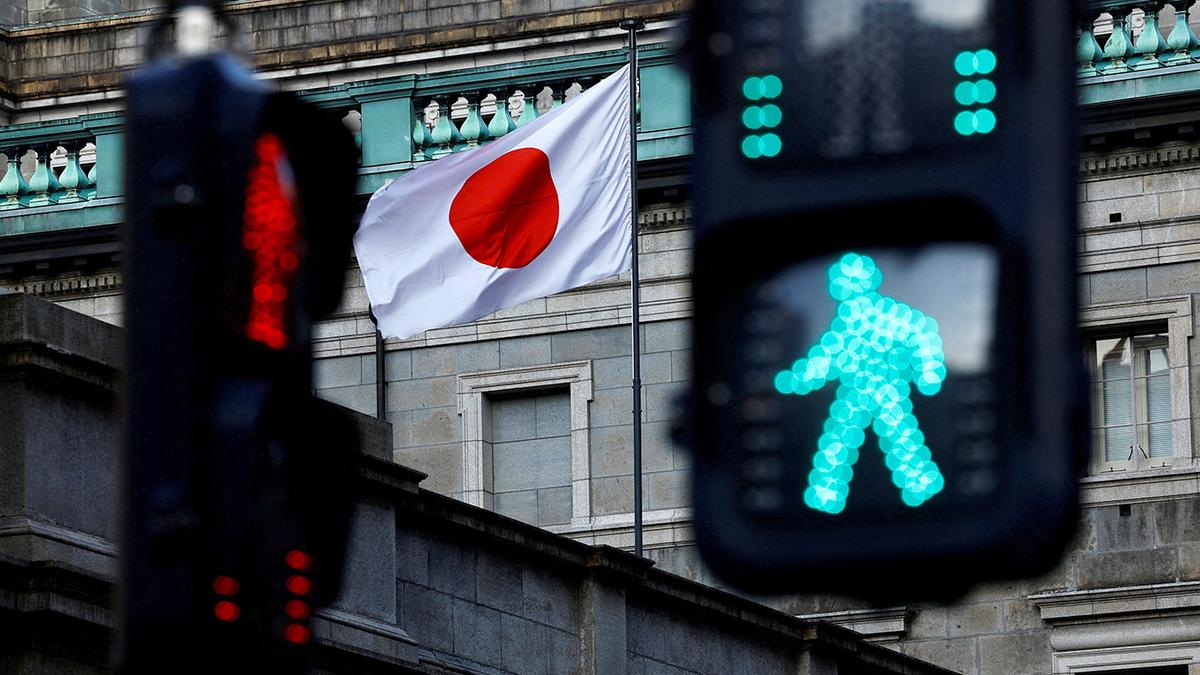
- 04 Sep 2025
In News:
Japan is set to make a significant leap in the digital finance space with the launch of a blockchain-based digital yen (DCJPY) by fiscal 2026. Announced by the Japan Post Bank—a major financial institution with significant government shareholding—this initiative marks one of the largest government-linked ventures into deposit-based digital currencies worldwide.
About DCJPY
- Nature: A blockchain-based deposit currency.
- Backing: Fully backed 1:1 by fiat yen, eliminating volatility risks common to cryptocurrencies.
- Issuer: Japan Post Bank, in collaboration with DeCurret DCP (subsidiary of Internet Initiative Japan).
- Regulation: Issued through the formal banking system, giving it more security, oversight, and credibility compared to private stablecoins.
How It Works
- Customers convert yen deposits into DCJPY tokens.
- These tokens can be used for:
- Real-time digital transactions.
- Settlement of digital securities.
- Asset tokenization and blockchain-based asset transfers.
- Entirely recorded on a blockchain ledger, ensuring traceability, transparency, and instant settlement.
Key Features
- Full Fiat Backing: Maintains stability with zero volatility.
- Blockchain-based: Offers decentralisation, improved security, and transparency.
- Instant Settlement: Removes delays of traditional bank transfers.
- Wider Usability: Designed for ordinary depositors, unlike experimental central bank digital currencies (CBDCs).
- Tokenized Deposit Currency: Positioned distinct from private stablecoins, bridging regulated banking with blockchain innovation.
Strategic Significance
- For Japan’s Financial System
- Strengthens the use of blockchain in mainstream finance.
- Supports digital securities, asset tokenization, and fintech integration.
- Enhances efficiency in payments, settlements, and cross-border transfers.
- Global Context
- Adds momentum to the digital currency race, where China has already advanced with its e-CNY (digital yuan) pilot.
- Offers a regulated alternative to volatile cryptocurrencies, addressing concerns of money laundering, volatility, and lack of oversight.
- Reflects a growing global trend of exploring CBDCs and deposit tokens to safeguard monetary sovereignty against private crypto dominance.
YudhAbhyasExercise
- 04 Sep 2025
In News:
Despite rising bilateral tariff tensions, India and the United States have commenced their largest-ever edition of the YudhAbhyas Army exercise at Fort Wainwright, Alaska. The two-week-long exercise underscores the strategic depth of the India–US defence partnership, even amid political and trade frictions.
About YudhAbhyas Exercise
- Nature: Annual bilateral military exercise between the Indian Army and the US Army.
- Initiation: Started in 2004 under the India–US Defence Cooperation Framework.
- Hosting: Conducted alternately in India and the US.
- Focus: Joint training in counter-terrorism, peacekeeping, mountain and high-altitude warfare.
2025 Edition Highlights
- Location: Fort Wainwright, Alaska — subarctic conditions comparable to Himalayan terrain.
- Indian Participation: Over 450 soldiers from the Madras Regiment.
- US Participation: Troops from the 5th Infantry Regiment “Bobcats”, Arctic Wolves Brigade Combat Team, 11th Airborne Division.
Training Features
- Joint heliborne operations.
- Surveillance and UAV deployment.
- Rock-craft and mountain warfare.
- Casualty evacuation and combat medical aid.
- Integrated use of artillery, aviation, and electronic warfare.
Strategic Significance
- Operational Readiness
- Enhances interoperability and coordination in extreme cold climates, vital for Himalayan and Arctic theatres.
- Strengthens joint capabilities in counter-terrorism, peace support, and disaster relief operations.
- Defence Cooperation Beyond Exercises
- The US has secured Indian defence deals worth over $25 billion since 2007.
- Recent major acquisitions:
- 99 GE-F404 turbofan engines (for Tejas Mk-1A fighters) worth $716 million.
- Proposed deal for 113 more engines worth $1 billion.
- 31 MQ-9B Predator drones worth $3.8 billion, deliveries expected in 2029–30.
- Geopolitical Context
- Exercises continue despite 50% tariffs imposed by the US on India under President Trump, straining economic ties.
- Defence cooperation remains resilient, reflecting two decades of strategic partnership.
- India balances ties with Russia and cautiously re-engages with China, maintaining its strategic autonomy.
- Quad Linkages
- Parallel planning is underway for the Malabar Naval Exercise among Quad nations (India, US, Japan, Australia) off Guam in November 2025, further deepening maritime security collaboration in the Indo-Pacific.
World Liberty Financial tokens ($WLFI)
- 04 Sep 2025
In News:
The launch and trading of the World Liberty Financial tokens ($WLFI), linked to the Trump family’s cryptocurrency venture, mark a significant development at the intersection of politics, finance, and technology. The tokens recently began trading on major global crypto exchanges such as Binance, OKX, and Bybit, drawing global attention due to their political association and implications for the future of decentralized finance (DeFi).
About $WLFI
- Platform: Issued under the World Liberty Financial (WLF)DeFi venture.
- Launch: Initiated in 2024 by the Trump family and business partners. Reports suggest that Donald Trump has earned over $500 million from the project.
- Structure:
- Tokens: $WLFI cryptocurrency.
- Stablecoin: Parallel issuance for transactional stability.
- Governance: Early investors received non-tradable tokens with voting rights on governance matters (e.g., code and business decisions).
Trading Features
- Exchanges: Listed on Binance, Bybit, OKX, KuCoin, MEXC, Gate.io, among others.
- Trading Mechanisms:
- Spot Trading – direct ownership and withdrawal (low entry barrier for beginners).
- Perpetual Futures – leverage-based trading, with higher risks and volatility.
- Circulation: Limited supply at launch; allocations for future release governed by investor votes.
- Investor Exit: Early investors allowed to sell up to 20% of their holdings.
- Launch Price: Approx. $0.31 per token (CoinGecko data).
Governance and Investor Role
- Investors play a governance role by voting on changes to the platform, including trading rules and code modifications.
- A July 2025 investor vote enabled tokens to become tradable, boosting both liquidity and potential value appreciation.
Significance and Implications
- Political-Crypto Nexus: The association of a former U.S. President with a cryptocurrency raises concerns of conflict of interest, especially in shaping U.S. regulatory frameworks for digital assets.
- Financial Innovation: Combines governance tokens with tradable assets, blurring lines between speculative crypto trading and participatory corporate governance.
- Investor Hype vs Utility: While the Trump brand adds political and market visibility, critics argue much of the token’s value stems from speculation and celebrity endorsement rather than technological or financial innovation.
- Crypto Market Dynamics: Listings on major exchanges enhance liquidity and visibility, while also fueling volatility and generating revenue through transaction fees.
Swarnamukhi River
- 04 Sep 2025
In News:
The Tirupati Urban Development Authority (TUDA) has launched Operation SWARNA, a comprehensive initiative aimed at rescuing, reviving, and rejuvenating the River Swarnamukhi in Andhra Pradesh. The project seeks to restore the river’s ecological flow, protect it from encroachments, and ensure its long-term sustainability. Modeled on Hyderabad’s HYDRAA (Hyderabad Drainage and River Authority for Action and Awareness) framework, the proposed task force will be headed by the TUDA Vice-Chairman and vested with enforcement powers.
About River Swarnamukhi
- Location: Andhra Pradesh; an east-flowing river with a catchment area of 3,225 sq. km.
- Origin: Rises at ~300 m elevation in the Eastern Ghats near Pakala village, Chittoor district.
- Course: Flows 130 km northeast, passing through Tirupati hills, and joins the Bay of Bengal.
- Religious Significance: Passes through Tirumala and Srikalahasti, home to temples like the Srikalahasteeswara Temple.
- Hydrology:
- Independent river system, not connected to major rivers.
- Rain-fed; highly dependent on rainfall in upper catchments.
- Rainfall varies from 1270 mm (eastern side) to 762 mm (western side) of the basin.
- Tributary: Kalyani River, across which the Kalyani Dam (1977) regulates flow.
Challenges
- Encroachment and land grabbing along the riverbanks.
- Seasonal and irregular flows due to rainfall dependency.
- Decline in water quality and ecological health from urban pressures.
- Cultural risk: Threat to temple towns and their heritage that depend on the river.
Significance of Operation SWARNA
- Ecological revival: Ensures sustainable river flow and biodiversity restoration.
- Water security: Rejuvenation can enhance groundwater recharge and local water availability.
- Cultural preservation: Protects sacred towns of Tirumala–Srikalahasti corridor.
- Model initiative: Replicates the HYDRAA framework of Hyderabad, strengthening river governance.
Air Quality Life Index
- 04 Sep 2025
In News:
Air pollution has emerged as India’s gravest public health challenge, surpassing traditional concerns like malnutrition, unsafe water, and tobacco use. The Air Quality Life Index (AQLI) 2025 Report, prepared by the Energy Policy Institute at the University of Chicago (EPIC), highlights how toxic air substantially reduces life expectancy across the country, with disproportionate impacts in the northern belt.
About Air Quality Life Index (AQLI)
- Developed by Michael Greenstone and EPIC, University of Chicago.
- Quantifies the impact of long-term exposure to PM2.5 on life expectancy.
- Combines research evidence with global particulate pollution data to estimate the loss in healthy years of life.
Key Findings of AQLI 2025 Report
National Impact
- Average life expectancy loss in India: 3.5 years.
- All 1.4 billion Indians live in areas exceeding the WHO’s safe limit of 5 µg/m³ for PM2.5.
- Comparative impact:
- Malnutrition: 1.6 years lost
- Tobacco use: 1.5 years lost
- Unsafe water & sanitation: 8.4 months lost
Regional Disparities
- Northern India is the world’s most polluted region, with 544.4 million people (38.9% of population) exposed to severe pollution.
- Delhi-NCR: Worst affected, with residents losing 8.2 years of life expectancy (WHO standards).
- By India’s weaker PM2.5 norm (40 µg/m³): 4.74 years lost.
- Other states:
- Bihar: 5.6 years lost
- Haryana: 5.3 years lost
- Uttar Pradesh: 5 years lost
South Asian Context
- South Asia remains the most polluted region globally.
- PM2.5 levels rose by 2.8% in 2023 after a brief decline in 2022.
- Regional impact:
- 3 years cut from average life expectancy.
- Over 8 years lost in most affected zones.
Standards and Gains from Pollution Reduction
- 46% of Indians live in areas exceeding even India’s own PM2.5 limit of 40 µg/m³.
- Meeting national standards could add 1.5 years to life expectancy.
- Meeting WHO standards could add up to 9.4 months even in relatively cleaner regions.
India’s First Multi-Lane Free Flow (MLFF) Tolling System
- 03 Sep 2025
In News:
In August 2025, the Indian Highways Management Company Limited (IHMCL), promoted by the National Highways Authority of India (NHAI), signed an agreement with ICICI Bank to implement India’s first Multi-Lane Free Flow (MLFF) tolling system. The pilot will be rolled out at Choryasi Fee Plaza on NH-48 in Gujarat, making it the country’s first barrier-free toll plaza, with further expansion planned across multiple locations.
What is MLFF?
- Definition: A barrier-less electronic tolling system.
- Technology Used:
- FASTag-based RFID readers.
- Automatic Number Plate Recognition (ANPR) cameras for vehicle registration verification.
- Function: Enables seamless toll deduction without vehicles halting at toll plazas.
Significance of MLFF
- Seamless travel – Eliminates queues and stoppages at toll booths.
- Reduced congestion & time-saving – Improves traffic flow on busy highways.
- Fuel efficiency & lower emissions – Supports environmental sustainability.
- Improved toll revenue collection – Reduces leakages and ensures transparency.
- Technology-driven infrastructure – Supports creation of a smart, efficient, and user-friendly National Highway network.
About NHAI
- Statutory Body: Established under the National Highways Authority of India Act, 1988; operational since 1995.
- Mandate: Development, maintenance, and management of India’s National Highways.
- Administrative control: Ministry of Road Transport and Highways (MoRTH).
- Composition:
- 1 Full-time Chairman.
- Up to 5 Full-time Members.
- 4 Part-time Members (Secretaries of Road Transport & Highways, Expenditure, Planning, and DG of Road Development).
CEREBO – Indigenous Brain Injury Diagnostic Tool
- 03 Sep 2025
In News:
Traumatic Brain Injury (TBI) is a major public health challenge in India, causing high mortality, morbidity, and long-term disability. Traditional diagnostic tools like CT and MRI scans are costly, infrastructure-intensive, and often unavailable in rural or emergency settings.
To bridge this gap, the Indian Council of Medical Research (ICMR), in collaboration with AIIMS Bhopal, NIMHANS Bengaluru, the Medical Device & Diagnostics Mission Secretariat (MDMS), and Bioscan Research, has developed CEREBO, a portable and indigenous diagnostic device.
What is CEREBO?
- Nature: A hand-held, portable, non-invasive device.
- Technology: Uses near-infrared spectroscopy integrated with machine learning.
- Function: Detects intracranial bleeding and brain edema within one minute.
- Accessibility: Designed for use by paramedics and unskilled personnel in ambulances, trauma centres, rural clinics, and disaster zones.
- Safety: Radiation-free, safe for infants and pregnant women.
- Output: Provides colour-coded, easy-to-interpret results.
Validation & Adoption
- Underwent multi-centre clinical trials at leading trauma and neurosurgical centres.
- Evaluated for diagnostic accuracy, time-to-decision benefits, and feasibility in emergency care pathways.
- Supported by ICMR-MDMS post-market surveillance confirming effectiveness in patient triage.
- Recommended for adoption in tertiary care hospitals, emergency services, and military healthcare.
Importance of CEREBO
- Addresses diagnostic gaps in rural and underserved areas.
- Enables early detection and triage, reducing fatalities and long-term complications.
- Provides a low-cost, rapid, and radiation-free alternative to CT/MRI scans.
- Potential for global adoption in emergency medicine, military operations, and disaster response.
Traumatic Brain Injury (TBI) – A Public Health Concern
- Definition: Disruption of normal brain function due to sudden trauma to the head.
- Causes in India:
- Road traffic accidents: ~60%
- Falls: 20–25%
- Violence: ~10%
- Incidence: ~1.5–2 million injuries annually; ~1 million deaths in India.
- Challenges: Mild TBIs often go undiagnosed initially, but may worsen over time.
- Consequences:
- Immediate: Loss of consciousness, seizures, dizziness, confusion.
- Complications: Intracranial bleeding, brain swelling, coma.
- Long-term: Memory loss, cognitive decline, depression, behavioural changes, and risk of neurodegenerative diseases.
UDISE+ 2024-25 Report
- 03 Sep 2025
In News:
- The Ministry of Education released the Unified District Information System for Education Plus (UDISE+) 2024–25 report, providing a comprehensive picture of India’s school education system.
- Covering Grades I–XII across government, aided, and private schools, UDISE+ maps enrolment, teacher availability, infrastructure, digital access, retention, and learning environment.
- The findings reflect both significant progress and persistent gaps in achieving the goals of the National Education Policy (NEP) 2020.
Teacher Availability and Pupil–Teacher Ratio (PTR)
- For the first time, the number of teachers crossed 1 crore (1.01 crore) in 2024–25, a 6.7% rise since 2022–23.
- PTRs improved: Foundational (10), Preparatory (13), Middle (17), and Secondary (21)—all within NEP’s benchmark (30:1).
- However, disparities remain: states like Jharkhand (47:1) and Maharashtra/Odisha (37:1) face severe shortages, especially in higher classes.
- Female teachers now constitute 54.2%, reflecting growing gender balance.
Enrolment, Dropouts, and Retention
- Dropout rates declined significantly: Preparatory (2.3%), Middle (3.5%), Secondary (8.2%).
- Retention rates improved: Foundational (98.9%), Preparatory (92.4%), Middle (82.8%), Secondary (47.2%).
- Transition rates rose across stages, with 92.2% students moving to middle level and 86.6% to secondary level.
- Gross Enrolment Ratio (GER): Middle (90.3%), Secondary (68.5%)—indicating improved access but a need for further inclusion at higher levels.
Infrastructure and Digital Divide
- Basic facilities: Electricity (93.6%), Girls’ toilets (97.3%), Boys’ toilets (96.2%), Drinking water (99.3%), Handwashing (95.9%).
- Digital readiness: Computer access in schools rose to 64.7%, internet access to 63.5%. Yet regional disparities remain:
- South Indian states (Kerala, Tamil Nadu) report near-universal coverage.
- Eastern & Northeastern states lag behind—West Bengal (18.6% internet), Meghalaya (26.4%).
- Despite progress, >25,000 schools lack electricity, and 5.1% schools run with fewer than 10 students.
- Single-teacher schools reduced by 6%, and zero-enrolment schools fell by 38%, but remain concentrated in Ladakh (32%), Arunachal Pradesh and Uttarakhand (22%).
Health and Inclusive Education
- Medical check-ups are available in only 75.5% schools, with serious gaps in Bihar (32.7%) and Nagaland (44.9%).
- Inclusive facilities: 54.9% of schools now have ramps and handrails for children with disabilities.
- Girls’ enrolment increased marginally to 48.3%, indicating gradual progress towards gender equity.
Teacher Training and Capacity Building
- 91% teachers are formally trained, but inter-state variation persists.
- Kerala and Tamil Nadu lead with near-total coverage.
- Meghalaya lags with only 72% at primary and 80% at upper-primary levels.
Significance and Challenges
- The report highlights improved teacher strength, better PTR, reduced dropouts, and rising digital access, aligning with NEP’s vision of universal foundational literacy and equitable access.
- Persistent regional disparities, lack of electricity in thousands of schools, inadequate digital penetration in the Northeast, and weak health infrastructure remain major challenges.
VrindavaniVastra
- 03 Sep 2025
In News:
The VrindavaniVastra, a 16th-century sacred silk textile of Assam, is set to return temporarily from the British Museum, London, for exhibition in 2027. The decision marks a significant milestone in India’s efforts to reclaim its cultural heritage and present it to the public in its place of origin.
Historical Background
- The VrindavaniVastra was woven in Assam under the guidance of SrimantaSankardeva, the great Vaishnav saint-reformer, at the request of Koch King Nara Narayan.
- It depicts scenes from Lord Krishna’s childhood and divine pastimes in Vrindavan, woven intricately with silk threads.
- Historically, Nara Narayan had sheltered Sankardeva after he faced persecution by the Ahom kingdom under pressure from Brahmin priests, reflecting the socio-political tensions of the time.
Artistic and Cultural Significance
- The textile is regarded as a masterpiece of Assamese Vaishnav art, blending weaving traditions with spiritual themes.
- Originally consisting of 15 separate silk panels, the current exhibit measures around 9.5 metres in length, assembled from multiple fragments.
- It represents not only religious devotion but also the syncretic weaving traditions of Assam, incorporating motifs influenced by diverse artistic cultures.
- As a central artefact of Assamese Vaishnavism, it reinforces Sankardeva’s legacy of devotional bhakti traditions.
Journey to the West
- Fragments of the Vastra were believed to have travelled from Assam to Tibet in the 17th–18th centuries, before being collected by British explorers during the 19th–20th centuries.
- In 1904, the India Museum acquired the textile and later transferred it to the British Museum. Since then, it has been part of their South Asian collection, alongside similar pieces in other European museums.
Mela Patt Festival

- 03 Sep 2025
In News:
The Mela Patt Festival, celebrated annually in Bhaderwah (Doda district, Jammu & Kashmir), is one of the most prominent cultural and religious events of the region. Rooted in Nag culture, the festival honors Lord Vasuki Nag, the presiding deity of Bhaderwah Valley, and reflects the valley’s rich legacy of syncretic traditions and communal harmony.
Historical Background
- The origins of the festival date back to the 16th century, when it was first celebrated by King Nag Pal during the era when Bhaderwah was known as Bhadarkashi.
- The festival commemorates the historic meeting between Mughal Emperor Akbar and King Nag Pal of Bhaderwah, highlighting its integration into broader Indian history.
- Over the centuries, the event has remained a symbol of unity, with no reported communal discord in its nearly 600-year-long history.
Rituals and Celebrations
- Timing: The festival is observed on Nag Panchami, seven days after the conclusion of the sacred Kailash Yatra.
- Cultural Expressions:
- The unique ‘Dikko Dance’ features participation from men and women across communities, symbolizing peace and pride.
- The ‘Dhakku Dance’, a traditional Dogra folk performance, is also showcased, underscoring its importance in the cultural mosaic of India.
- Inclusivity: Devotees and visitors from across Jammu & Kashmir, irrespective of caste or religion, gather to pay homage to Raja Nag Pal’s bravery and spiritual power.
Ethanol Blending in India
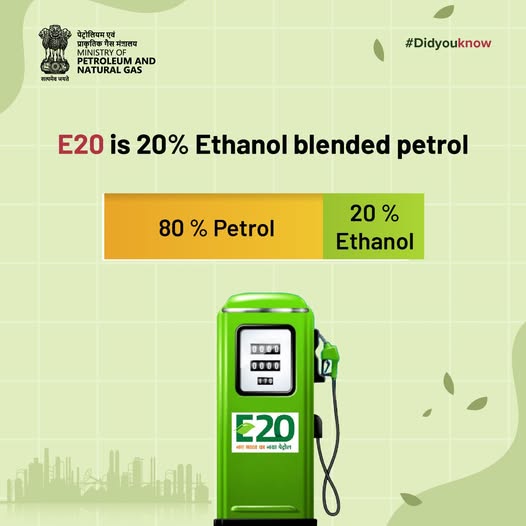
- 02 Sep 2025
In News:
India has been steadily advancing towards ethanol blending in petrol to reduce dependence on fossil fuels, cut carbon emissions, and boost the agricultural economy. Recently, debates have intensified after the nationwide rollout of E20 fuel (20% ethanol + 80% petrol) in July 2025—five years ahead of its initial 2030 target. Concerns were raised about its impact on older vehicles and consumer safety.
What is Ethanol Blending?
- Ethanol (C?H?OH): A renewable, biodegradable, and clean-burning fuel derived from biomass such as sugarcane molasses, rice, maize, barley, and wheat.
- Ethanol Blending: Mixing ethanol with petrol to increase oxygen content, leading to cleaner combustion, reduced greenhouse gas emissions, and lower crude oil imports.
- India’s Ethanol Blended Petrol (EBP) Programme began in 2003.
- Progress:
- 10% blending target achieved in 2021-22
- 12.06% in 2022-23
- 14.06% in 2023-24
- 20% blending achieved in July 2025, ahead of the 2030 deadline.
E20 Fuel and Automobile Industry Response
- E20 fuel is now being offered at petrol pumps, replacing earlier E5/E10 options.
- The Society of Indian Automobile Manufacturers (SIAM) confirmed that warranties will remain valid for older cars even if they were not originally designed for E20.
- Automakers are issuing dealer advisories on E20 usage in pre-2023 vehicles, when flex-fuel-compatible models began rolling out.
- The government has also announced guidelines for 27% ethanol blending, further deepening the transition.
Concerns and Challenges
- Fuel Efficiency & Engine Issues: Some vehicle owners have reported lower mileage and performance issues with E20.
- Warranty and Consumer Trust: Initial confusion over automaker responsibility raised fears of invalidated warranties.
- Agricultural Dependence: Heavy reliance on sugarcane and food crops raises concerns about the food vs. fuel debate and water stress.
- Supply Chain & Technology: Ethanol storage, transport, and blending infrastructure must scale up nationwide.
- Legal Challenge: A public interest litigation (PIL) on the impact of E20 is pending before the Supreme Court.
Benefits of Ethanol Blending
- Environmental: Cuts CO? emissions, improves urban air quality, and reduces vehicular pollution.
- Economic: Reduces crude oil imports (India imports ~85% of crude requirements), saving forex reserves.
- Agricultural: Provides a stable market for farmers through ethanol demand from crops like sugarcane, maize, and rice.
- Strategic: Contributes to India’s energy security and climate commitments under Paris Agreement & Net Zero 2070 goals.
Government Push and Future Roadmap
- Union Minister Nitin Gadkari has reiterated that higher ethanol blending is central to India’s green mobility transition.
- India is also exploring flex-fuel vehicles and second-generation (2G) ethanol derived from agricultural residues to address food security concerns.
- Targets:
- 27% blending roadmap under preparation.
- Expansion of ethanol production capacity through distilleries and 2G ethanol plants.
- Incentives for biofuel research, hybrid engines, and flex-fuel adoption.
Samudrayaan Project
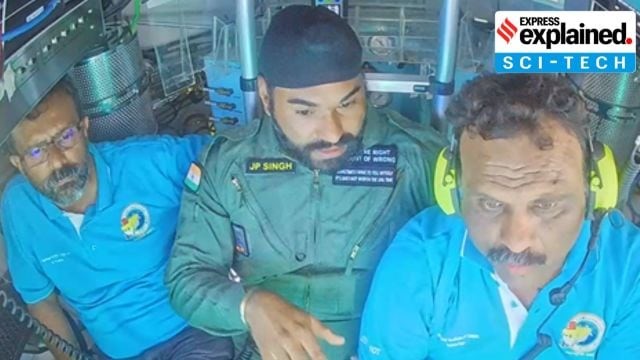
- 02 Sep 2025
In News:
India is set to join a select group of nations—US, Russia, China, Japan, and France—with the capability for manned deep-sea exploration through its ambitious Samudrayaan Project.
As part of preparations, two Indian aquanauts recently dived into the Atlantic Ocean aboard France’s submersible Nautile, gaining critical experiential insights.
The mission is a core component of the Deep Ocean Mission (2021–26), which supports India’s Blue Economy vision and aligns with the UN Decade of Ocean Science for Sustainable Development (2021–30).
Samudrayaan Project
- Objective: To send three humans in a manned submersible to a depth of 6,000 metres by 2027.
- Coordinating agency:National Institute of Ocean Technology (NIOT) under the Ministry of Earth Sciences (MoES), with technical support from ISRO’s Vikram Sarabhai Space Centre (VSSC).
- Budget: Part of the ?4,077 crore Deep Ocean Mission, approved by the Union Cabinet in 2021.
Key Aims
- Develop deep-sea mining technologies, robotics, and underwater vehicles.
- Conduct surveys for mineral deposits, particularly polymetallic nodules (rich in nickel, cobalt, manganese, rare earths).
- Explore deep-sea biodiversity and promote bio-prospecting.
- Establish an ocean climate change advisory service.
- Develop technologies for energy and freshwater from oceans.
- Build an advanced marine station for ocean biology and engineering.
Matsya-6000: The Crewed Submersible
- India’s first self-propelled manned submersible, designed like a fish.
- Built with a titanium alloy sphere (2.1 m diameter, 80 mm thickness) to withstand 600 times atmospheric pressure at 6,000 m depth and temperatures as low as -3°C.
- Capacity: 3 aquanauts for 12-hour missions, extendable to 96 hours in emergencies.
- Equipped with:
- Life-support systems (oxygen supply, CO? scrubbers, re-breather systems).
- Acoustic communication systems (since radio waves cannot penetrate deep water).
- Drop-weight escape mechanism for emergency ascent.
- Li-Po batteries and bio-vests for crew health monitoring.
Challenges in Deep-Sea Exploration
- Extreme Pressure: Precise fabrication (via electron beam welding) is required, as even a 0.2 mm deviation in sphere thickness can lead to collapse.
- Material Constraints: Titanium alloy of required grade is rare, and countries are reluctant to share reserves.
- Life Support: Ensuring safe oxygen levels, CO? absorption, and emergency backup systems.
- Communication: Acoustic telephones must overcome issues of temperature, salinity, and water depth.
- Human Endurance: Aquanauts face restricted mobility, limited nutrition, and confined conditions during 9–12 hour dives.
Deep Ocean Mission (DOM)
- Launched in 2021 for 5 years.
- Components:
- Deep Sea Mining & Manned Submersible: Samudrayaan and mineral exploration.
- Ocean Climate Change Advisory Services: Seasonal to decadal forecasting.
- Deep-Sea Biodiversity Studies: Exploration of flora, fauna, microbes.
- Deep Ocean Surveys: Mapping multi-metal sulphide and PMN sites.
- Energy & Freshwater: Research into Ocean Thermal Energy Conversion (OTEC) and desalination.
- Advanced Marine Station: Capacity building, R&D, and technology incubation.
Recent Progress
- Ocean Mineral Explorer (OMe 6000): Autonomous underwater vehicle deployed in 2022, surveying 14 sq. km in the Central Indian Ocean Basin at depths of 5,271 m, assessing PMN deposits and biodiversity.
- Research vessel SagarNidhi used for exploration and surveys.
Strategic and Economic Significance
- Blue Economy Growth: Supports industries like shipping, fishing, tourism, and biotechnology.
- Resource Security: Access to polymetallic nodules critical for electronics, renewable energy, and defense sectors.
- Geostrategic Edge: Enhances India’s role in the International Seabed Authority (ISA) regime.
- Scientific Advancement: Builds indigenous expertise in ocean engineering and extreme-environment technologies.
- Climate Preparedness: Generates critical data on ocean-climate interactions.
International Centre for Integrated Mountain Development
- 02 Sep 2025
In News:
The Hindu Kush Himalaya (HKH), spanning about 3,500 km across eight countries—Afghanistan, Bangladesh, Bhutan, China, India, Myanmar, Nepal, and Pakistan—is a global ecological and hydrological powerhouse.
Often termed the “Third Pole”, it holds the largest area of permanent ice cover outside the Arctic and Antarctic, feeding 10 major Asian river systems including the Indus, Ganga, and Brahmaputra. Despite its significance, a new report by the International Centre for Integrated Mountain Development (ICIMOD) warns that the region is tapping only 6.1% of its vast renewable energy potential, exposing vulnerabilities in the face of climate change.
About ICIMOD
- Established in 1983, headquartered in Kathmandu, Nepal.
- Intergovernmental body representing eight member countries of the HKH.
- Mission: Build and share knowledge to drive regional policy, investments, and climate-resilient development.
- Functions:
- Knowledge generation and sharing.
- Bridging science, policy, and practice.
- Providing a regional platform for sustainable mountain development.
Renewable Energy Potential in HKH
- Total hydropower potential: 882 GW.
- Of this, 635 GW lies in the trans-boundary rivers of HKH.
- Only 49% of hydropower potential is currently harnessed.
- Non-hydro potential: Nearly 3 Terawatts (solar & wind).
- Combined renewable energy potential in the region: >3.5 Terawatts.
- Current share in Total Primary Energy Supply (TPES): just 6.1%.
Country-wise Renewable Scenario
- Bhutan & Nepal: Generate 100% of electricity from renewables.
- India: Renewables contribute 23% of electricity generation.
- Others: Reliance on fossil fuels remains very high (Bangladesh 98%, Pakistan 76%, China 67%, Myanmar 51%).
- Traditional biomass use: Alarmingly high in rural areas—two-thirds of Nepal’s TPES, half of Myanmar’s, one-fourth of Bhutan’s and Pakistan’s—leading to severe air quality and health issues.
Climate Change & Energy Risks
The report highlights that climate variability is destabilising energy systems:
- Increased water variability and changing hydrological regimes reduce hydropower reliability.
- Glacial Lake Outburst Floods (GLOFs) and extreme weather events threaten nearly two-thirds of existing and planned hydropower projects.
- Infrastructure damage due to landslides, floods, and mega-floods is rising.
Policy Recommendations
- Integrate disaster risk reduction into hydropower and renewable energy projects.
- Explore “dams equivalents” like:
- Climate-resilient irrigation systems.
- On-farm water-efficient practices.
- Urban water storage solutions.
- Scaling up solar and wind power.
- Promote regional cooperation through platforms like SAARC Energy Centre and BIMSTEC Energy Ministers’ Conference.
- Attract international finance and private investment to overcome capital constraints.
- Encourage south-south collaboration, technology exchange, and joint research.
Significance for India
- India, a major HKH country, has both high renewable potential and high fossil fuel dependence.
- Regional clean energy cooperation can:
- Enhance energy security.
- Reduce import dependence.
- Create green jobs.
- Help achieve India’s Nationally Determined Contributions (NDCs) under the Paris Agreement.
MY Bharat Aapda Mitras
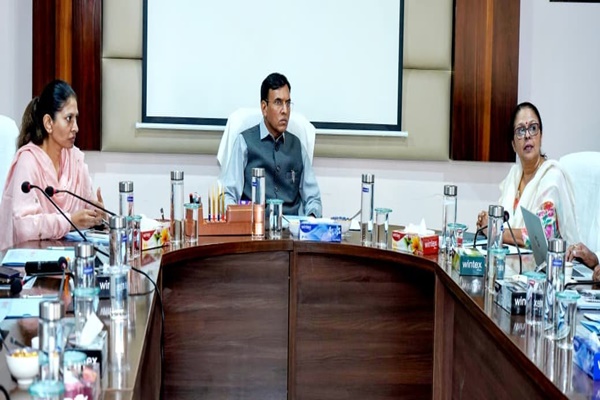
- 02 Sep 2025
In News:
- In the wake of devastating floods in Punjab and Himachal Pradesh, the Union Minister of Sports and Youth Affairs, Dr. Mansukh Mandaviya, announced the deployment of over a thousand trained MY Bharat Aapda Mitras to aid ongoing rescue and relief efforts.
- The initiative underscores the government’s emphasis on community-based disaster response, leveraging trained youth volunteers to strengthen resilience at the grassroots level.
MY Bharat: An Overview
- MY Bharat is an autonomous body established by the Department of Youth Affairs, Ministry of Youth Affairs and Sports.
- It operates as a phygital (physical + digital) platform, connecting and mobilising India’s youth (aged 15–29 years) through volunteering, mentorship, experiential learning, and industry networks.
- The platform seeks to provide equitable access to opportunities, enabling youth to contribute to Viksit Bharat (Developed India).
Aapda Mitra Programme under MY Bharat
- The Aapda Mitra programme, implemented by the National Disaster Management Authority (NDMA), provides structured, NDMA-certified disaster response training to youth volunteers.
- Training modules cover:
- Search and rescue operations
- First aid and medical response
- Crowd management
- Emergency coordination
- These volunteers act as first responders, ensuring the timely supply of food, medicines, and relief material to communities cut off by floods, landslides, or cloudbursts.
Current Mobilisation for Punjab and Himachal Pradesh
- Thousands of Aapda Mitras are being deployed across the flood-hit districts of Punjab and Himachal Pradesh.
- Volunteers will work in coordination with District Magistrates, district administrations, and local authorities to ensure swift rescue and relief.
- Their role will be crucial in reaching remote villages, where connectivity has been disrupted due to floods and landslides.
Significance
- Strengthens community-led disaster resilience.
- Bridges the gap between formal institutions (NDMA, administration) and citizen response efforts.
- Provides a youth-centric model of disaster preparedness, integrating skill development with national service.
- Demonstrates the whole-of-society approach to disaster management by combining government resources, institutional training, and grassroots volunteerism.
Mission Mausam
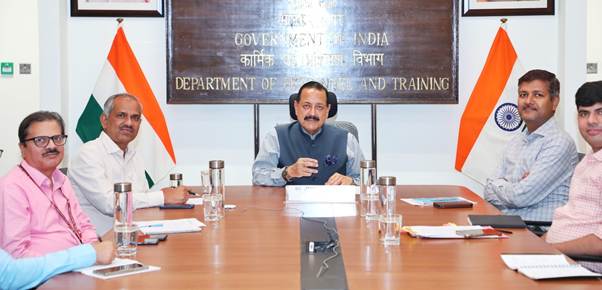
- 02 Sep 2025
In News:
The increasing frequency of extreme weather events—cloudbursts, flash floods, and landslides—has underlined the urgent need for robust forecasting and disaster management mechanisms in India’s Himalayan region.
In this context, the Indian Meteorological Department (IMD), under the Ministry of Earth Sciences (MoES), is set to install four additional radars in Jammu & Kashmir (J&K) as part of Mission Mausam (2024). This development coincides with intensified relief and rehabilitation efforts following unprecedented rainfall and floods in August–September 2025.
Mission Mausam: An Overview
- Launched: 2024 by the Ministry of Earth Sciences.
- Implementing Agencies: IMD, National Centre for Medium-Range Weather Forecasting (NCMRWF), and Indian Institute of Tropical Meteorology (IITM).
- Objectives:
- Enhance India’s forecasting capability across short, medium, extended, and seasonal scales.
- Develop high-resolution models for improved accuracy in monsoon prediction.
- Strengthen observational networks with radars, satellites, automated weather stations.
- Provide sector-specific advisories for agriculture, water resources, health, energy, and disaster management.
- Build capacity through national and international collaborations.
Significance: It represents a transformative milestone in India’s climate resilience strategy, supporting sustainable development, while safeguarding lives, livelihoods, and infrastructure.
Relief and Rehabilitation Measures in J&K (2025)
Following the cloudbursts and floods, the Centre and UT administration launched coordinated relief measures:
- Immediate Relief: Supply of rations, medicines, water filters, and medical kits. Additional consignments dispatched from MP funds to supplement government aid.
- Community Role: Civil society and local bikers acted as first responders, showcasing a whole-of-society approach.
Broader Relevance for Disaster Management
- Policy Linkages: Aligned with the Disaster Management Act, 2005 and the Sendai Framework (2015–2030), emphasizing early warning systems and community resilience.
- Socio-Economic Impact: Strengthening forecasting reduces agricultural losses, protects infrastructure, and prevents human casualties.
- Strategic Significance: Enhances preparedness in the fragile Himalayan ecosystem, prone to climate-induced disasters.
India Develops Rare Reference Material for Enhanced Anti-Doping Testing

- 01 Sep 2025
In News:
- In a landmark achievement, India has successfully developed a rare and high-purity Reference Material (RM) – Methandienone Long-Term Metabolite (LTM) for advanced anti-doping testing in sports.
- This development was led by the National Institute of Pharmaceutical Education and Research (NIPER), Guwahati in collaboration with the National Dope Testing Laboratory (NDTL), New Delhi, under the Department of Pharmaceuticals.
What are Reference Materials (RMs)?
- Highly purified, scientifically characterized forms of drug substances or their metabolites.
- Essential for accurate analytical testing and doping control.
- Crucial for detecting over 450 prohibited substances listed by the World Anti-Doping Agency (WADA).
- Globally scarce – only 4–5 manufacturers worldwide produce such materials, making them expensive and difficult to access.
Methandienone Long-Term Metabolite (LTM)
- A specialized RM developed for tracing misuse of anabolic steroid Methandienone.
- LTMs are metabolites that remain detectable in urine long after substance use – enabling identification of athletes even months or years after doping.
- Enhances detection sensitivity and increases the number of positive tests, thus acting as a deterrent.
- Not commercially available globally, making India’s contribution unique.
Significance for India and the World
- Strengthening Anti-Doping Efforts: Supports WADA’s global mission of transparency, fairness, and integrity in sports.
- Protecting Clean Athletes: Shields honest athletes while discouraging performance-enhancing drug misuse.
- Global Contribution: Methandienone LTM can be shared with 30 WADA-accredited laboratories worldwide, positioning India as a global leader in doping science.
- Self-Reliance in Sports Science: Since 2020, NIPER Guwahati has synthesized 12 out of 22 identified RMs for NDTL, reducing dependency on costly imports.
National Dope Testing Laboratory (NDTL) – Key Facts
- Premier analytical testing and research organization under Government of India.
- Only laboratory in India accredited for human sports dope testing.
- Accredited by:
- National Accreditation Board for Testing & Calibration Laboratories (NABL)
- World Anti-Doping Agency (WADA)
- Plays a central role in ensuring India’s compliance with international anti-doping standards.
Strait of Malacca
- 01 Sep 2025
In News:
India and Singapore have recently elevated their Comprehensive Strategic Partnership (CSP) by signing multiple agreements across defence, space, trade, skills, and sustainability.
A key highlight was Singapore’s support for India’s interest in joint patrolling of the Malacca Strait, one of the world’s most critical maritime chokepoints. This development has both bilateral and regional strategic implications.
The Malacca Strait: Geography and Importance
- Location: Between Sumatra (Indonesia) and Peninsular Malaysia–Thailand, linking the Andaman Sea (Indian Ocean) with the South China Sea (Pacific Ocean).
- Significance:
- One of the busiest shipping lanes globally, handling ~60% of India’s seaborne trade and nearly all its LNG imports.
- A vital energy artery for China, making it a strategic vulnerability (“Malacca Dilemma”).
- Historically named after the Malacca Sultanate (1400–1511).
Malacca Straits Patrols (MSP)
- Launched in 2004 by Indonesia, Malaysia, and Singapore; Thailand joined later.
- Aimed at curbing piracy, terrorism, and trafficking.
- Three coordinated layers:
- Sea Patrols: Regular joint naval patrolling.
- Eyes-in-the-Sky: Combined aerial surveillance.
- Intelligence Exchange Group: Real-time information sharing.
- India’s interest in joining the MSP reflects its commitment to freedom of navigation, regional stability, and maritime security.
India–Singapore Bilateral Cooperation (2025 Roadmap)
During PM Narendra Modi’s meeting with Singapore PM Lawrence Wong (2025), a roadmap was adopted identifying eight priority areas:
- Trade and Economy
- Skills Development – MoU to establish a National Centre of Excellence for Advanced Manufacturing Skilling in Chennai.
- Digitalisation& AI
- Sustainability – MoU for a Green and Digital Shipping Corridor and collaboration on green maritime fuel.
- Connectivity– Deepening maritime links.
- Healthcare & Medicine
- People-to-People and Cultural Exchanges
- Defence and Security – including space collaboration.
Key Agreements
- Space Cooperation: MoU between IN-SPACe (India) and Singapore’s Office for Space Technology and Industry for commercial and research linkages.
- Green Shipping Corridor: To promote sustainable maritime trade.
- Skill Development: Centre of Excellence for advanced manufacturing skilling.
Strategic Implications
- For India:
- Securing energy and trade routes through the Strait.
- Expanding its role in regional security architecture.
- Strengthening defence and space cooperation with ASEAN.
- For Singapore:
- Reinforces its position as a hub for maritime and digital connectivity.
- Gains from India’s manufacturing, space, and green energy initiatives.
- Regional Balance:
- Counters China’s strategic dominance in the South China Sea.
- Enhances multilateral security frameworks in the Indo-Pacific.
Vaquita Porpoise
- 01 Sep 2025
In News:
- The vaquita porpoise (Phocoena sinus), the world’s rarest marine mammal, is on the brink of extinction with only about 10 individuals remaining in the northern Gulf of California (Sea of Cortez), Mexico.
- Despite global attention, weak enforcement of wildlife protection laws in Mexico and the persistence of illegal fishing practices have accelerated the species’ decline.
- A recent report by the North American Environmental Commission under the United States-Mexico-Canada Agreement (USMCA) has held Mexico accountable for failing to safeguard the vaquita.
The Vaquita: An Overview
- Discovery: Identified in 1958.
- Classification: Smallest member of the cetacean family (whales, dolphins, porpoises), diverged from dolphins ~15 million years ago.
- Habitat: Restricted to shallow waters (up to 50 m deep) in the Upper Gulf of California.
- Appearance: Distinct dark eye rings, lip patches, and a large dorsal fin aiding heat release.
- Behavior: Solitary or small-group species, shy, avoids boats.
- Status:
- IUCN Red List: Critically Endangered.
- CITES: Appendix I (strict trade regulation).
Causes of Decline
- Gillnet Bycatch:
- The primary threat is entanglement in illegal gillnets set for totoaba fish, whose swim bladder fetches high prices in East Asia.
- Despite Mexico’s ban on gillnets since 2020, on-ground reports reveal continued use.
- Weak Enforcement:
- Only 10 of the 850 promised satellite trackers fitted on fishing vessels.
- Fishermen bypass restrictions by sending illegal catch to other regions.
- Institutional Failures:
- Lack of adequate vessel inspections, monitoring, and promotion of alternative fishing gear.
- Mexico’s enforcement claims contradicted by eyewitness accounts and NGO reports.
International Pressure and USMCA Mechanisms
- The USMCA Environmental Commission report has urged the United States to hold Mexico accountable.
- Under USMCA, the US can:
- Press for stricter compliance through consultations.
- Escalate disputes to a panel stage.
- Impose import penalties if Mexico fails to enforce the ban in vaquita habitats.
Global AI Governance
- 01 Sep 2025
In News:
Artificial Intelligence (AI) is reshaping economies, governance, and societies at an unprecedented pace. While AI offers transformative opportunities in healthcare, education, mobility, and governance, it also poses challenges of bias, misinformation, data privacy, and ethical use. Recognizing the urgency of global cooperation, the United Nations General Assembly (UNGA) has launched two institutional mechanisms to advance inclusive and responsible AI governance.
UNGA’s Two New Initiatives on AI Governance (2025)
- Independent International Scientific Panel on AI
- Serves as a bridge between research and policymaking.
- Provides independent scientific assessments of emerging AI risks and opportunities.
- Annual reports to be presented at the Global Dialogue sessions in 2026 (Geneva) and 2027 (New York).
- Global Dialogue on AI Governance
- An inclusive UN platform for member states and stakeholders.
- Facilitates deliberation on critical AI issues: ethical use, regulation, global standards, and equitable access.
- Complements the Global Digital Compact, adopted as part of the Pact for the Future (2024).
India’s AI Governance Landscape
- Legal Framework:
- No dedicated AI law. AI is currently governed under:
- IT Act, 2000 – cybercrimes, intermediary liability.
- Digital Personal Data Protection Act, 2023 – data privacy.
- IPR laws – regulation of AI-generated works.
- No dedicated AI law. AI is currently governed under:
- Policy Initiatives:
- NITI Aayog’s National Strategy on AI (2018): Focus on healthcare, agriculture, education, mobility, smart cities.
- Principles for Responsible AI (2021): Emphasize safety, transparency, fairness, accountability, and inclusivity.
- Global Engagement:
- Hosted the GPAI Summit (2023).
- Co-chaired the AI Action Summit with France (2025).
- Set to host the AI Impact Summit (2026).
- Actively shaping norms of ethical AI use in the Global South.
PM SVANidhi 2.0
- 01 Sep 2025
In News:
The Prime Minister Street Vendor’s AtmaNirbhar Nidhi (PM SVANidhi) Scheme, launched on 1st June 2020 amidst the COVID-19 crisis, has emerged as a landmark initiative for supporting urban street vendors by providing collateral-free working capital loans, promoting digital inclusion, and enabling social security access.
In August 2025, the Union Cabinet approved the restructuring and extension of the scheme till 31st March 2030, with an enhanced outlay of ?7,332 crore to benefit 1.15 crore beneficiaries, including 50 lakh new entrants.
Key Features of the Restructured Scheme
- Enhanced Loan Tranches
- 1st tranche: ?15,000 (earlier ?10,000)
- 2nd tranche: ?25,000 (earlier ?20,000)
- 3rd tranche: ?50,000 (unchanged)
- UPI-linked RuPay Credit Card
- Available for vendors who have repaid the second loan.
- Ensures instant credit access for business and personal needs.
- Digital Incentives
- Cashback up to ?1,600 on digital transactions.
- Promotes financial literacy and digital adoption.
- Expanded Coverage
- From statutory towns to census towns, peri-urban areas, in a phased manner.
- Capacity Building & Convergence
- Training in entrepreneurship, financial literacy, and digital skills.
- Food safety & hygiene certification for street food vendors in partnership with FSSAI.
‘SVANidhi se Samriddhi’ Component
- Ensures saturation coverage of welfare schemes for vendors’ families.
- Monthly Lok Kalyan Melas to connect beneficiaries with schemes like PM Suraksha Bima Yojana, PM Jeevan Jyoti Bima Yojana, Ayushman Bharat, and PM Jan Dhan Yojana.
Achievements Till Date (as of July 2025)
- 96 lakh loans disbursed worth ?13,797 crore to 68 lakh vendors.
- 47 lakh digitally active beneficiaries with over 557 crore transactions worth ?6.09 lakh crore.
- ?241 crore cashback earned by vendors.
- 46 lakh beneficiaries profiled across 3,564 ULBs, leading to 1.38 crore scheme sanctions.
- Recognitions:
- PM’s Award for Excellence in Public Administration (2023) for Innovation.
- Silver Award (2022) for Government Process Re-engineering in Digital Transformation.
